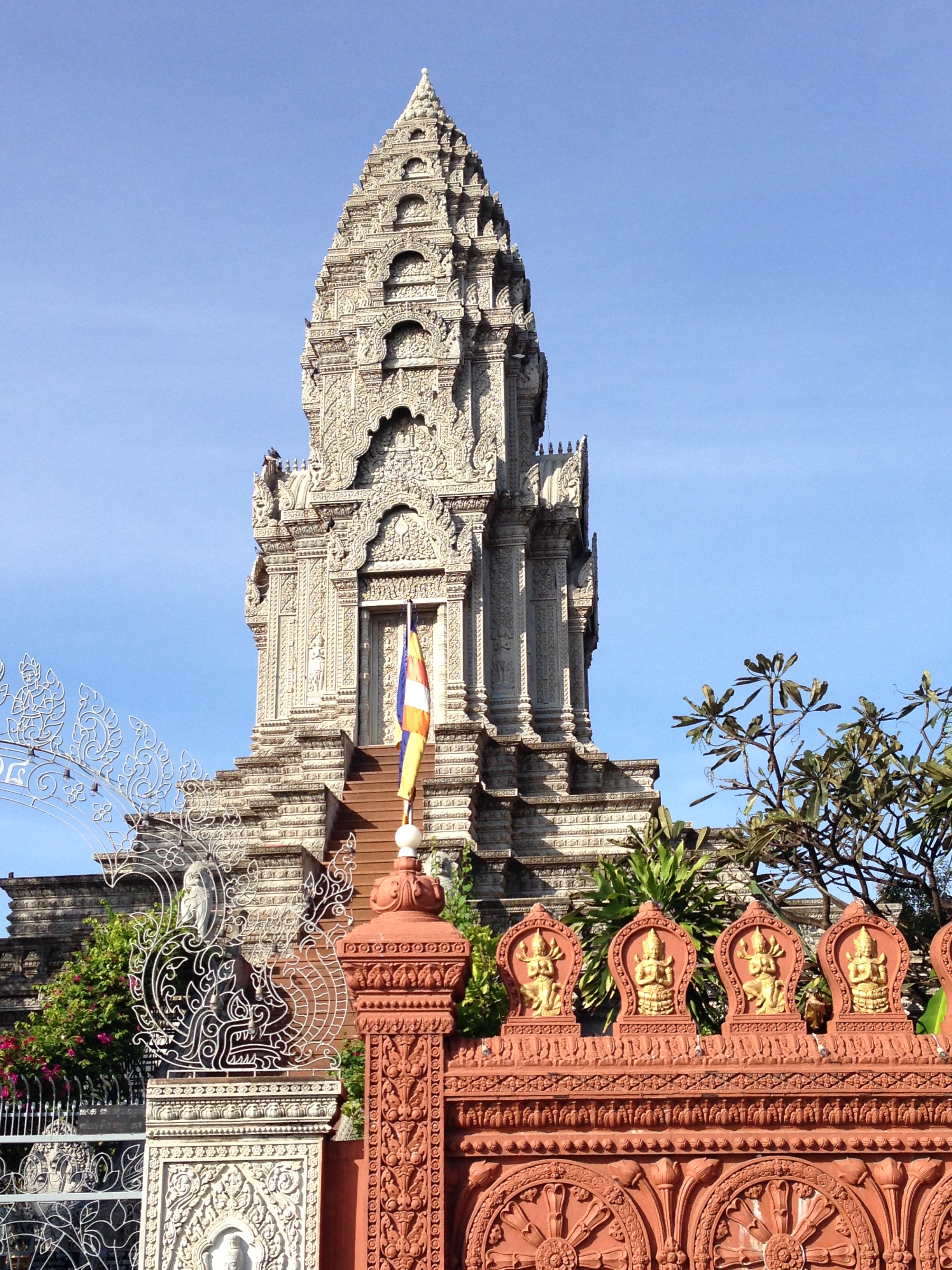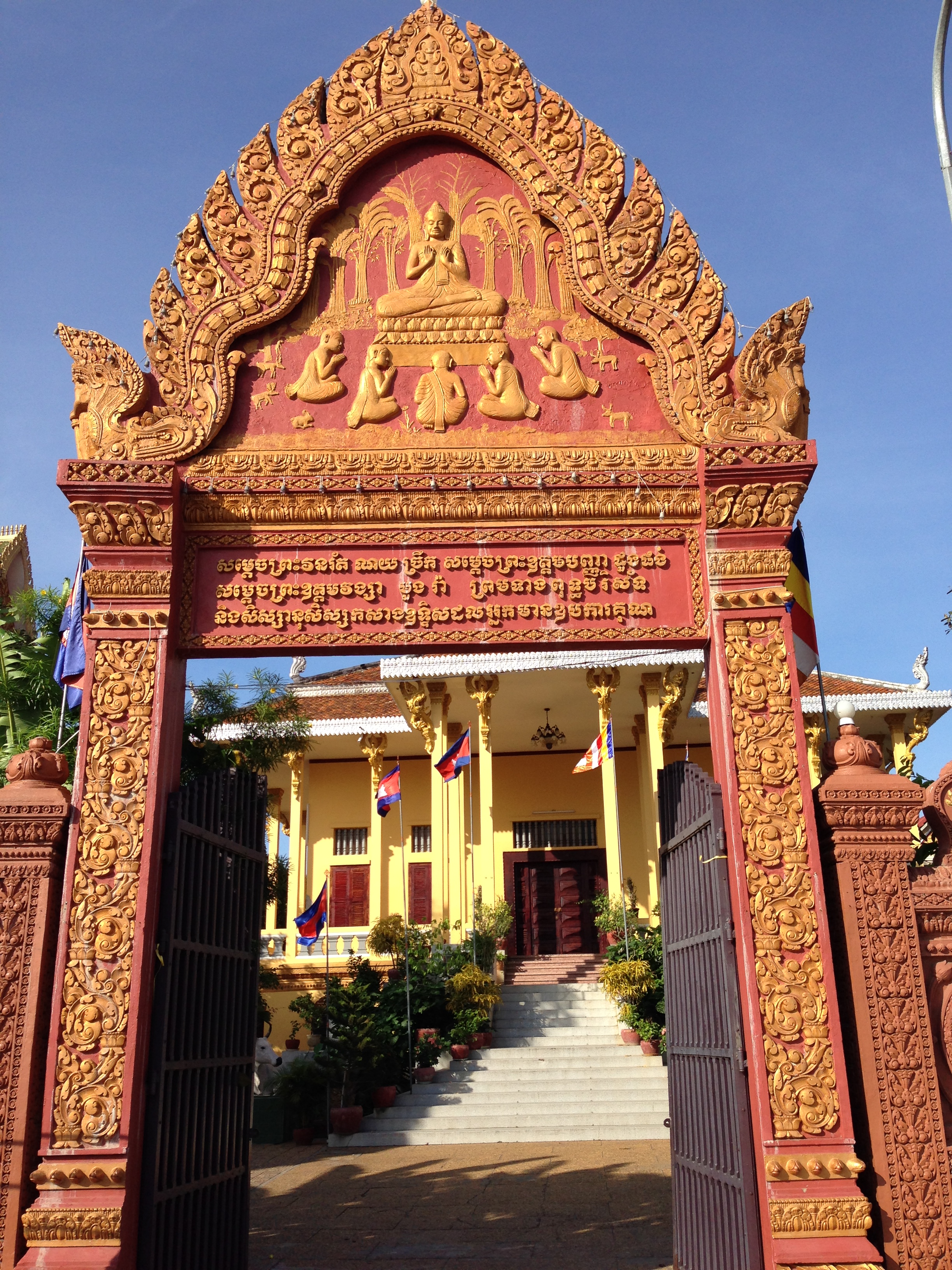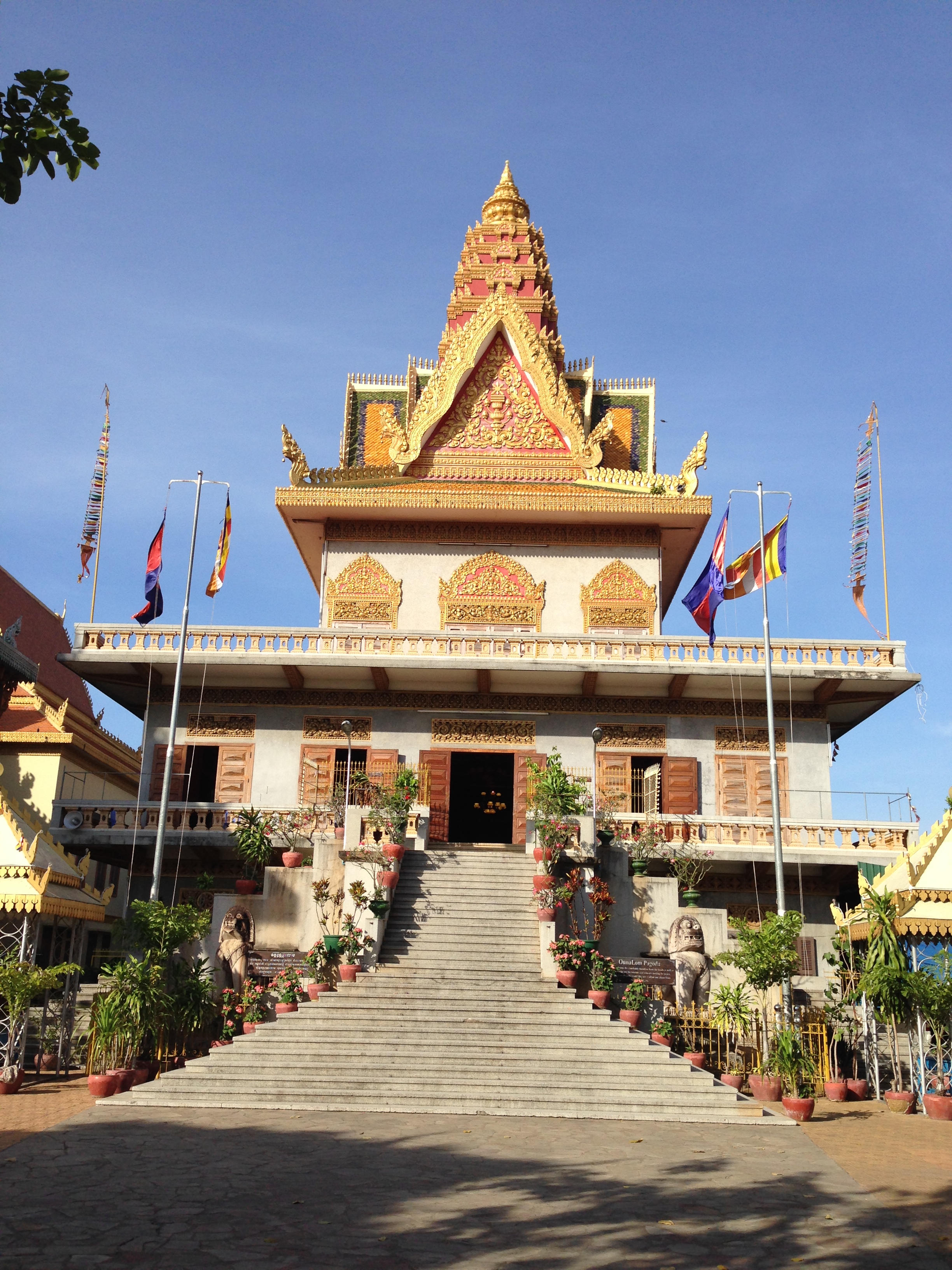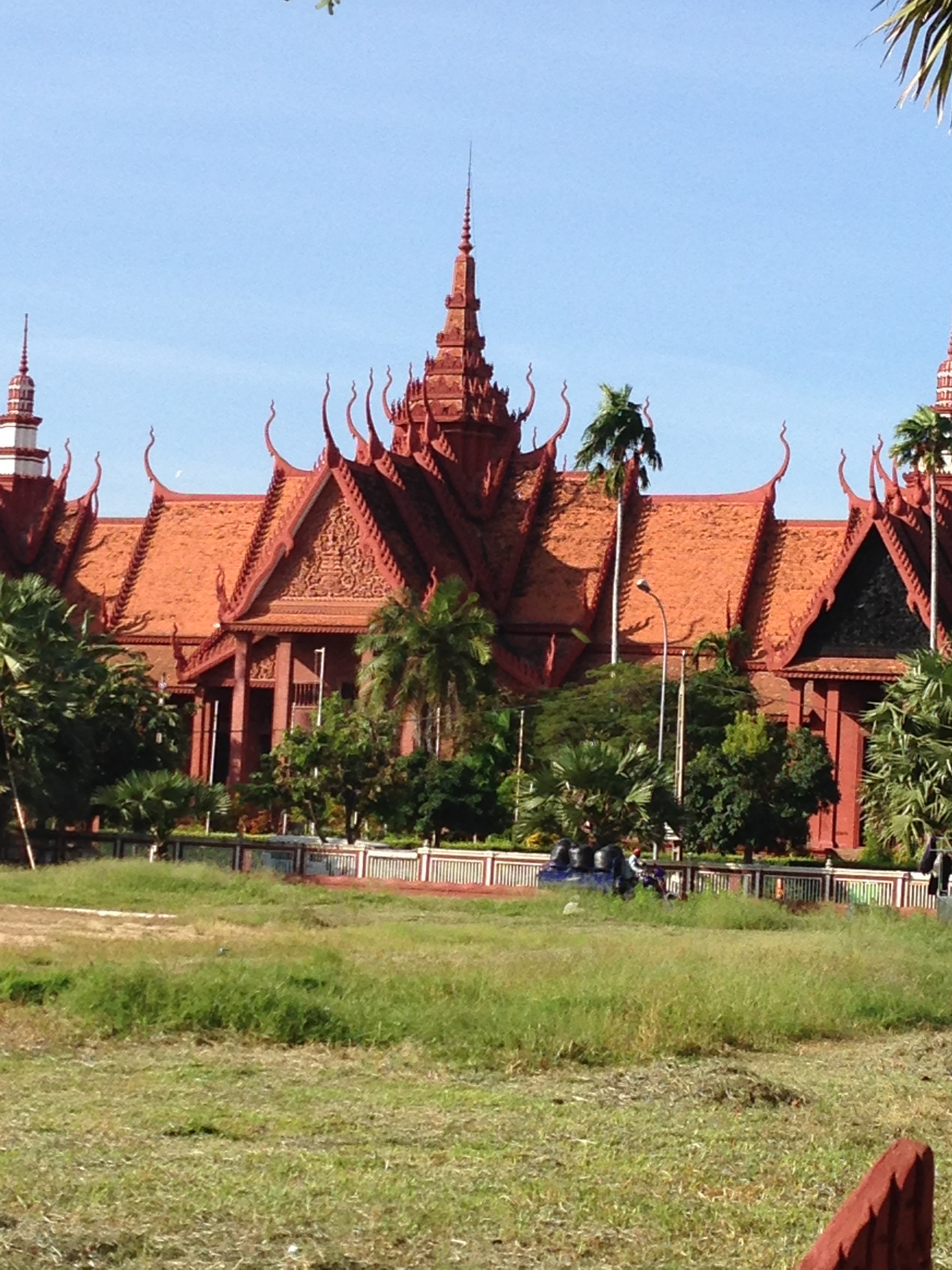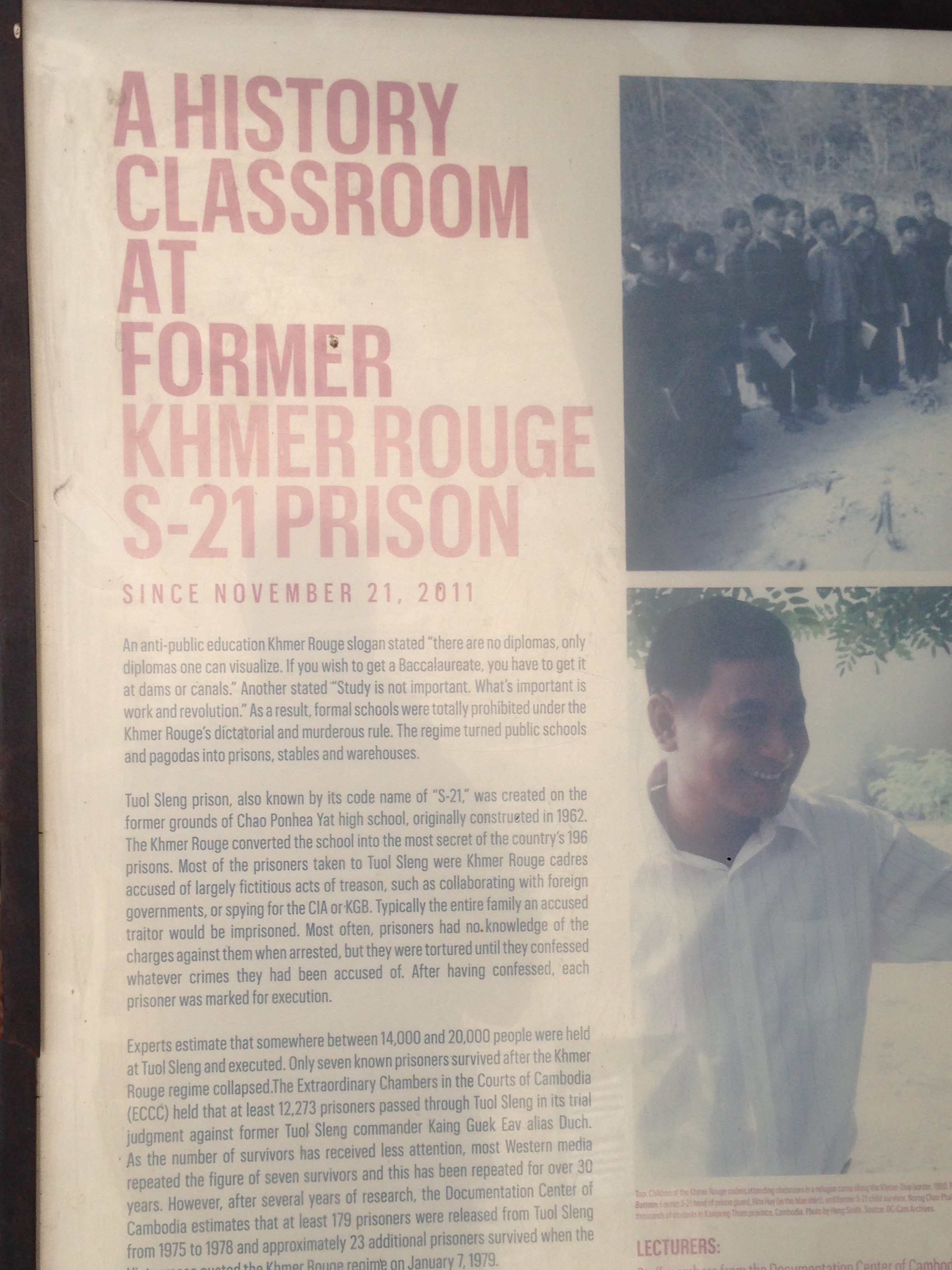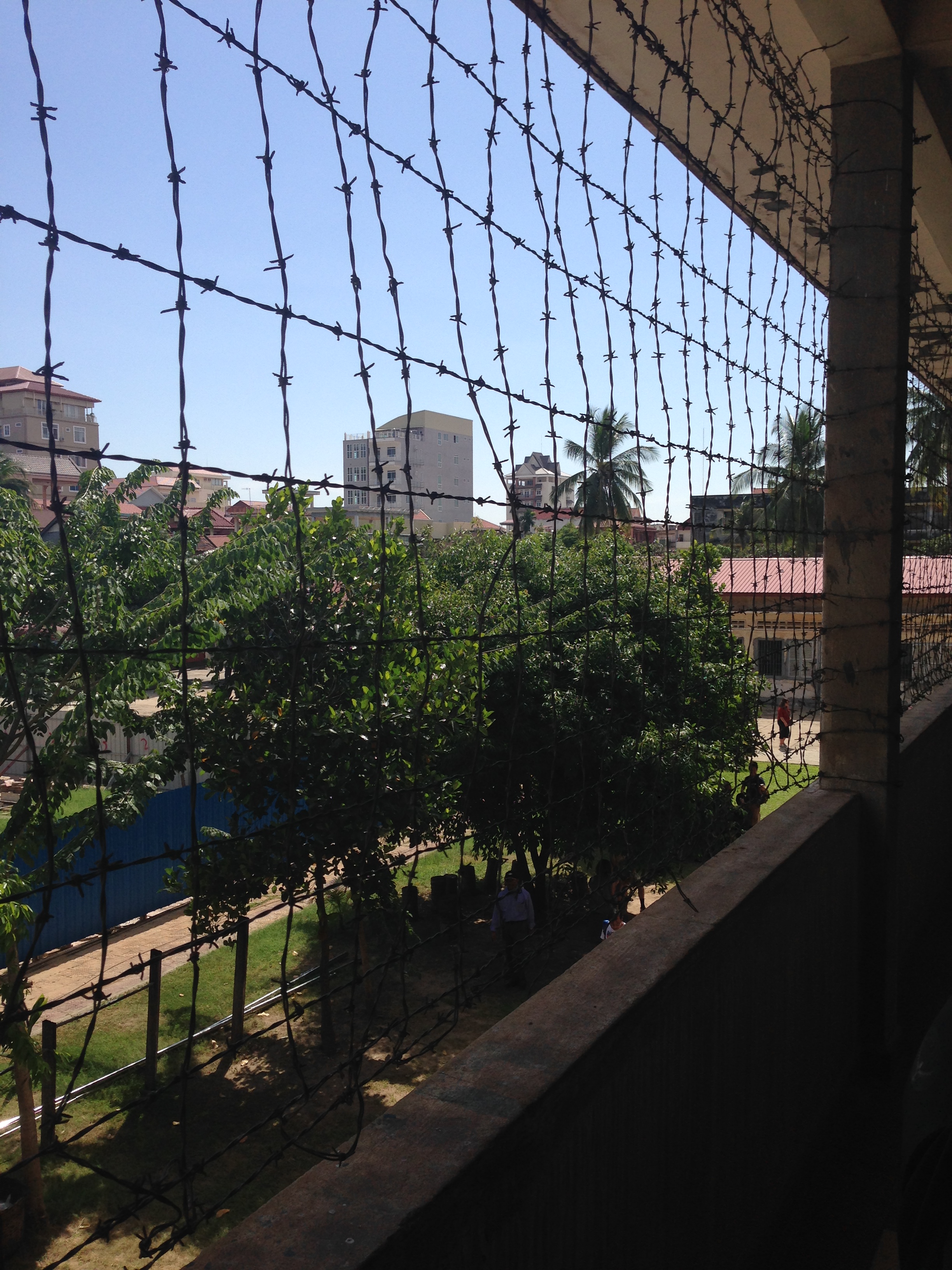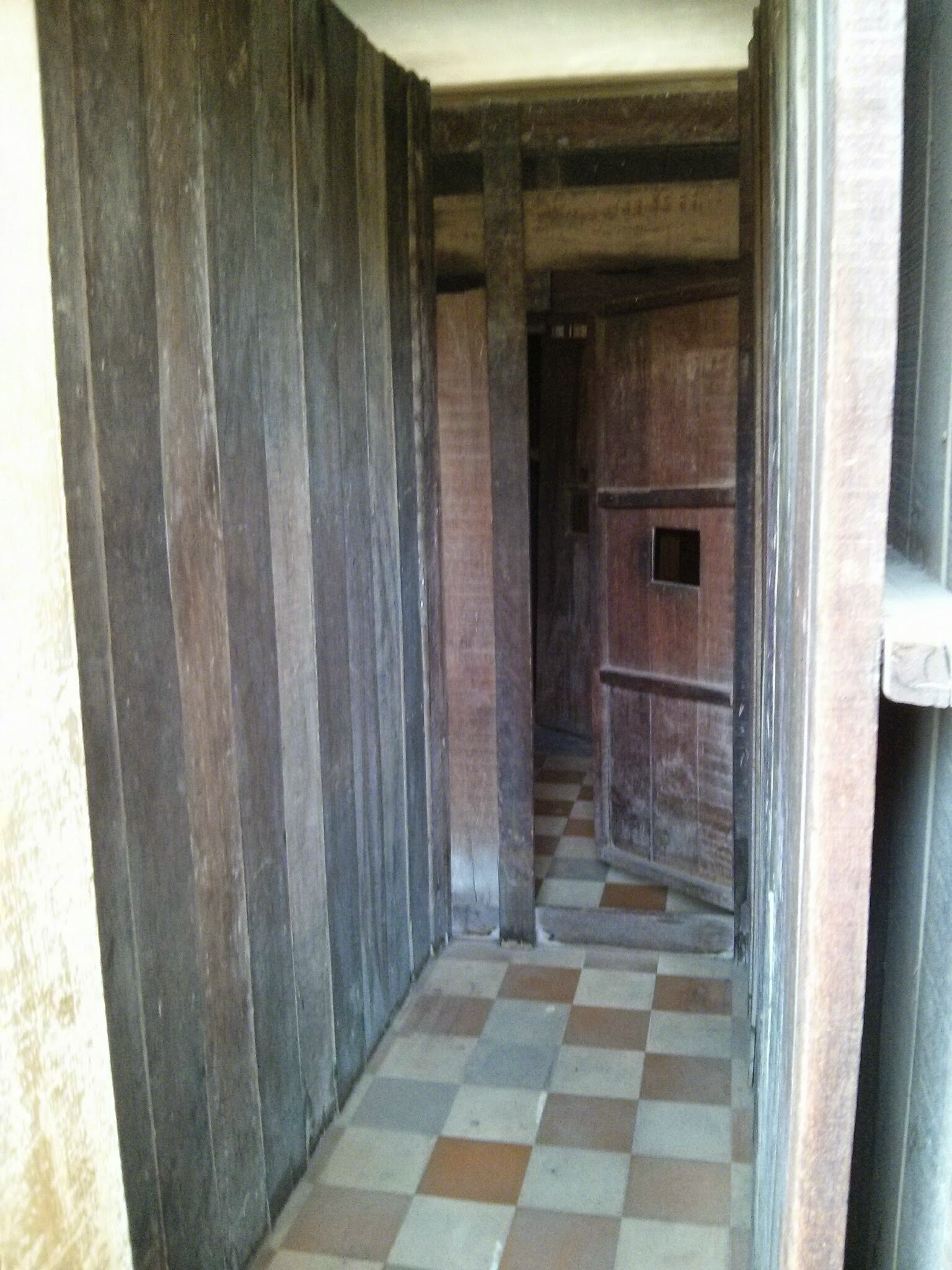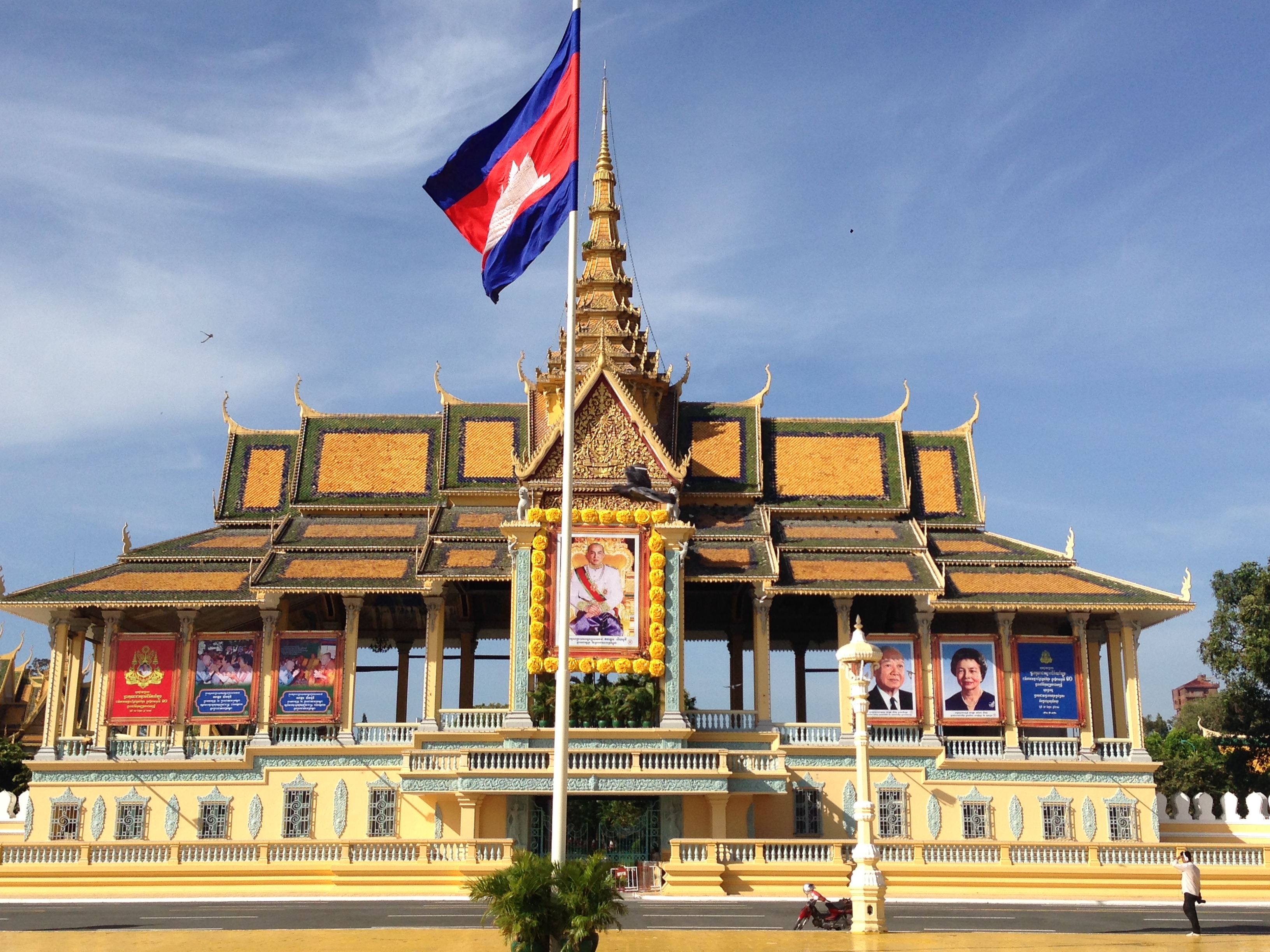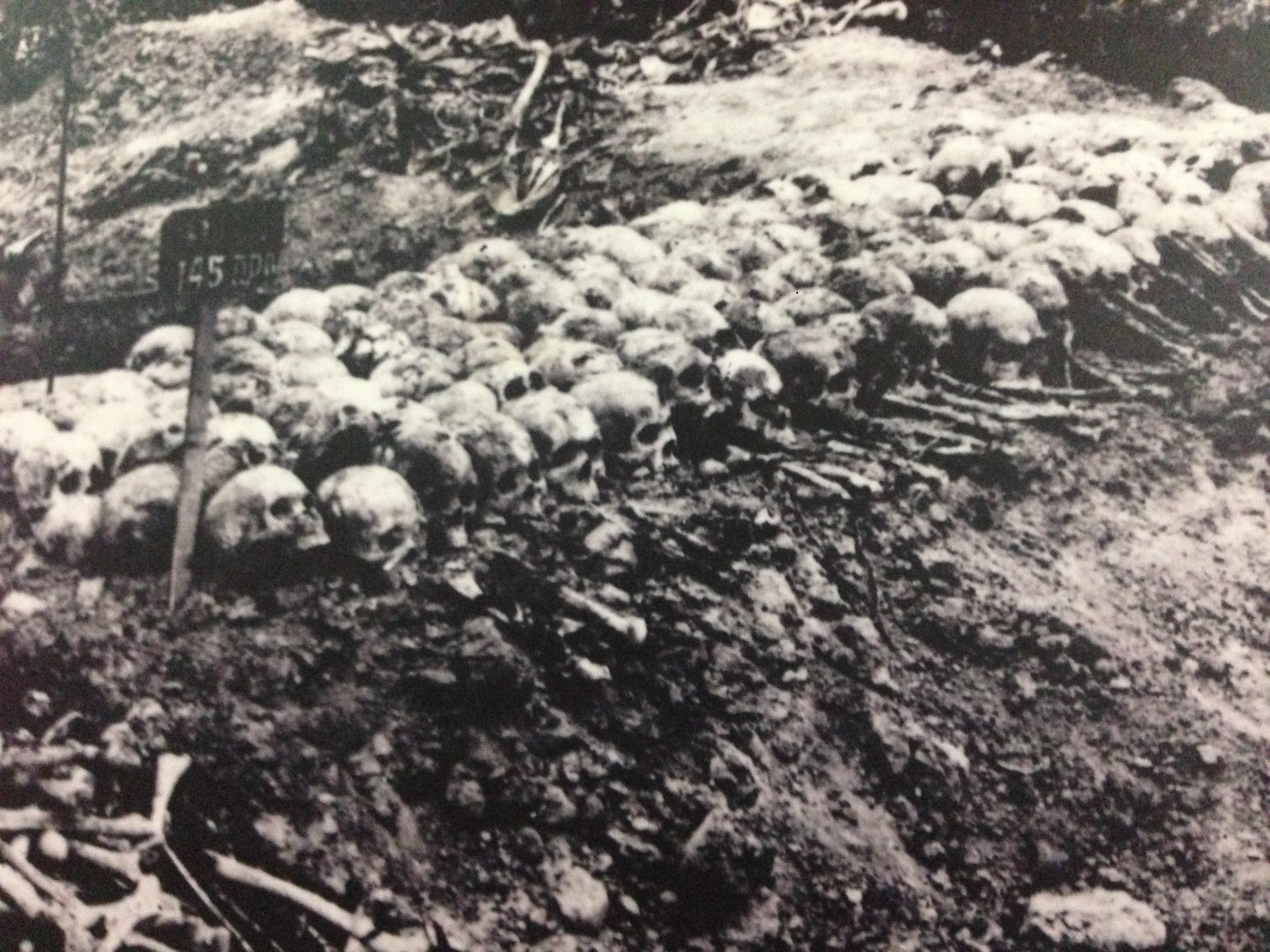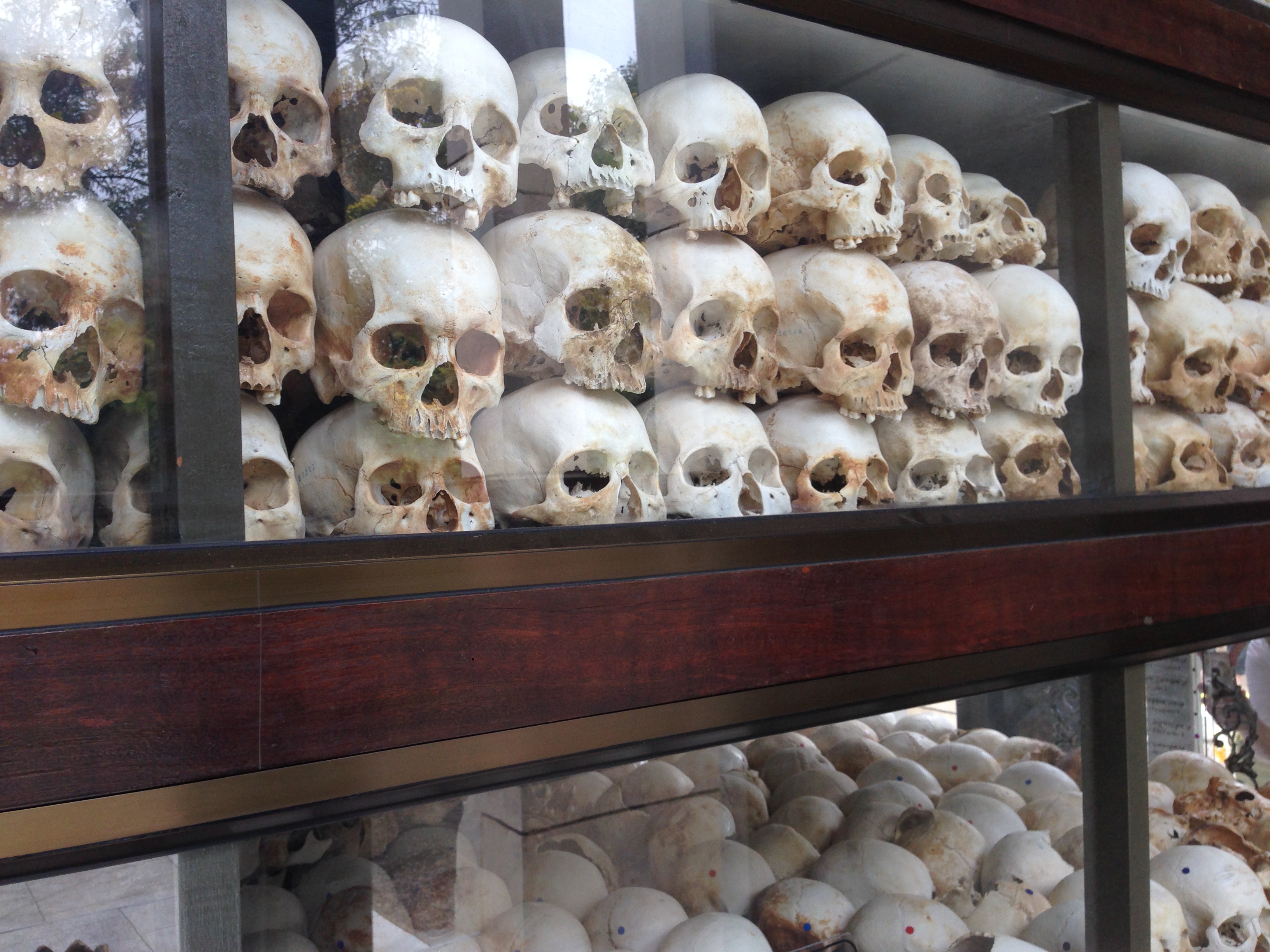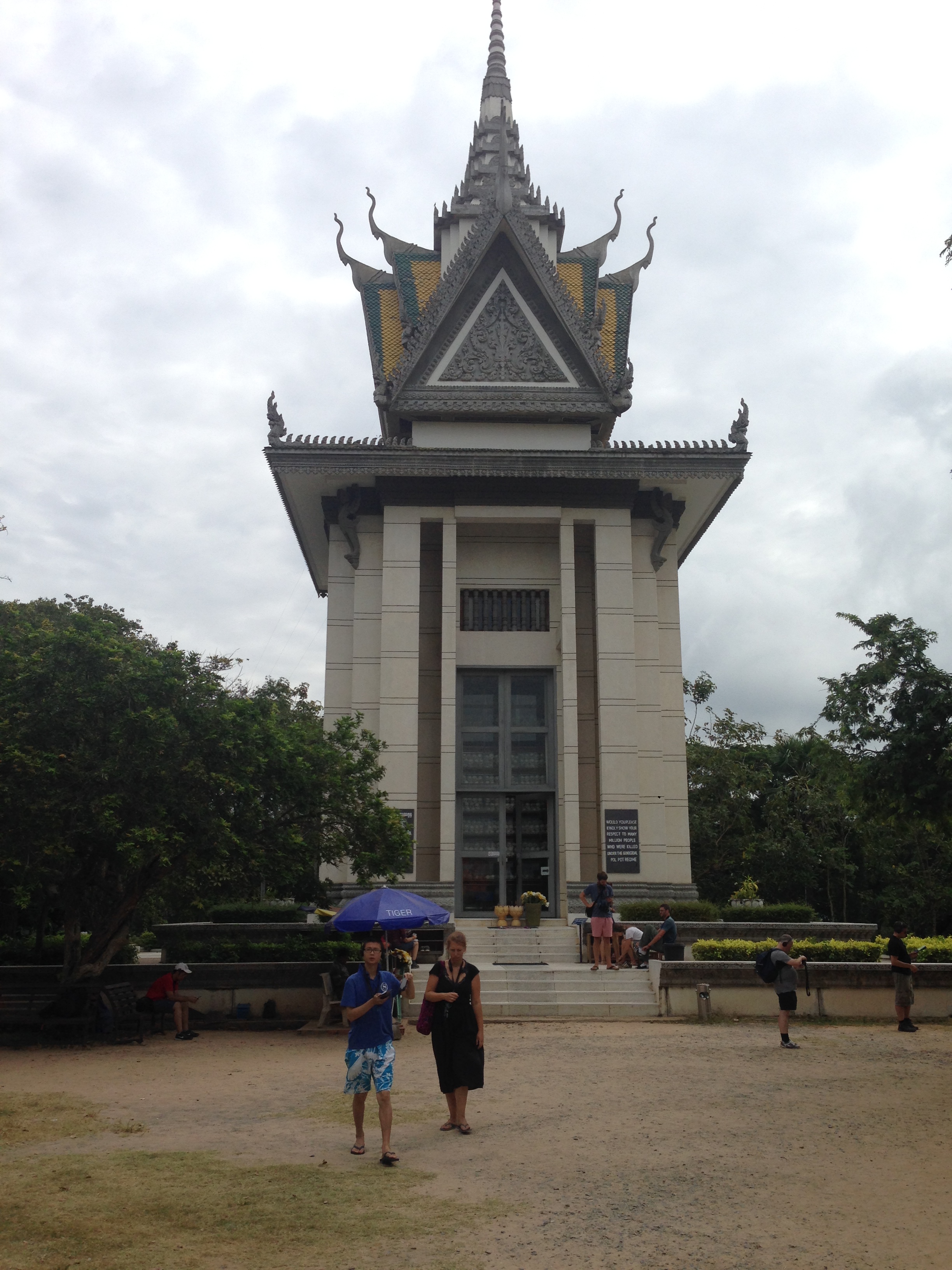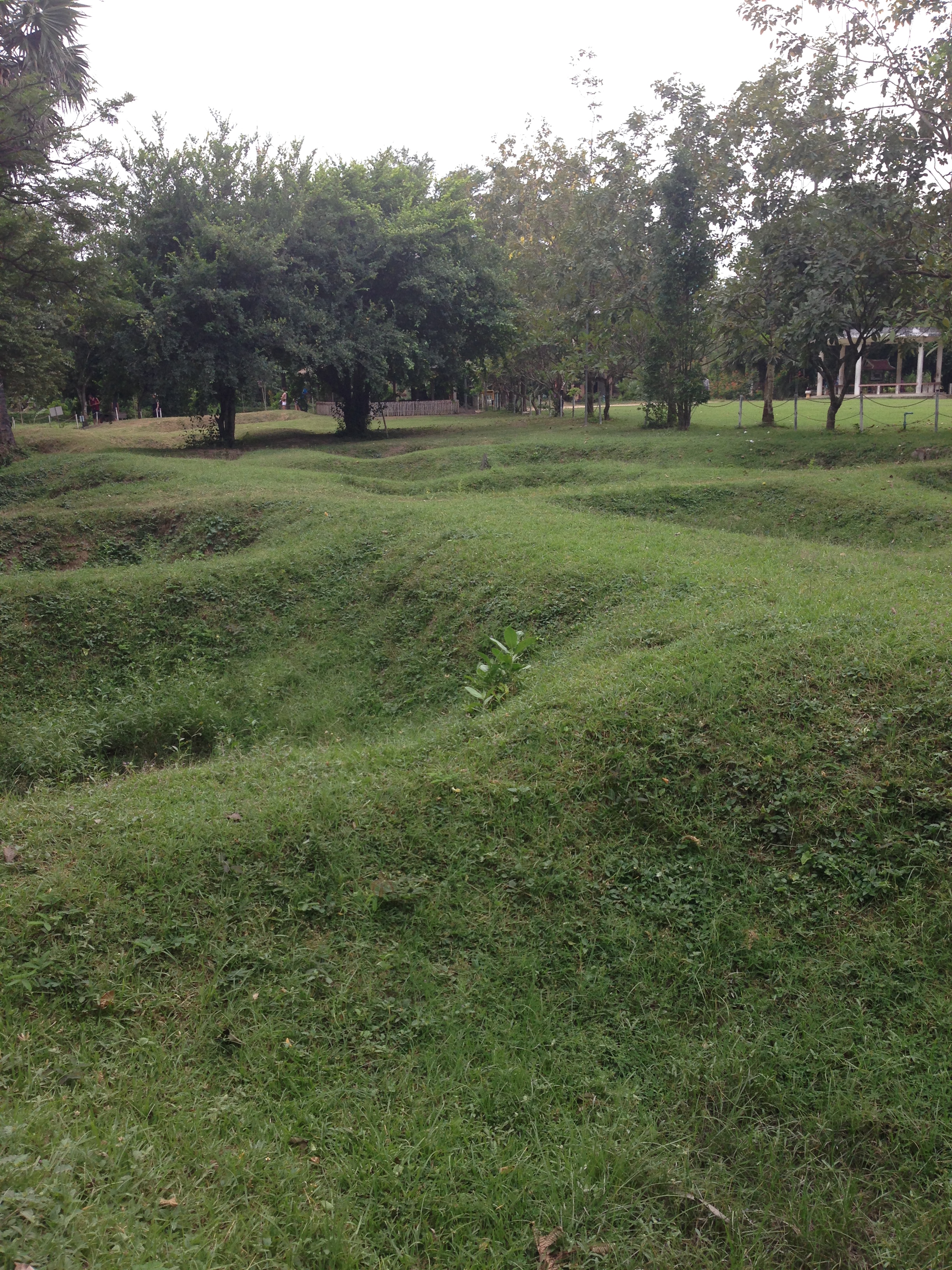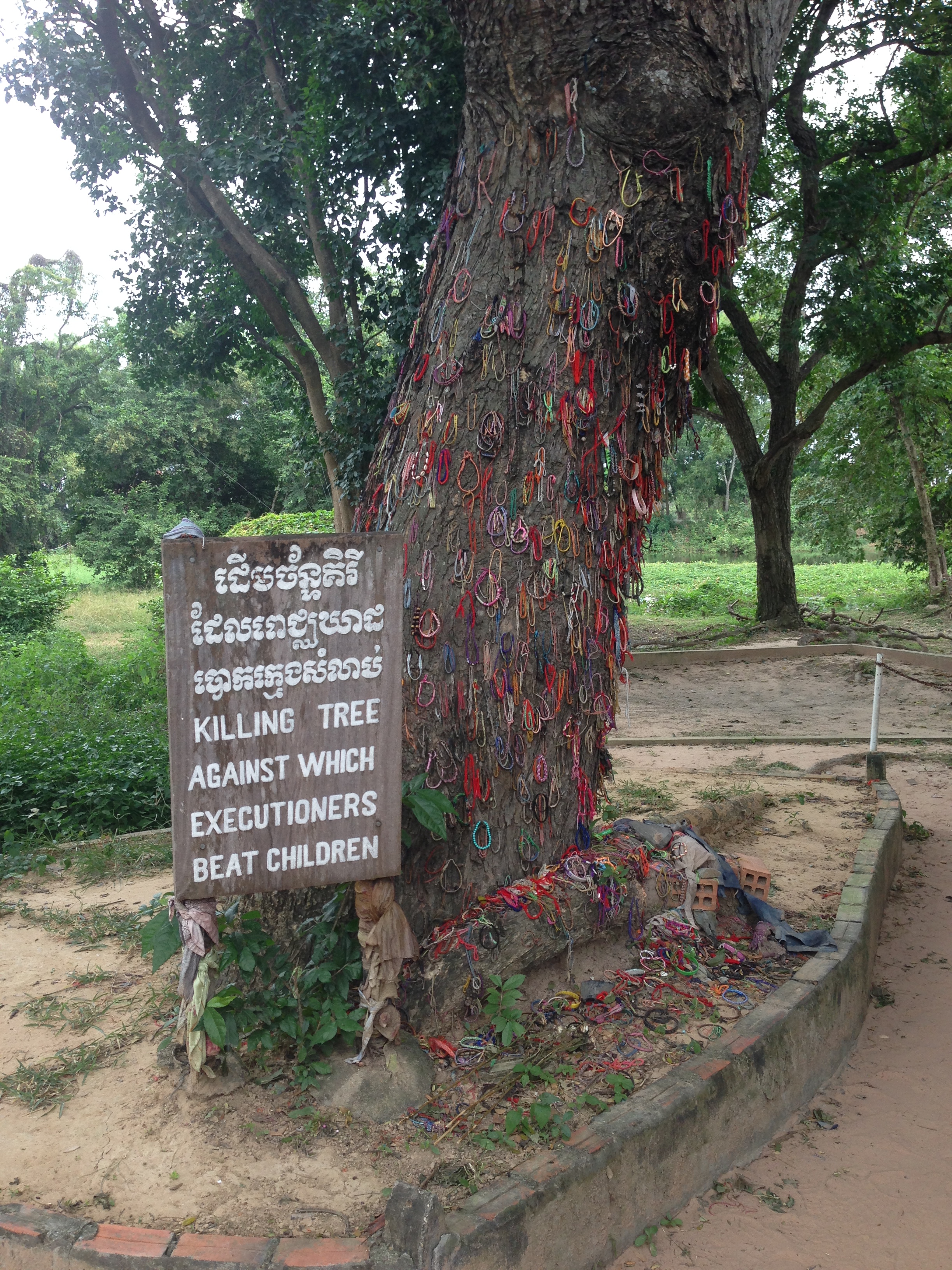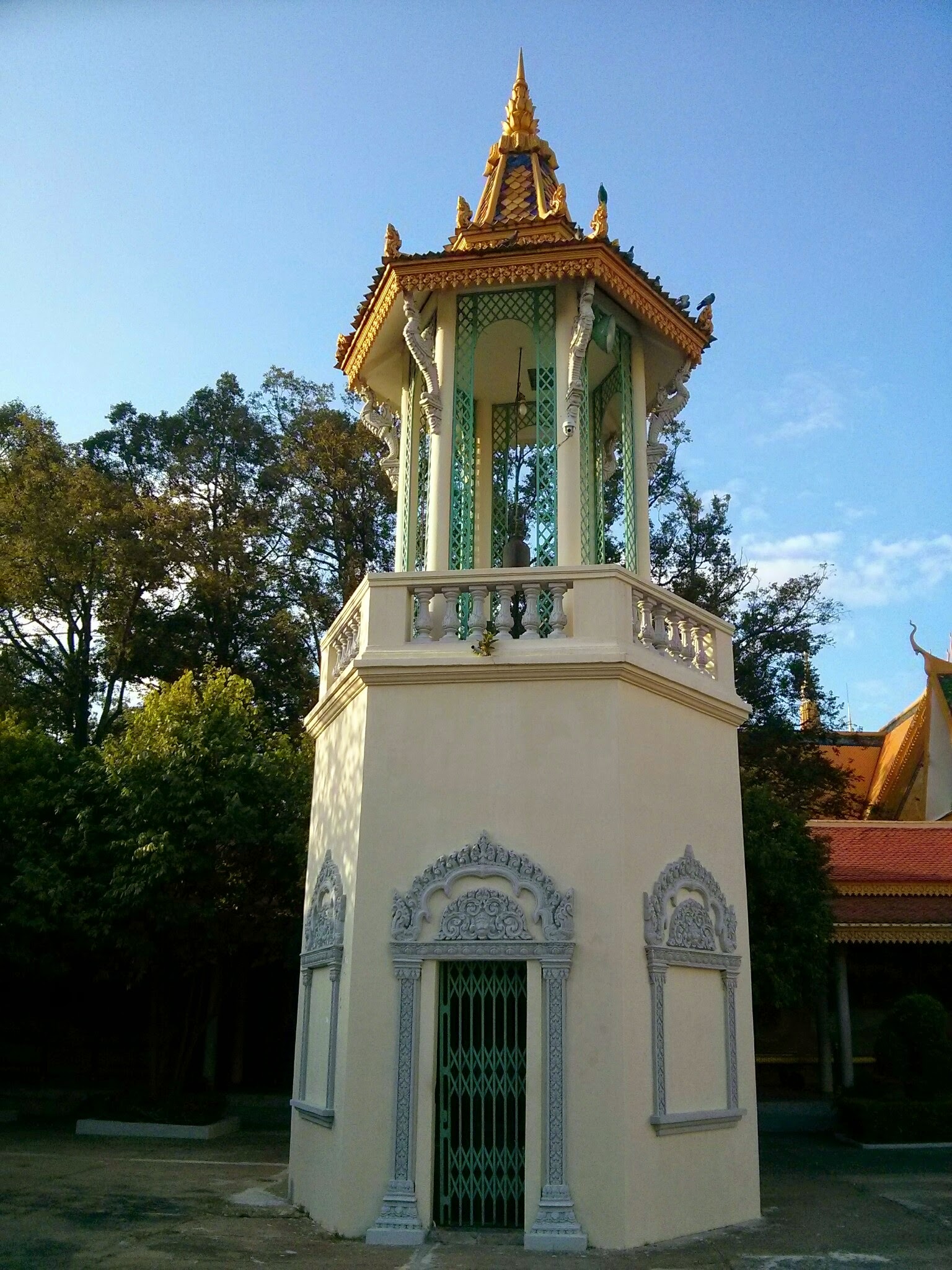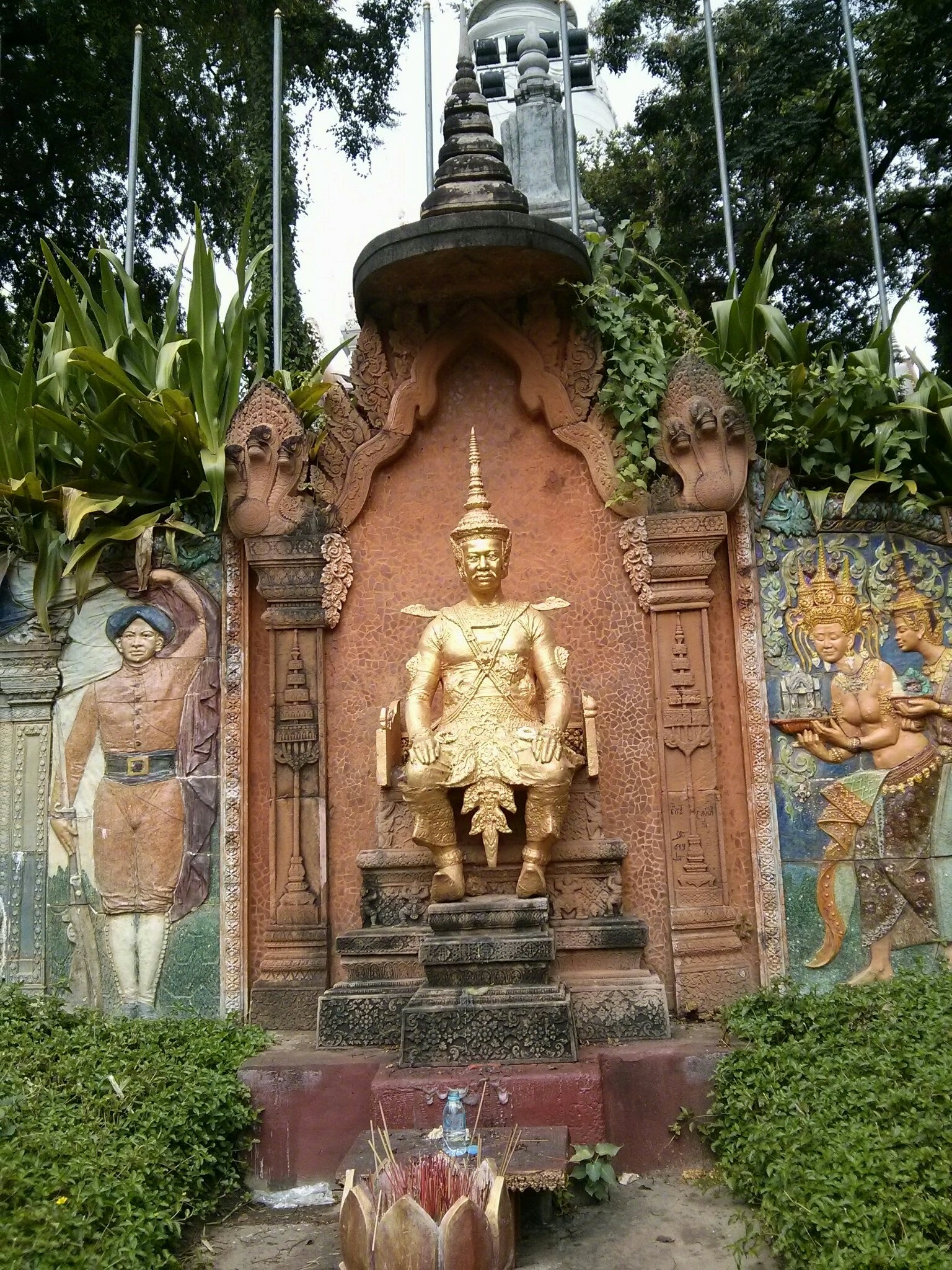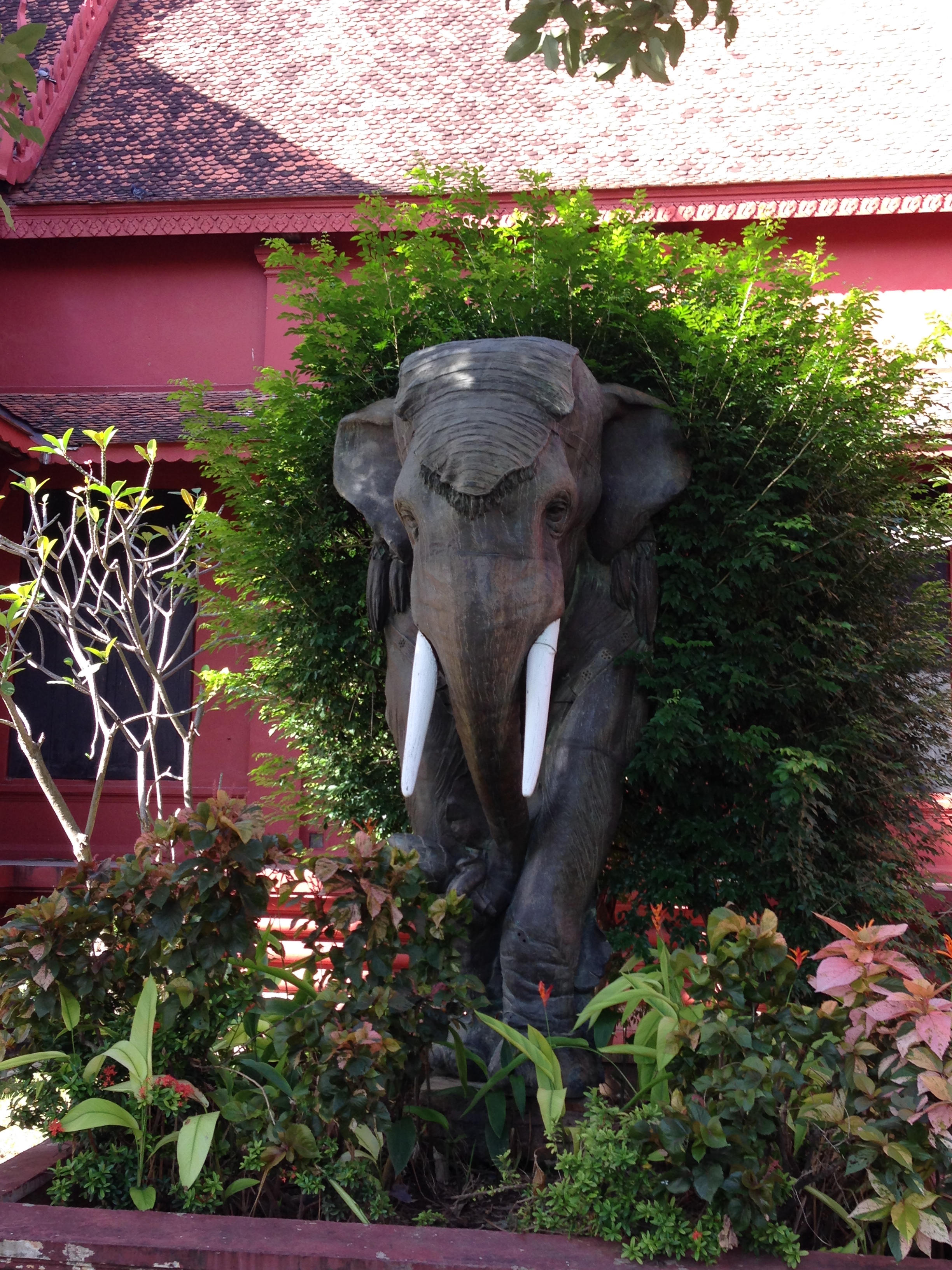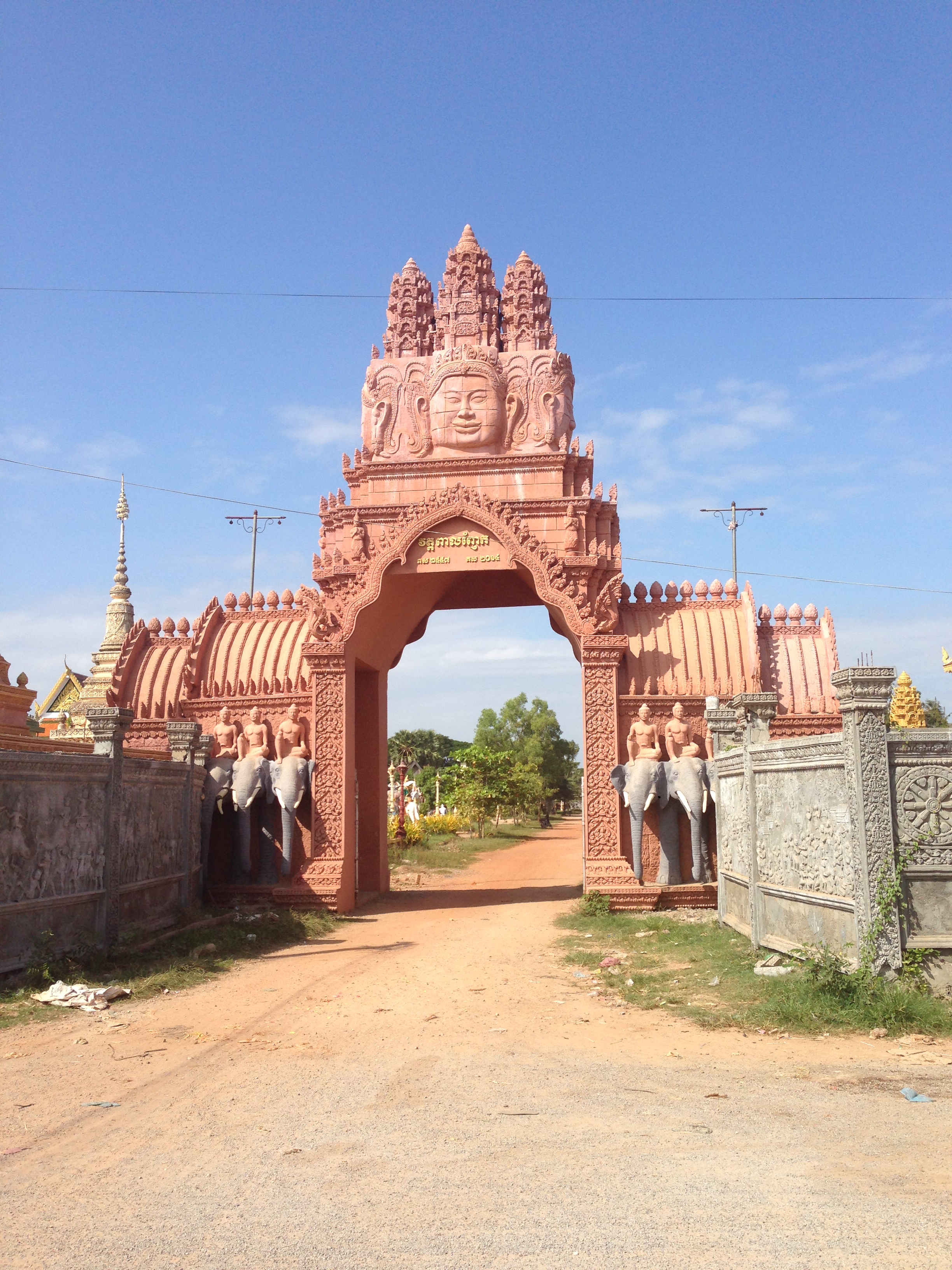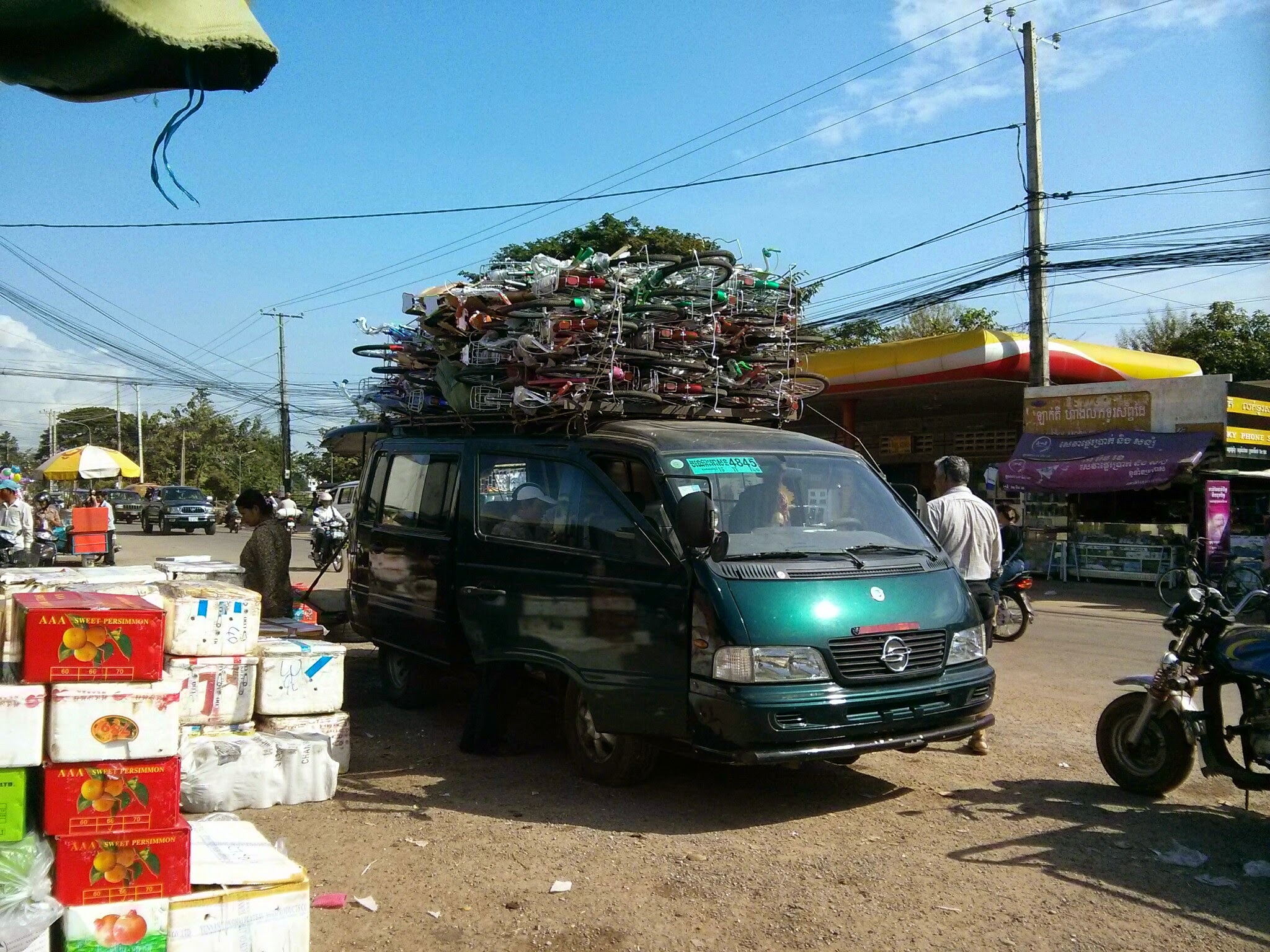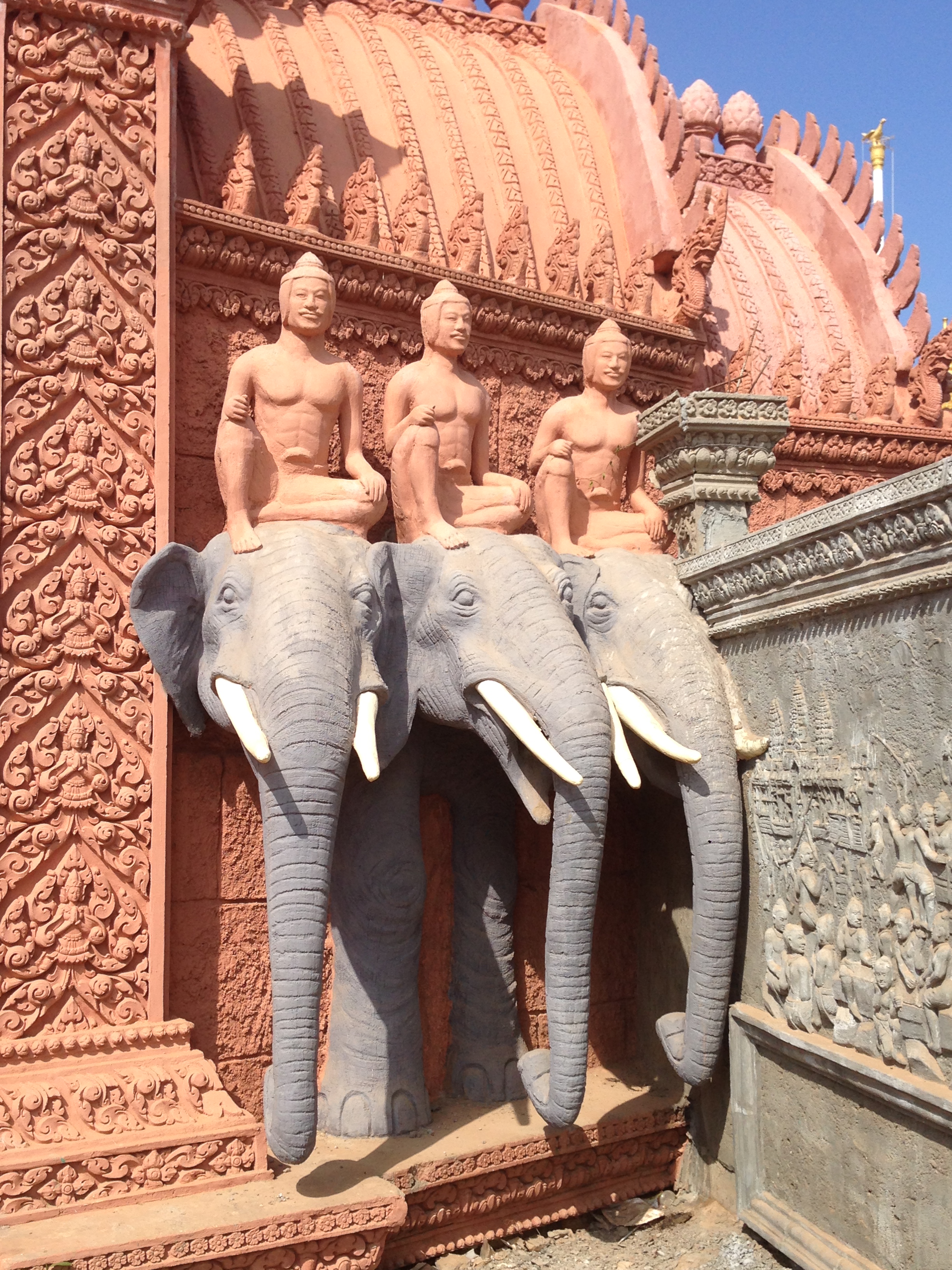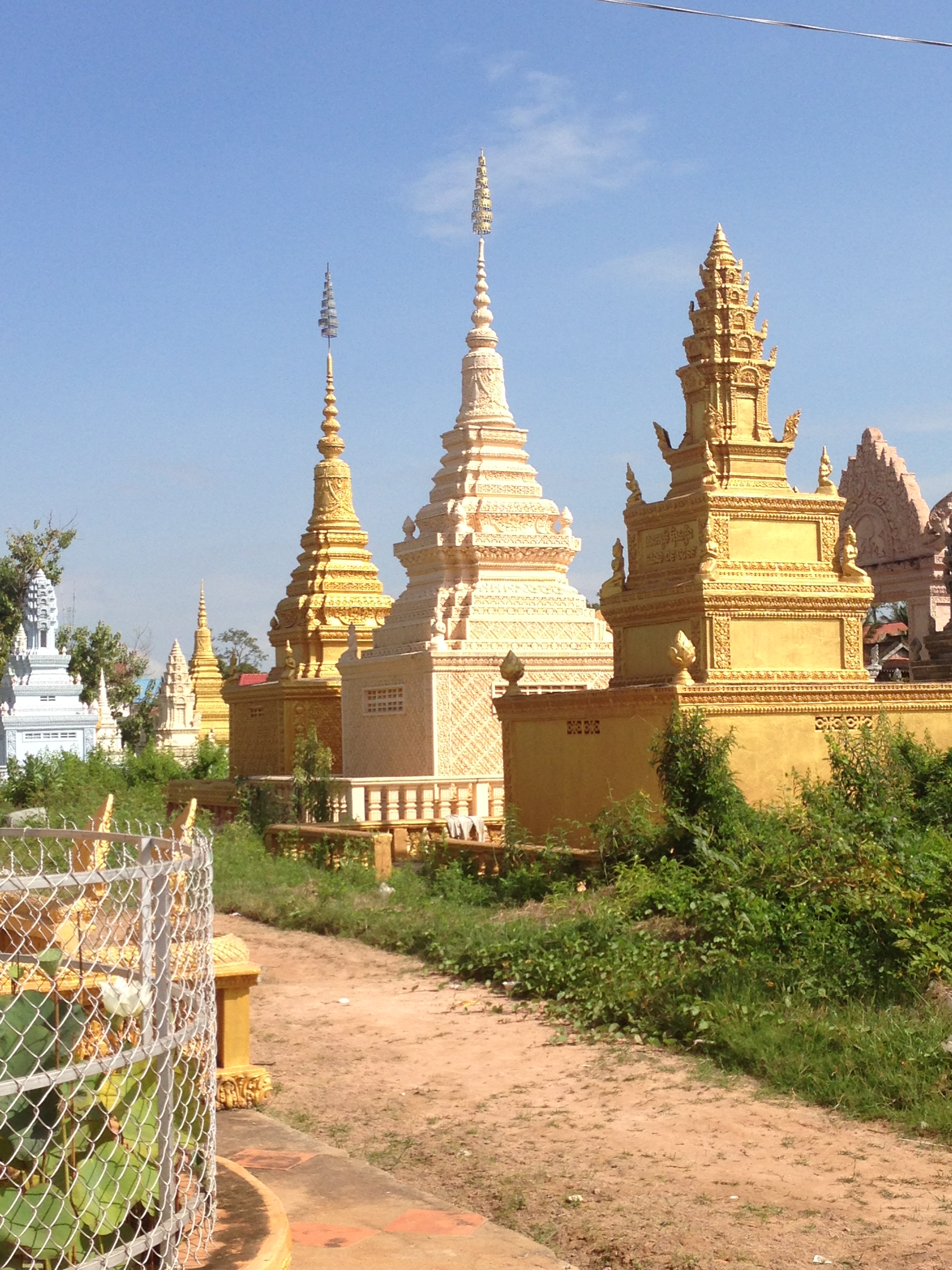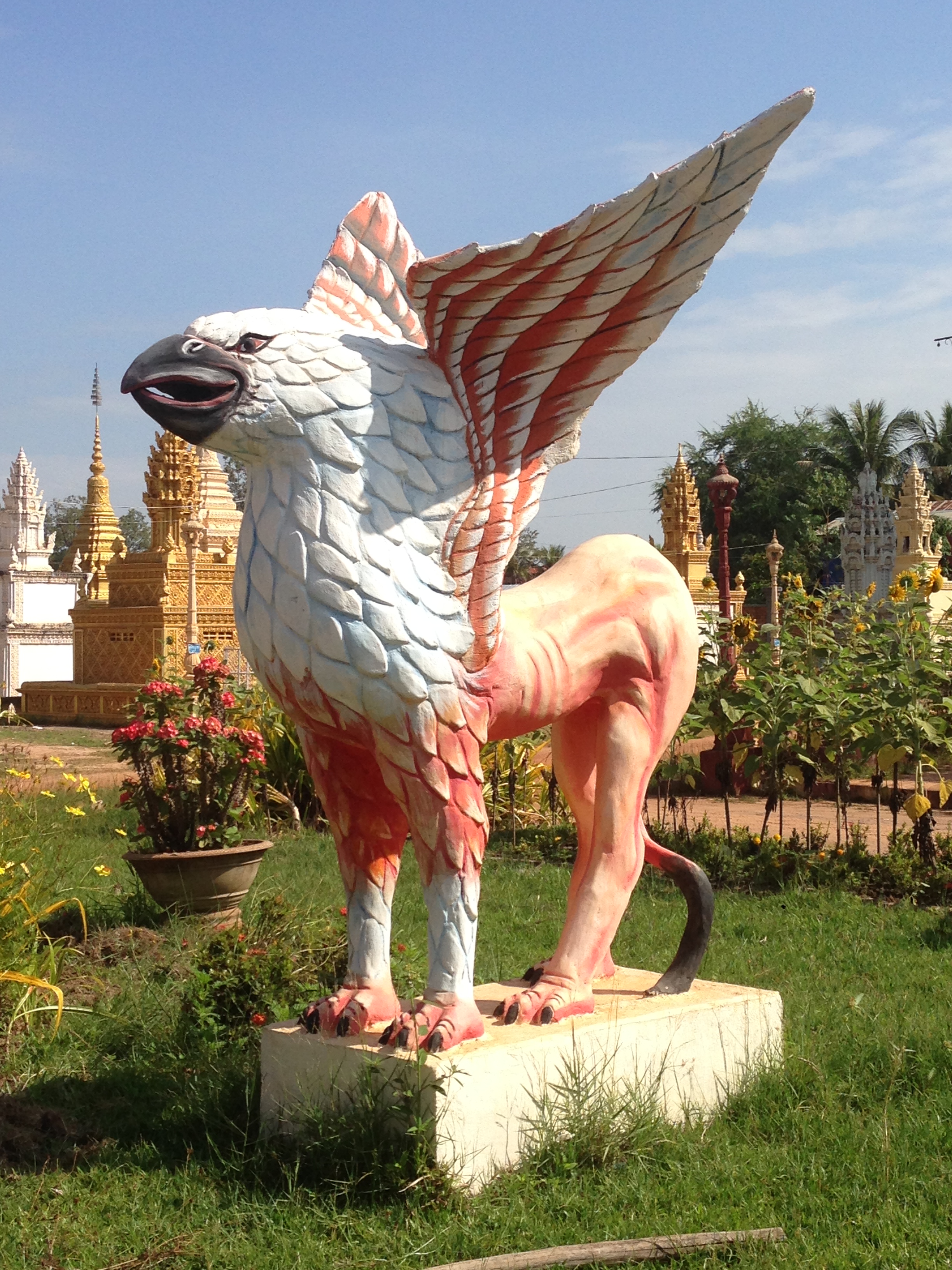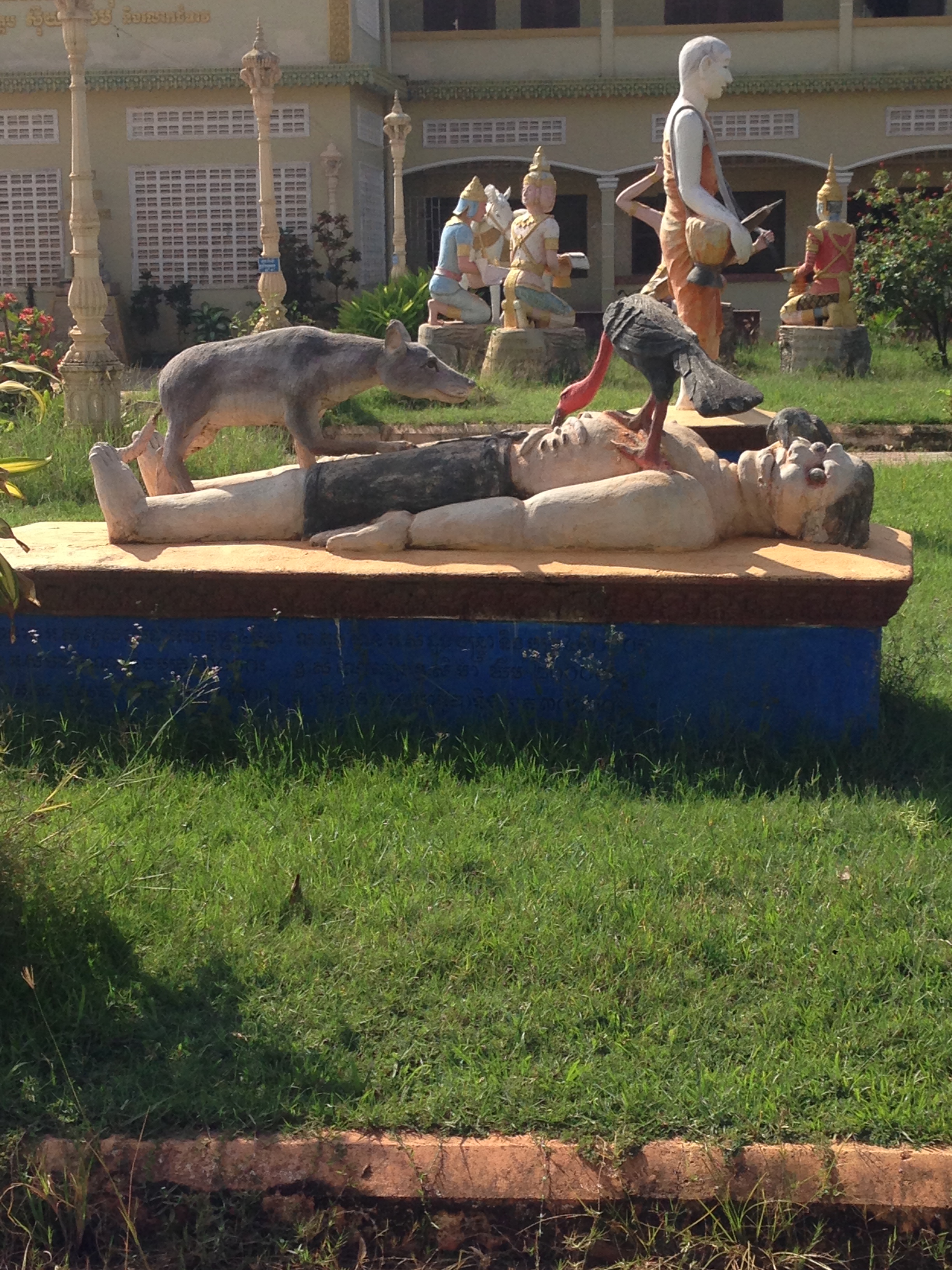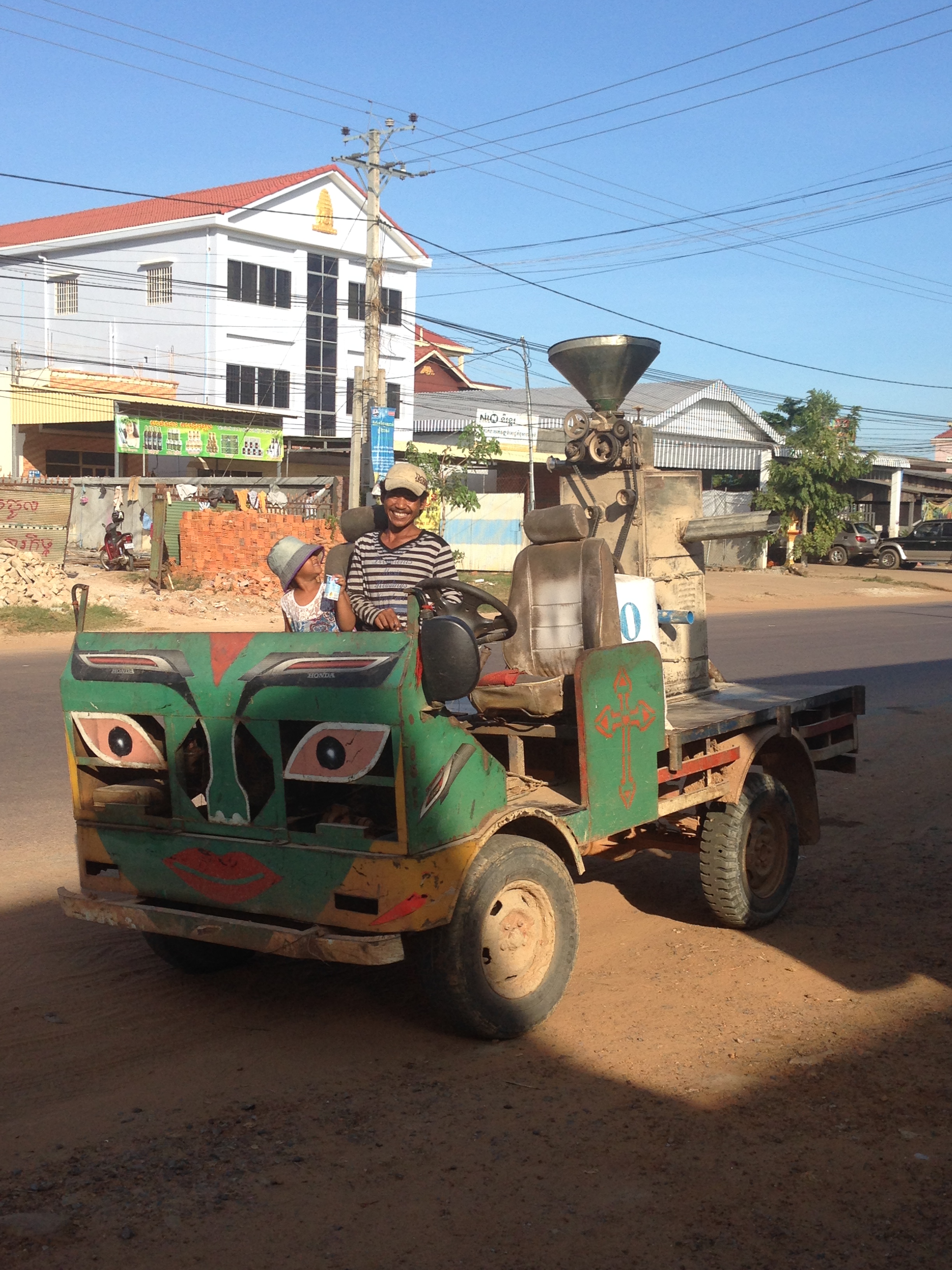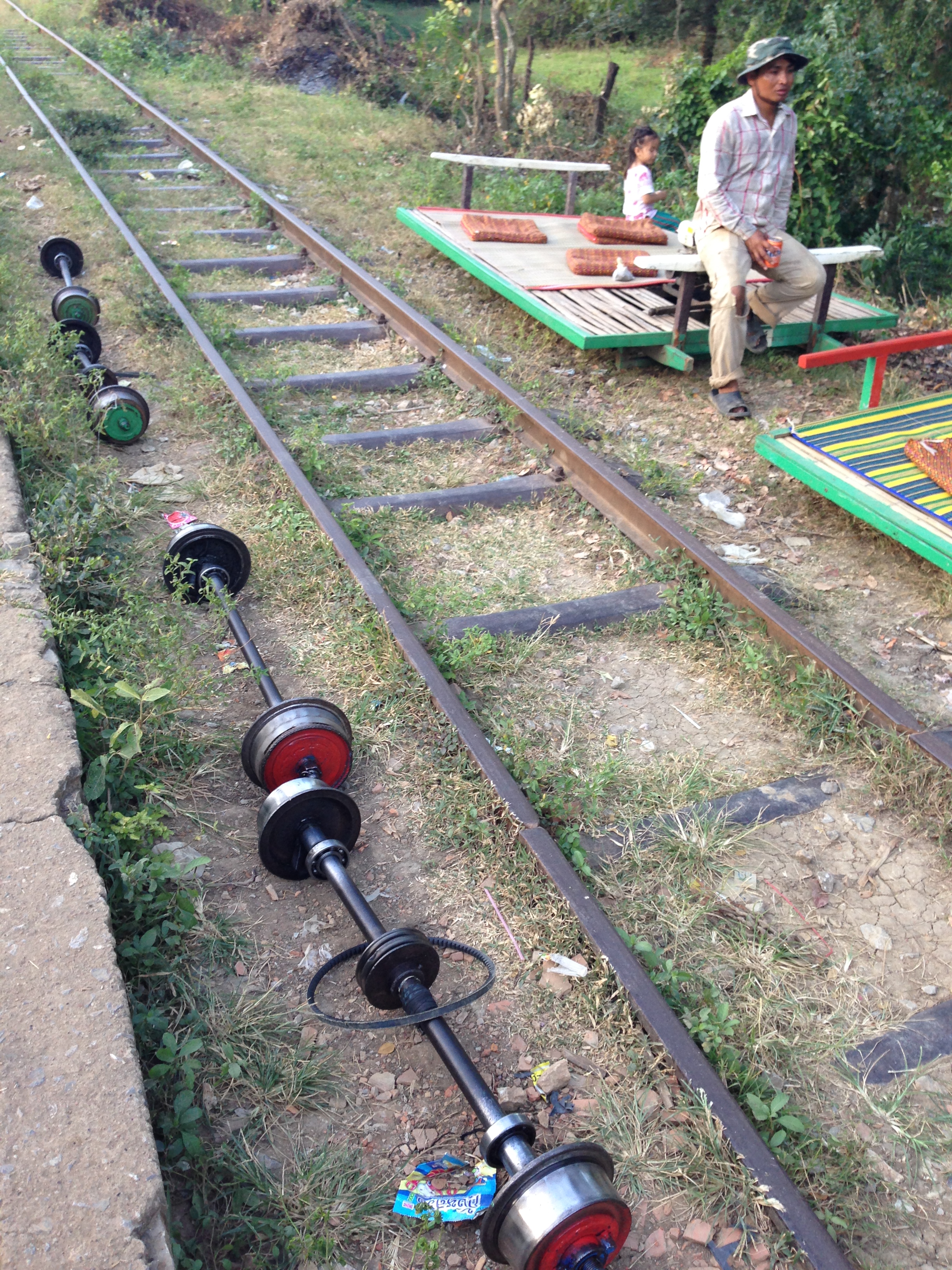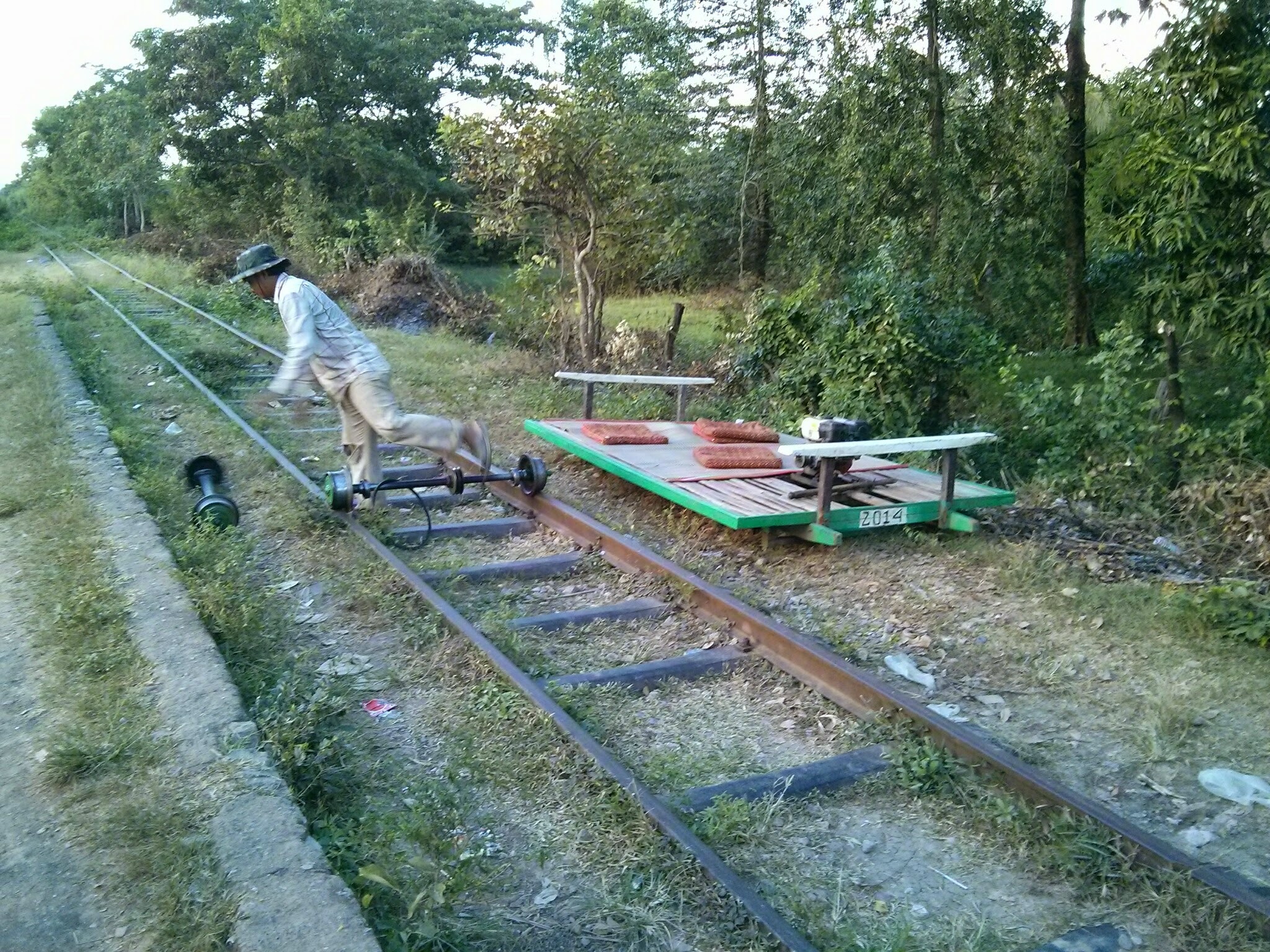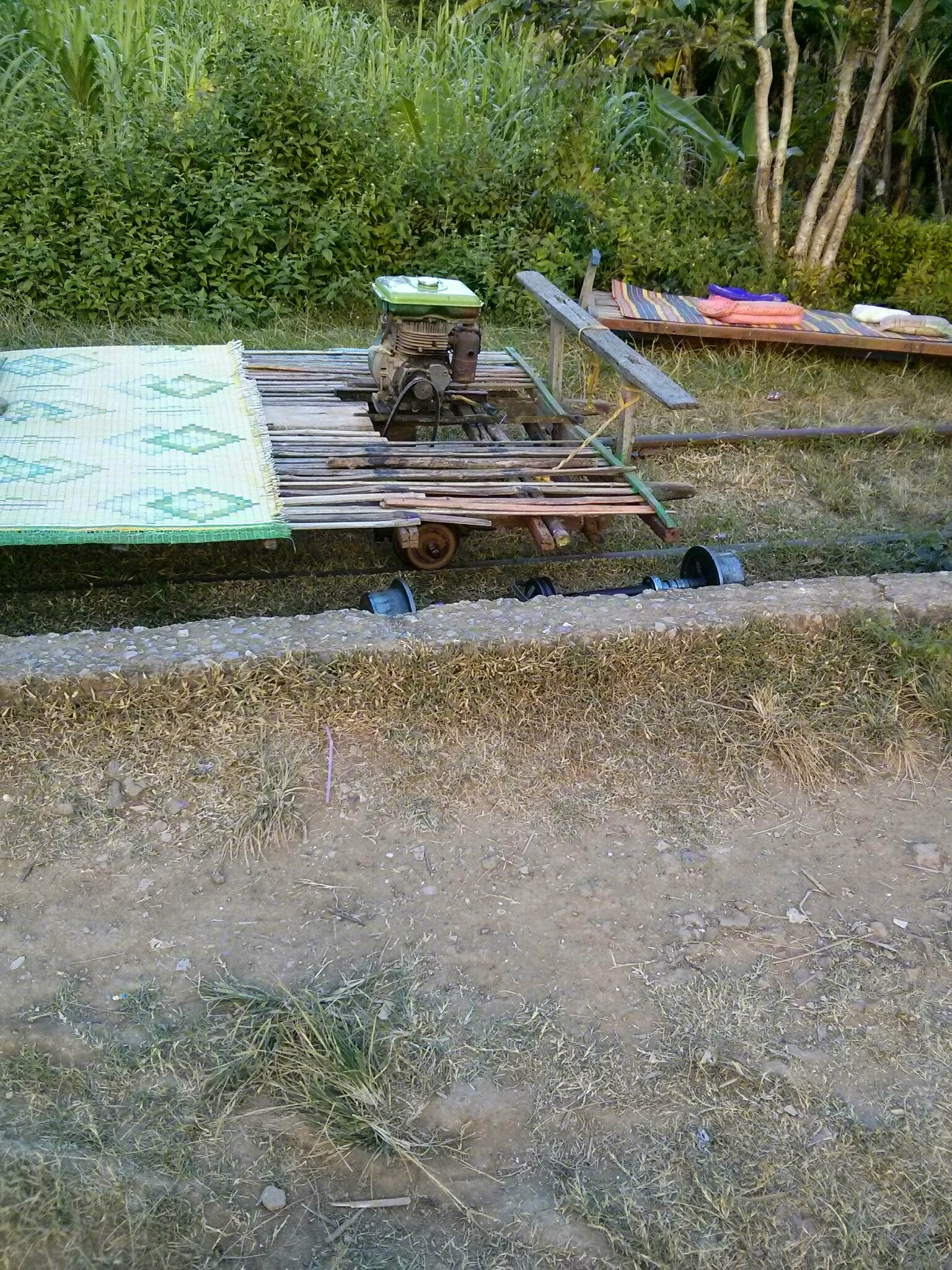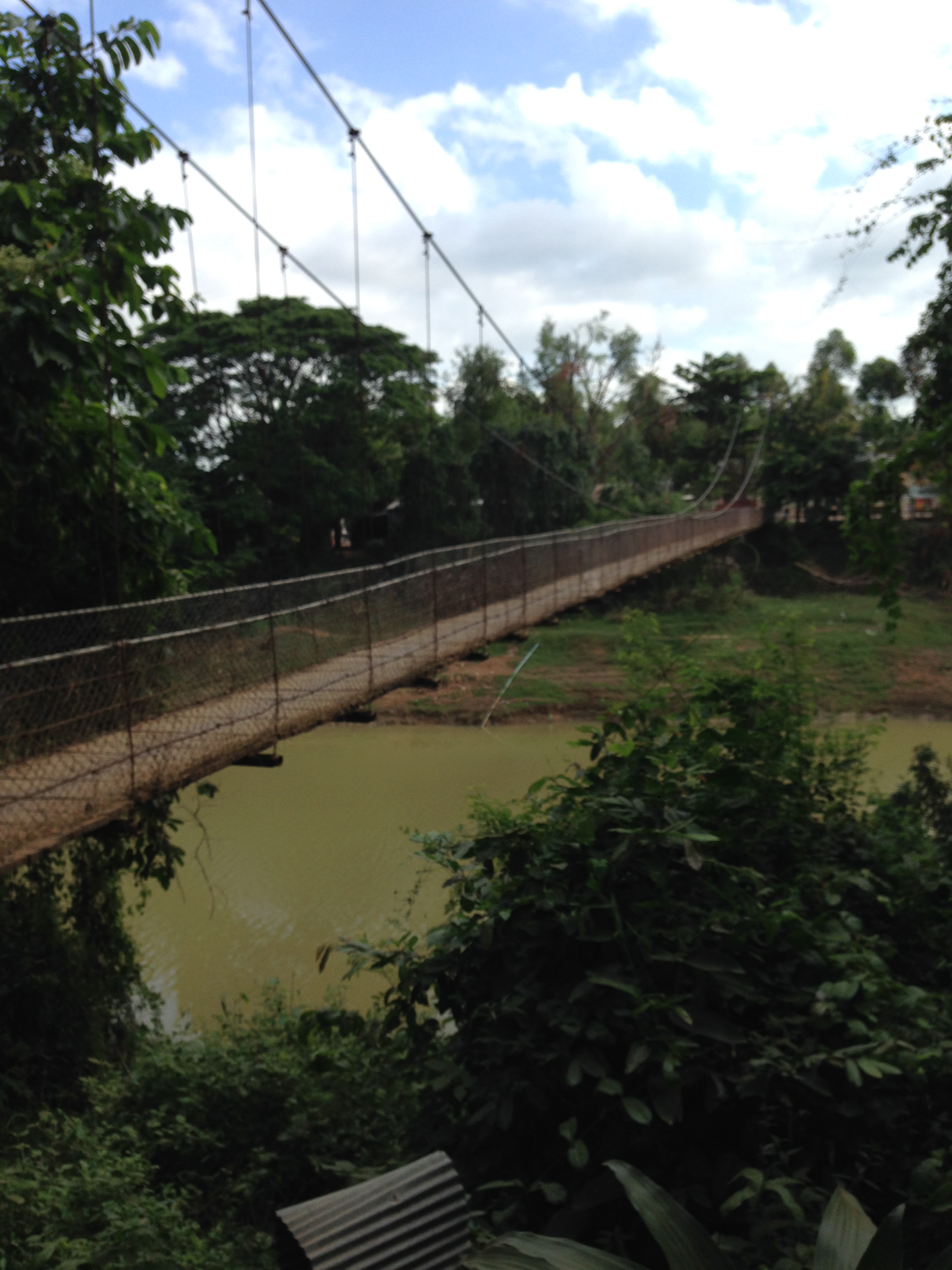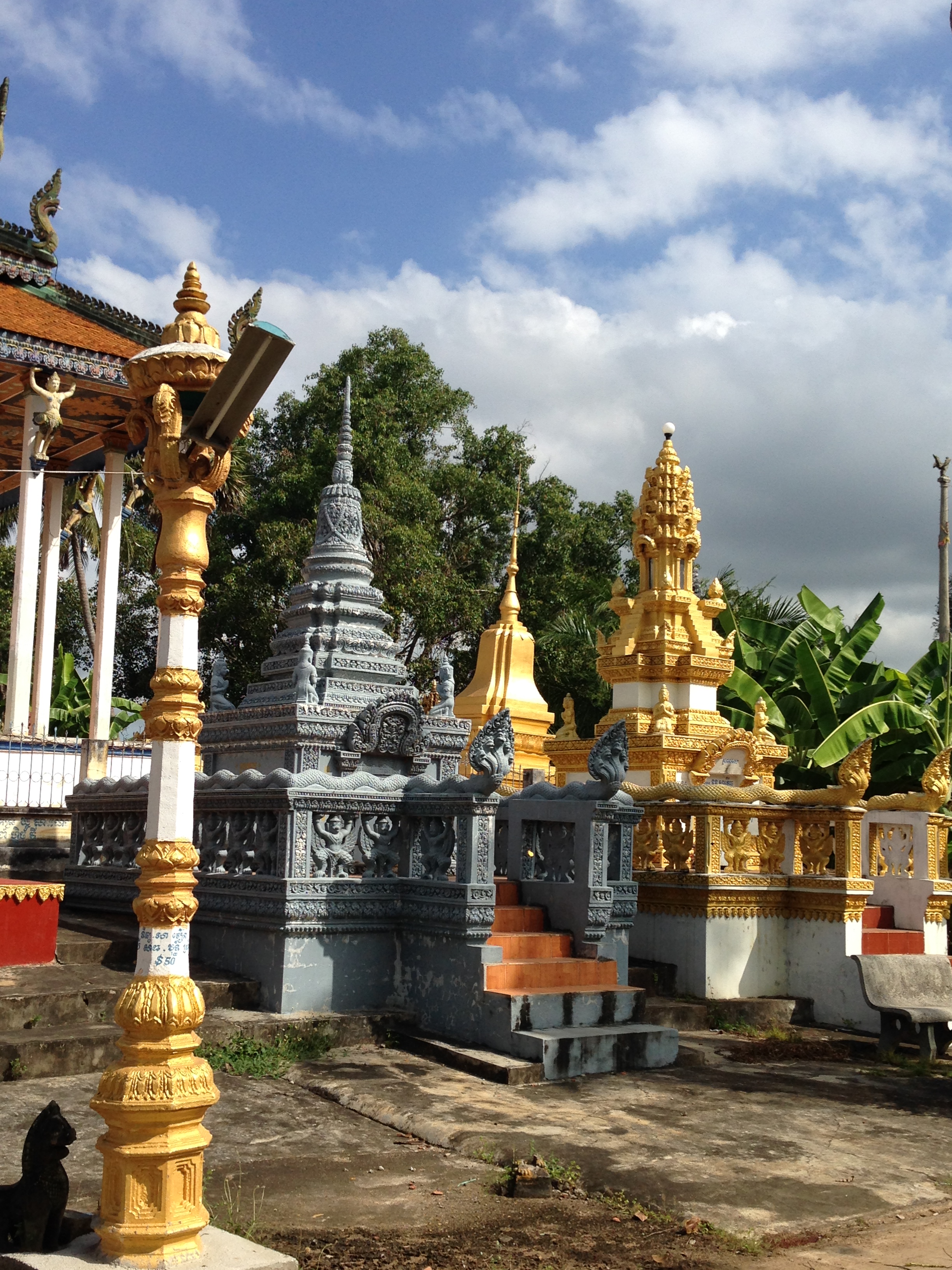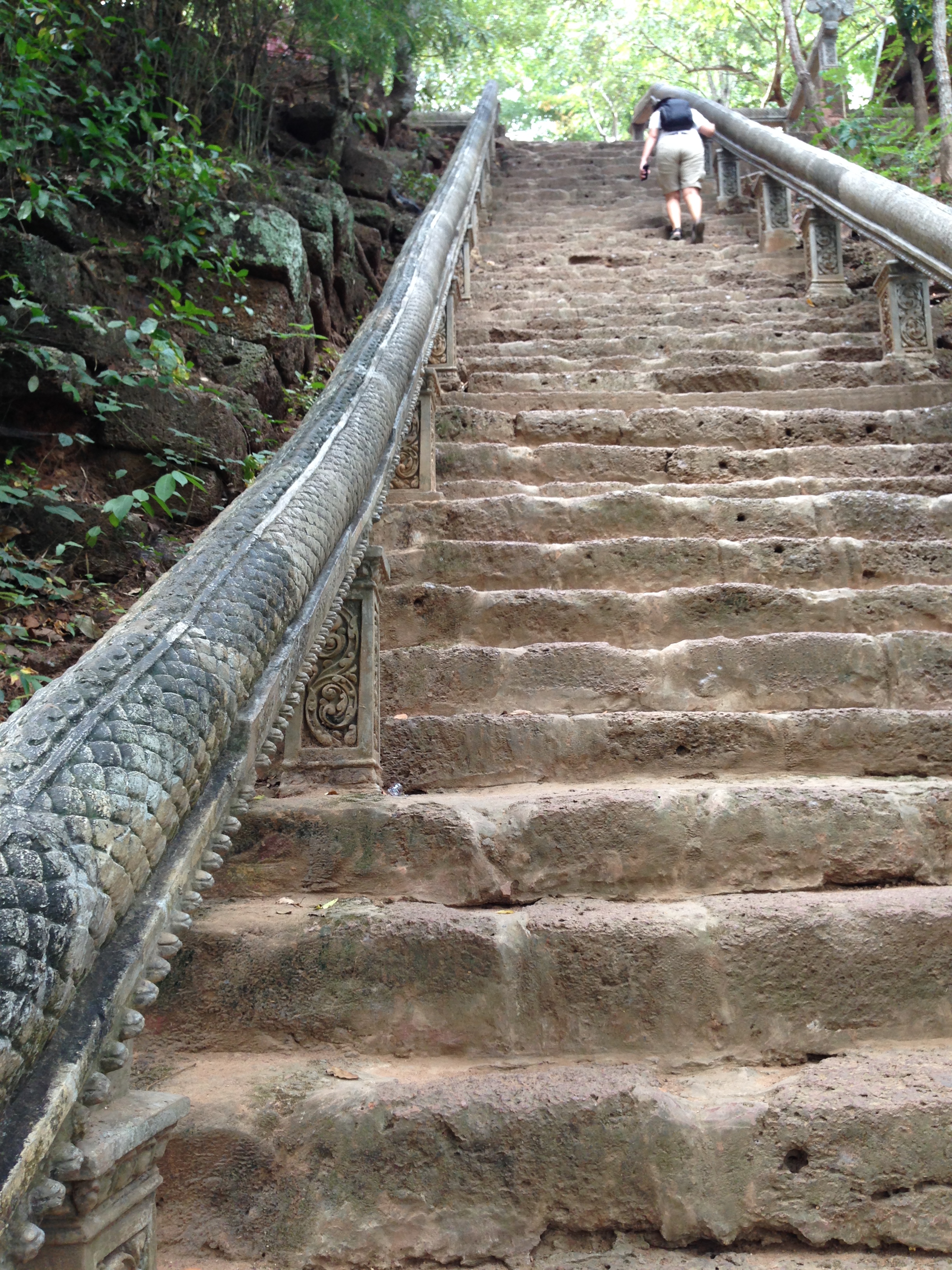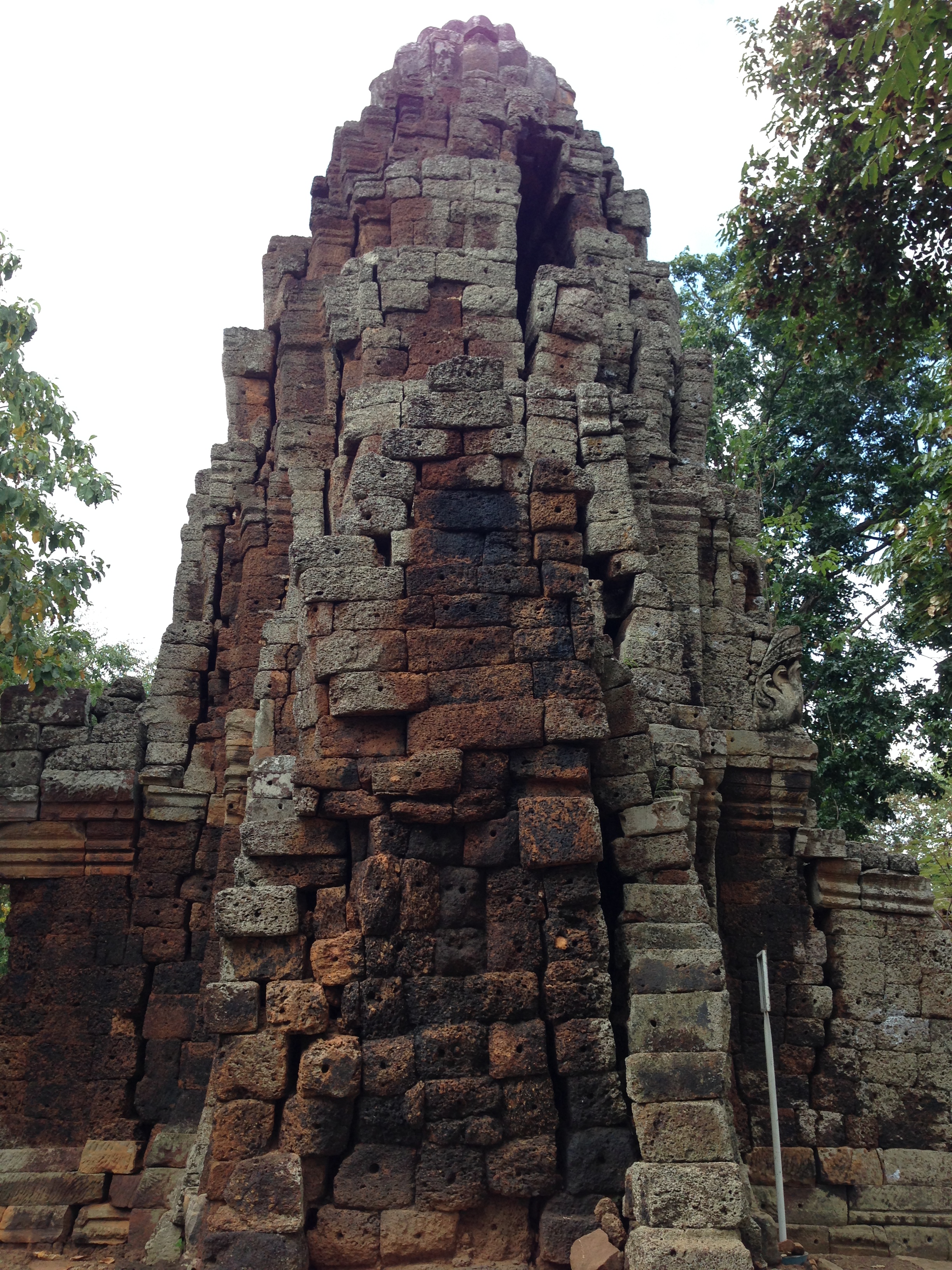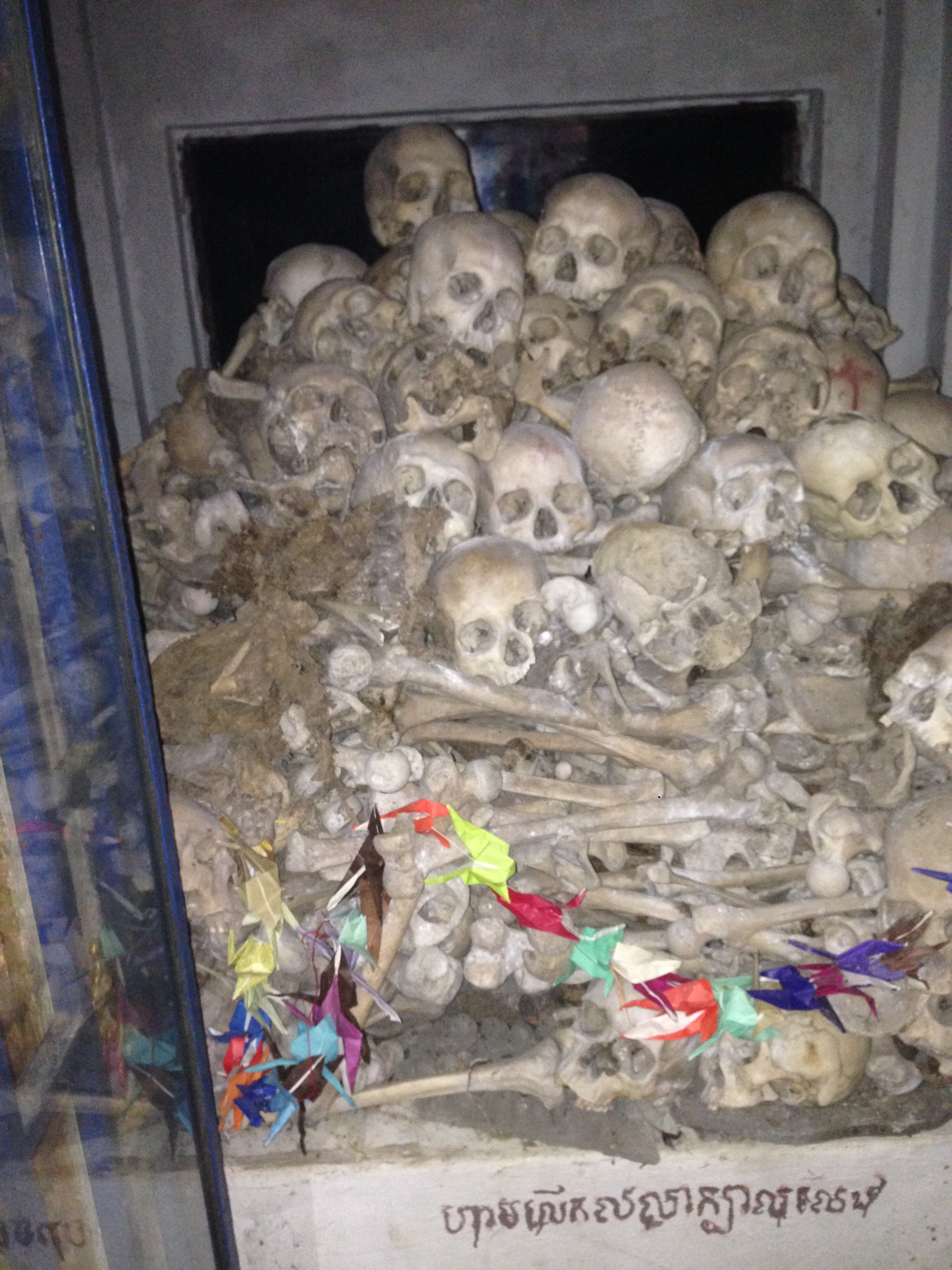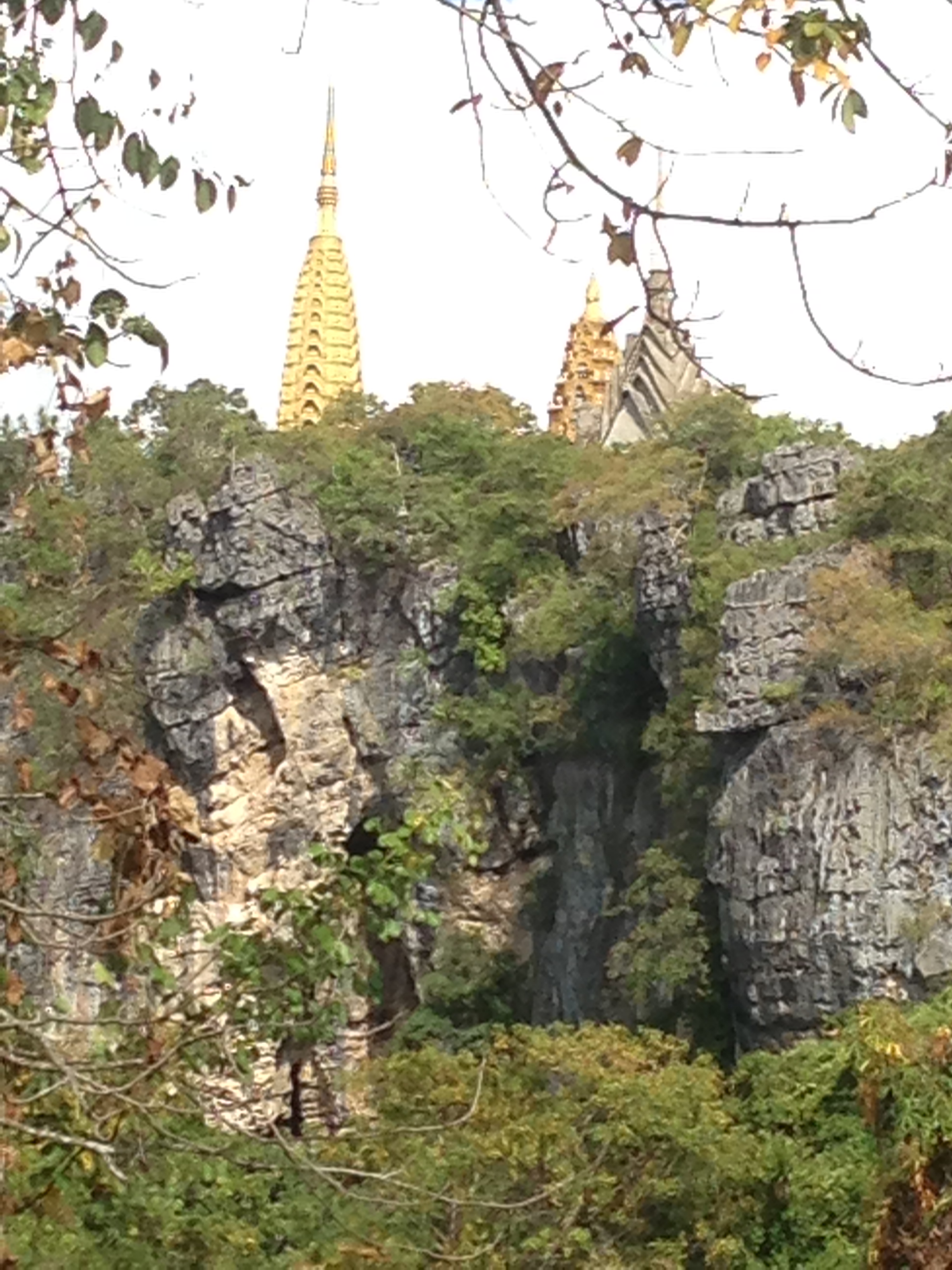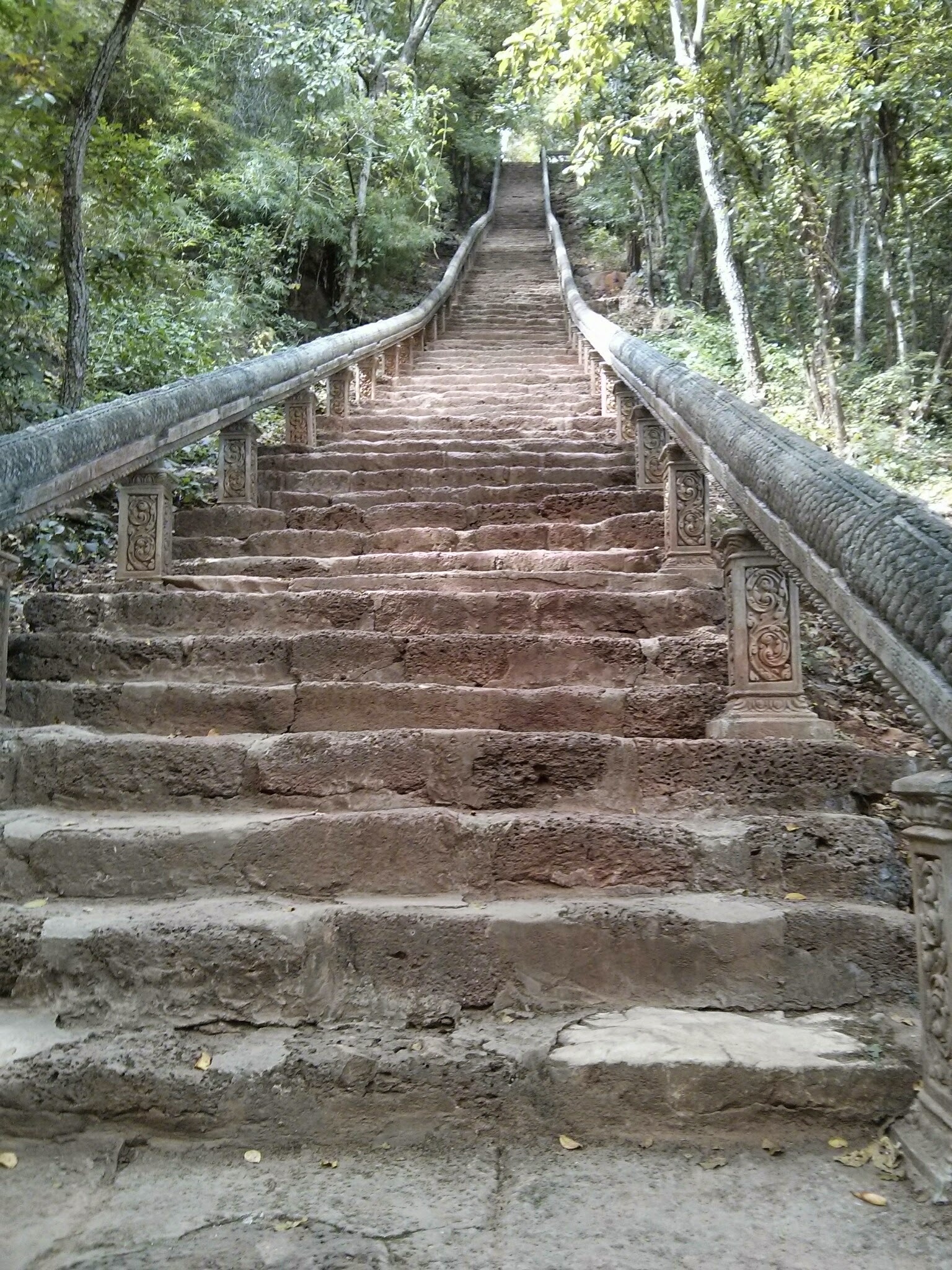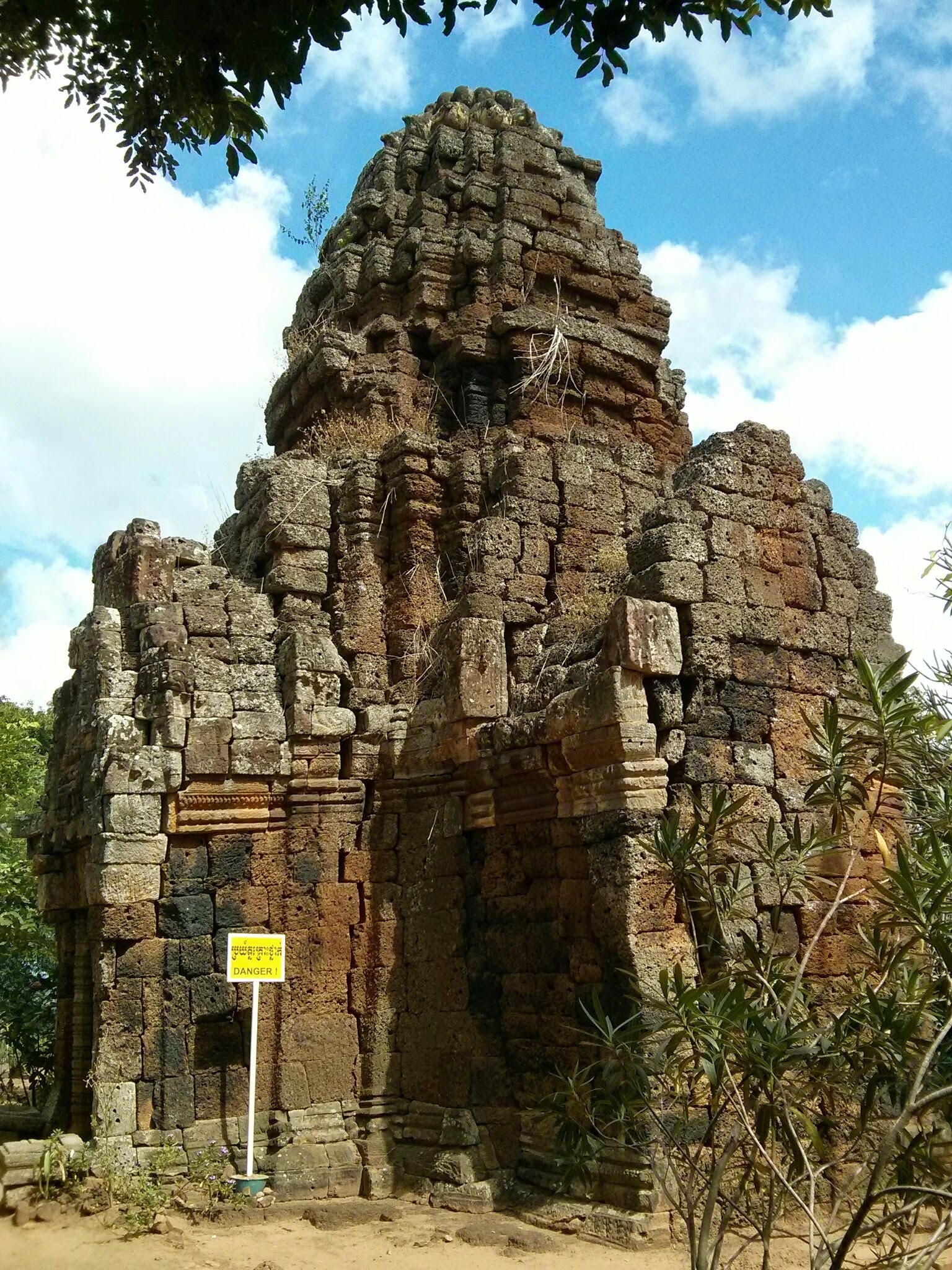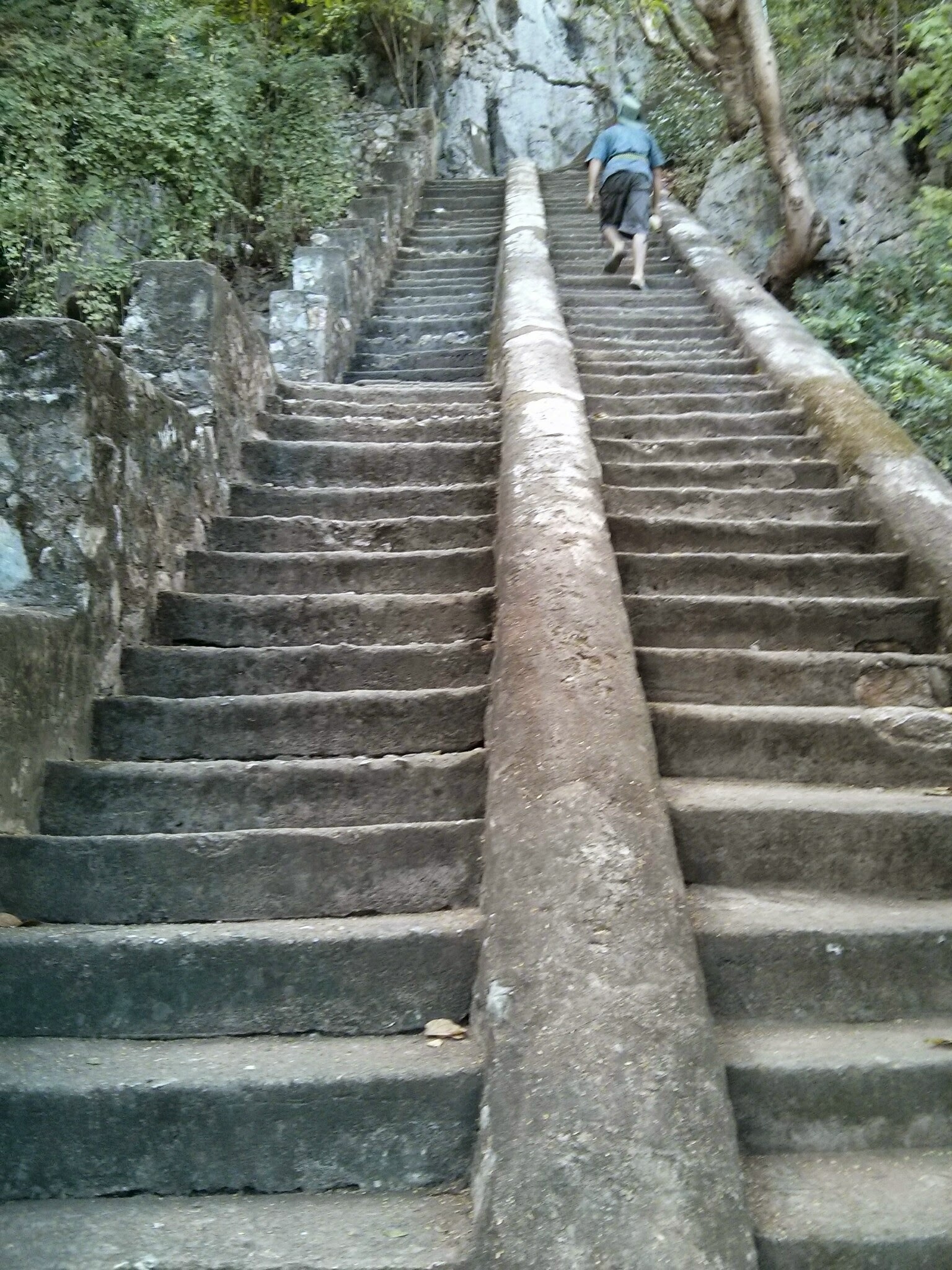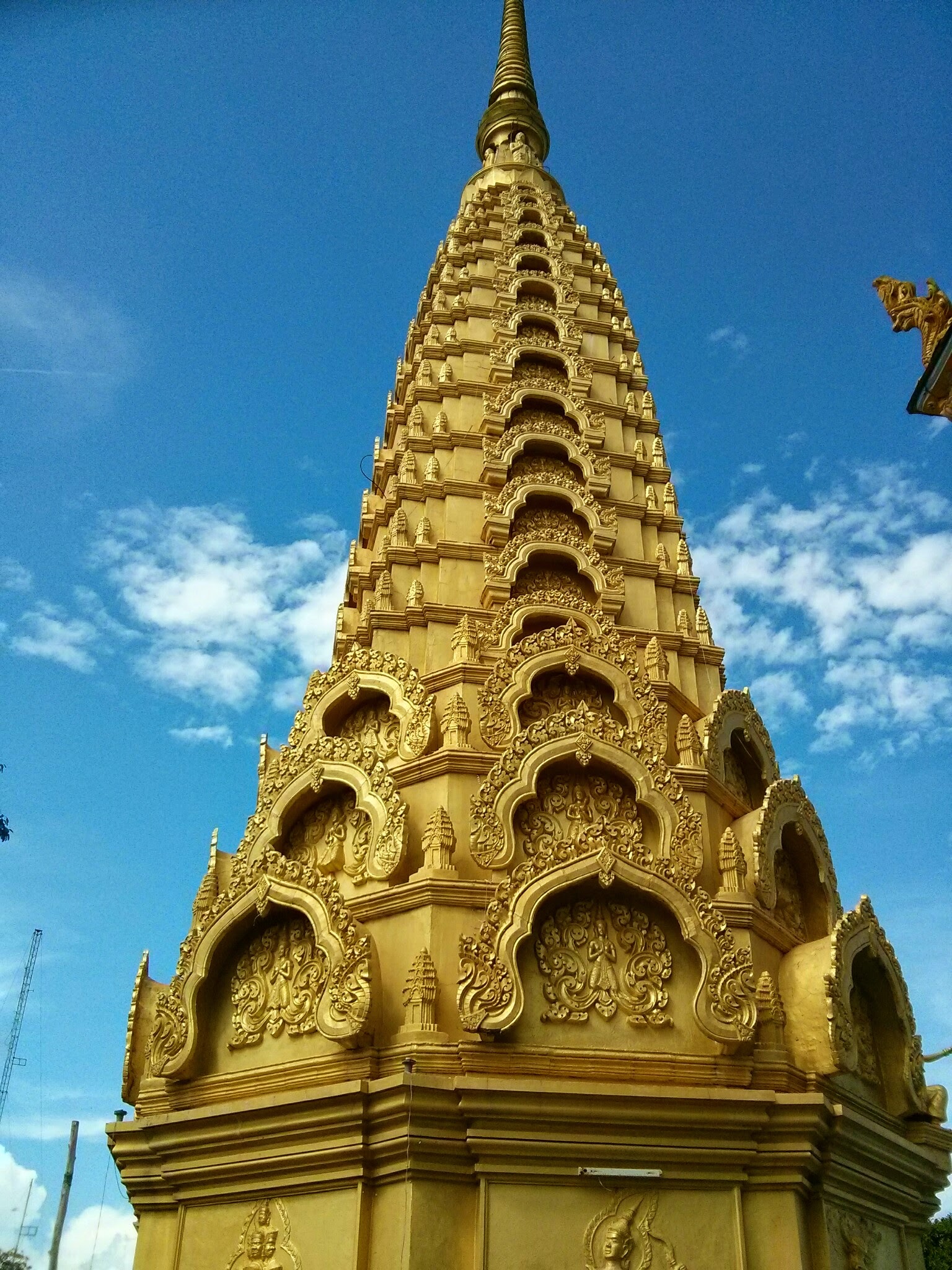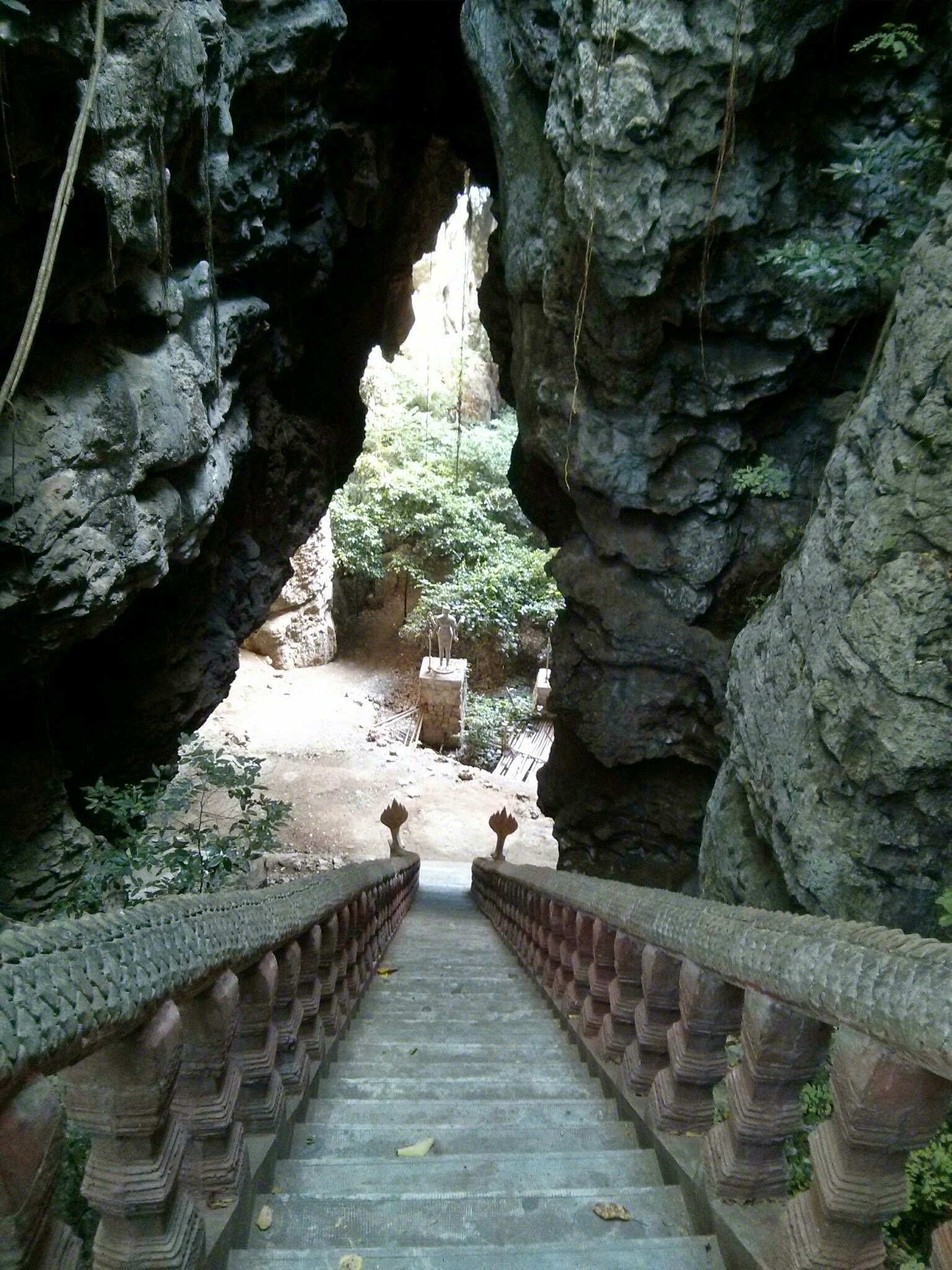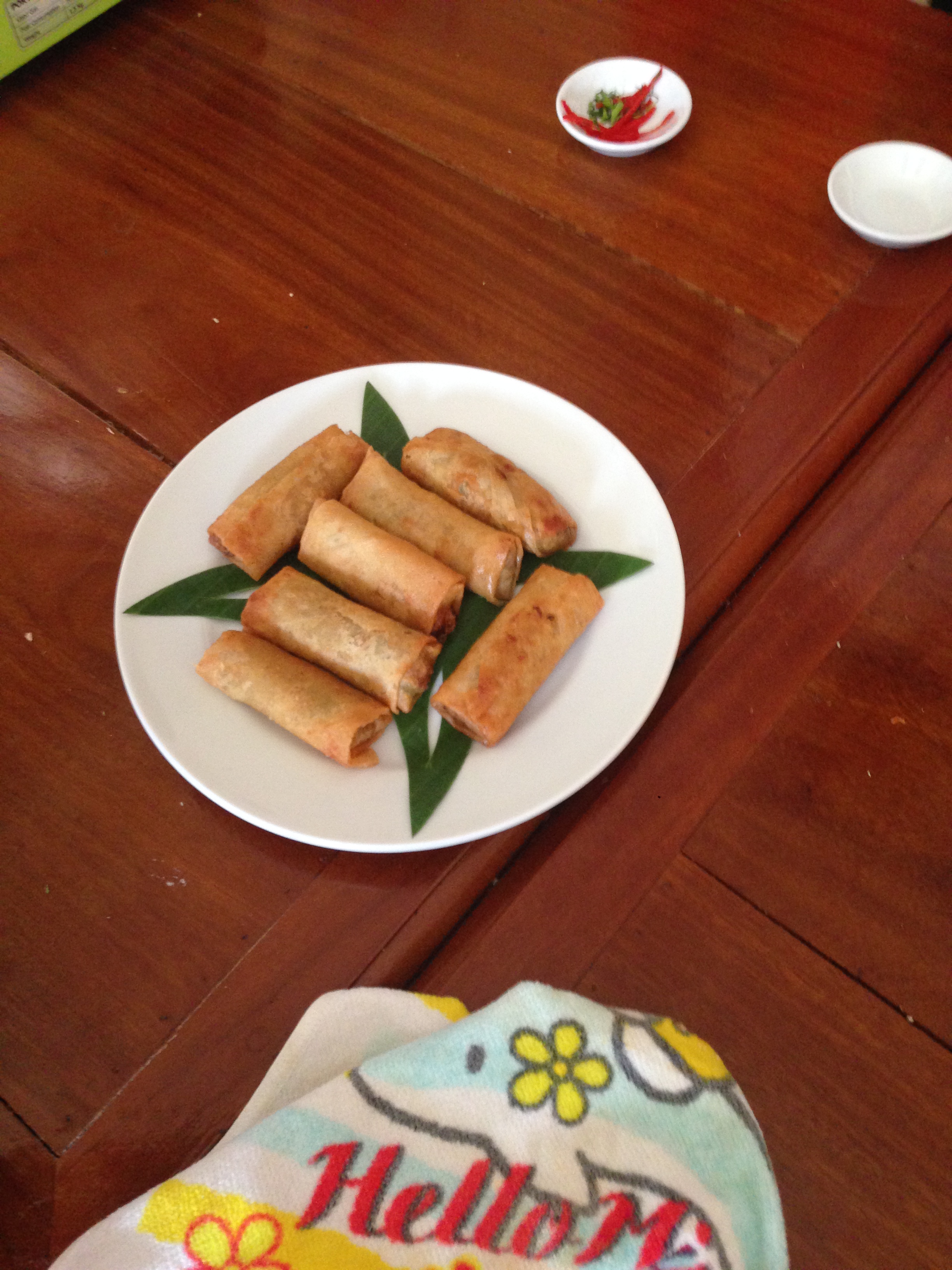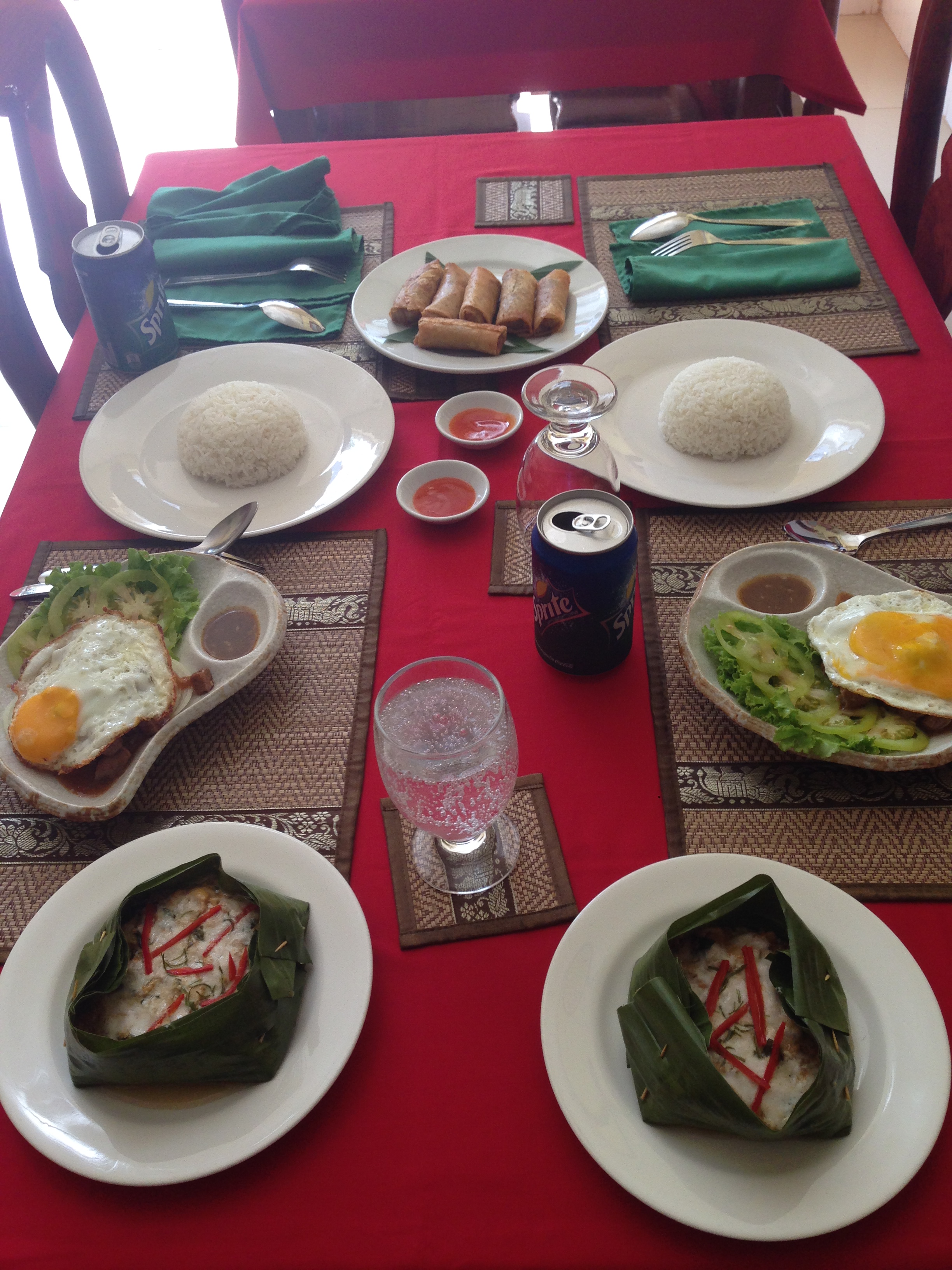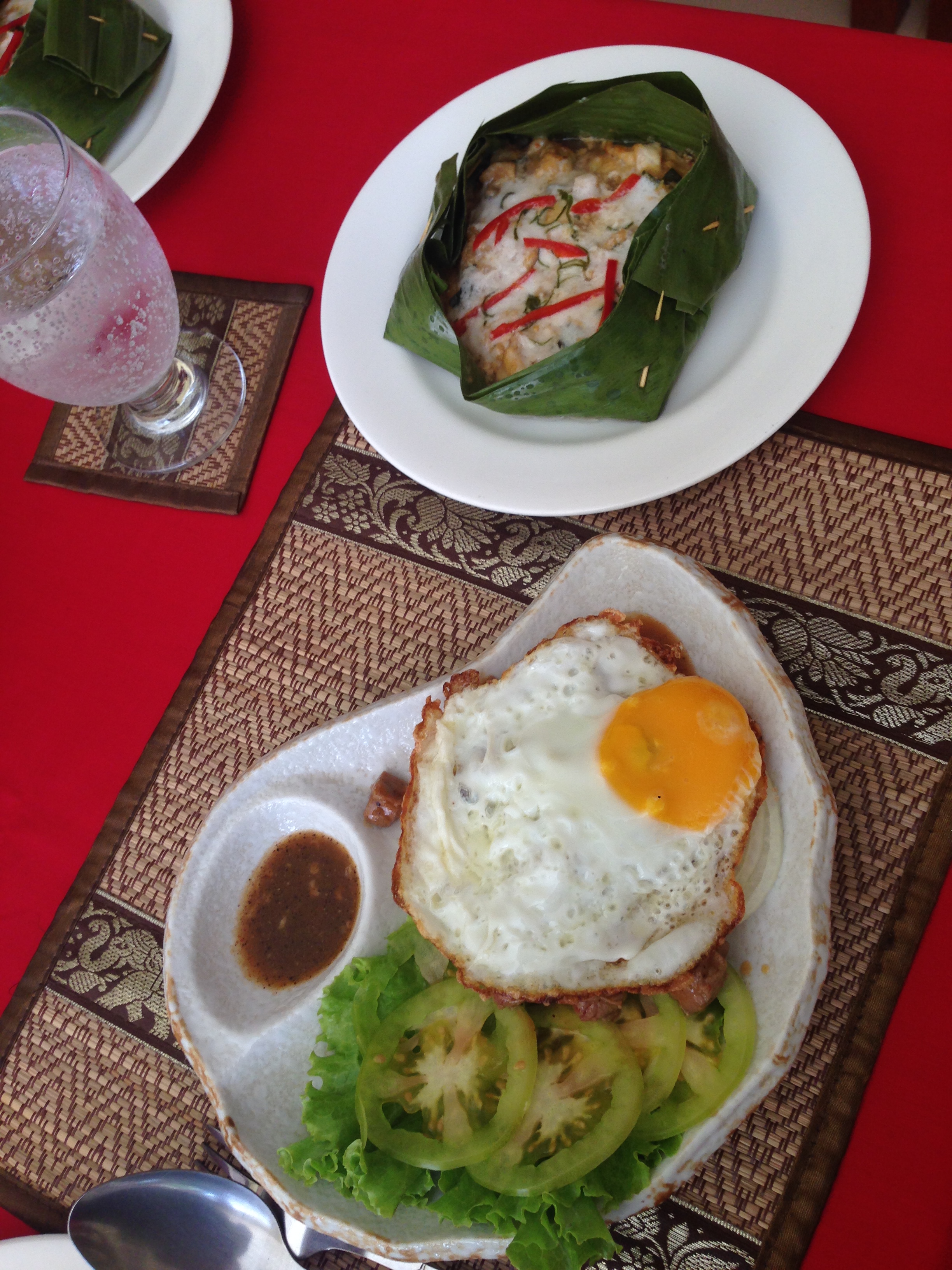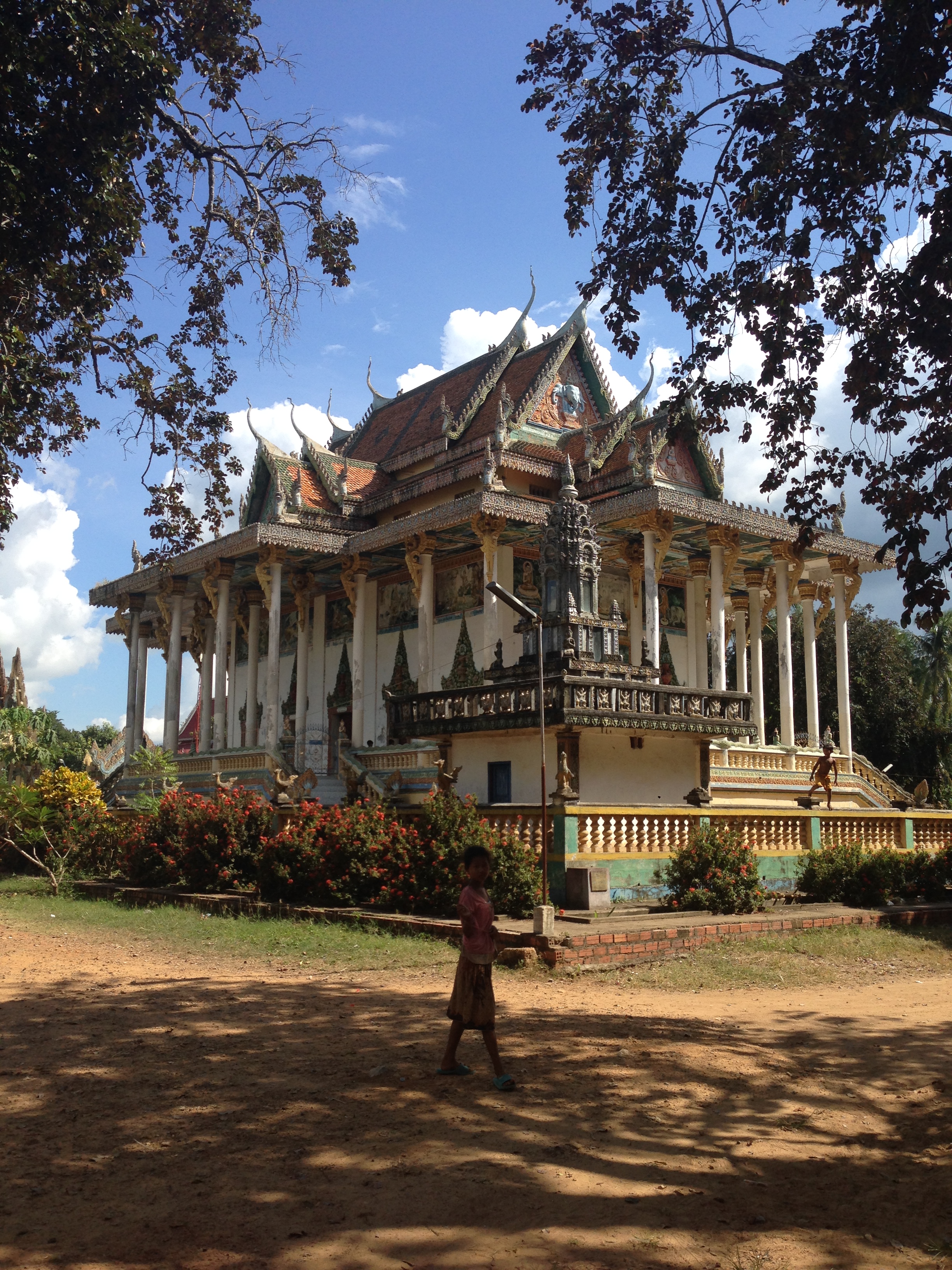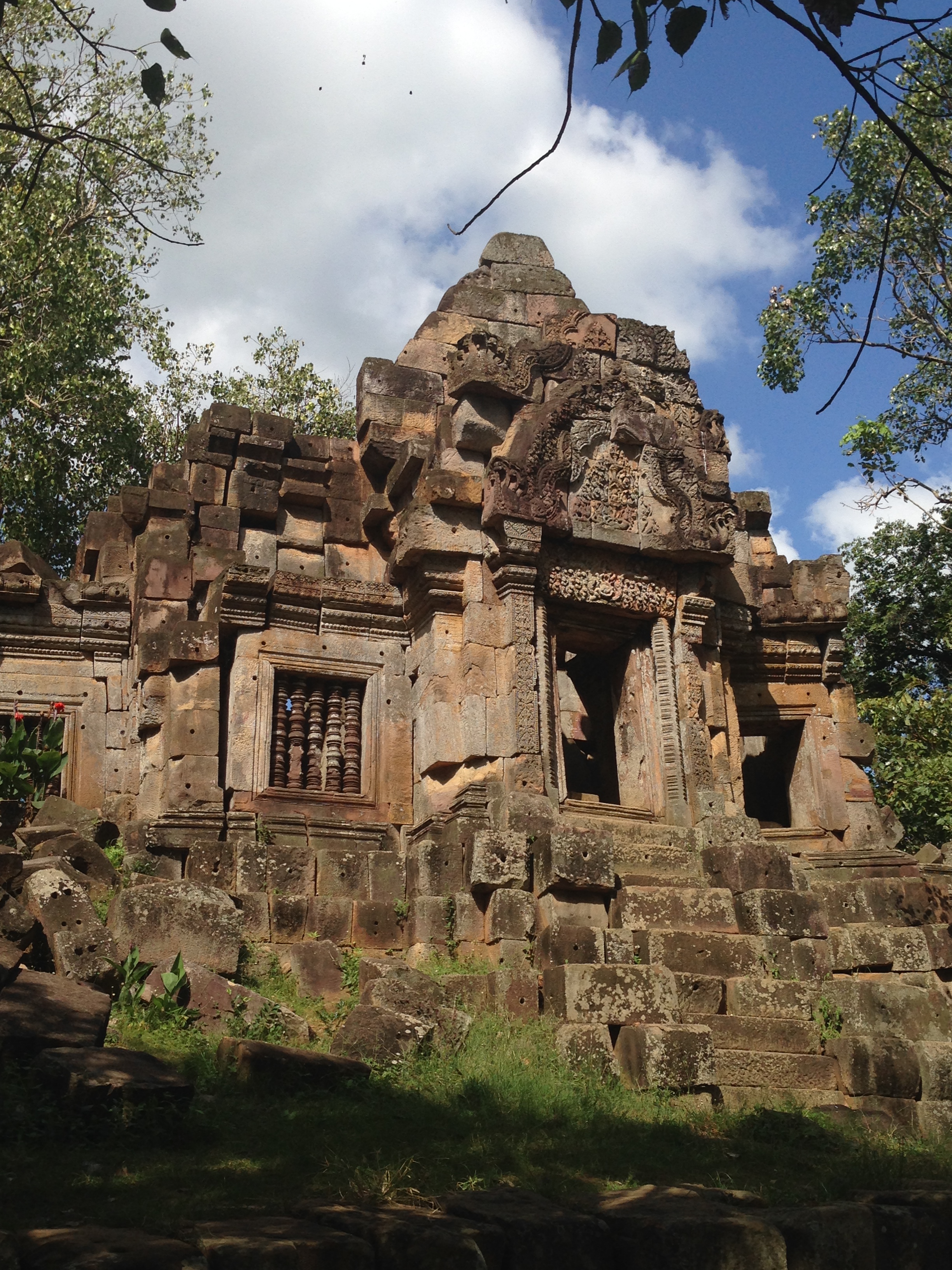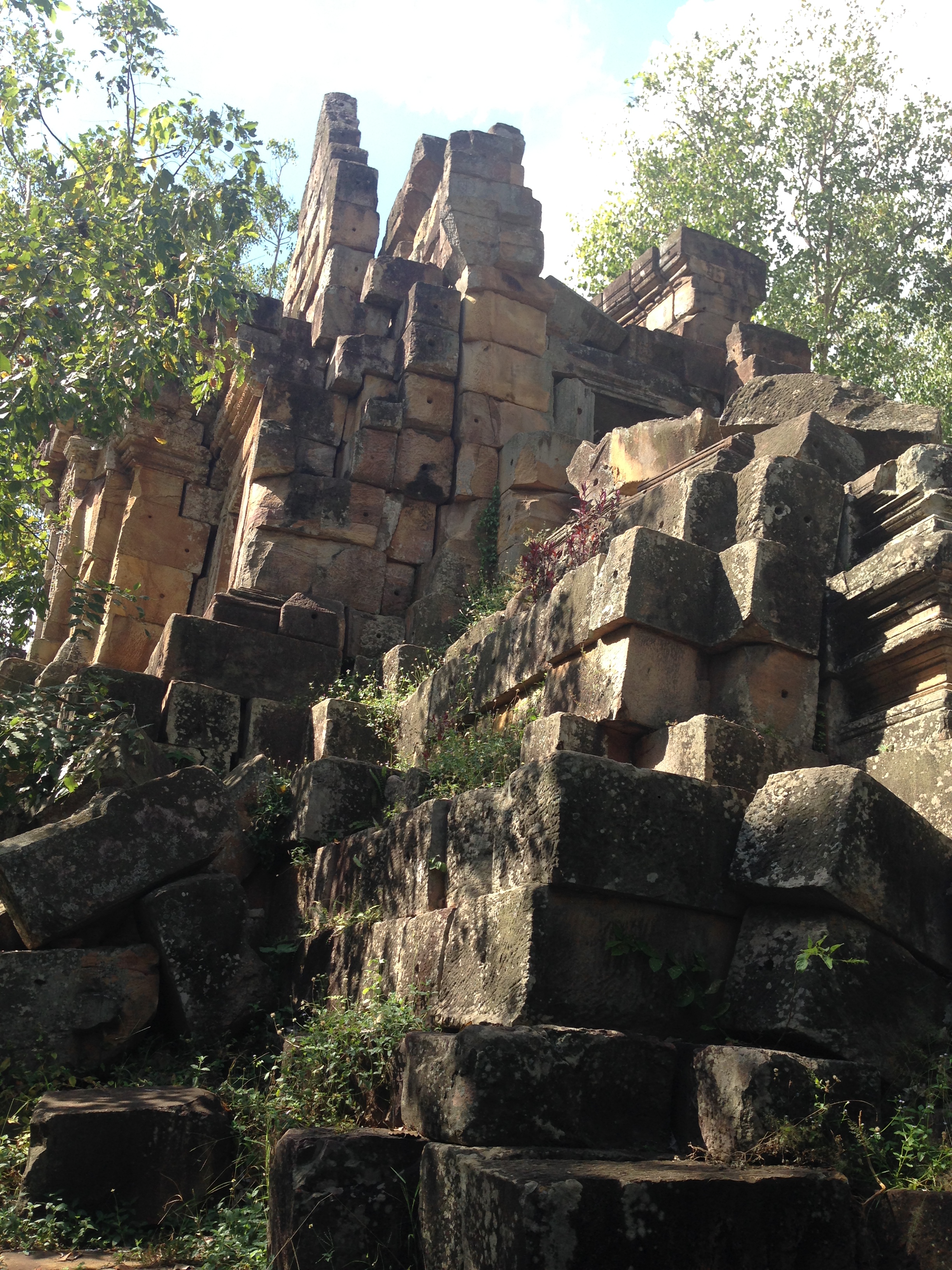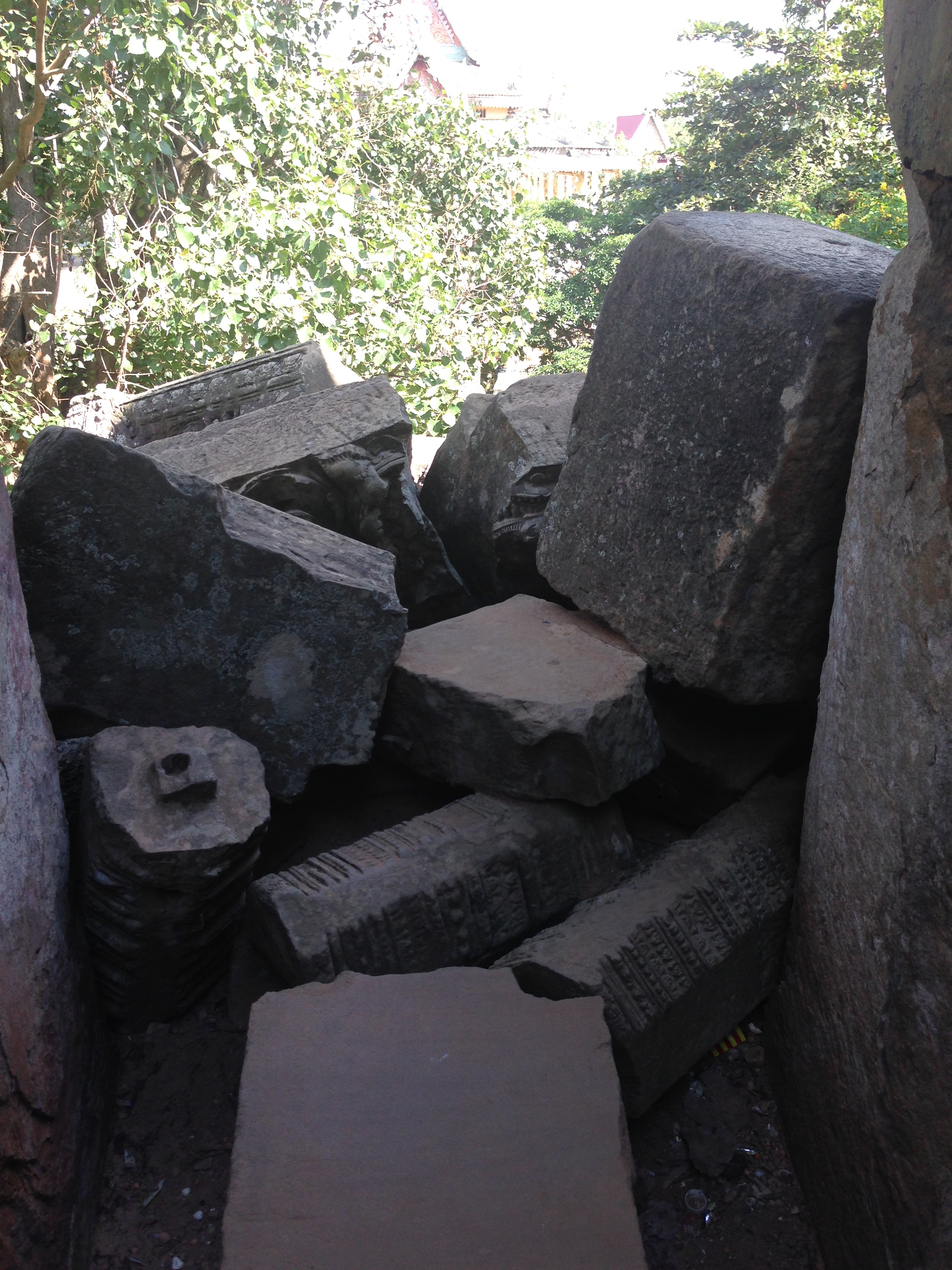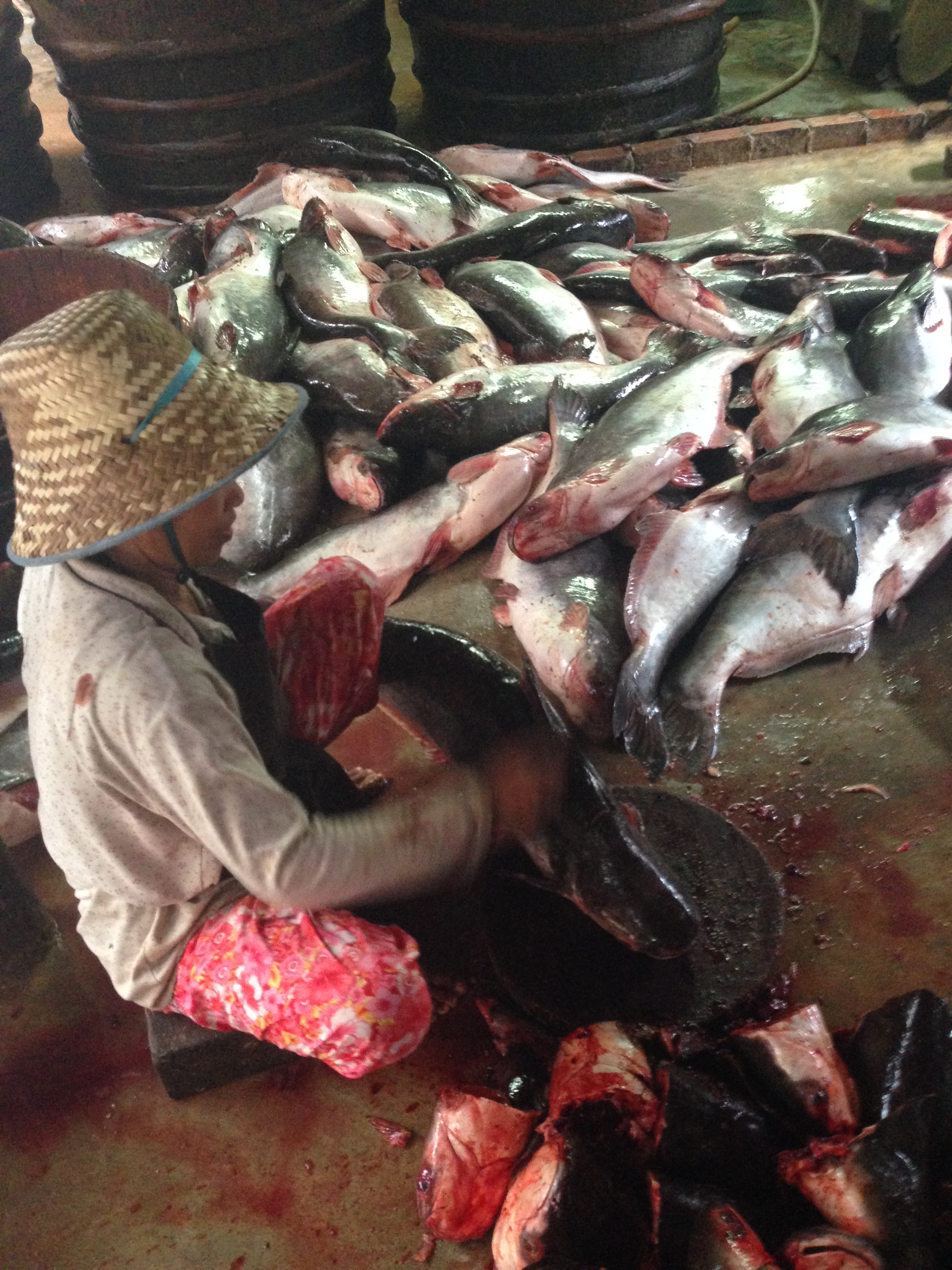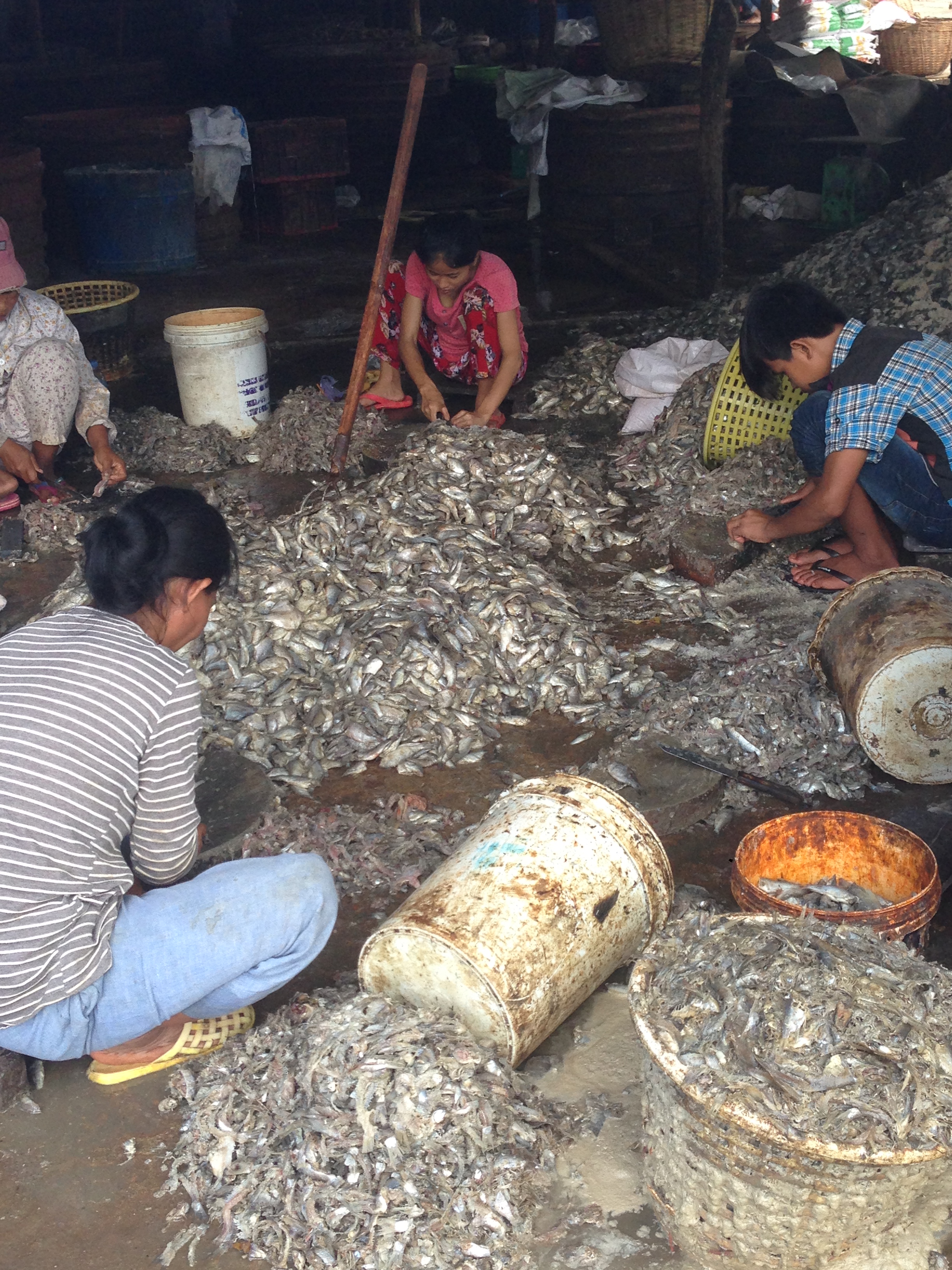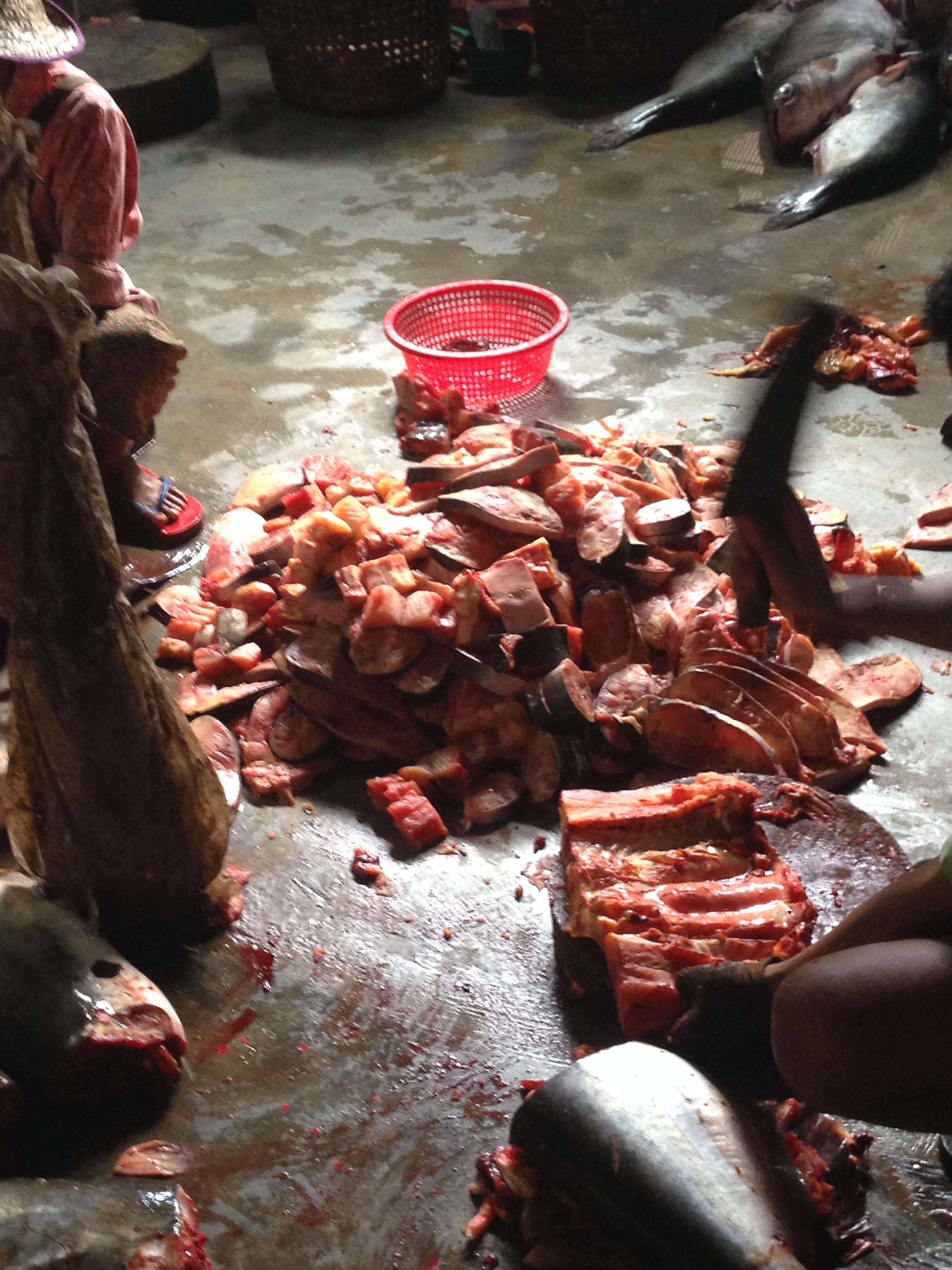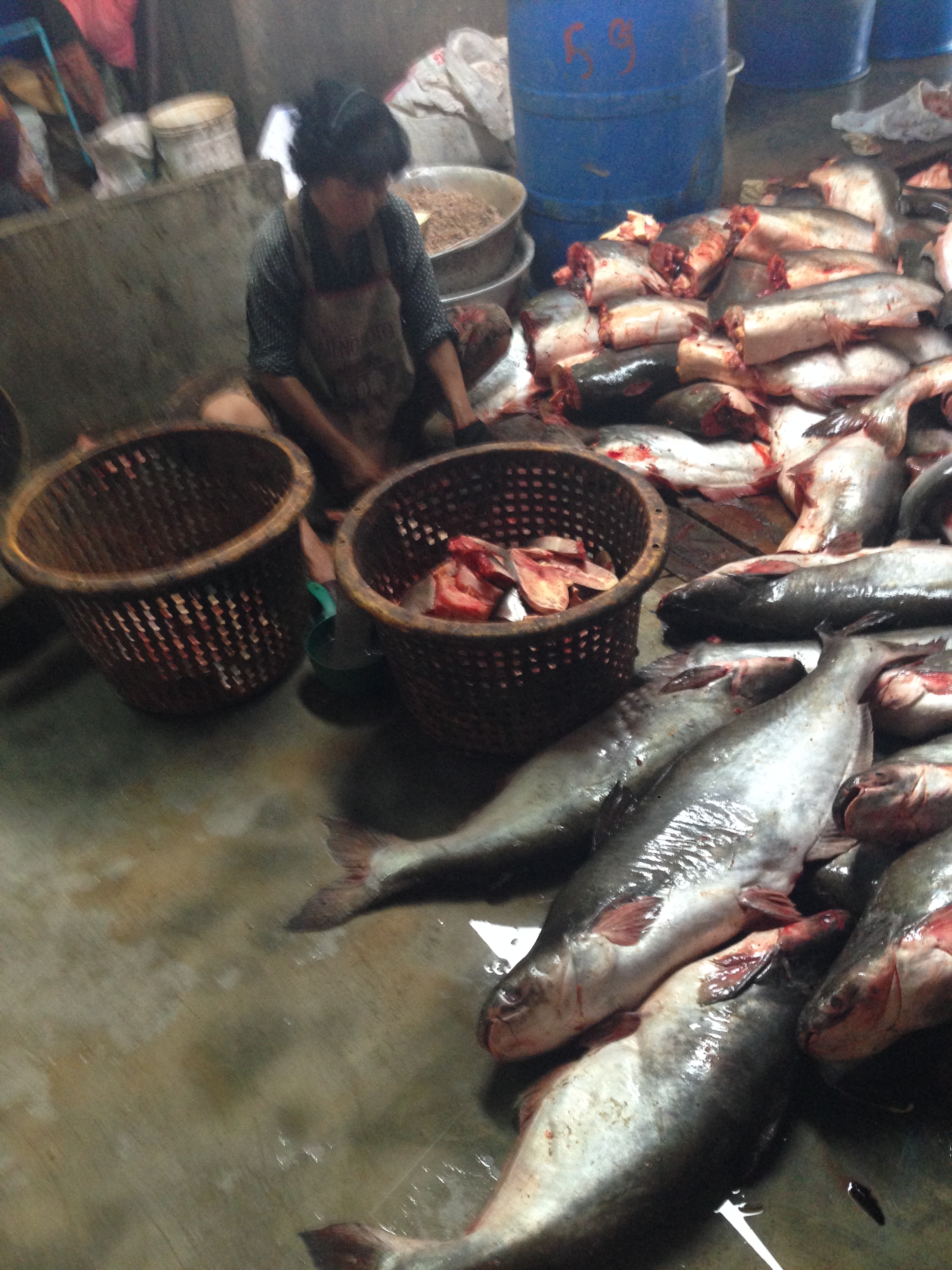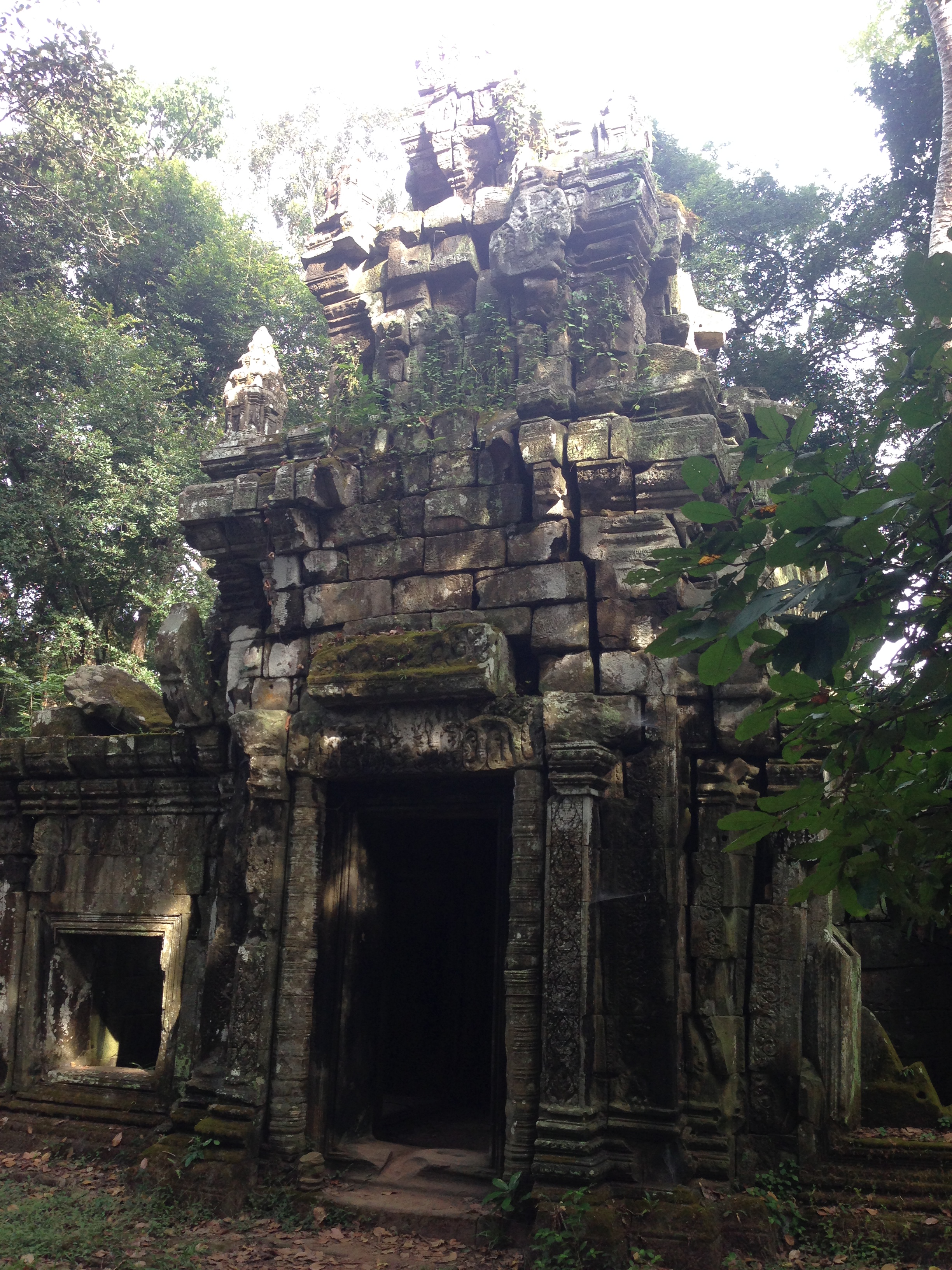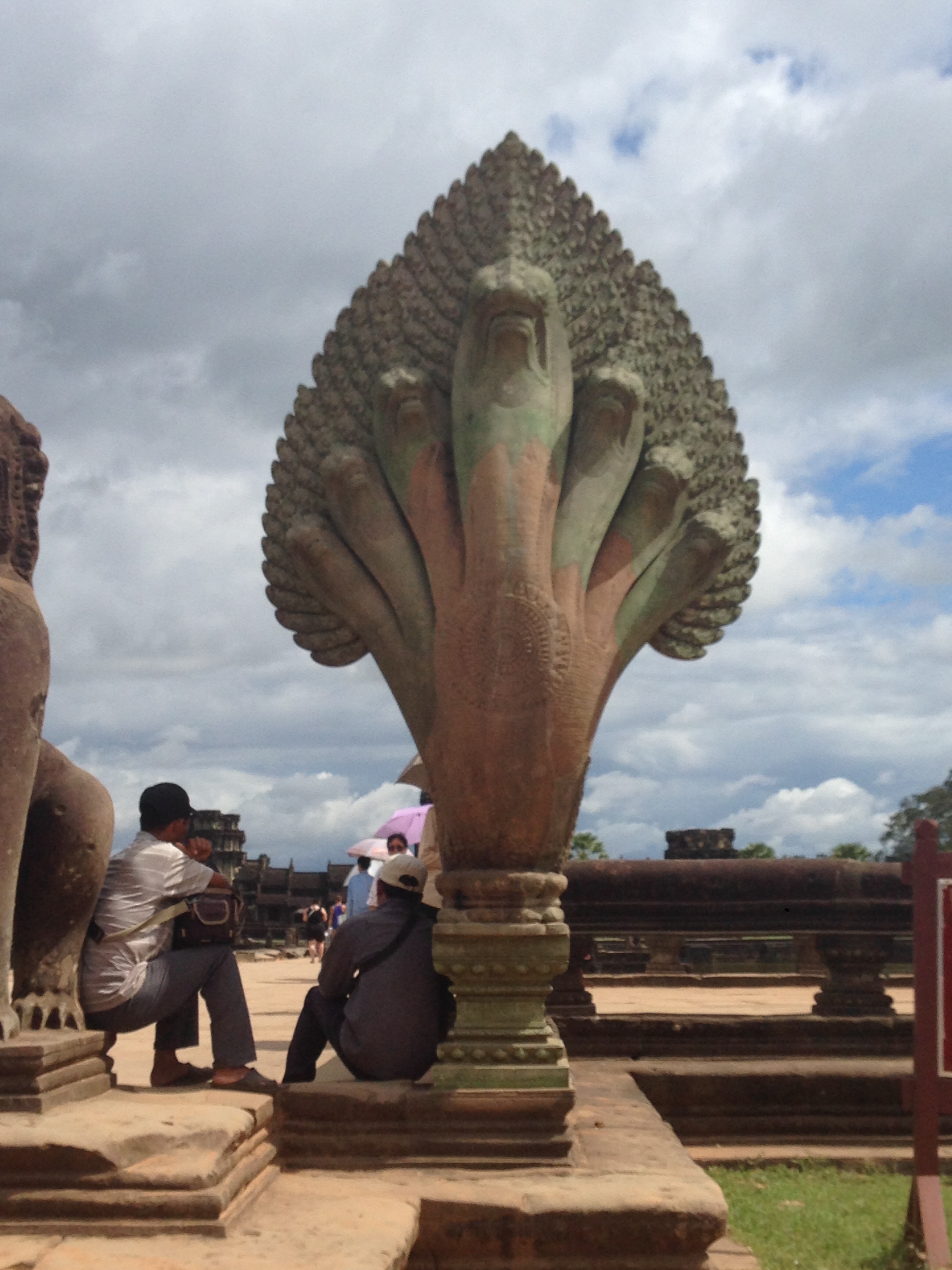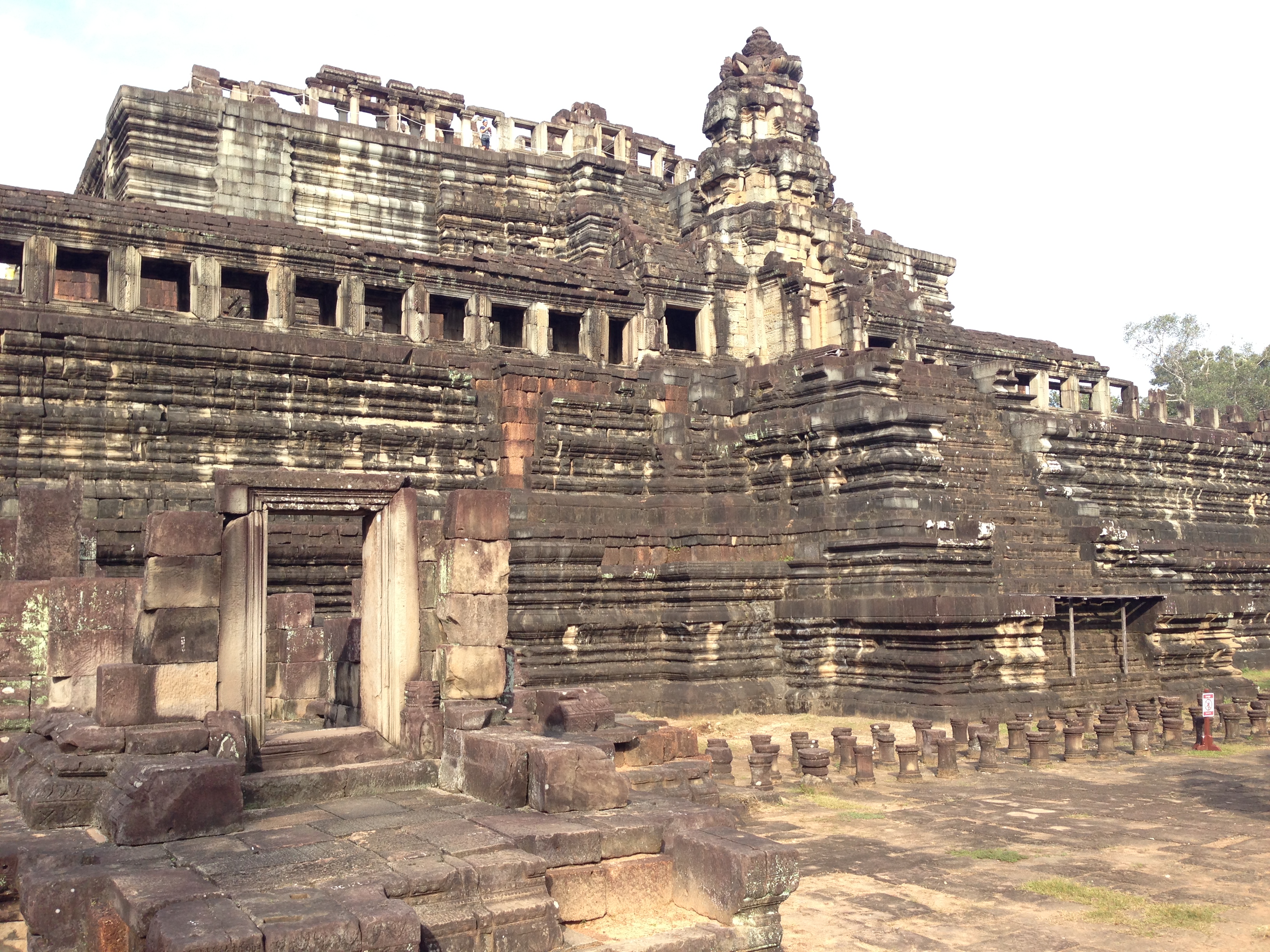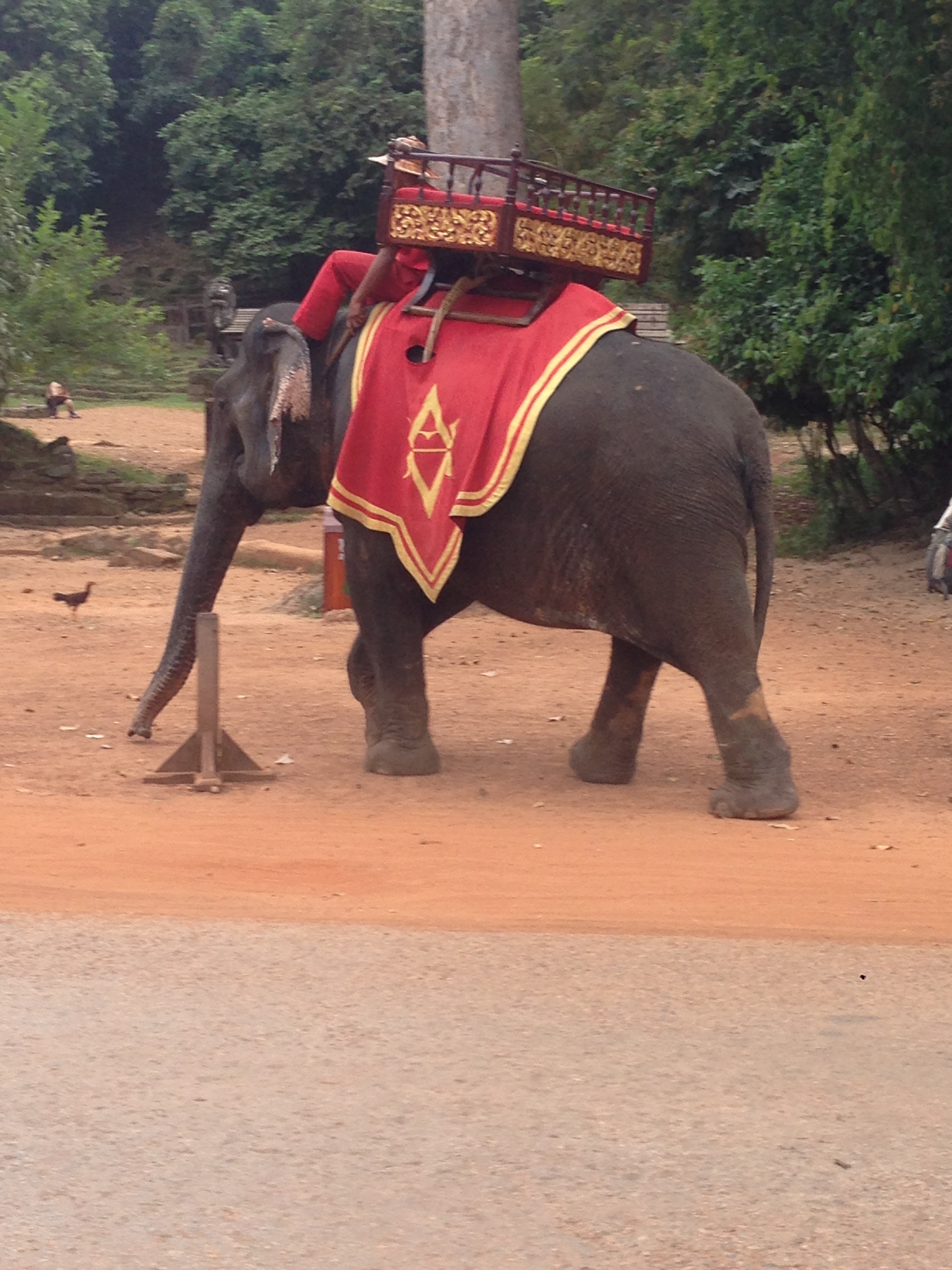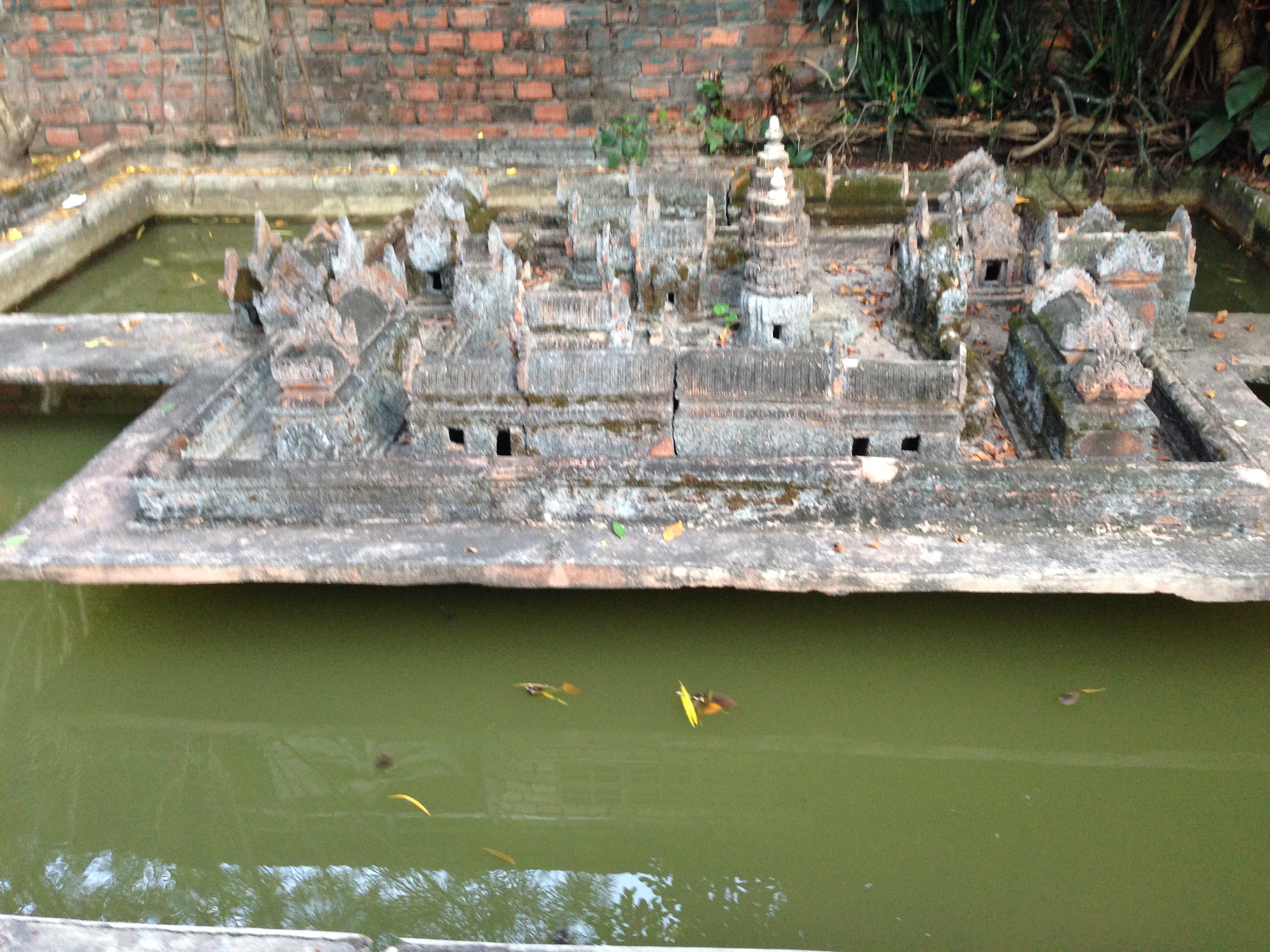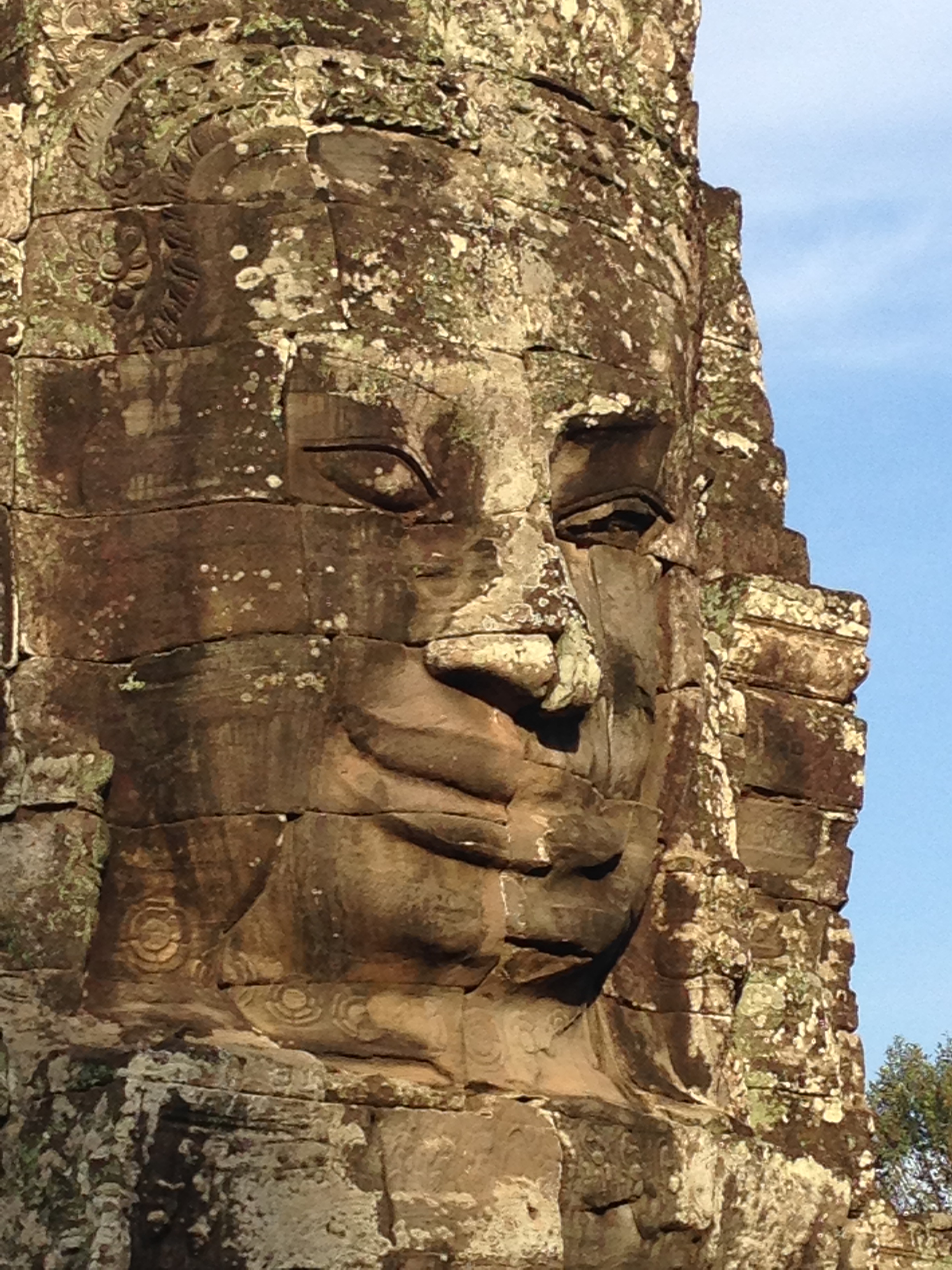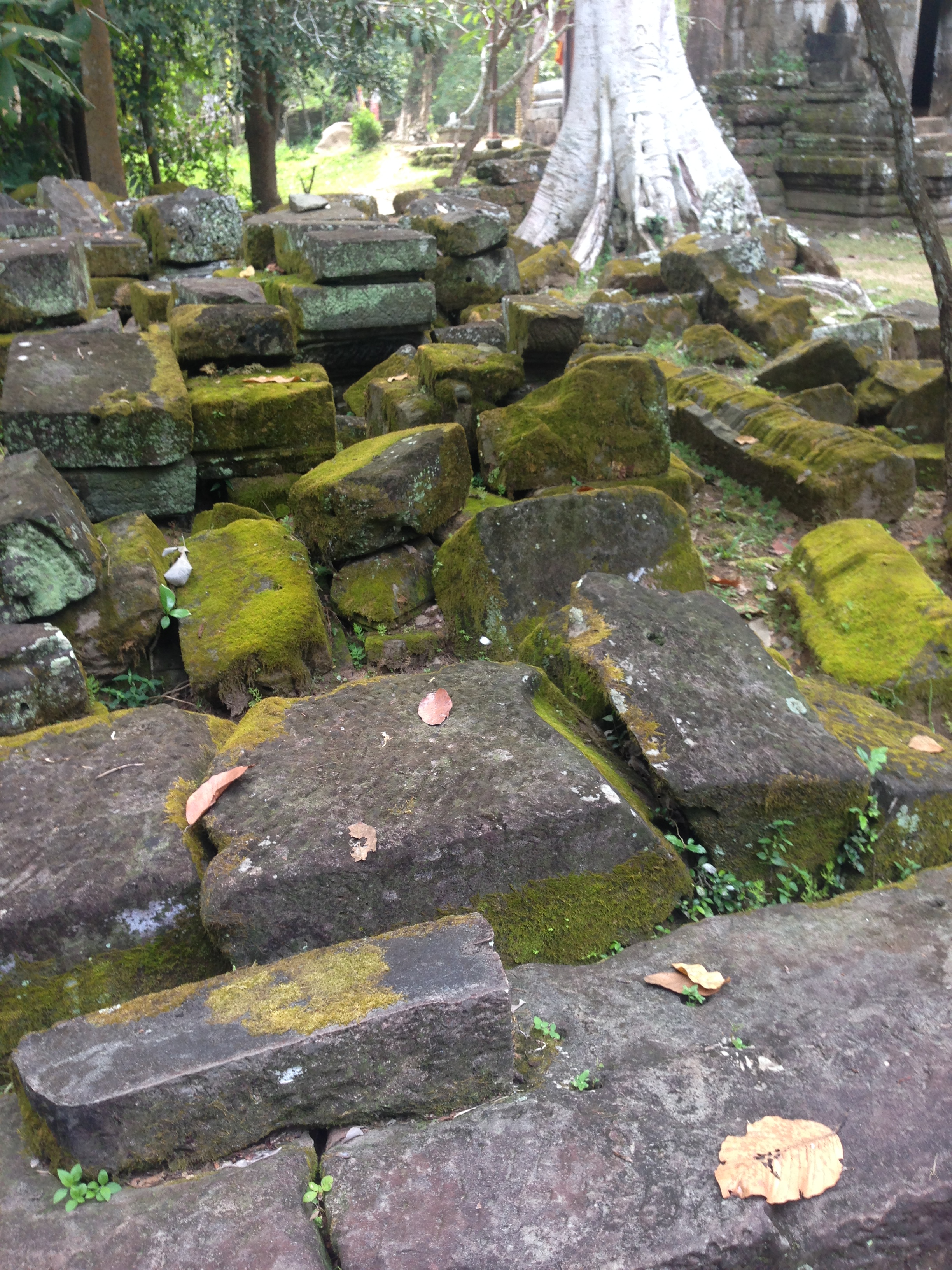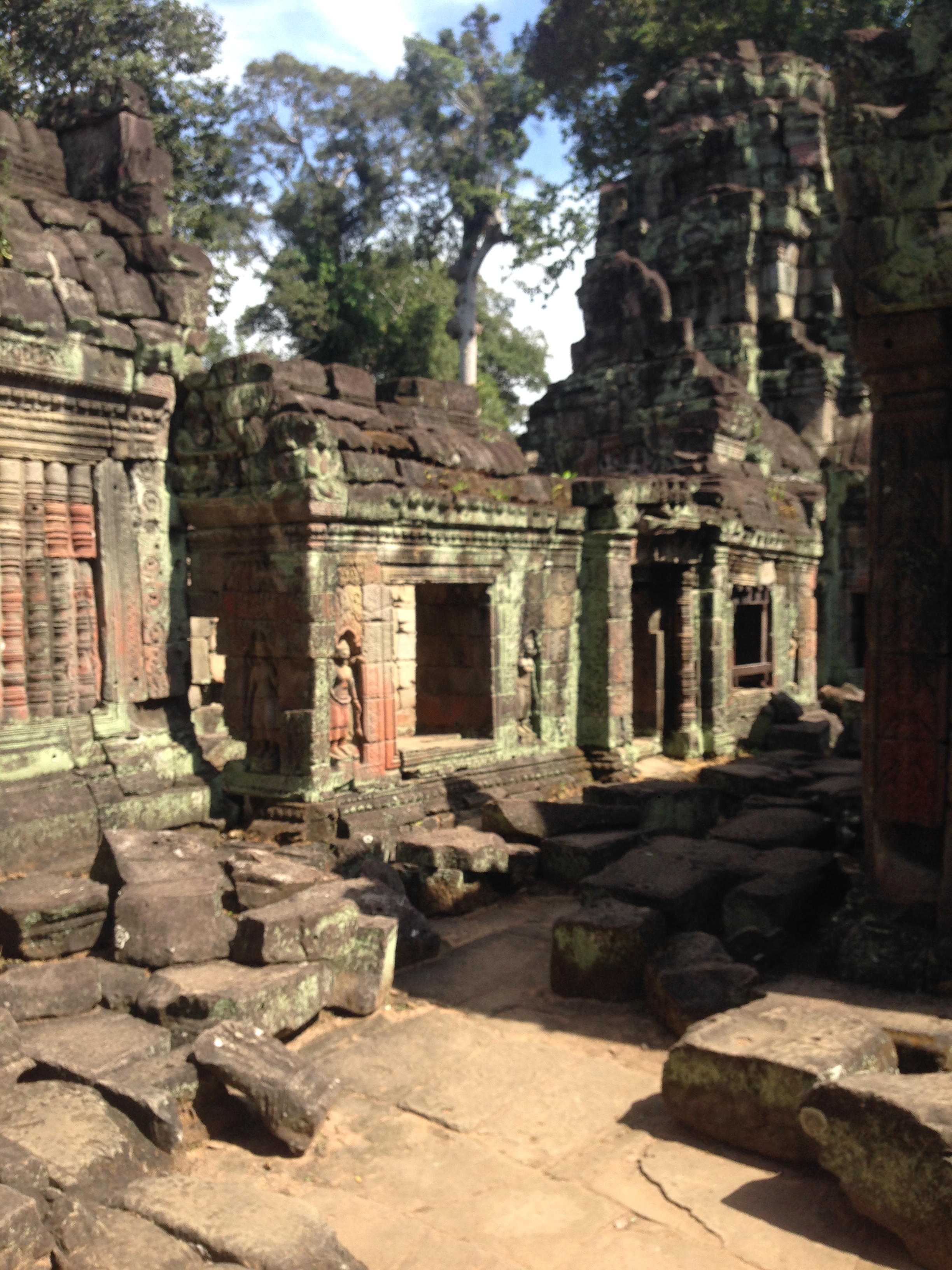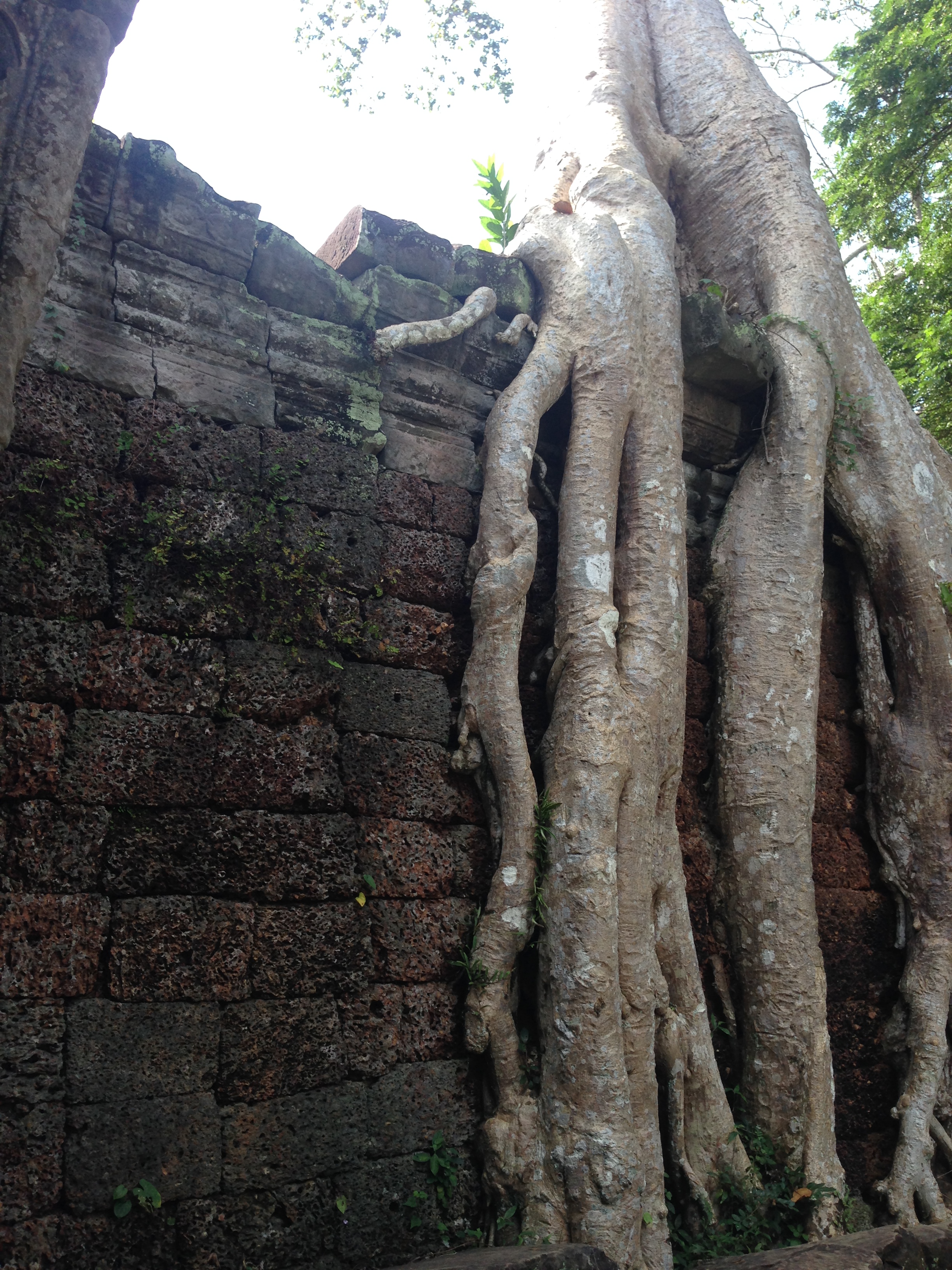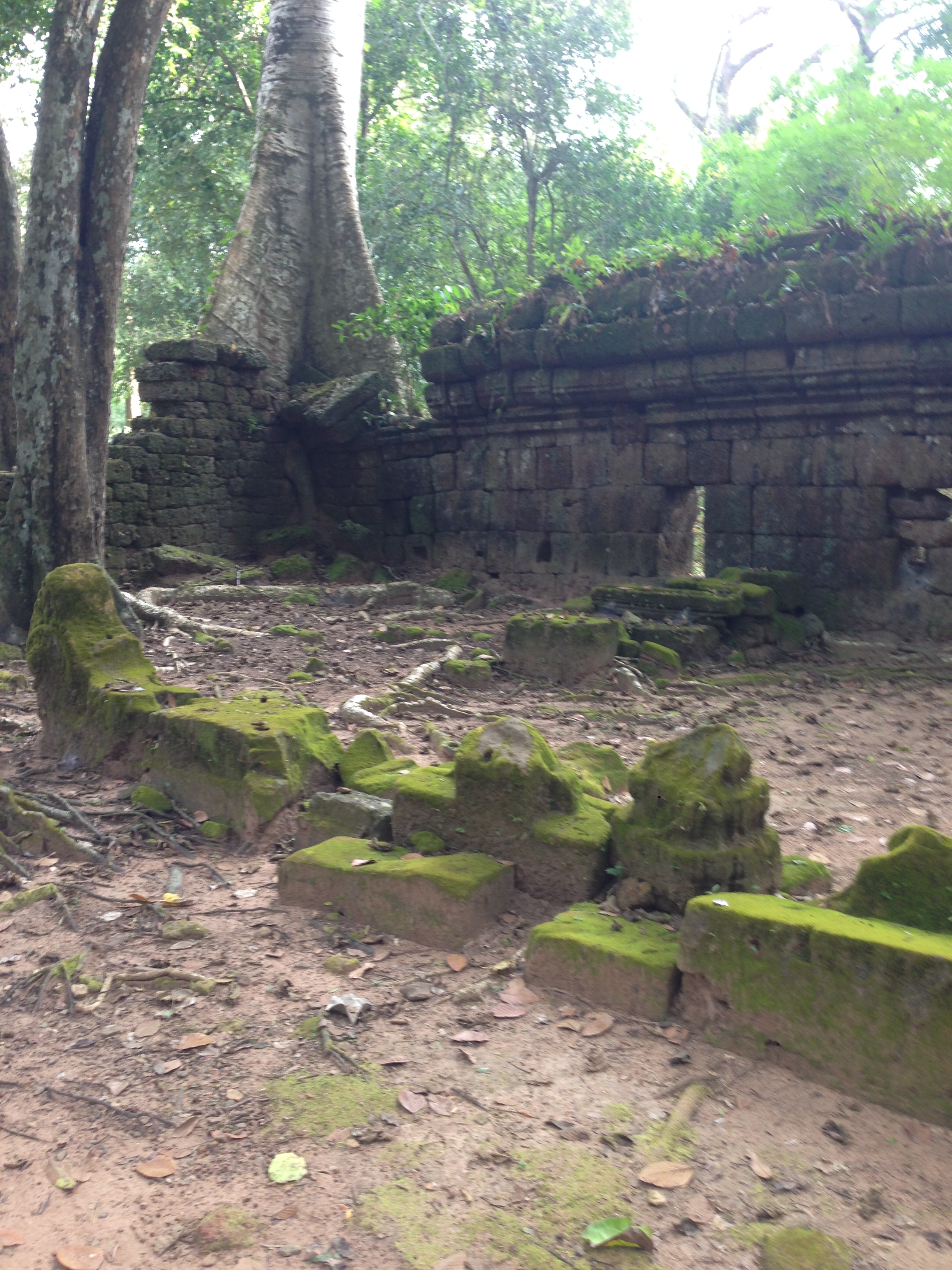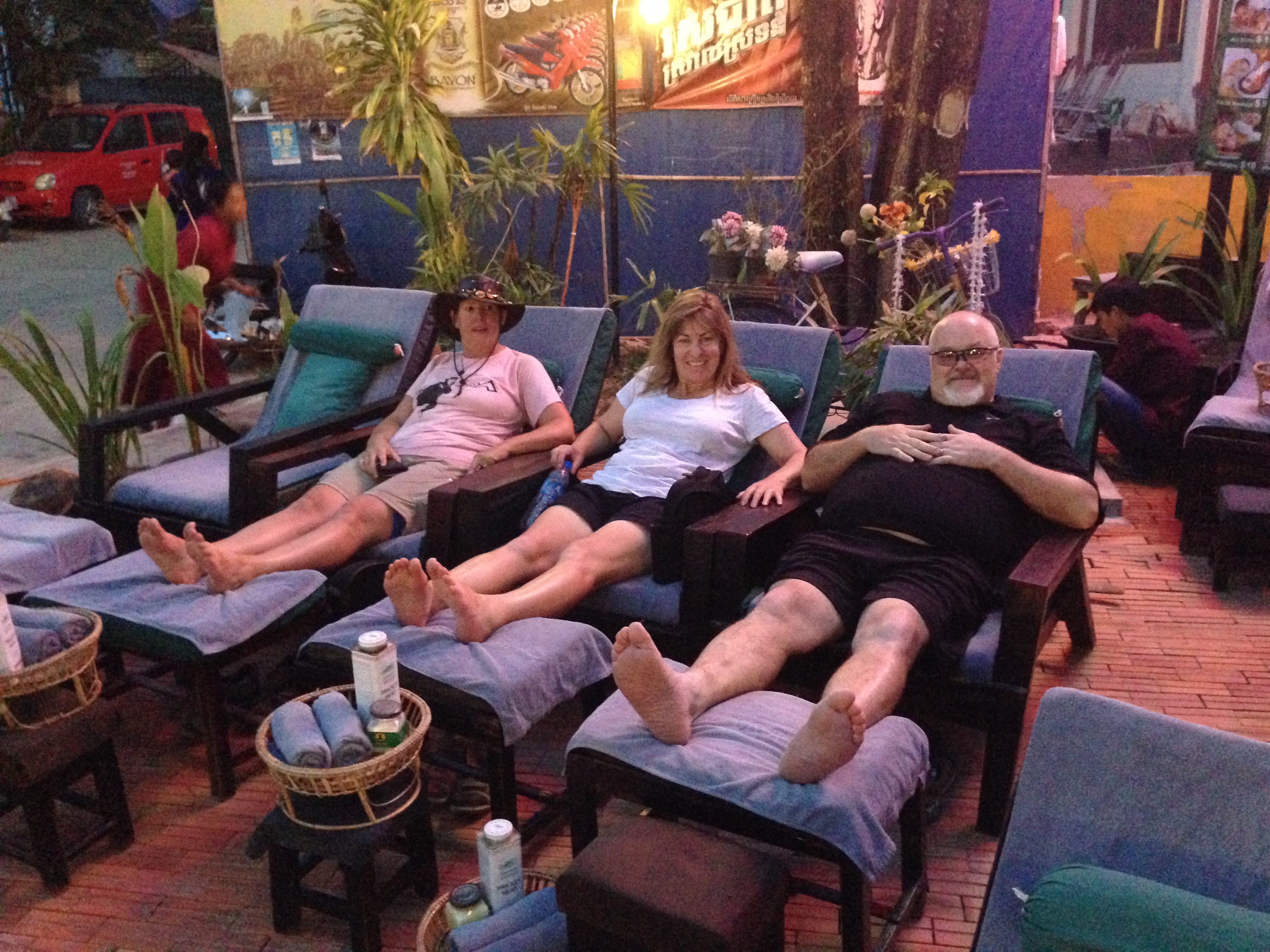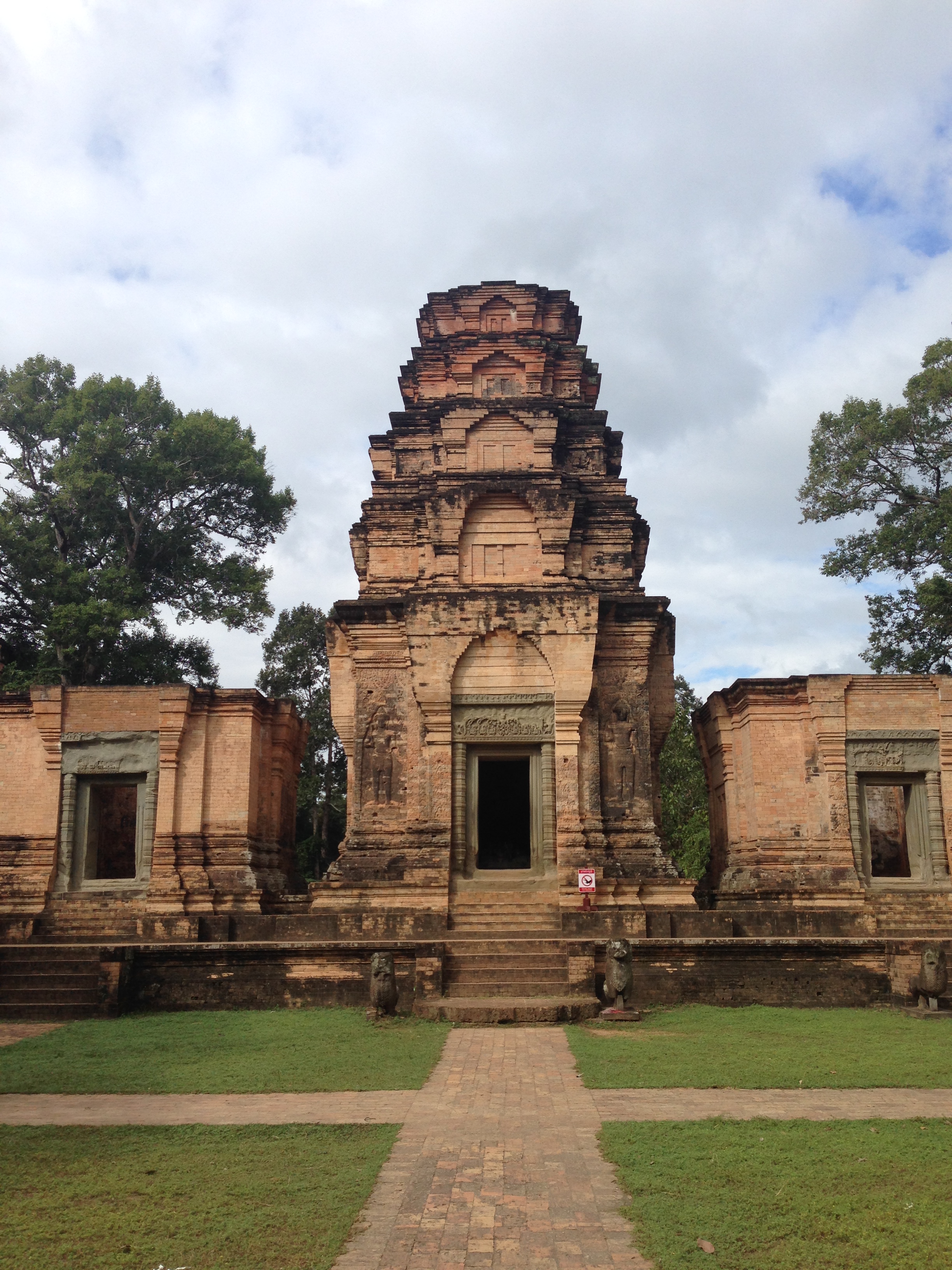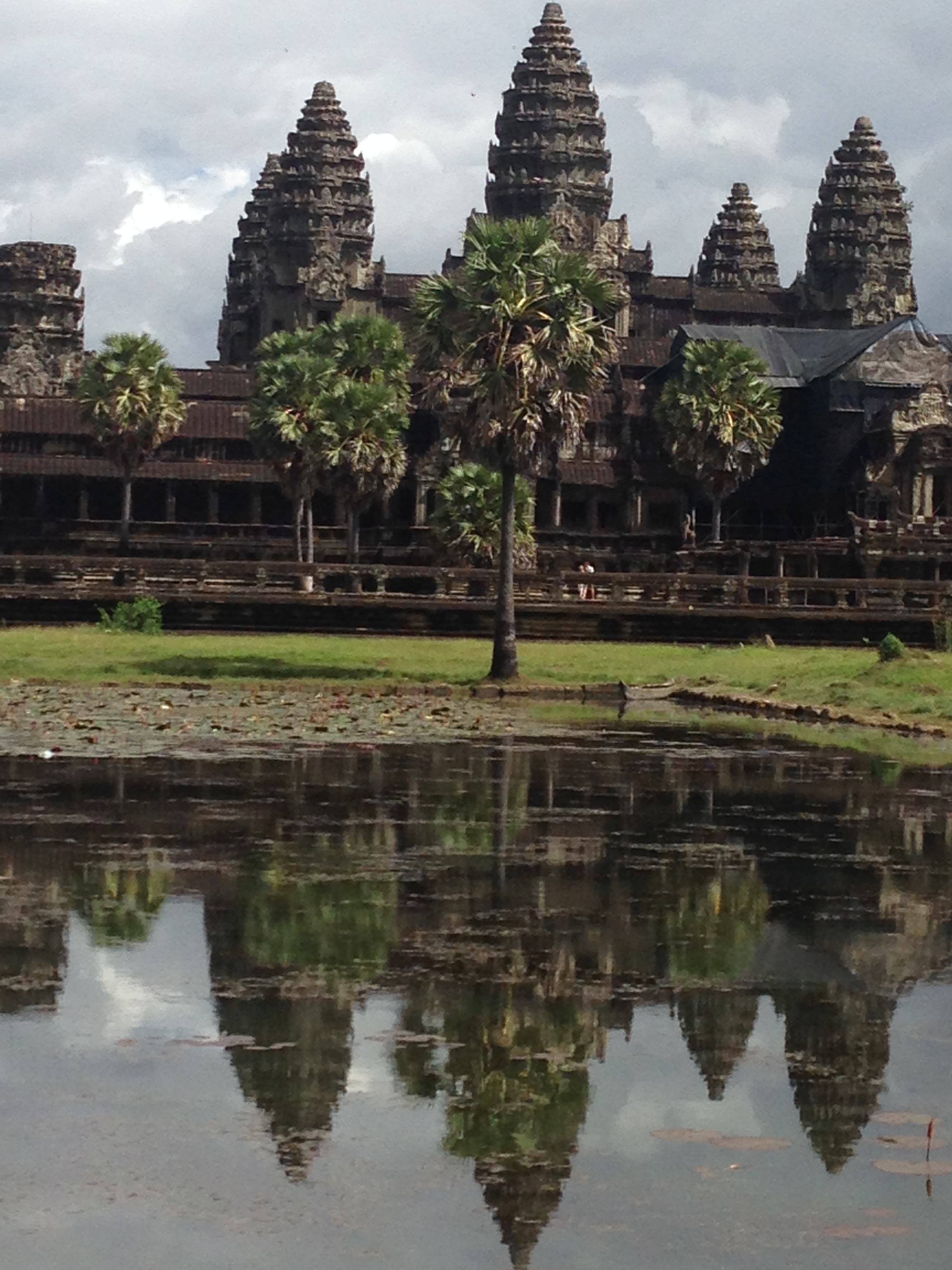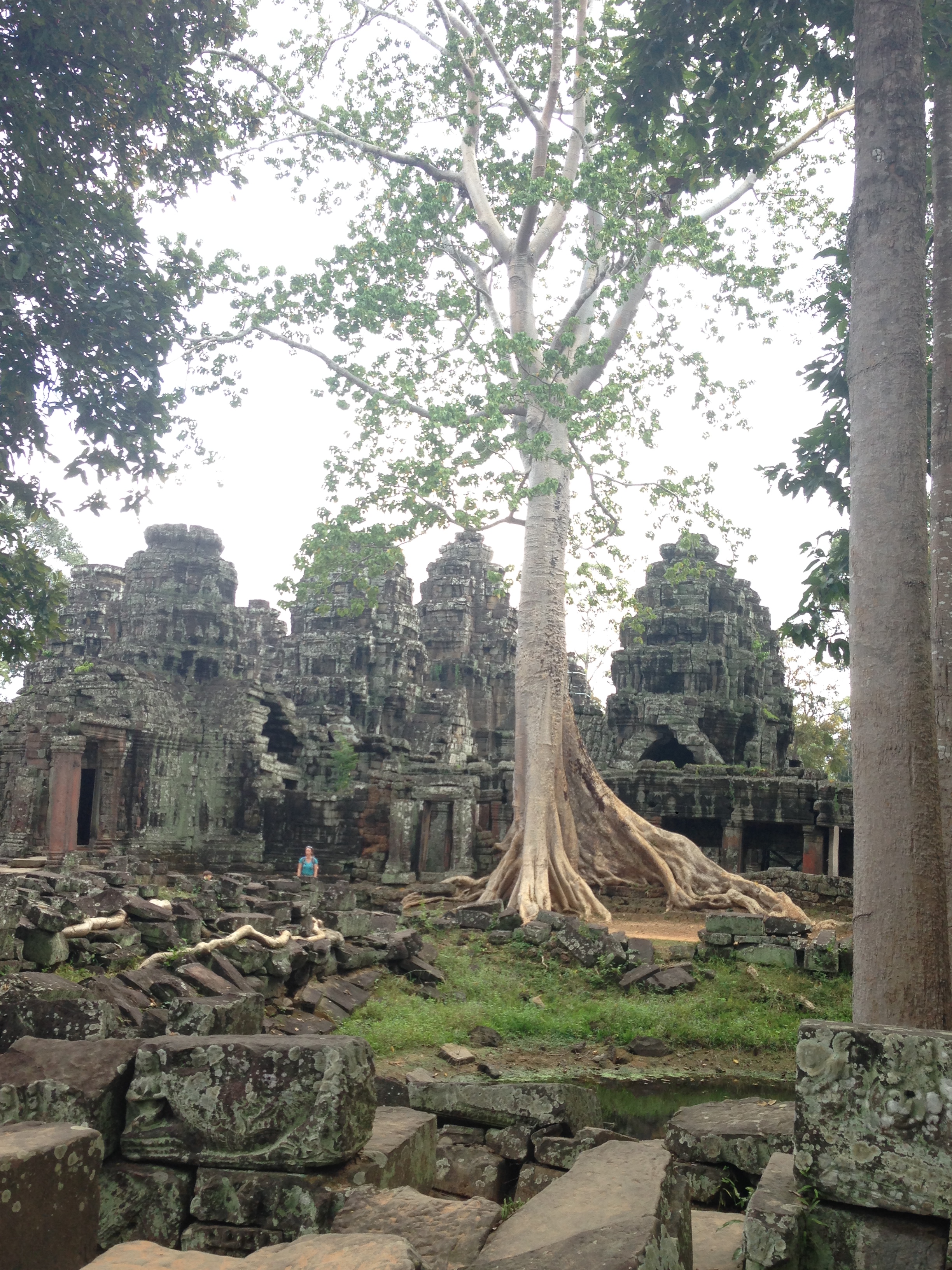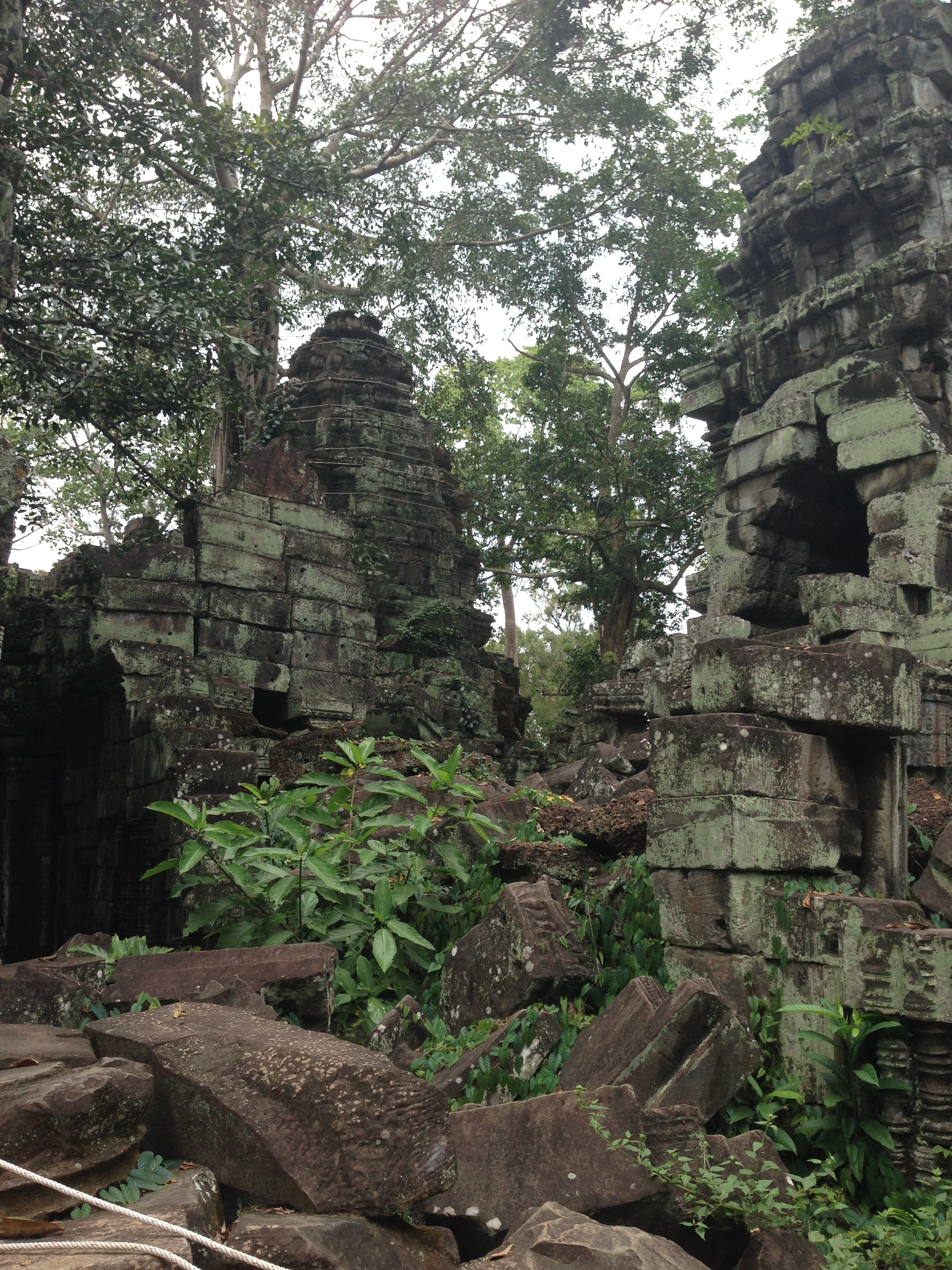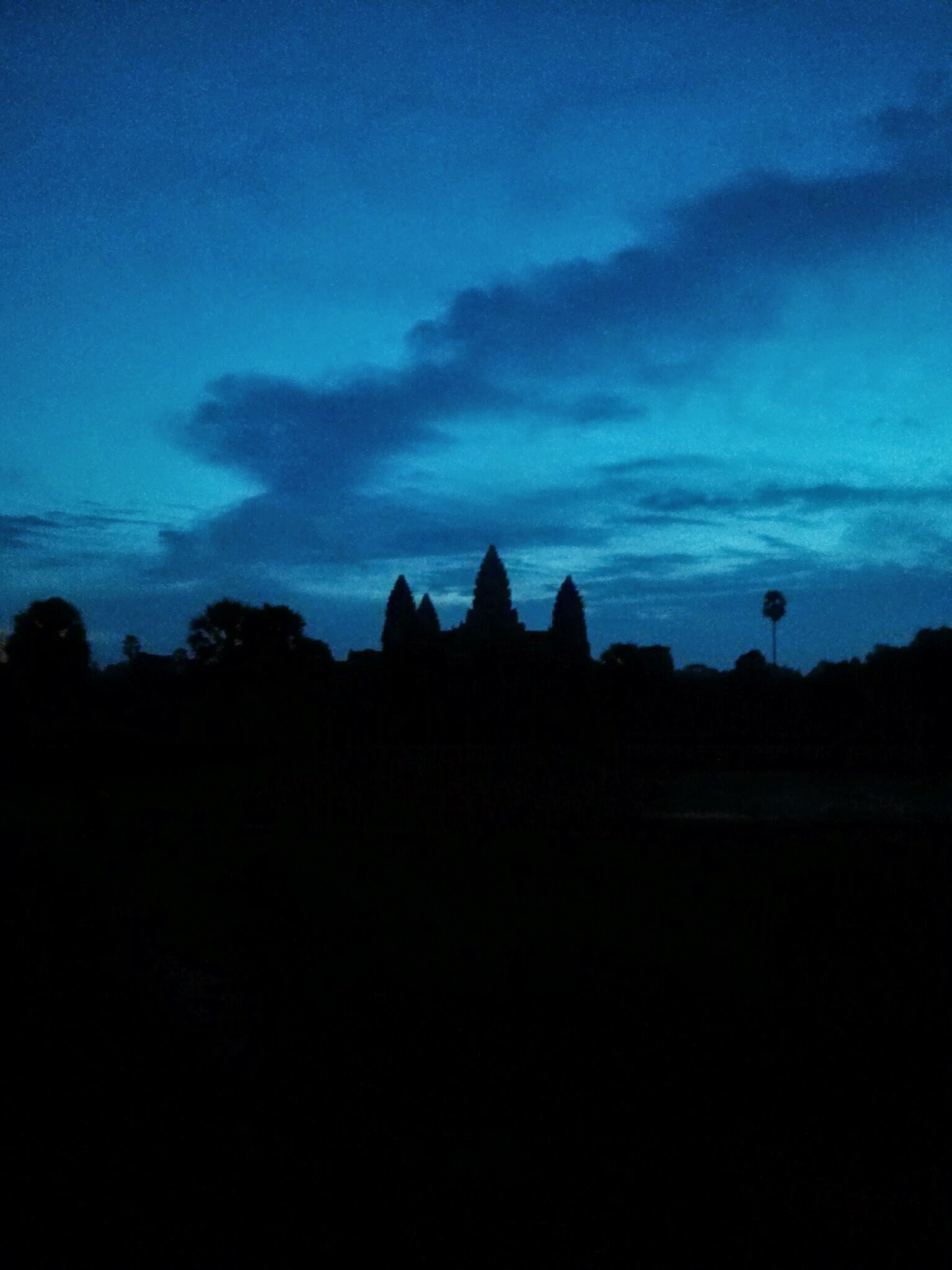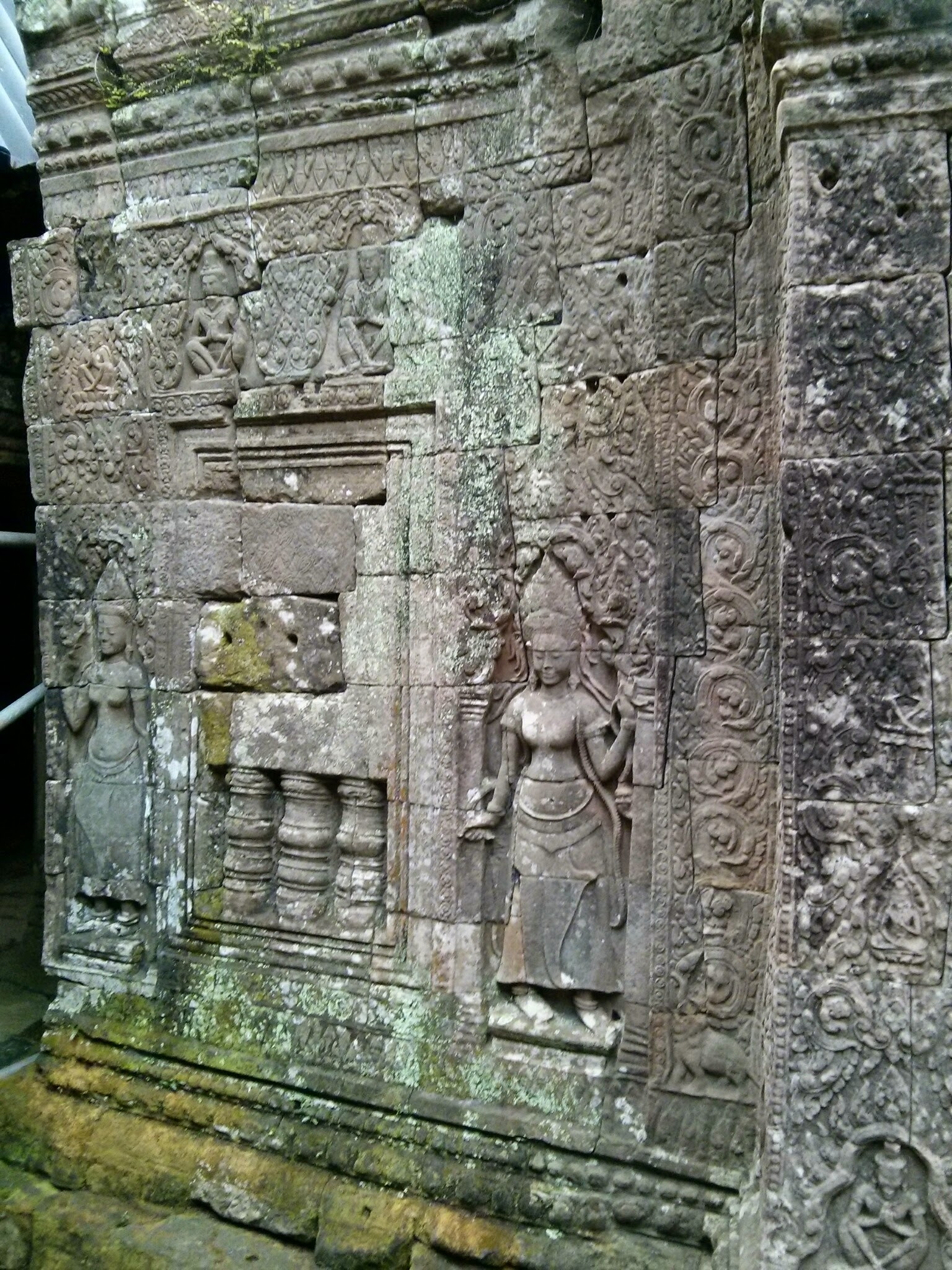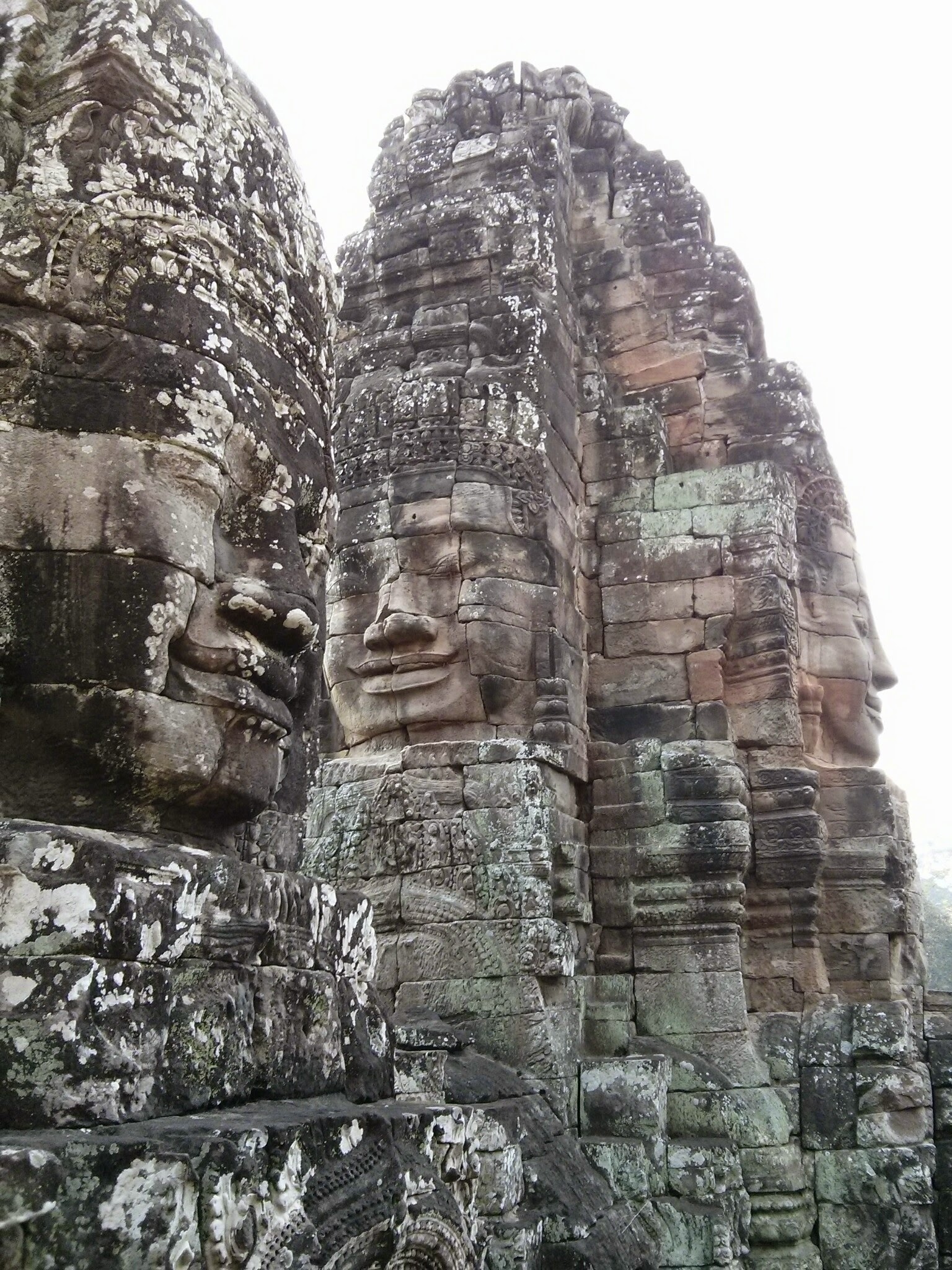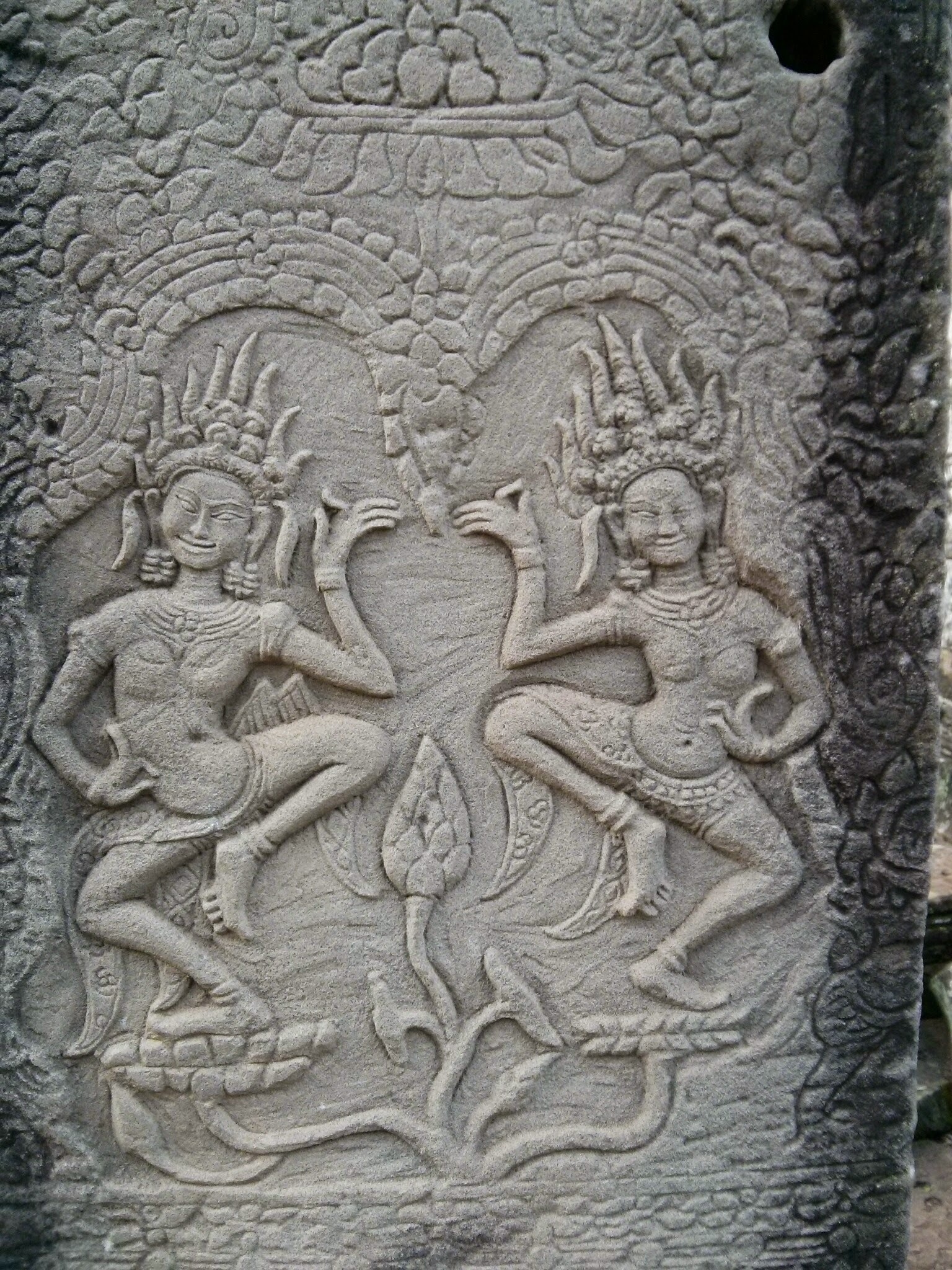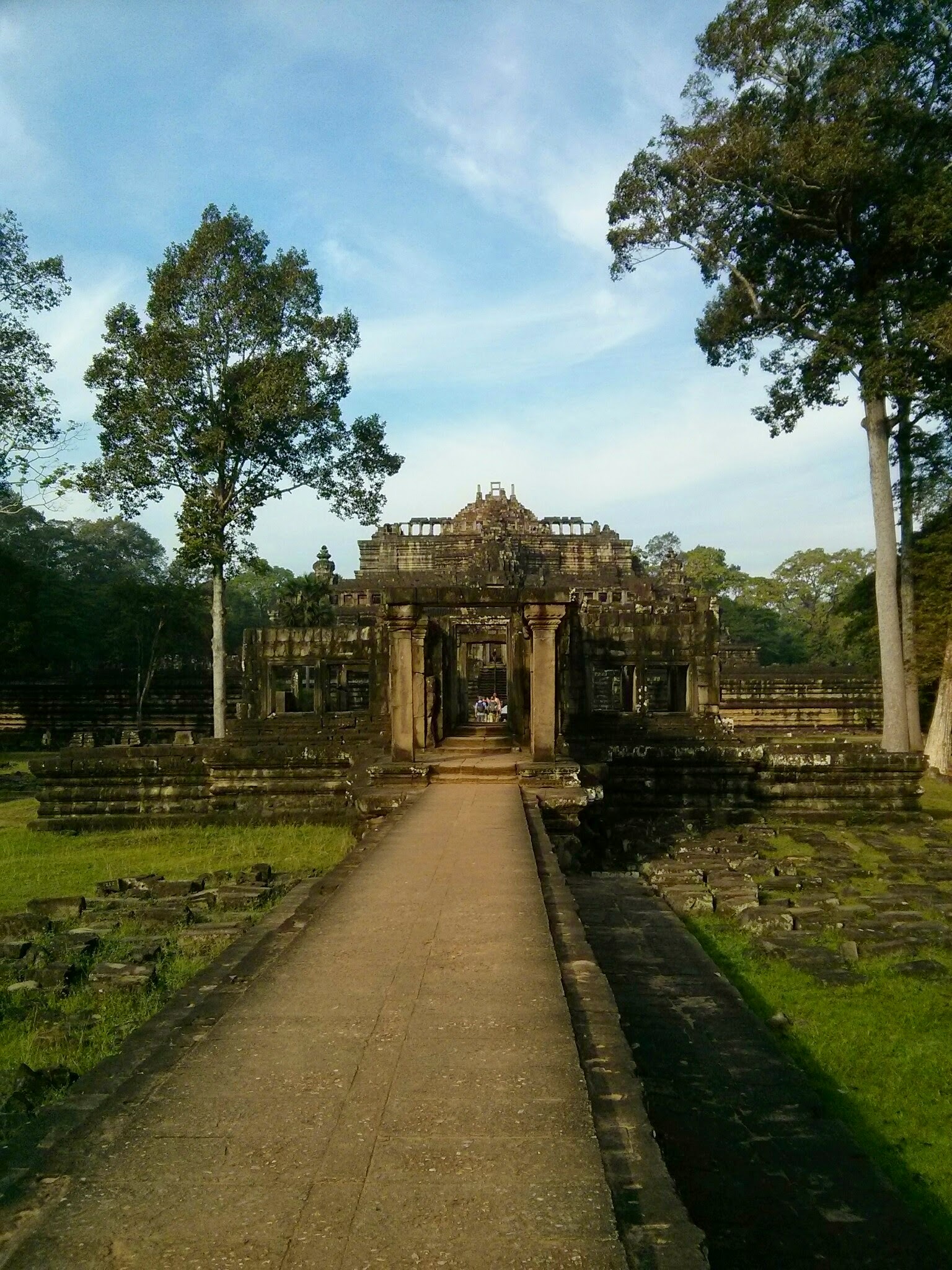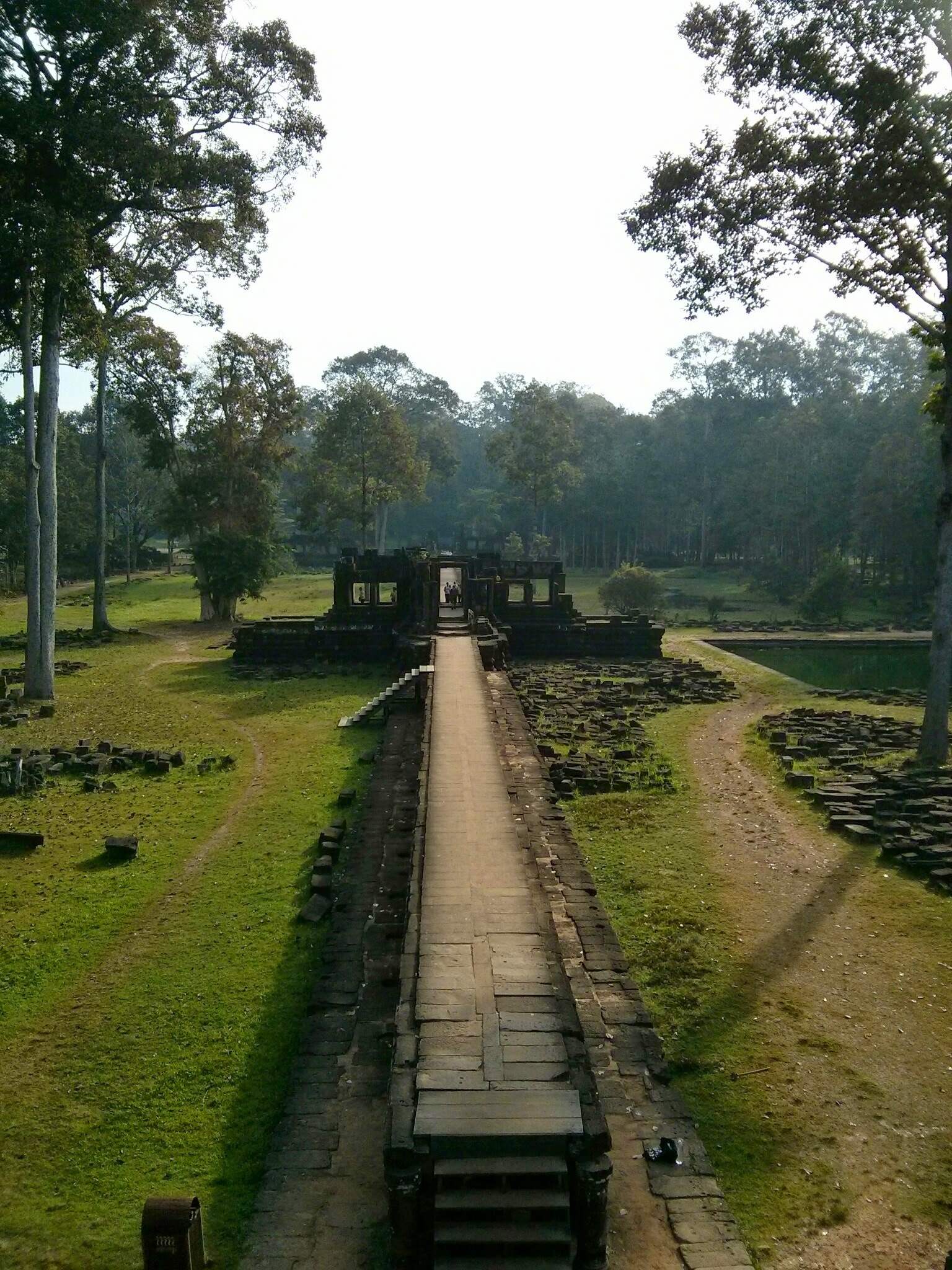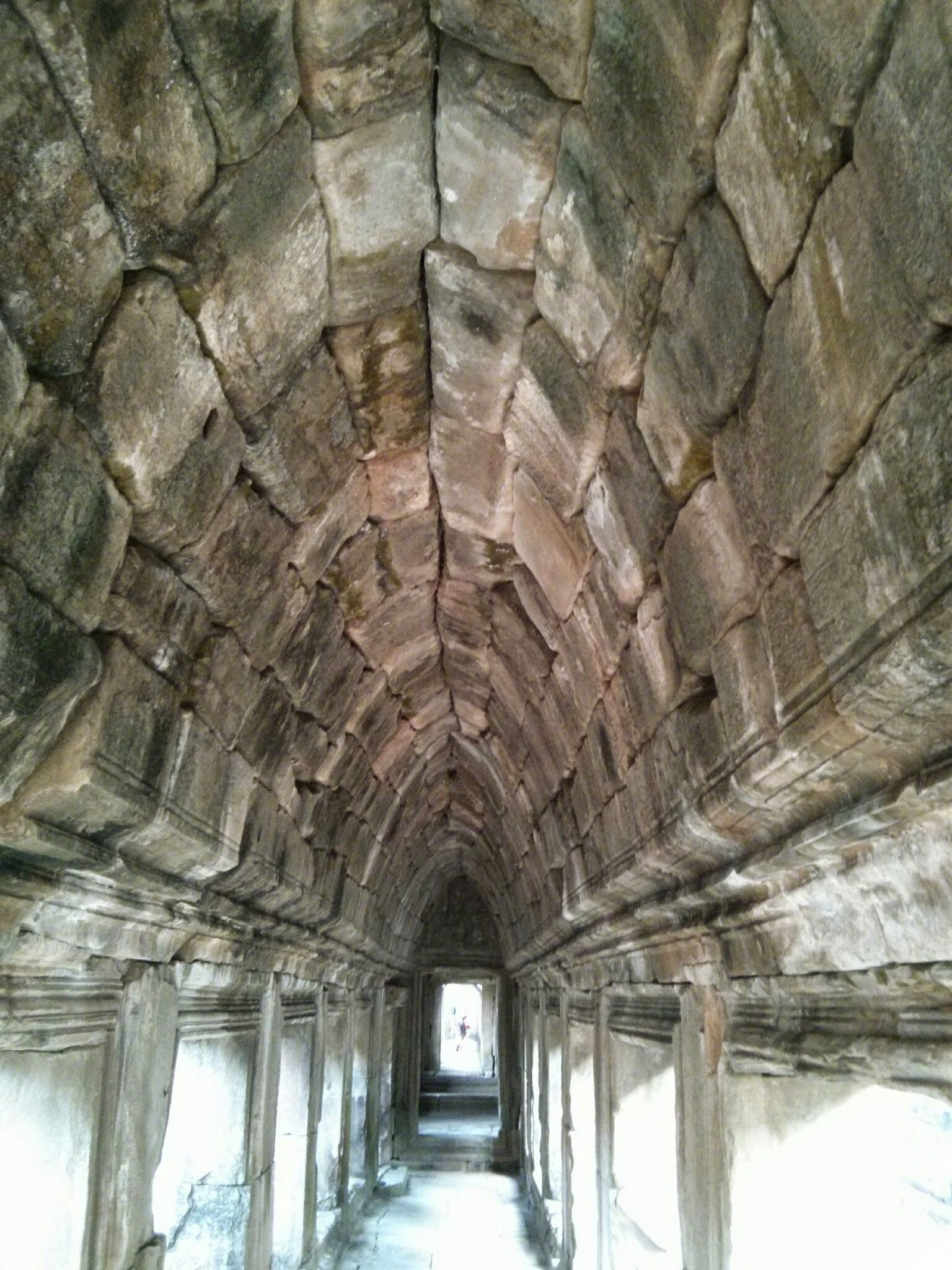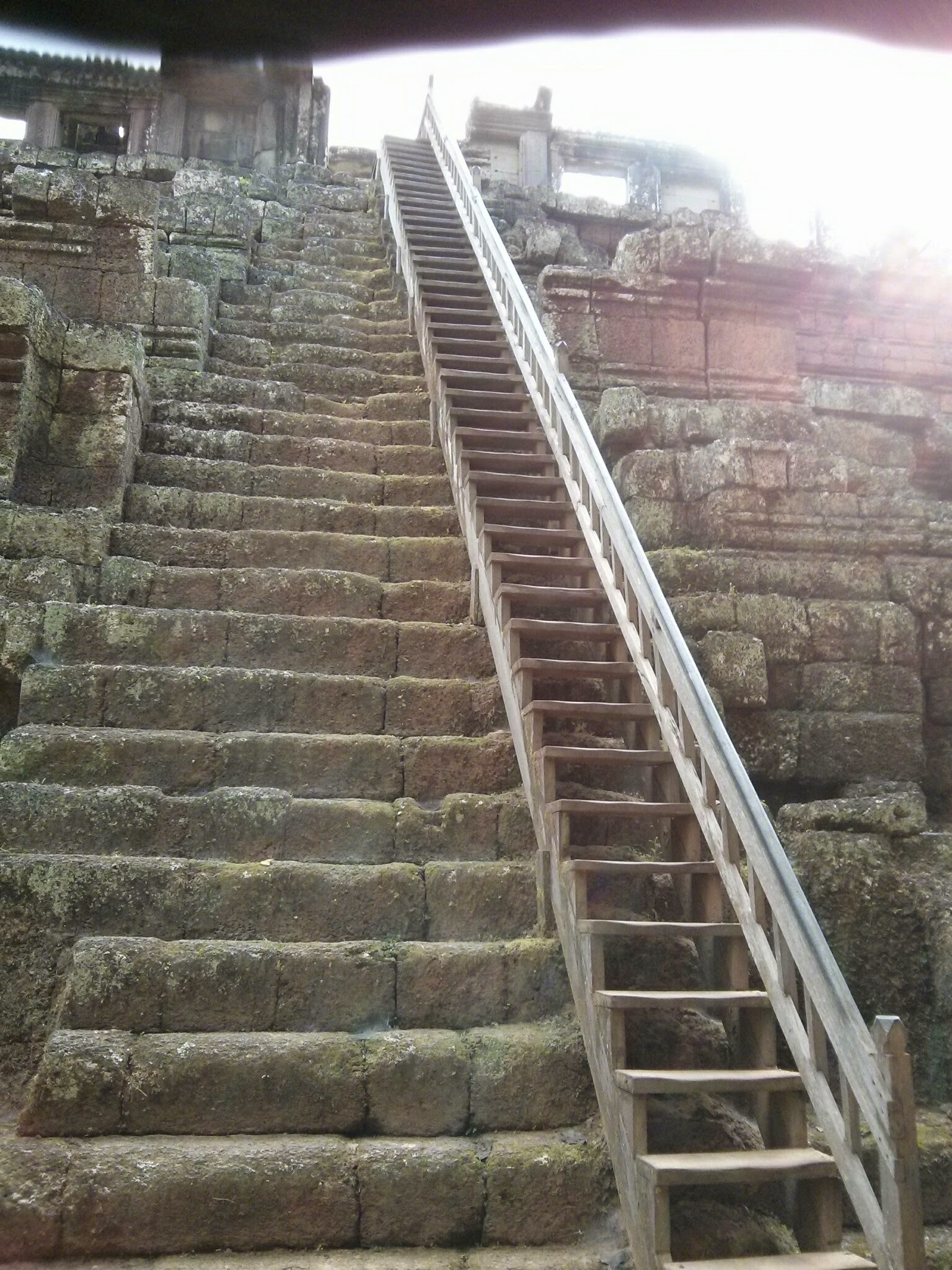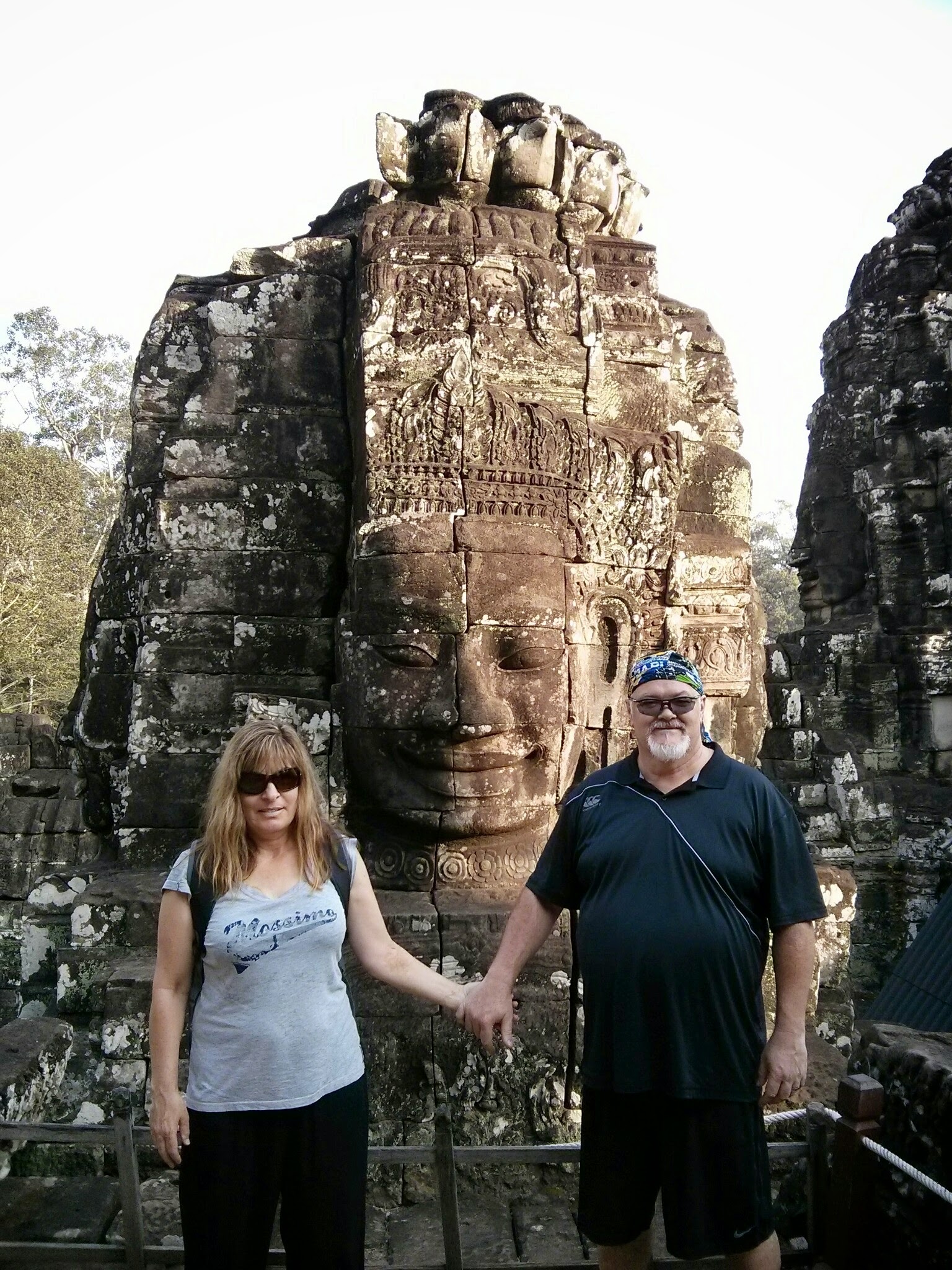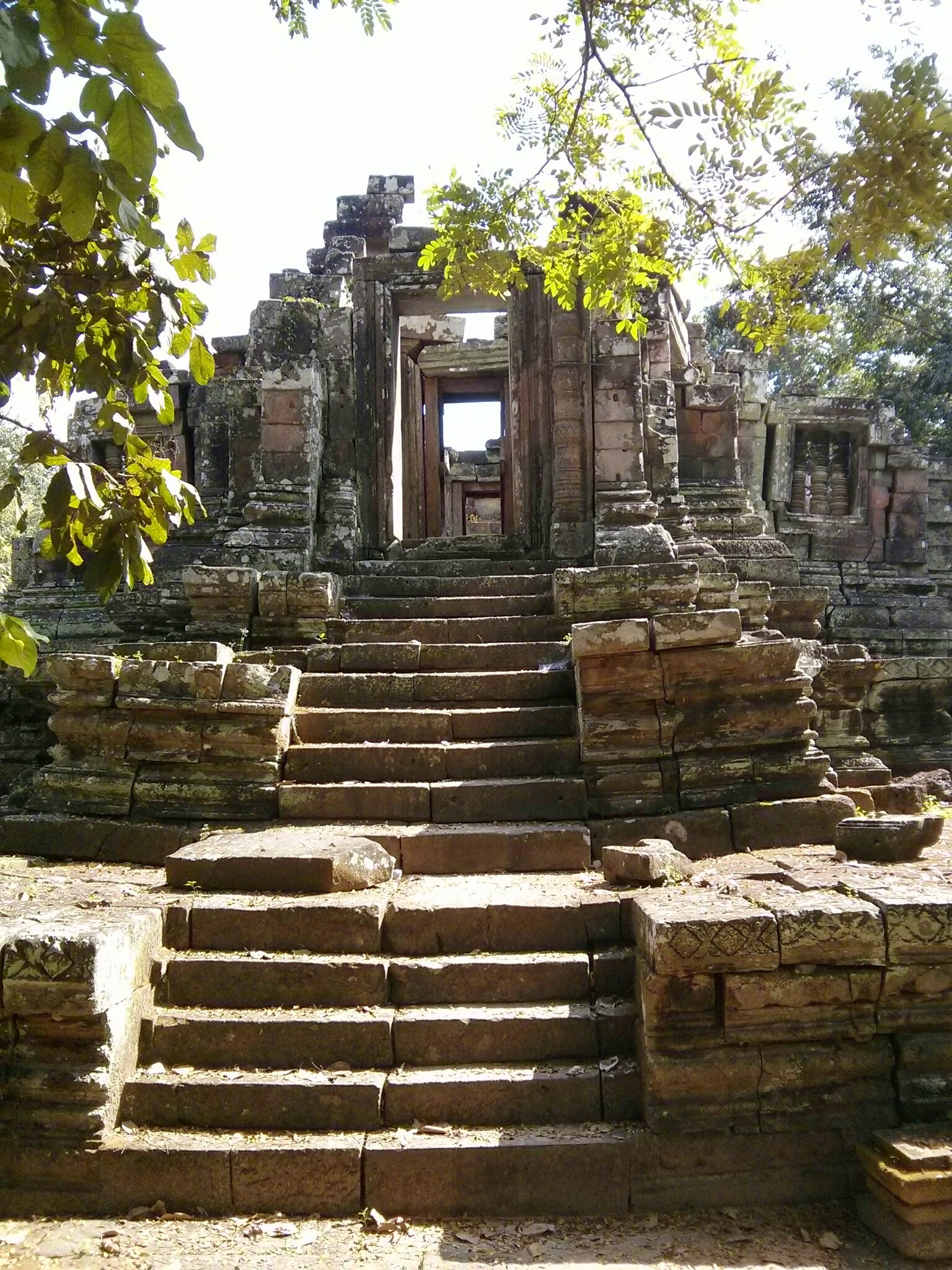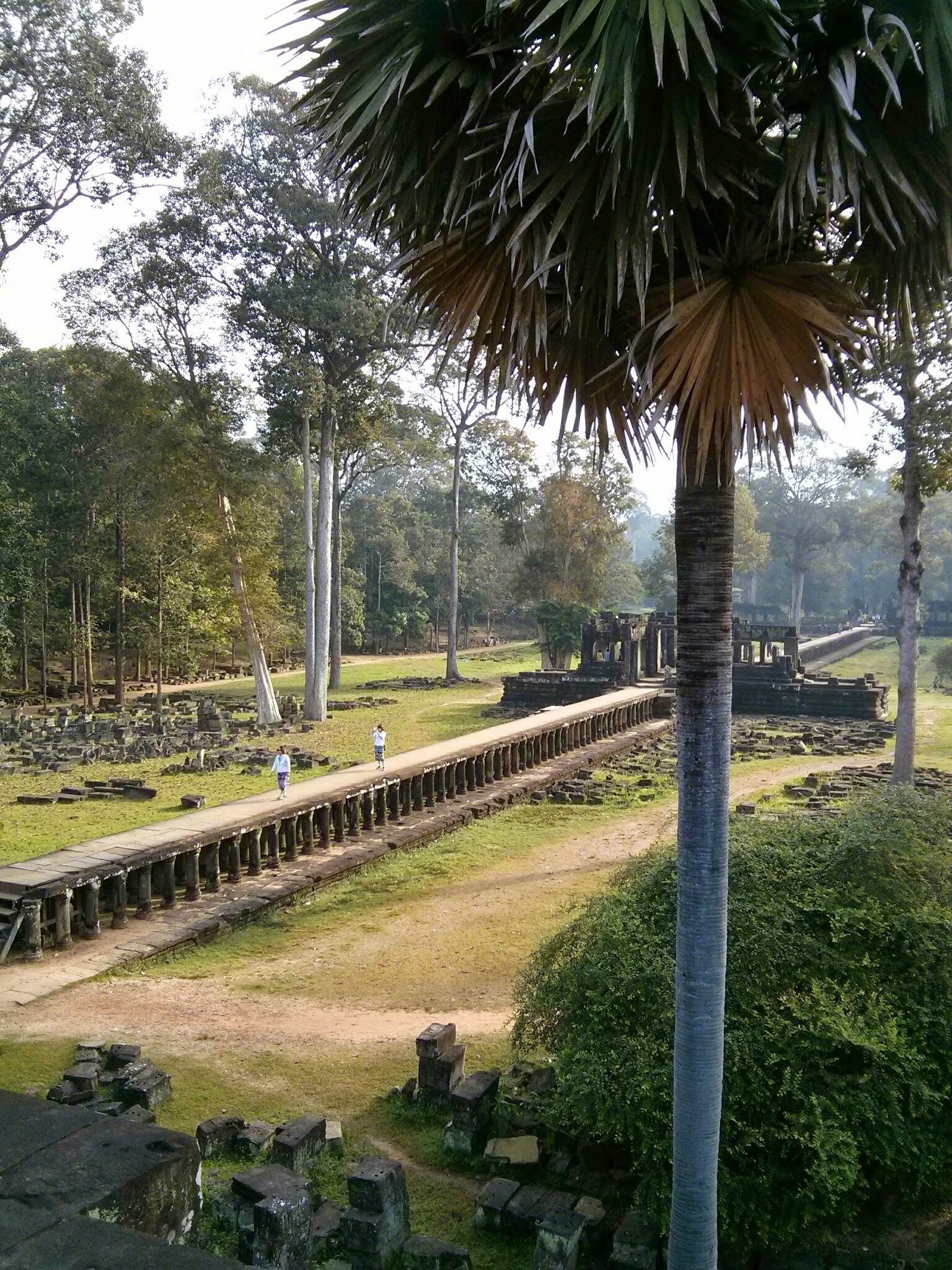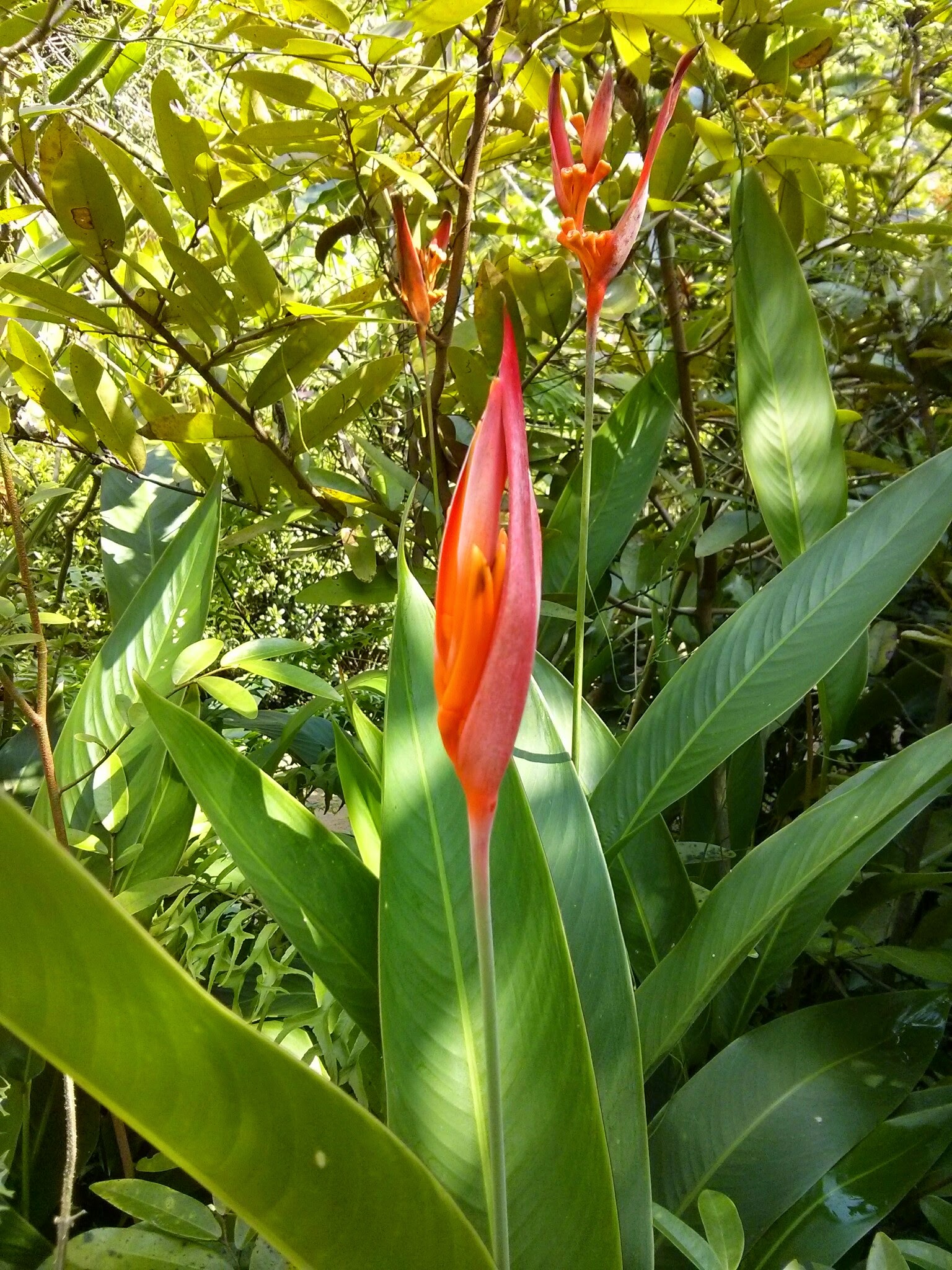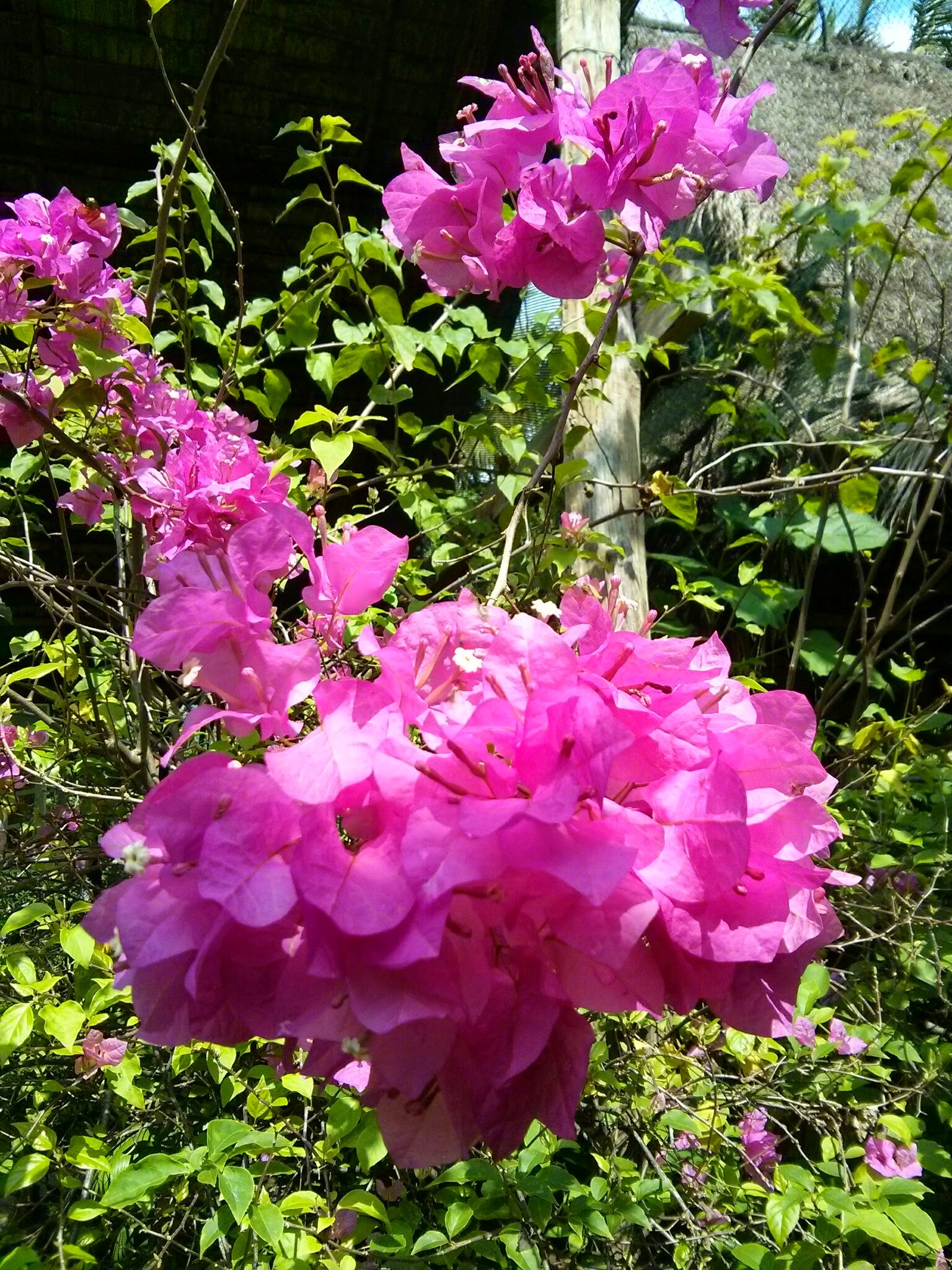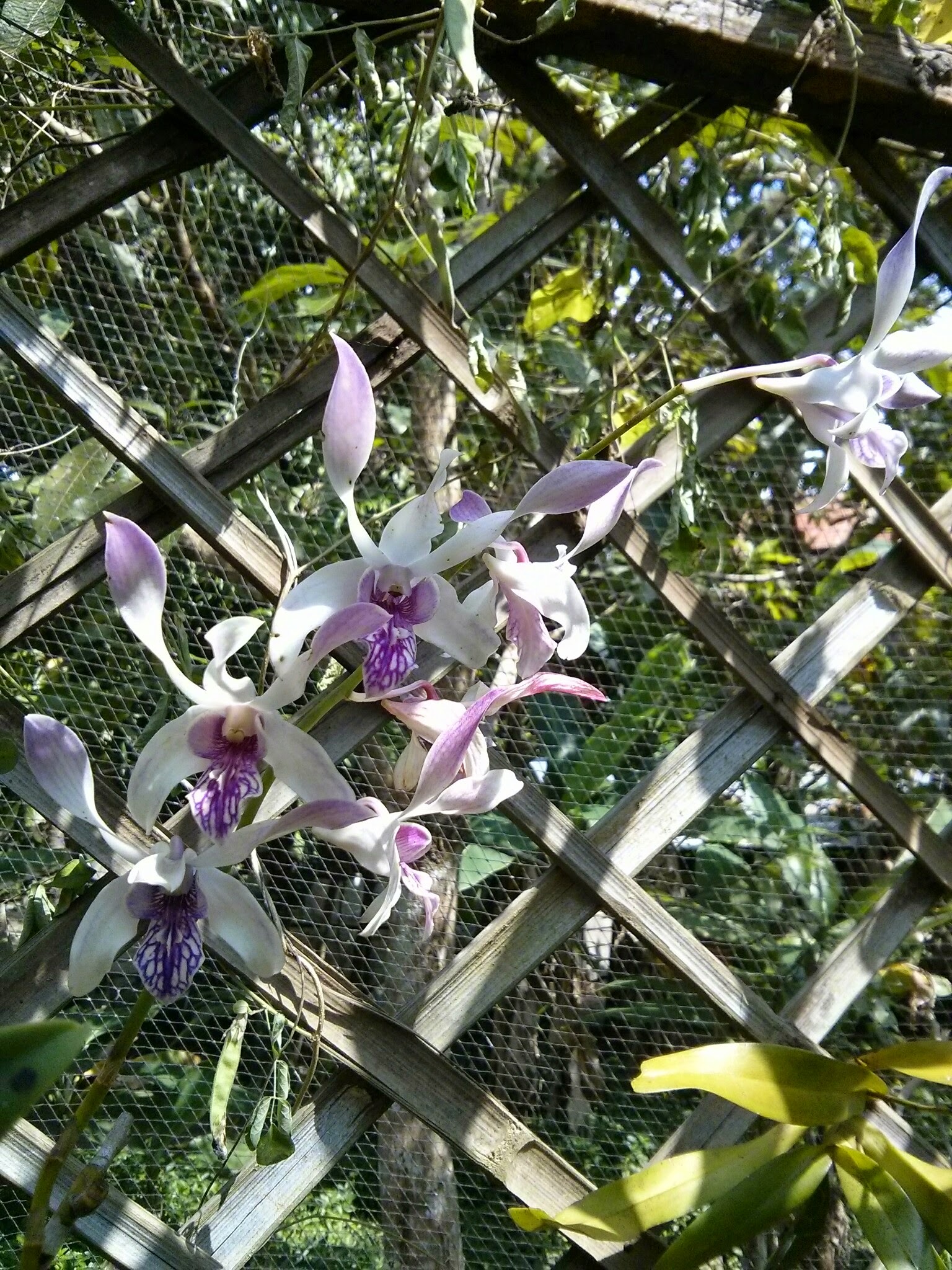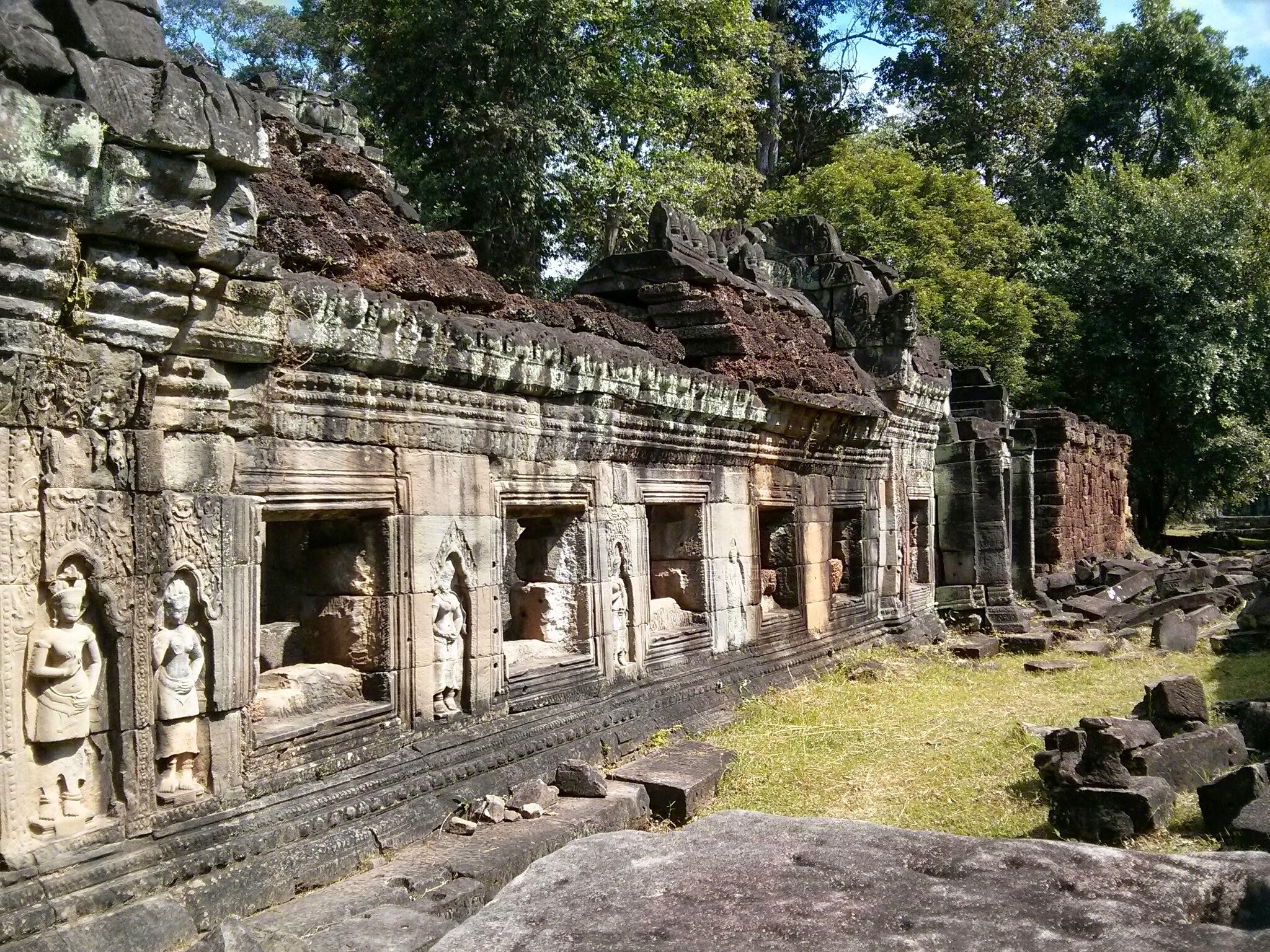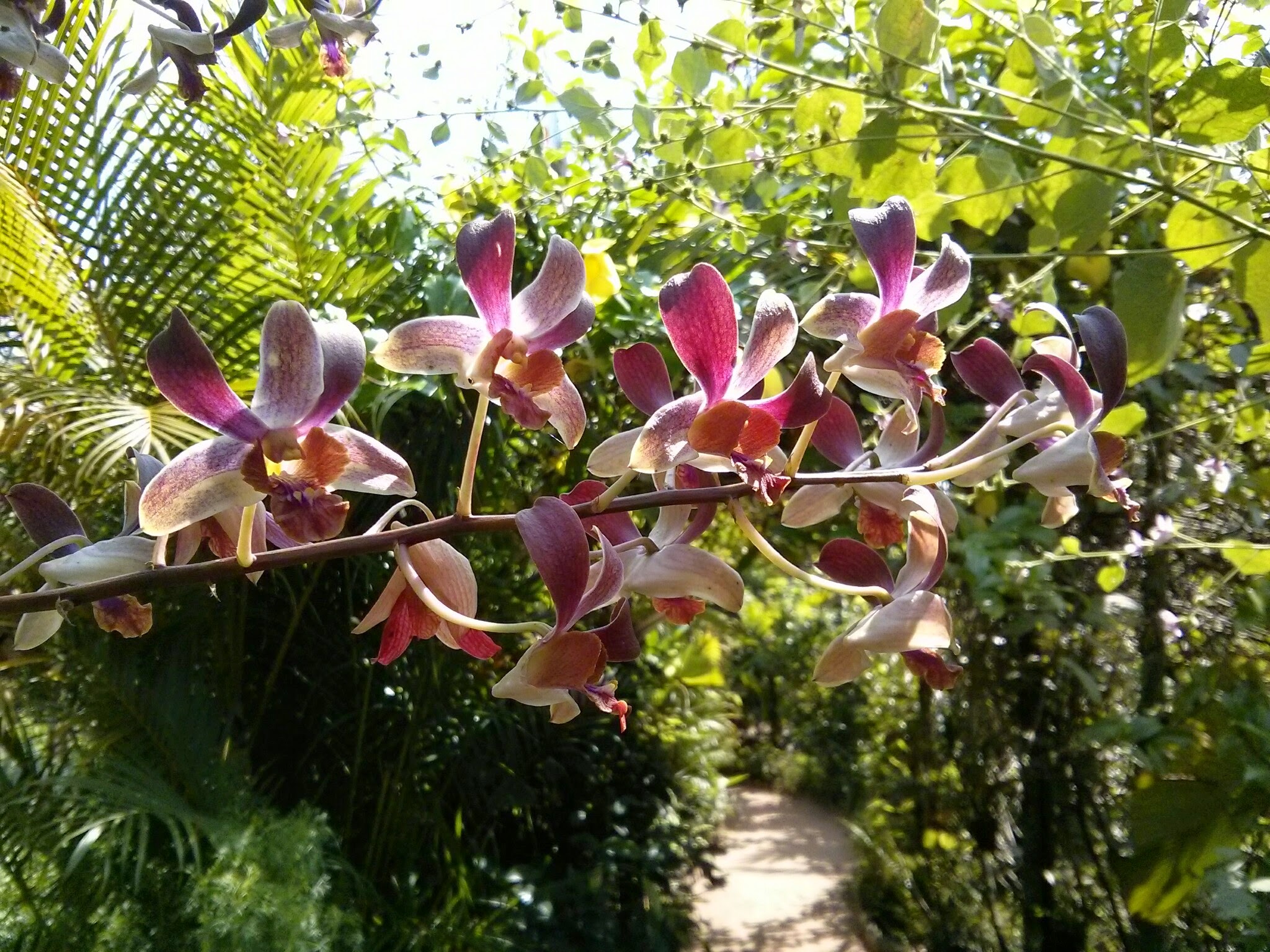Phnom Penh
I came to Phnom Penh on a work trip about 8 years ago and hated it. It was hot, smelly, dirty, neglected and mosquito infested…the two main tourist attractions were the Pol Pot killing fields and the Genocidal museum… add to this the fact that the Mosquitos carried dengue fever and it just capped off an ordinary trip. I am happy to say that things have changed significantly for the better. The streets are clean, the place has been developed and there are much more interesting things to see and do here.
Phnom Penh is on the banks of the Tonlé Sap and Mekong Rivers and is the capital of Cambodia. It is interesting to note that while they have their own currency (the real) it is basically not used and all things are priced and sold in $US…to the point that ATM’s dispense $US. The only time the local currency comes into play is as change for an item that requires coins (one $US being worth 4000 real). The other thing of note is that the streets are numbered, however not numerically. The streets running N-S are (notionally) odd numbered and the ones E-W are (sort of) even…but once again…not numerically. This makes navigation a touch difficult at times.
Quick history lesson – Back in the 1920s it was known as the “Pearl of Asia” and was one of the loveliest French-built cities in the region. During the Vietnam War the North Vietnamese Army and the Viet Cong used Cambodia as a base and Phnom Penh became a refuge for almost 3 million people trying to flee the fighting. In 1974 the Khmer Rouge cut off supplies to the city and on April 17, 1975 the city fell and the Khmer Rouge took control of the country. Their first order of business was to revert to an agrarian society, classifying city dwellers as “new people” and country folk as “old people”.
In power, the Khmer Rouge carried out a program that led to isolating the country from all foreign influences, closing schools, hospitals, and factories, abolishing banking, finance, and currency, outlawing all religions, confiscating all privately held property and relocating people from urban areas to collective farms. By 1976 it was estimated that 80% of the population suffered from malaria. One of the Khmer Rouge mottos about the new people was “To keep you is no benefit. To destroy you is no loss.” Money was abolished, books were burned, teachers, merchants, and almost the entire intellectual elite of the country were murdered to make the agricultural communism (as Pol Pot envisioned it) a reality.
Over the next three years, the Khmer Rouge killed many intellectuals, city-dwellers, minority people, and many of their own party members and soldiers who were suspected of being traitors. Nobody knows how many people were killed by the regime but various studies have estimated the death toll at between 740,000 and 3,000,000.
So anyway…as part of our tourist run we hit the Tuol Sleng Genocide Museum which was a former high school that was turned into the Security Prison 21 (S-21) where most of the torturing took place. Out of around 17,000 people imprisoned at S21, there were only twelve known survivors. The first bit was pretty lame with an entire building full of rooms with a single metal bed in them. From here the world got very real with photos of the prisoners, the cells, images of the torture machines and a room full of human skulls and bones.
The rest of the day was comparatively uplifting after the genocide museum. We went to the Palace, the silver pagoda, the Russian markets, Independence and Liberation Memorials, the museum and Wat Botum.
The next day we got up early and grabbed a tuk tuk to the Killing Fields of Choeung Ek which are about 17 km south of the city and were about as uplifting as the genocide museum. This is just one of over 300 such fields scattered throughout Cambodia. I came here on my first trip and it was a sobering experience with human bones and clothing protruding from pits in the ground. If possible it has become even more confronting.
The roads on the way to the killing fields have been fixed and paved (largely) and the insides have benefitted from the tourist dollars. Your six dollar entrance fee includes an audio guide and people wander the grounds silently listening to the commentary as they reach certain key points and pits along the way. This commentary includes victims and soldiers stories and recollections of what went on there and how it happened. Key stops along the way included the killing point, the torture shed, pits of perceived traitors remains, pits full of women and children’s bodies and the tree used to smash the children’s skulls before they were thrown into the pit.
This was by any standards a confronting place to visit… the addition of stories, facts and commentary on the audio guide has just added to the experience. Generally everyone was silent throughout the couple of hours it takes to get around and listen to the commentary. The images, stories and sights that you see in this place are incredibly sobering and don’t really lend themselves to chatting, laughing or joking. You could hear the occasional sobbing as people listened along, one woman started wailing at the child pit and the tree otherwise everyone was silently absorbing what was going on…except for the French and Russian tourists…they were the only voices that we heard in over 2 hrs… And we heard them consistently.
From here our tuk tuk driver dropped us at the Wat Phnom temple (which was right next to where I stayed last time) then we headed off to the central markets for a quick shop to replace some festy items. Dinner at a local joint that cost under $US5 for both of us (including a beer each). And our Phnom Penh visit was at an end.
While by no means was this an uplifting experience…it was enlightening…the city, the people and the infrastructure have improved considerably and both Jill and I agreed that we preferred this to Vietnam (with the exception of Halong bay). This is quite a turnaround from my last trip where I named Phnom Penh as the worst place I had been. I would come back here without hesitation now.
Pursat
We stopped here in Pursat cos we had a little time to kill before we were due to meet friends who were joining us in Siem Reap. So we popped into Pursat for a couple of days to get a sense of what Cambodia was like away from the tourist hordes. This place is off the tourist route, so much so that when Jill asked the hotel in Phnom Penh to get us a bus ticket to Pursat…they asked…really, are you sure. And again afterwards when heading to the Battambang hotel they kept asking if we were coming from Siem Reap or Phnom Penh…when Jill said Pursat they said “no really, are you coming from Siem Reap or Phnom Penh”.
So we hopped a bus and did the 200kms to Pursat, which was quite a calm and uneventful journey. We got delivered at a rest stop about 2km from town and started to walk to our hotel but the heat of the day, and a vacant tuk tuk got the better of us (mainly me) and I paid a buck to get driven to the hotel rather than lugging the backpacks in high heat and high humidity.
Jill had us booked into the flashiest joint in town…4 stars…had it actually been 4 stars. It was actually on a par with the 2 star place we stayed at in Phnom Penh. The main difference was that this place had a very nice swimming pool, a feature we used regularly over the 3 days. We went out on the first evening and poked around town (such as it is) and ended up eating at a little roadside joint. A nice meal and some Angkor beer for under $10 for both.
The next day we hit the tourist sites…20 minutes later we were finished. A temple, a market and a garden. We were back to the hotel for a swim and we found the only restaurant listed on trip advisor. It was a pizza joint of all things…and the pizza was good. Not Cambodian good…actually good. We have dipped our toes into the odd western dishes intermittently on this trip and have been disappointed every time…until now. This place served good pizza and the owner was lovely as she hung out chatting while we waited for our food. We found out she was a school teacher by morning and a restaurant owner in the afternoons and evenings. At the end of our meal she offered to give us rides back to our hotel on the back of her motorcycle…but we assured her we could make the 700m walk. In all honesty after a big feed the walk was welcomed.
Our hotel managed to get Jill into a rage as she sought two bus tickets to Battambang…4 requests and 2 days later still no tickets. She ranted, she raved, she swore, she asked for the manager (who had conveniently gone home)…and we walked down to town (5mins) and got the tickets ourselves…from a woman who spoke zero English…but could still provide better service than the hotel. The next day we took our $3 bus ride to Battambang.
Battambang
We were picked up from a dirt patch opposite the servo (which passes as the bus stop) by Bodan (pronounced Bowrain) who was to be our personal guide and tuk tuk driver for the next few days. He dropped us at our 2 star joint which was immediately better than our 4 star one (but minus a pool). The owner was waiting to greet us and could not do enough to help. We locked in a 4pm trip to the Bamboo train and dinner afterwards.
The bamboo train is a series of small bamboo rafts, for want of a better term, that sit on two railway axles, powered by a law mower engine that run along the out of service railway tracks. Originally this was for transport and goods movement but is now almost entirely for the tourist. There is one track, so if a competing raft comes in the other direction one or other must cede the track. To do this, both drivers pick up the raft, dump it on the side of the tracks, move the wheels and after one has passed then ( hopefully) the other driver will help the raft that ceded back onto the tracks.
WARNING: Jill’s video may induce epilepsy
[wpvideo OIyD8Puo]
This was fun. Jill has developed a love for all things train and this was yet another experience for the train journal. As we left our hotel at 4pm this was designed to be a sunset trip with a 30 min tuk tuk ride followed by a 20 min bamboo train ride to a village manned solely by stores (grass huts more than stores) for tourists and a 20 minute bamboo train ride back (pausing for some sunset photos across the rice paddies). I repeat…this was fun.
The next day we locked in with Bodan for a day exploring the southern areas around Battambang. This included the odd temple, fishing village, bat caves, winery and Wat Banan a run down group of 5 temples atop a hill with about 500 stairs that needed climbing. The best bit was cruising around the real Cambodia in the back of a tuk tuk. The day saw us heading about 50k out of town so we passed actual villages and villagers going about their daily business (not the tourist version at the end of the bamboo train).
The highlight of the day (other than the general immersion in the local lifestyle) was the visit to Phnom Sampeu. This is a series of hilltop temples, a monastery and two Buddhist stupas. The other thing of note was that it was the location of three Khmer Rouge killing caves, which is exactly what you might imagine (especially after reading the Phnom Penh post). These were deep crevasses where people were forced to kneel at the top, were killed and were kicked into the crevass. The one I went into was one where over 10,000 bodies were found.
The next day Jill booked us into a local cooking class run by a young Cambodian guy, French trained, chef in his own business (Coconut) that was staffed by his family. A classically trained chef being aided/overseen by his mother (who at times takes the mortar and pestle off him) is funny to watch. He may have all the skills but mum still sometimes knows best. We made 3 different local dishes (spring rolls, Fish Amok and Beef Loklak) and a desert and they were all incredible.
From here Bodan picked us up and we went touring the north of the city to Wat Ek Phnom an 11th century temple that is hanging on by its fingernails. This place will be rubble before too long. On the way we stopped at some local village businesses like the rice paper factory (underneath somebody’s house) and the fish sauce and fish paste factory. It is said you should never let people see how laws or sausages are made…this goes triple for fish sauce and fish paste.
These items have distinctive smells…but at the factory (a shanty shed with no walls) watching the filthy conditions, the man kicking the fish into piles, the vats of compressed (by big rocks) salted fish, the 15-20kg catfish having their heads chopped off (to be sold to the crocodile farm down the road), the shrimp, the ass fish that were too small to be eaten. Some things you just never needed to know…this was one of them.
Siem Reap
Siem Reap is a popular tourist destination and was voted internationally as the 4th best city of travel in 2014. The Place is a cluster of small villages along the river all built in the vicinity of the evenly spaced Buddhist pagodas (Wat). In the area there are more than 1,000 Temples of Angkor which were built from the 9th to 13th centuries during a time when the Kingdom of Cambodia was one of the most powerful civilisations on the planet.
While Siem Reap is a nice little town, it really only exists as it is the town that supports the temples. They are exceptionally impressive…they are old, they are huge and there are TONS of them. I hadn’t realized in my reading just how many of these things there are. You really need a week to see everything, and even then it’d be a stretch. We had 3 days, so were going to make a go of it.
We caught up with Brett and Cathy who had traveled from Canberra to join us here. Our first day was spent hitting the museum. miniatures display and dipping our toes into some of the many Siem reap restaurants and bars. This place gets between 2 and 3 million visitors a year and sadly the town reflects that…the prices are (generally) between 2 and 25 times more expensive than in the rest of Cambodia and the locals have all turned into pushy touts. Whether touting for tuk tuks, drinks, food, trinkets, paintings, clothing, batik or just attention.
Our first foray saw us getting ripped off by the Cambodian BBQ restaurant. They had the 50c draught sign out the front and we entered for an ale and some nibblies. Having had some spring rolls and an ale or two we called for the bill…it was $38. I checked the bill to find that they had charged us 4 times the quoted price on the beers. I started to argue the point and they claimed they had supplied us with the superior Tiger beer rather than the local drop. After a while it was clear we were not going to win so we paid the bill and used our technology to warn other travellers of the SCAM that these guys were running.
Most importantly the Siem Reap area has been used extensively as the film site for a lot of adventure type movies and television shows…things like Tomb Raider and Indiana Jones Temple of Doom were filmed here. And having been here it is obvious why…this is an ancient city literally being swallowed by the jungle. It was a huge civilisation that was, for unknown reasons, lost to the world. The modern re-discovery dates back to around 1901 when the French funded an expedition to Bayon thus re-finding the lost temples of Angkor. They took responsibility for clearing and restoring the whole site.
The main attraction is Angkor Wat, the 500-acre site that is one of the world’s biggest religious monuments and the most elaborate of the Angkor’s temples. We had a 4am wake up…to hop our tuk tuk…to go to buy our 3 day pass…before heading to Angkor Wat (along with about 2000 other people) for sunrise. Alas it was an overcast morning and our sunrise shots were less than inspiring…but the experience was worth it.
From here we left the main attraction to avoid the hoards that were peak hour at Angkor Wat. Instead we headed to Angkor Thom which houses a myriad of temples such as Bayon, Baphuon, Phimeanakas, Tep Pranam, the royal palace area, the terrace of the leper king and the terrace of the elephants along with a bunch of other ancient bits.
From Angkor Thom we hit Preah Khan before running away to hide from the heat of the day and returning late afternoon for the south gate, Paksei Chamkrong (the video of Jill climbing) and a schlepp up the hill to Phnom Bakheng for a sunset viewing (with the same 2000 people who were there for sunrise) with the same result as the overcast was still doing its thing making our mountain climb redundant. The video below should not give you epilepsy however it will give you a fair indication of why I have been whining about stairs. The stairs in Asia are a non-standard height and width and are a major effort even if there are only about 70 stairs as was the case here. So in my earlier posts where I complained of doing 1500 stairs…then just imagine this video 20 times over…and double it again for Jill’s ridiculous assault on Taishan.
[wpvideo 9V8eGXff]
That evening we headed into town for the night markets…our tuk tuk driver dropped us off underneath the fluorescent night market sign right next to another sign that read “foot massage $2”. I had sore feet after climbing up and down stairs all day….and for an extra $1, I could double the time. So I locked all 4 of us in for 30 minute foot massages. While they got settled I walked 2 stores down and organised for ice cold draught beer to be delivered to us for 50c a glass. When my beer was empty…I sat the empty glass atop my head which the astute man (rightly) took to mean that I needed more beer. Me which was delivered to me. For a ridiculous $4…I had a 30 minute foot and calf massage while drinking two ice cold beers…and so did the wife and mates.
The next day we did Angkor Wat properly. On day one we checked out the non existent sunrise and then ran away from the hoards…on day two we went to the smaller temples early and timed our run to Angkor Wat to coincide with the tour busses going to lunch. This meant that we were not fighting the masses and we had a (relatively) unobstructed view of the place and a climb to the top with no queues. While the temperature was hotter, the experience was much better.
The next day we headed out to the floating village…that we never made it to, as it was a massive tourist scam. It cost us $17 for a tuk tuk for the day and after a fantastic drive throughout the countryside and villages we got to a ticket booth that was charging $25 a head for the boat to the floating village. We rejected this and kept going to the Rolous group of temples instead. These are lesser temples to the main Angkor group but still a nice sight and a pleasant drive in the country.
As it turned out (according to the reviews of other travellers on trip advisor) our floating village tour would have seen us paying $50 to travel about 20 minutes to some bamboo/wooden shacks above the waterline. When you stop you have 20 mins being harangued in tourist shops or being pressured to buy bags of rice for the poor villagers (at $50 per bag). This journey is nothing but a scam…it costs $40 a head for a 3 day pass of all the great temples…so $25 for an hour tour plus a $17 tuk tuk fee…no thank you.
So Jill, in her infinite wisdom, decided to spend the money we would have given to the scammers…on a spa day. We headed to town and she got down to negotiating for the required services…having never had a spa day I rolled with both the prices and the choice of services. What came was an hour long body scrub, followed by a one hour massage, followed by a one hour facial. This, she tells me, would cost between $250-700…each…in Australia and was $60 for both of us here. The scrub was good as was the massage…you can keep the facial…not a fan.
The next day we headed out to the land mine museum. This was a personal venture started by an individual named Aki Ra. The story goes…Aki Ra’s parents were killed by the Khmer Rouge and he was conscripted to be a child soldier who’s role at some point became responsible for the laying of land mines on the Thai/Cambodian border. After the war he found work with the UN finding and disarming the land mines and when that work finished he continued to find and disarm mines…to do this he used a knife, a hoe, a Leatherman and a stick…he funded his activities by selling the scrap metal from the mines. He started storing deactivated mines at his house and giving talks and information sessions about mines…this was the precursor to the museum today.
While doing his mine clearing he found many injured or orphaned children due to the land mines…which he subsequently took in or adopted. After a period he had brought home over two dozen boys and girls. This then morphed into an orphanage/school. Today the entry fee is a grand $5…$3 of this goes to feeding clothing and educating the children and the remaining $2 goes to fund ongoing land mine recovery and dismantling.
This place is both tragic and uplifting at the same time. It is a story of a man repaying his karma…while he still can. It is an informative, confronting, uplifting and eye opening experience and if you are coming here you should factor in extra time as this bit was really worth it. On the way home we stopped at the butterfly garden for a rest and sat watching the butterflies flit about.
Overall Siem Reap was a good trip and I would recommend it to anyone to go to…I would not rate it in the top 4 places to go…but it is nice. If you head here it really needs a minimum of 5 days in Siem Reap alone. But be warned…it is very touristy. The prices for everything are high (relatively), the touts are really pushy, and the scammers abound. It is exhausting walking the huge temples in the heat…but it is more tiring fighting off the constant onslaught of people trying to get you to part with your money.
Siem Reap – Take 2
Well after several years of having our wings clipped we finally got ourselves offshore again. The first major port of call was somewhere that we knew well and had enjoyed – Cambodia. More accurately Siem Reap. Our first foray here was back in November 2013 with a subsequent visit with the boys a year later in November 2014. The place and people are lovely, it is cheap and the food is great. A good way to ease ourselves back into the world of global nomadding again.
Khmer Empire
Before we get too carried away lets get some of the basics down to provide some context about what is going on here. Between the 9th and the 15th century Khmer or Ankorian Empire existed within SE Asia and at its peak was said to be larger than the Eastern Roman Empire (Byzantine) which existed around the same time. Kicking off in the early 800’s the empire the grew to be one of the largest going and satellite images show that at its peak it was the most extensive pre-industrial urban complex in the world. Long story short, there are about 50 Buddhist and Hindu temples dating back to the 8th-12th century in the vicinity of Siem Reap. Many of the structures have collapsed or been swallowed by the jungle but the structures that remain and the carvings in place make the are a must see and listed by UNESCO.
Touring the temples
Step One – buy your ticket. The prices are in USD and they range as seen on the right (prices correct as at Nov 2023). Note that these tickets are for the main temples etc and they do not give you access to all things. If for example you wanted to go to the Kulen Waterfalls then another ticket would be required.

There is an inner loop (ie the ones close to town) and an outer loop of temples that can be done. The inner loop takes in the big ticket items of Angkor Watt, Angkor Thom, the Bayon temple and Ta Prohm Temple (which became famous in the tomb raider movie and game with its image of the tree growing out of the wall). The inner loop can be easily done in a day but does involve a lot of walking and a lot of stairs. The outer loop takes in the temples requiring a little more driving and are generally a little less impressive or less well preserved. These too can be done in a day but there is more tuk tuk time and fewer stairs. From here there are the far away temples. These are considerably further from town and individual negotiations would need to take place on both price and type of vehicle required.
Dress is simple. You are off to visit temples and holy sites so dress accordingly. This means that your legs and shoulders should be covered for the period when you are inside the temples. For such a simple concept this still continues to confuse the majority of the women that attend these sites. The innate need for short skirts and strappy tops is obvious…so too is the absolute requirement to show as much skin in your influencing photos and videos. However the inability to throw an overshirt or the ubiquitous elephant pants on for the few minutes you are in a temple seems too impossible a task to muster. And guys the world will be able to survive for the few minutes it takes while you put away the gun show – especially those northern European (glow in the dark) biceps.
Transport
You you can hire virtually any type of transport that you want to take you around and through the temples. You can have a bus all to yourself if you really like. There are private cars, motorcycles, bicycles and tuk tuks. If you you take the private air conditioned car or bus you will find that the the short distances between temples means that you have arrived at the next temple before the air conditioning has had a chance to kick in.
You can ride a bicycle, but that would mean that you would have to ride a bicycle. Motorcycles mean that you are either on the back of a local’s bike or that you have hired your own and would need to know your way around the various temples.
Tip Number One: Take a tuk tuk. The tuk tuk is cheap, easy and has great air flow, especially if you choose one of the more open types rather than the more enclosed versions. This means that you are cooling down immediately after having hiked up and down the temples, rather that sweltering looking for relief. We had the one on the left (below) driven by the lovely Mr Thou and it was fantastic.
Angkor Wat
Angkor Wat is clearly the most famous of the temples and is the main attraction for the region. It was built in the 12th century to worship the Lord Vishnu (a Hindu deity) and allegedly served as the funerary temple for the bloke who commissioned it, King Suryavarman II. It is set on 402 acres and surrounded by a 5km moat which contains an outer wall of 3.6 kilometres. Once inside there are three rectangular galleries and the main building. At the centre of the temple stands the five towers (that google tells me is called a quincunx – not a word that typically lives in my vocabulary but hey lets go with it).
The five lotus towers are 65 metres tall and are decorated with around 2,000 stone carvings of Apsaras (celestial dancers). In all reality, virtually all of Angkor Wat’s surfaces are carved. There are kilometres of carvings that include battle scenes, fictional animals and all sorts of other things that give credence to the legend of the day.
Angkor Thom
Once you leave Angkor Wat you (typically) head across for a bit to Angkor Thom or Big Angkor. It is the largest site in the Angkor Archaeological Park and contains a number of smaller temples and archaeological sites. Our first stop was the south gate (one of five 20-metre-tall gates that surround Angkor Thom). The gates have intricate stone carvings of elephants and the 4-faced Bodhisattva Avalokiteshvara, while the bridges leading up to the gates are lined with carvings of devas (gods) on the left and asuras (demons) on the right. Both the gods and the demons appear to be playing tug of war on a snake (Naga). You tend to come through the south gate as the vandals have stolen the heads off many of the statues on the other gates so they are considerably less impressive.
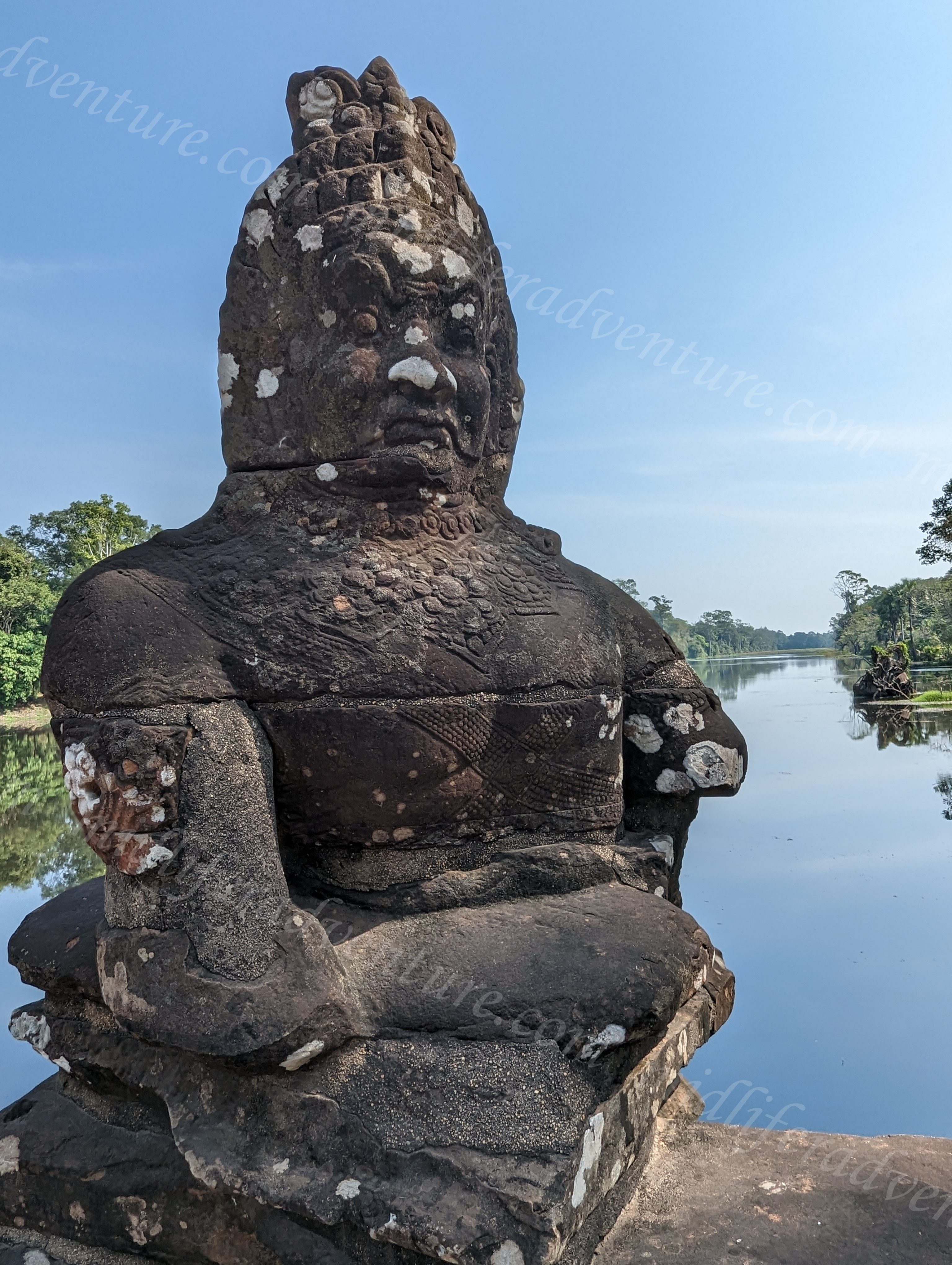
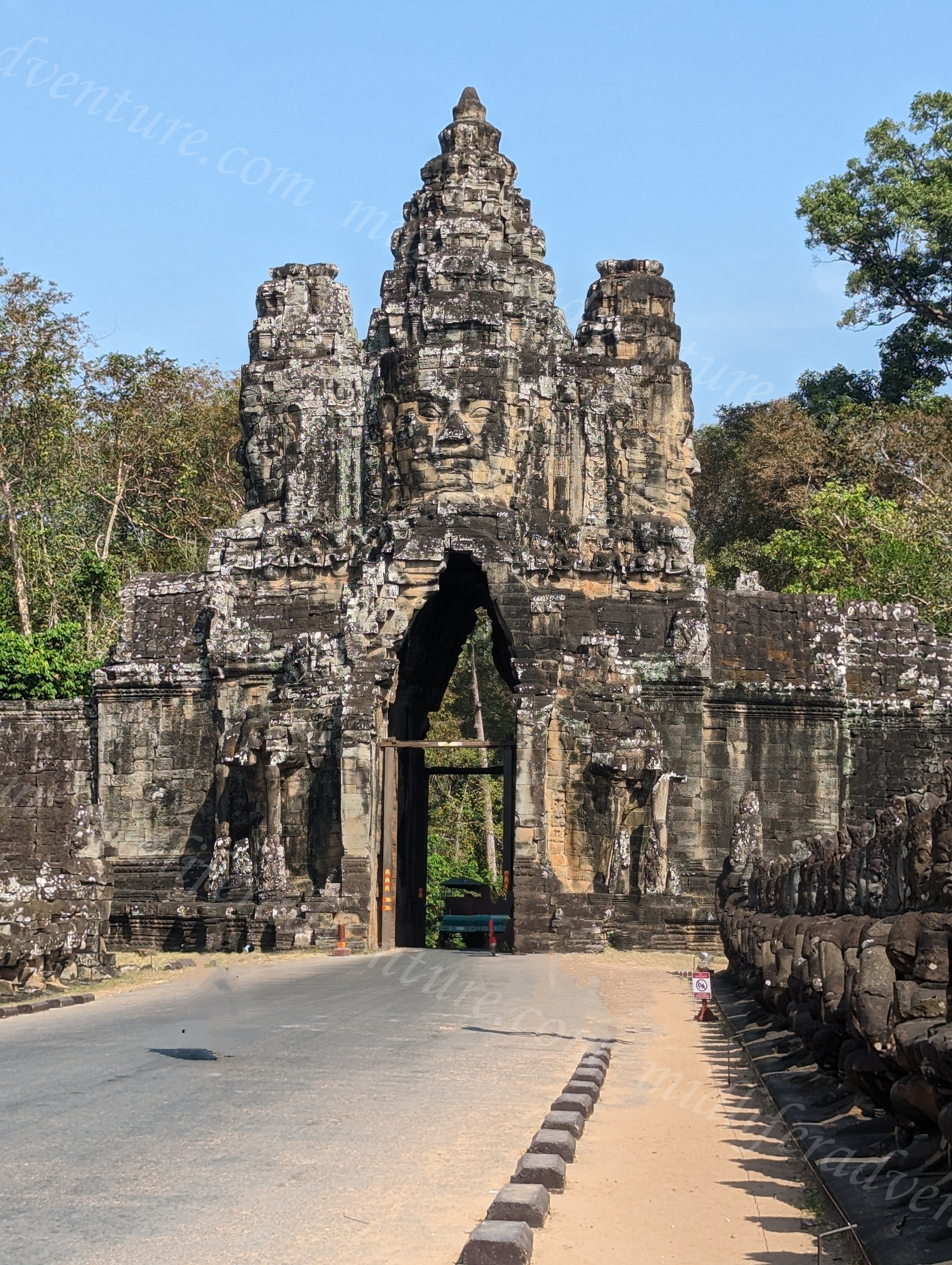
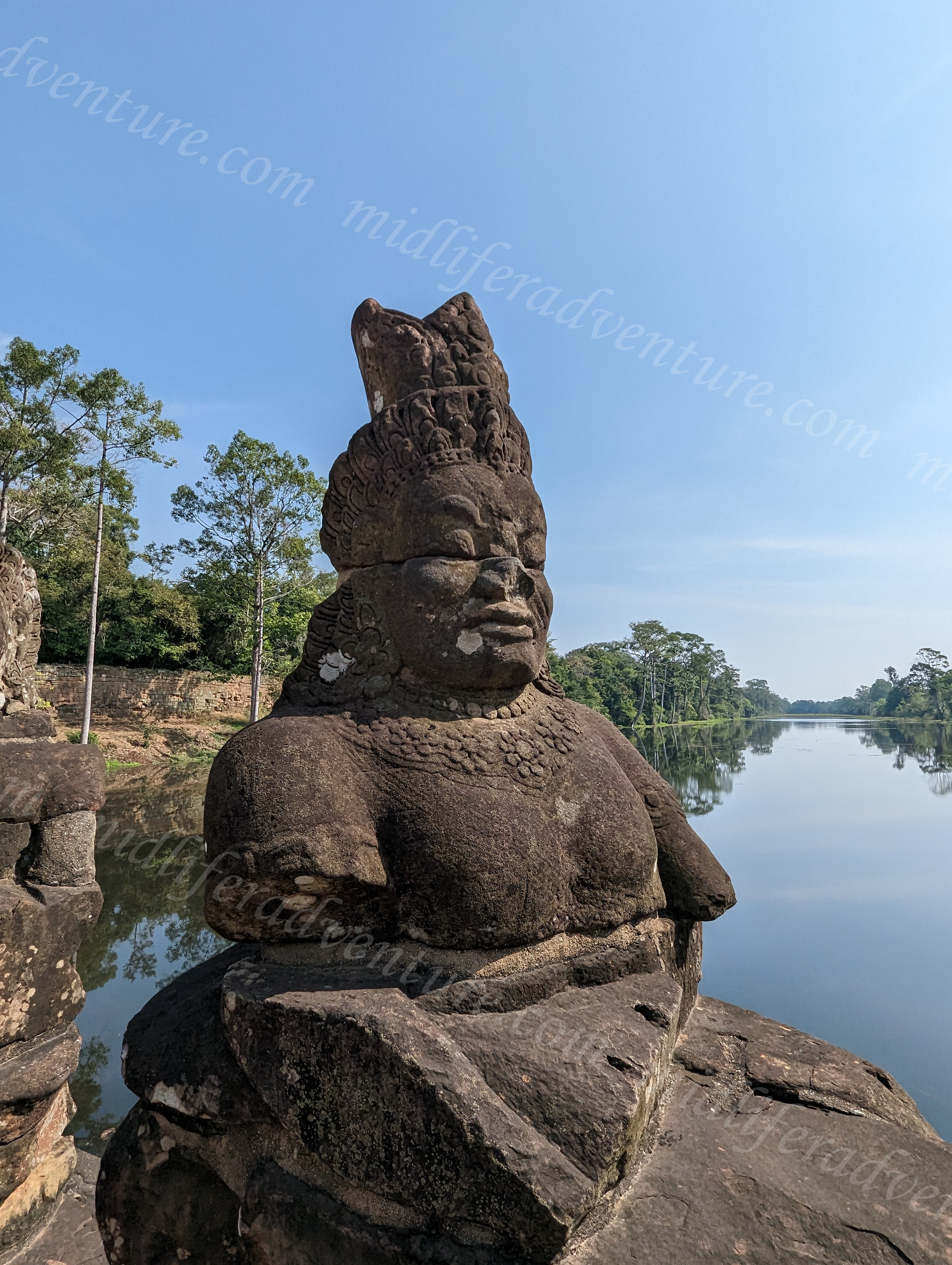
There are 8 metre high walls and a moat surrounding Angkor Thom. The faces on the entrance gates were added later than the original gates and they reflect the faces that can be found on the Bayon Temple (also contained within the walls of Angkor Thom). Within Angkor Thom is a range of smaller temples that include Baphuon, Phimeanakas, Prasat Suor Prat and many others however these have and are falling into great disrepair. Notably you will see the terrace of the Elephants and the terrace of the leper king that are prominent and are both currently undergoing considerable preservation and restoration works.
Bayon Temple
The Bayon Temple is probably the second most recognisable after Angkor Watt as it features approximately 50 stone towers with intricately carved faces. The blurb tells me that the faces are the 4 faces of Bodhisattva Avalokiteshvara (not really sure what that means but hey, I can go with that too). Bayon is in the midst of Angkor Thom and it too was built in the late 12th century. Each of the stone carvings of faces are 4 metres high and oriented toward the 4 cardinal points. It is surrounded by long walls that have some seriously intricate carvings of battlefields, markets, and religious rituals.
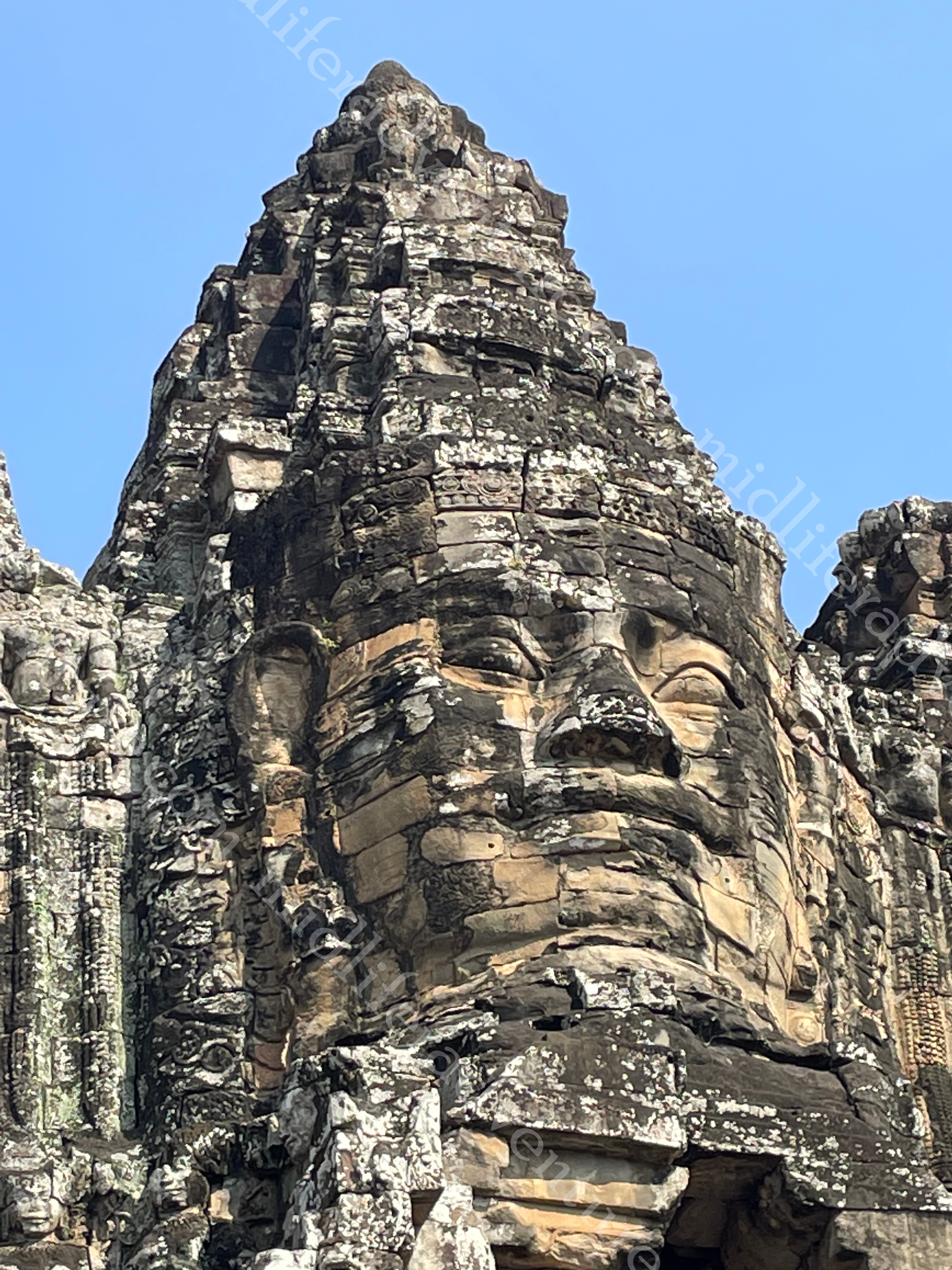
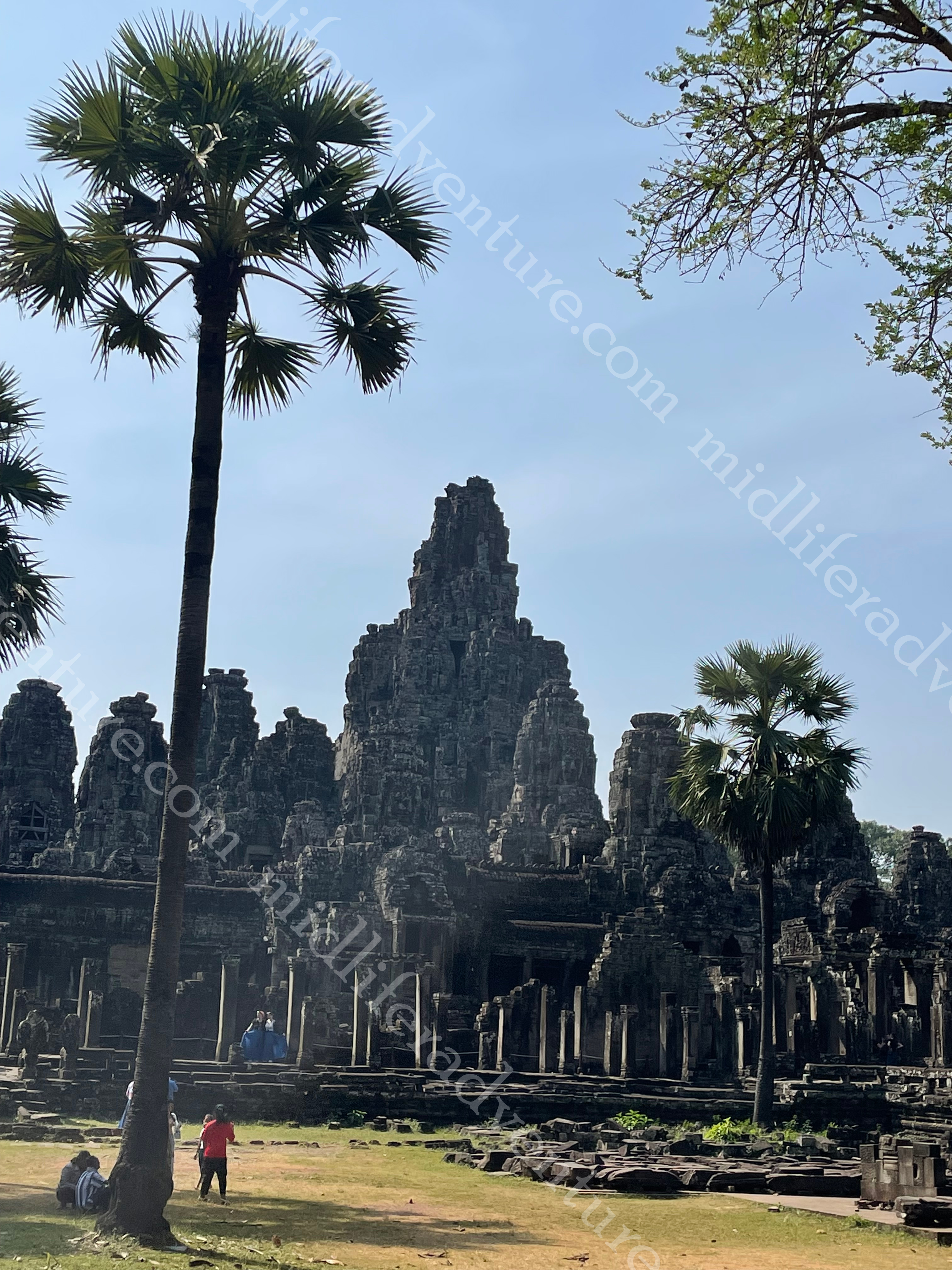
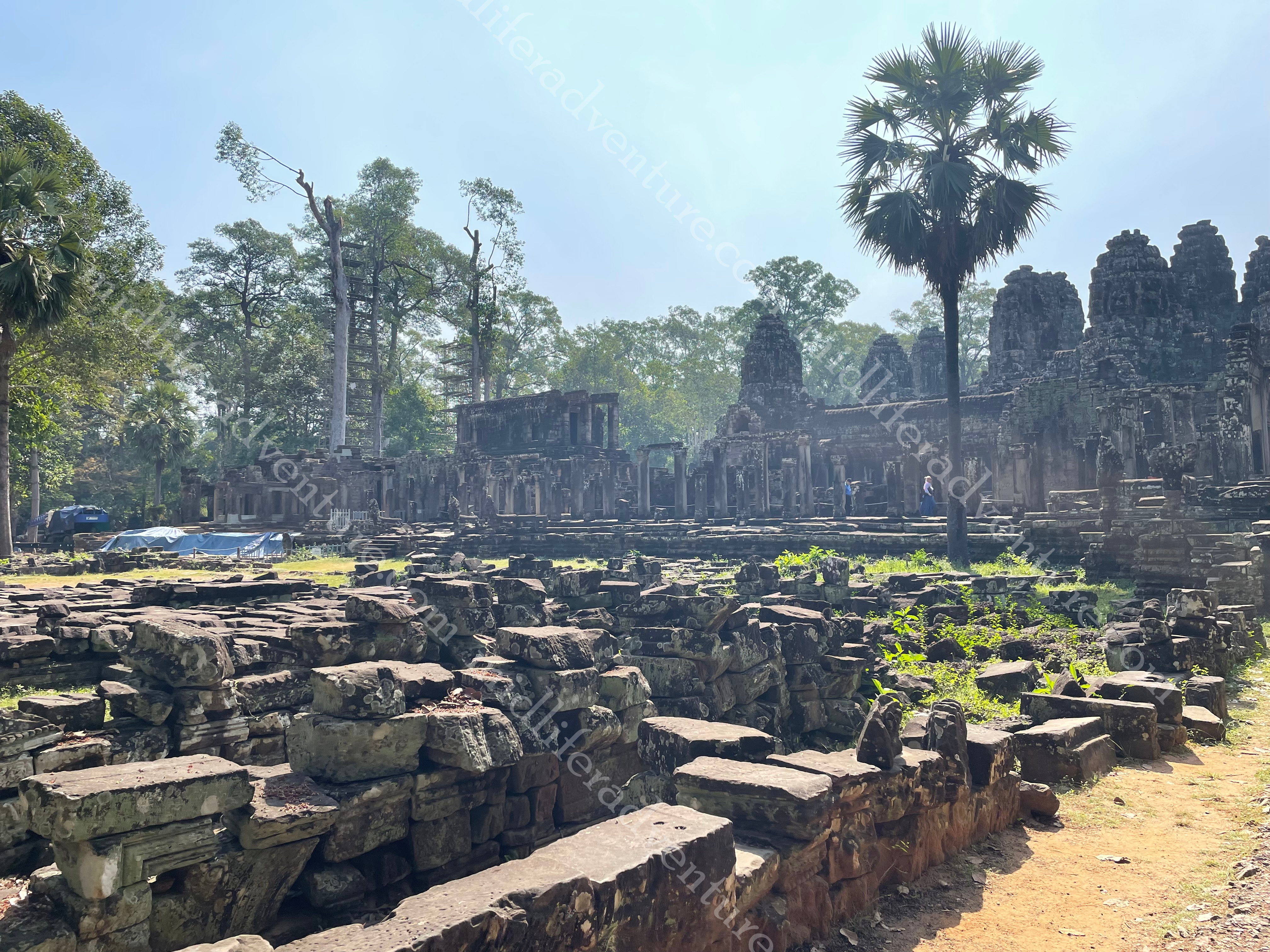

Ta Prohm
Ta Prohm is the famous a Tomb Raider temple. Very large trees with impressive roots have grown out of, through and amid the various walls and roofs of the temple.
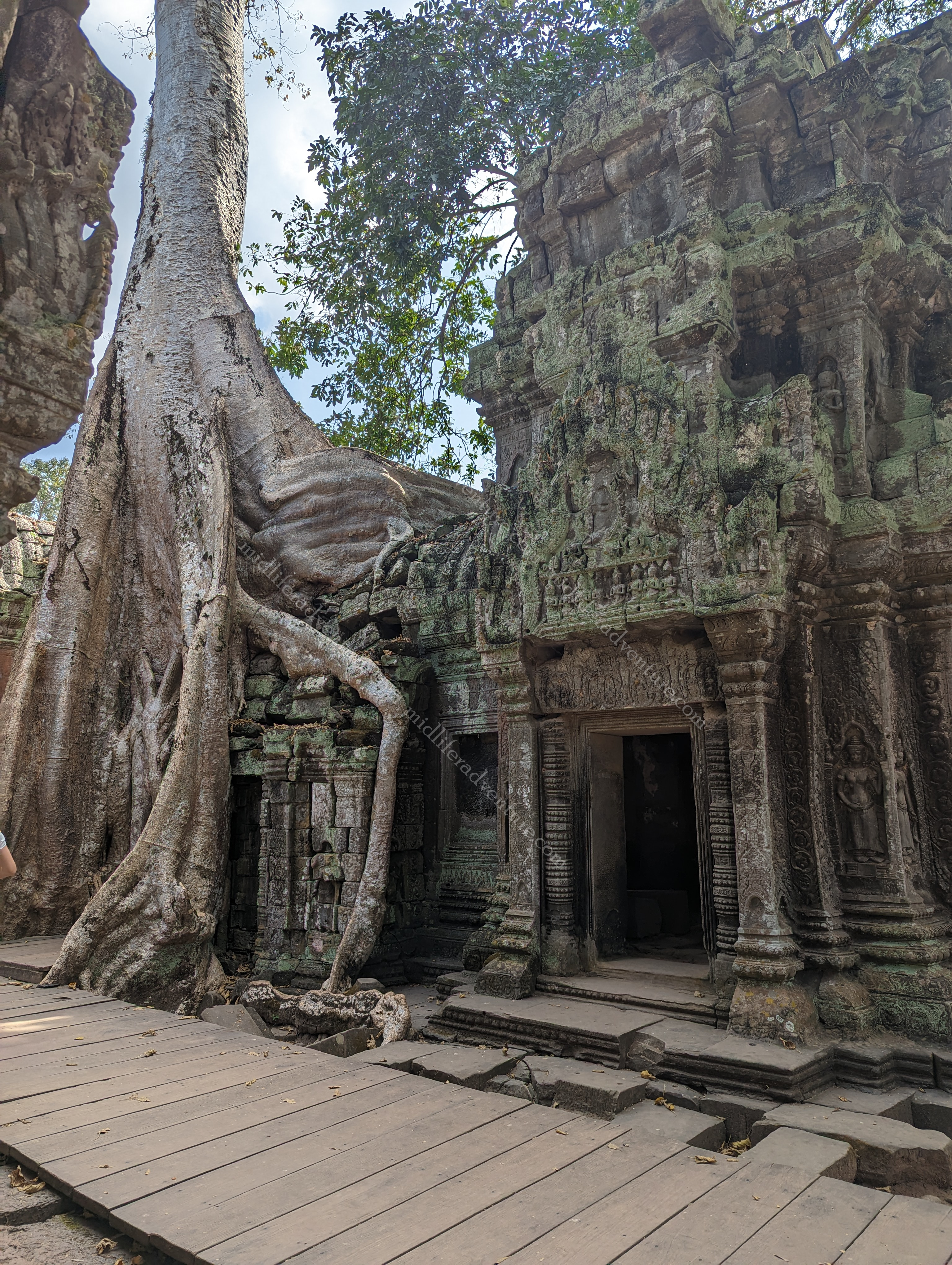
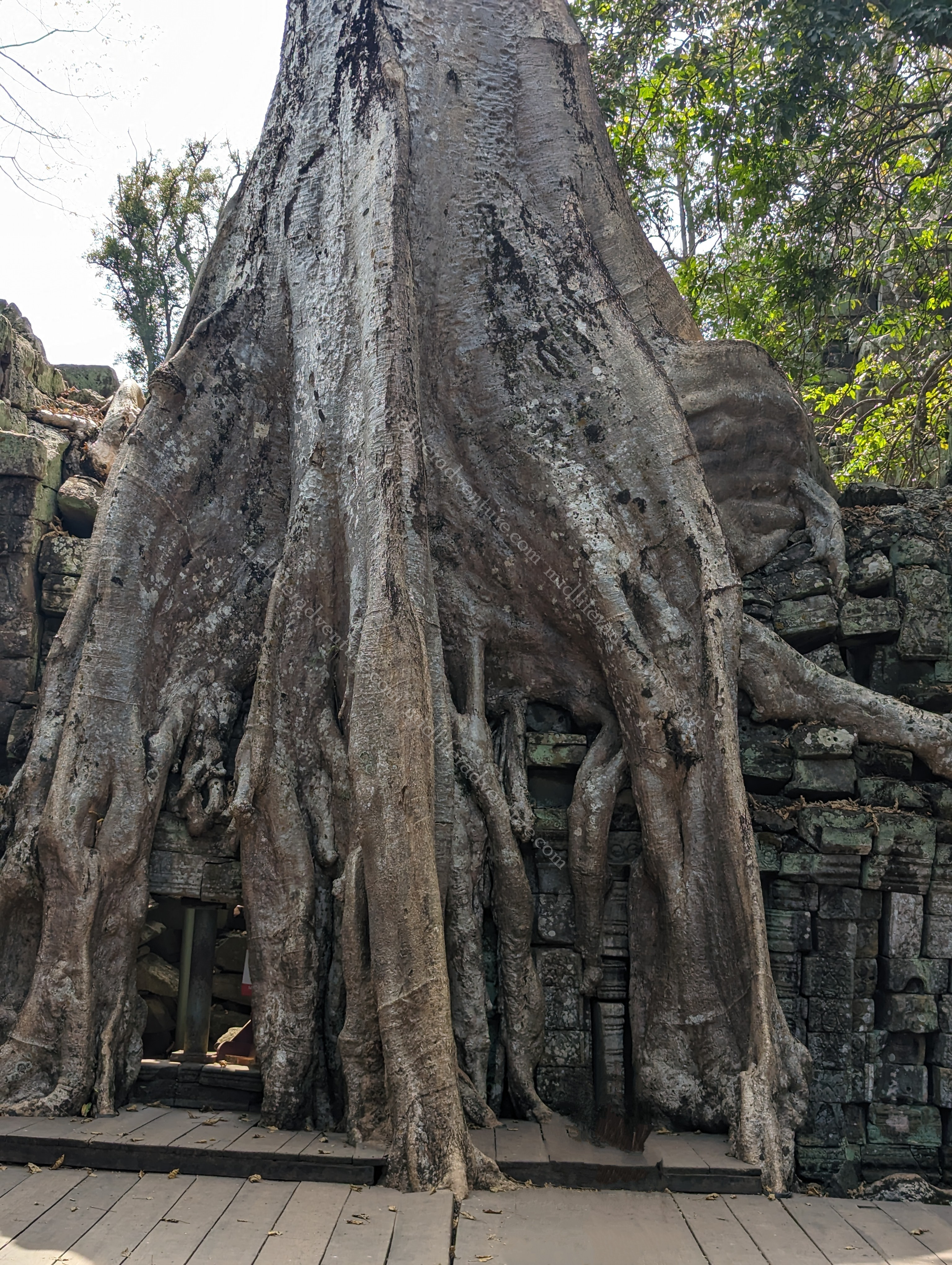
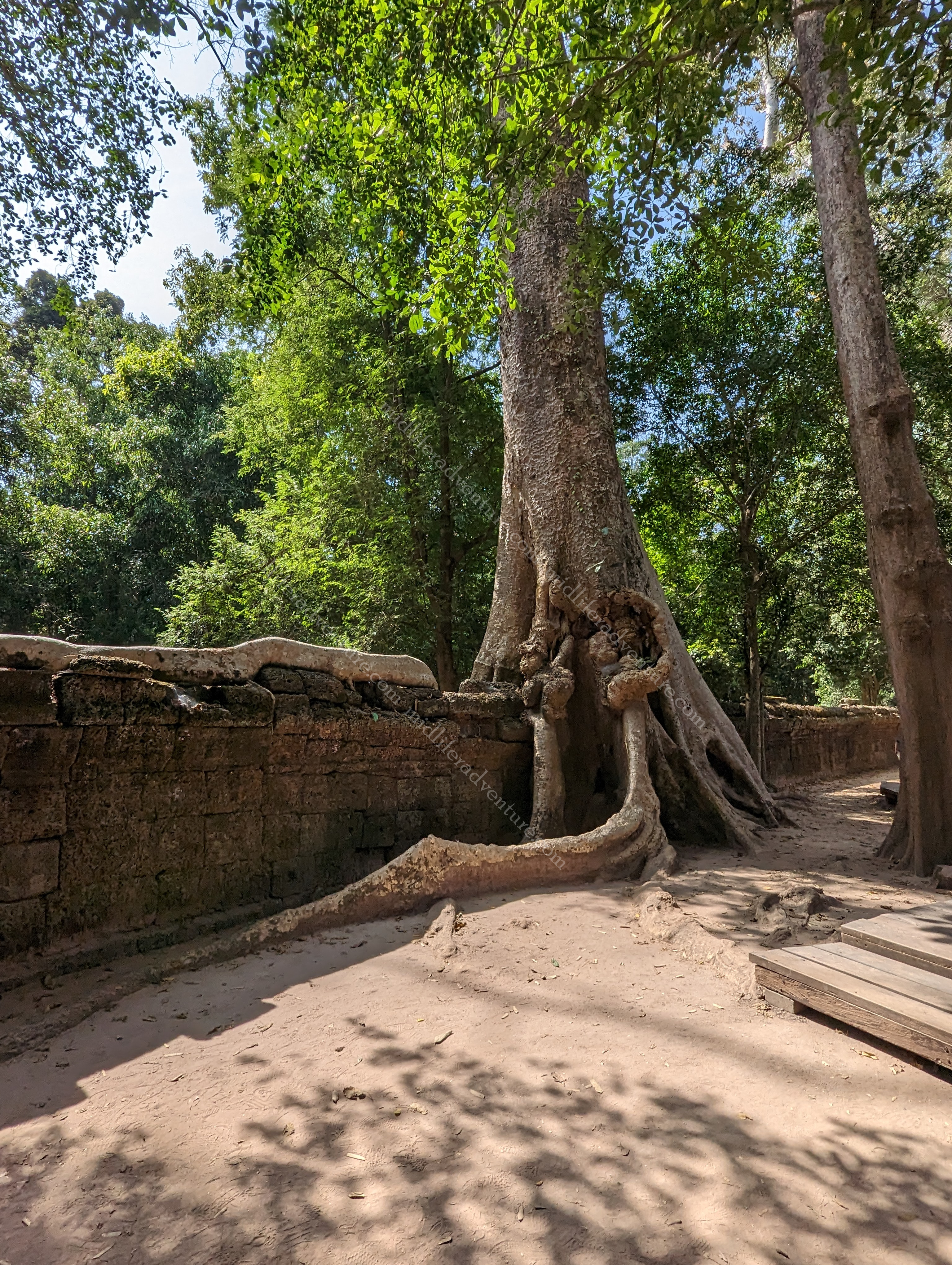
The other temples
Needless to say, there are 50 of them. They are too numerous to mention and they are in varying states of disrepair but here are a few of the more common ones to look out for. The Preah Khan (Sacred Sword) temple complex is notable as it is surrounded by a moat and the roads are lined with sculptures on the way to the temple. The Roluos group of temples is about 13 km east of Siem Reap and was the original head of the Khmer empire from the 9th century before being taken over by the main ones in the 12th century. Thought to be the first capital the group of temples include Bakong (largest temple in the Roluos Group), Lolei, Preah Ko (temple of the cow) and the smaller Prasat Prei Monti.
Ba Phuon (newly restored and reopened), Phnom Bakheng (sunset hill), Prasat Banteay Srey (citadel of women), Koh Ker (about 90 minutes away with around a dozen temples dating around the10th century), Baksei Chamkrong (Temple pyramid near the South Gate of Angkor Thom).
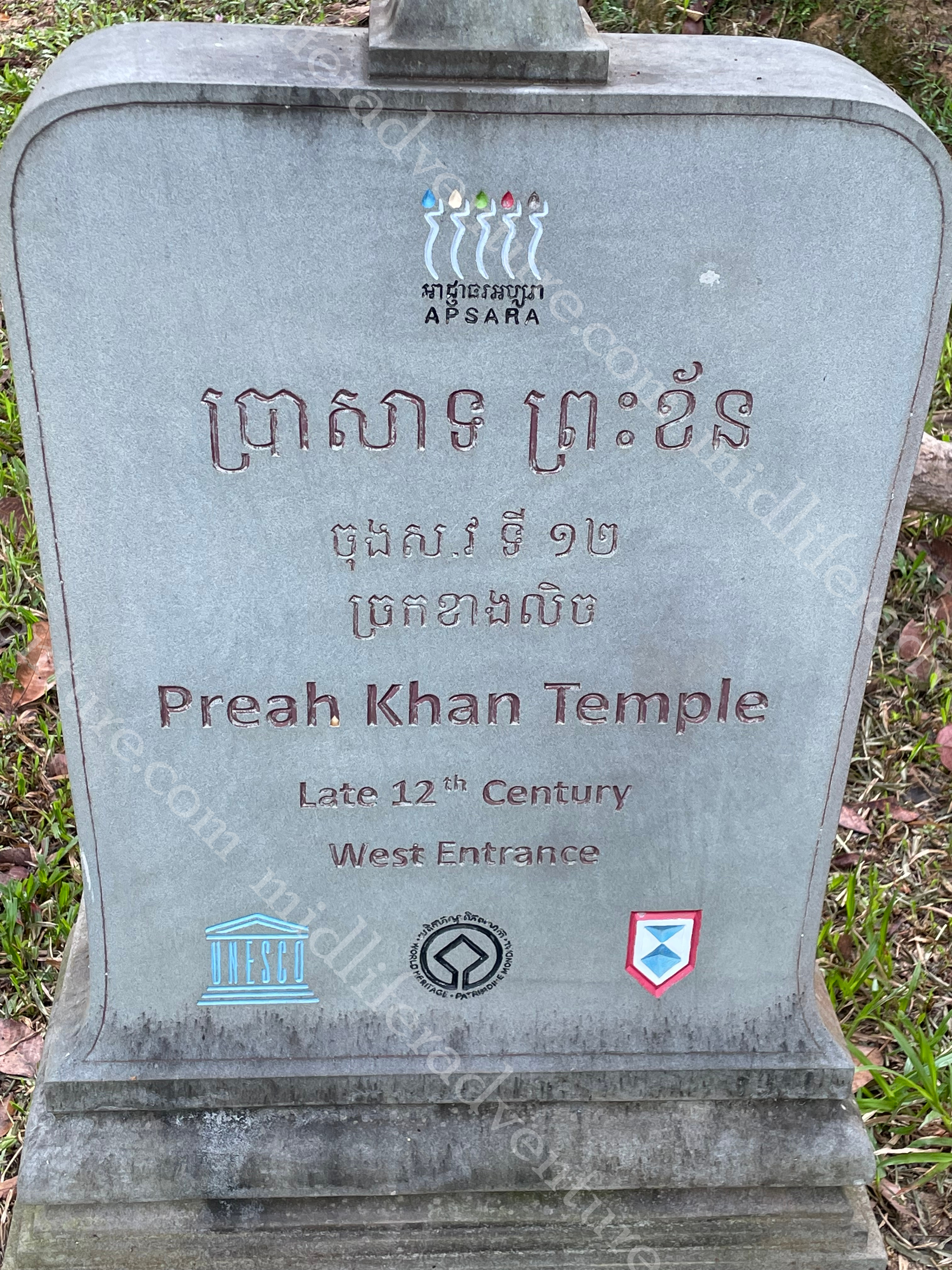
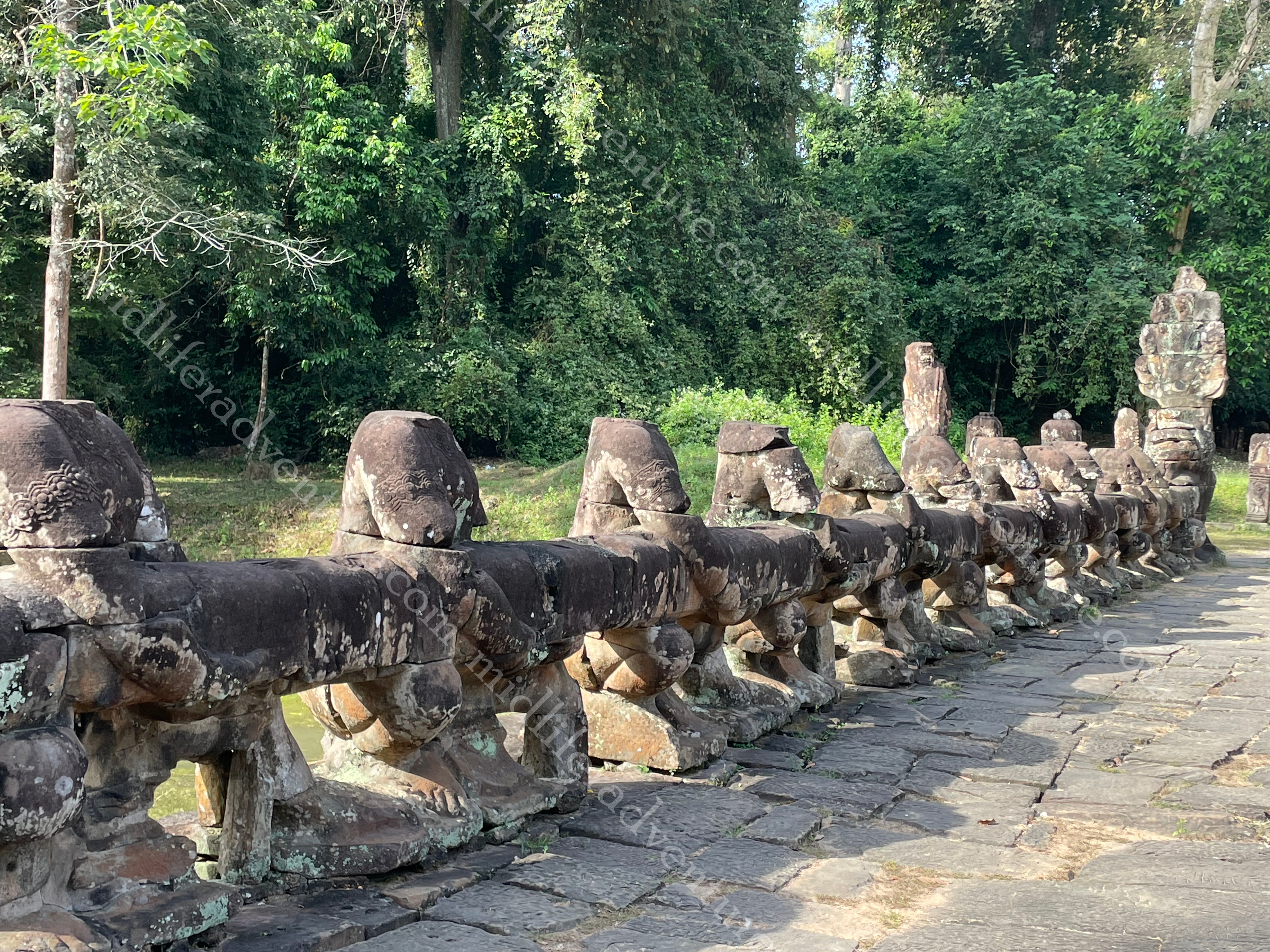
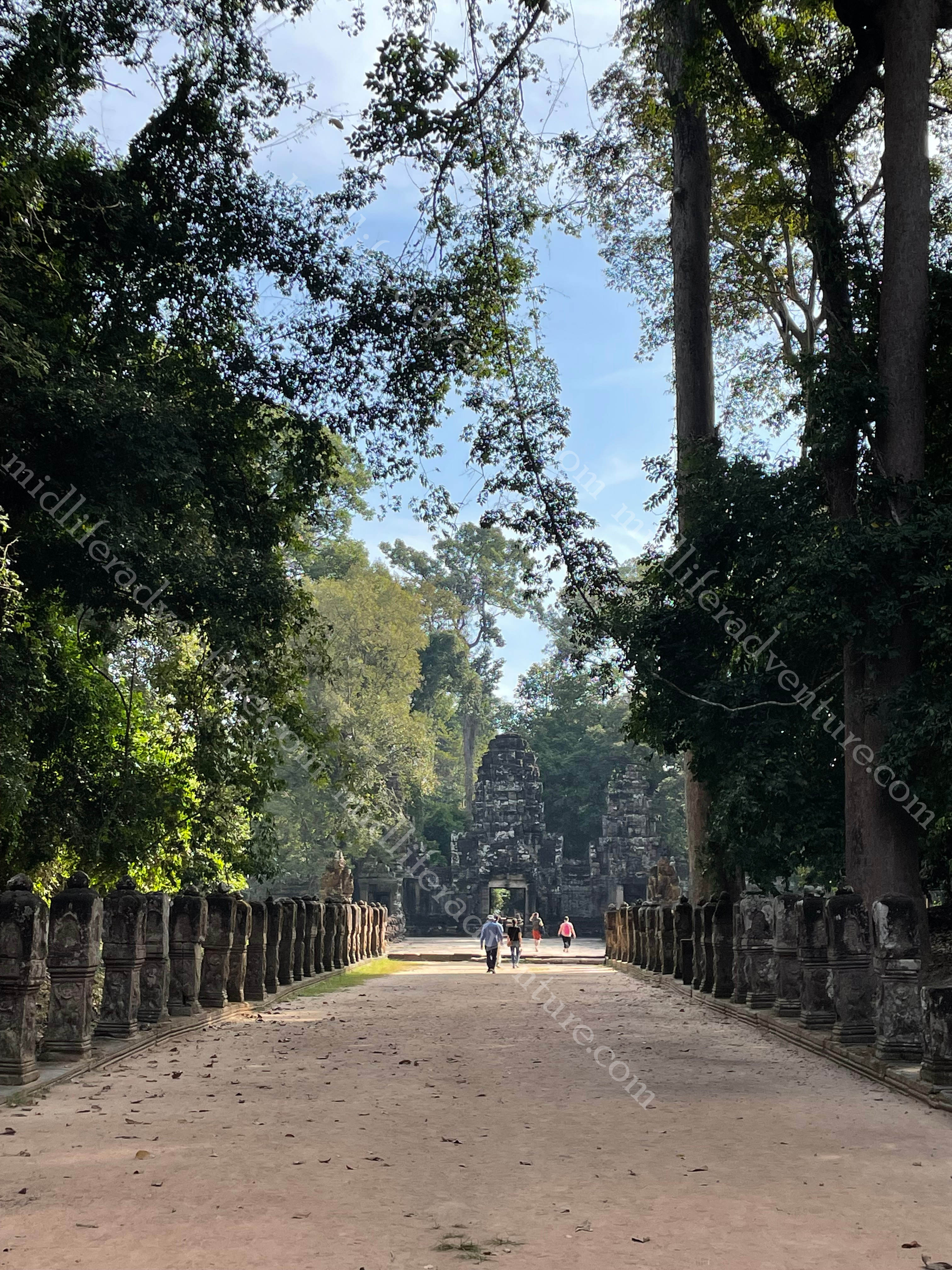
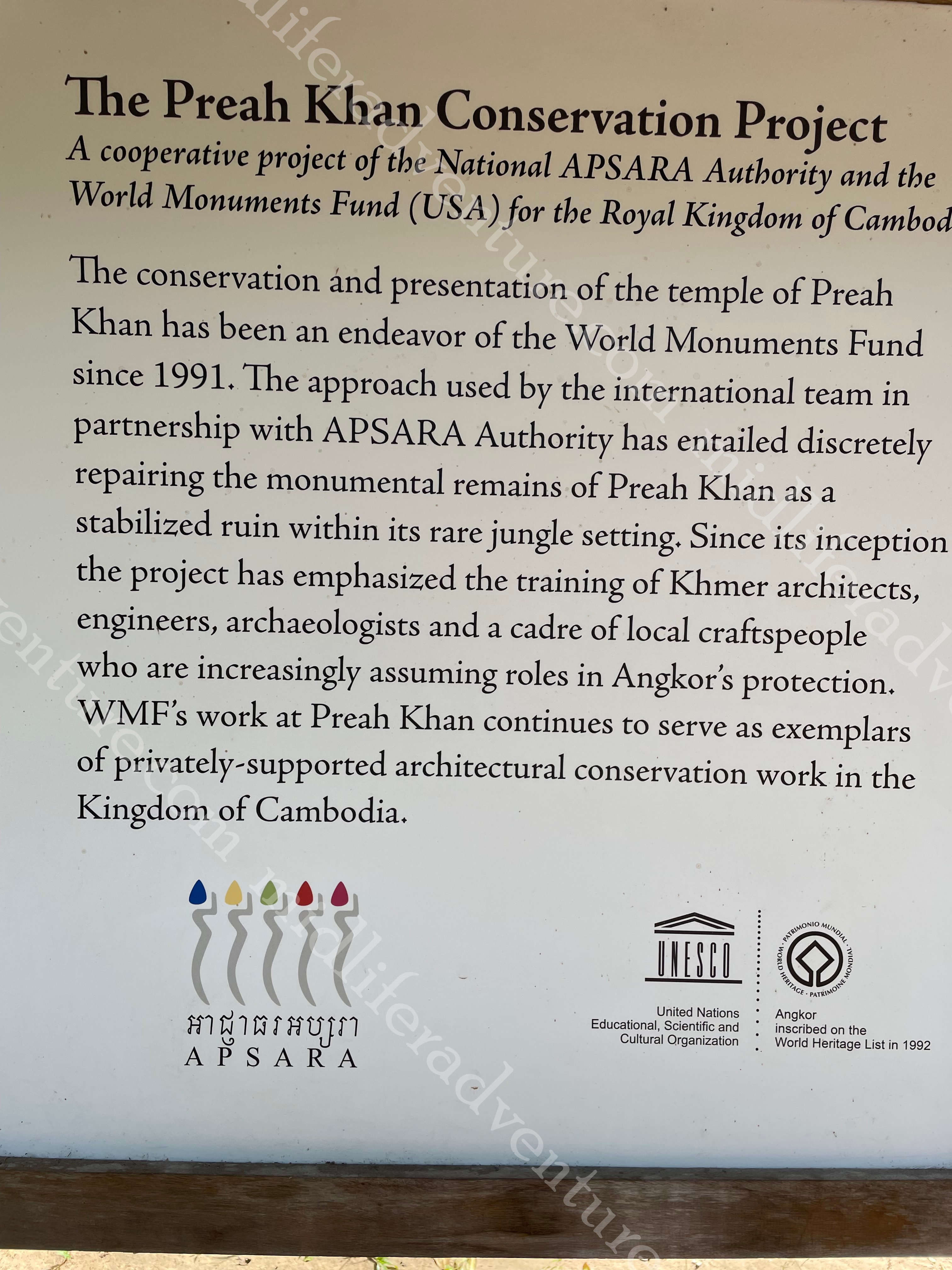


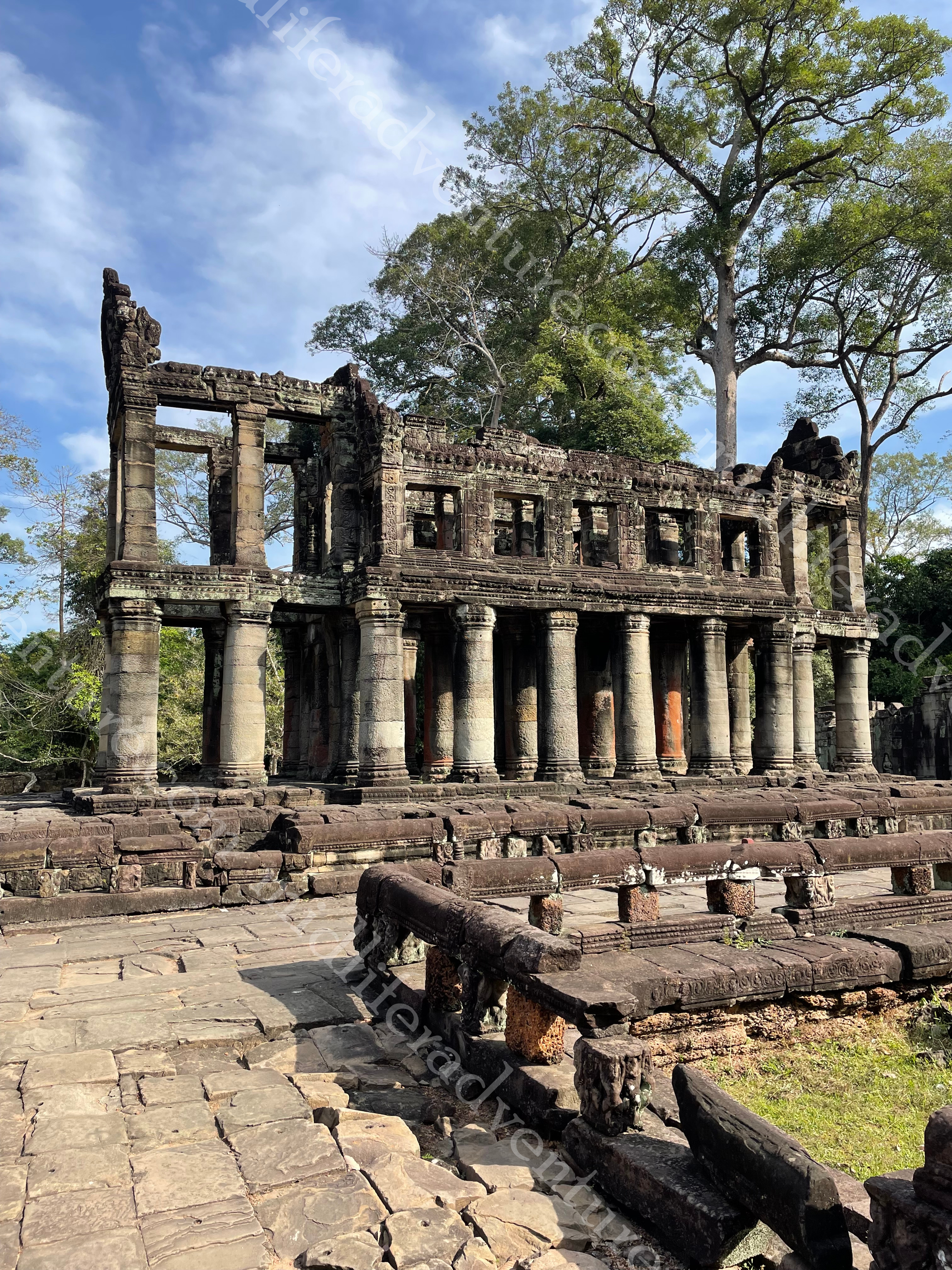
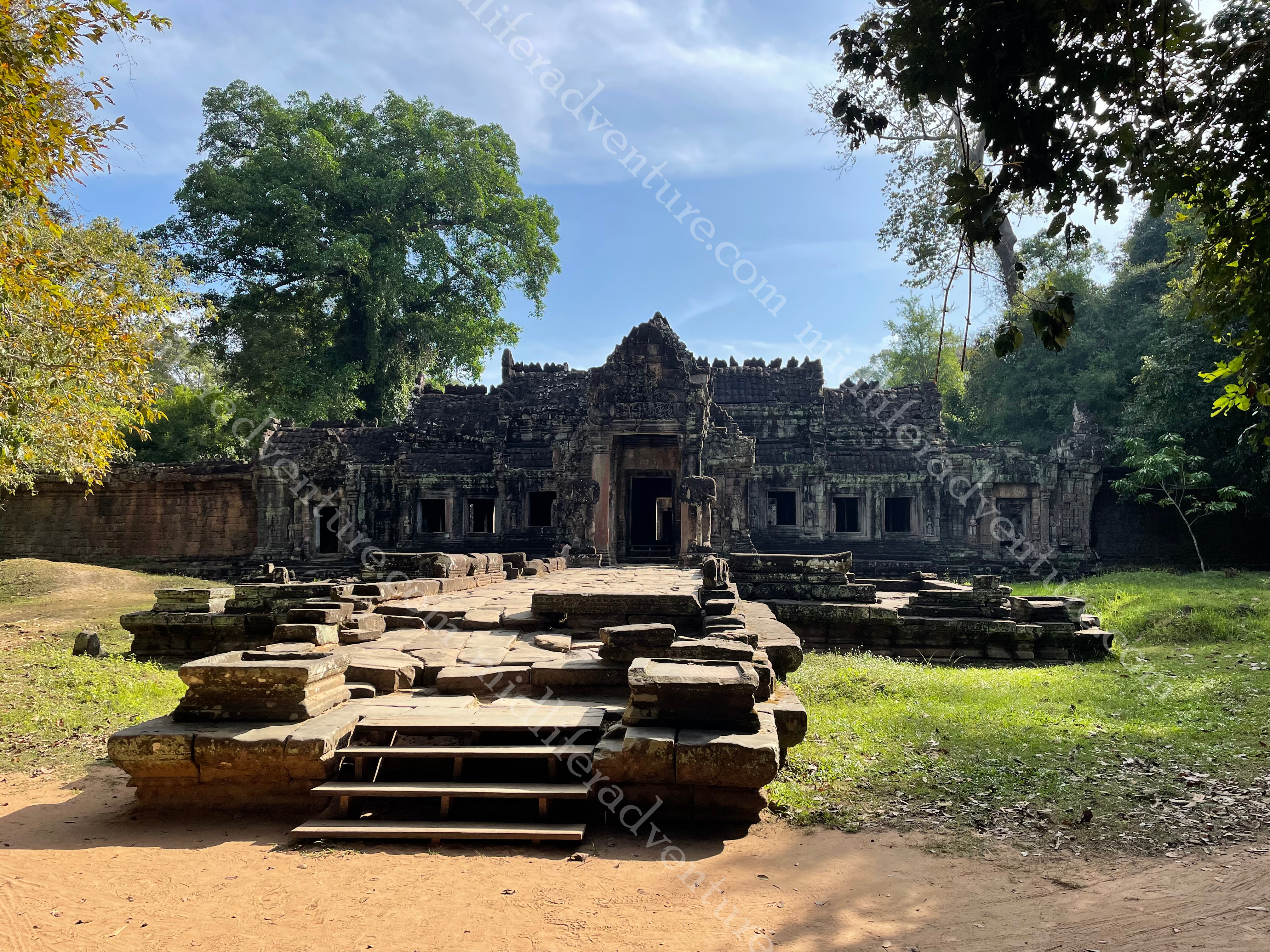
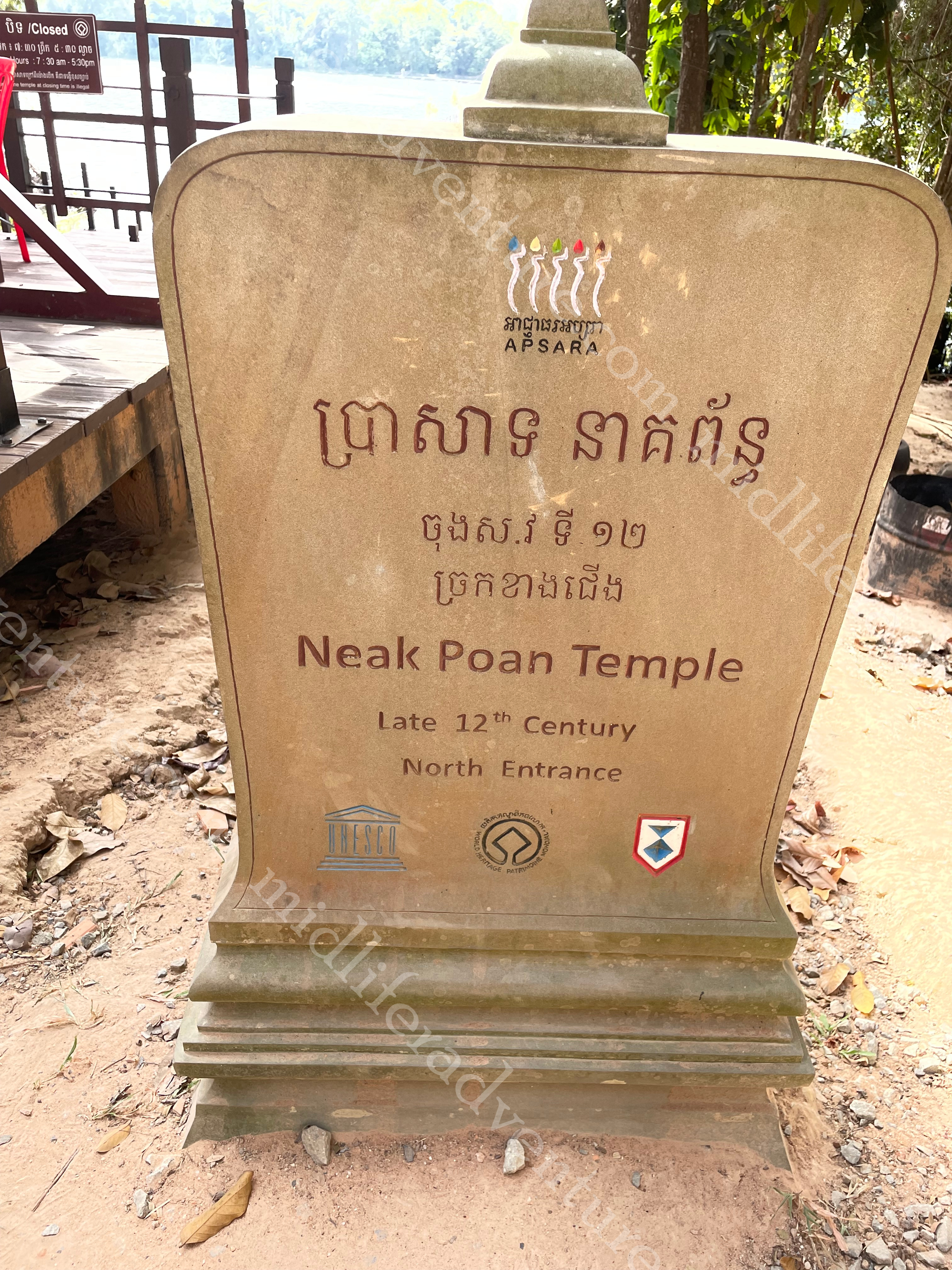
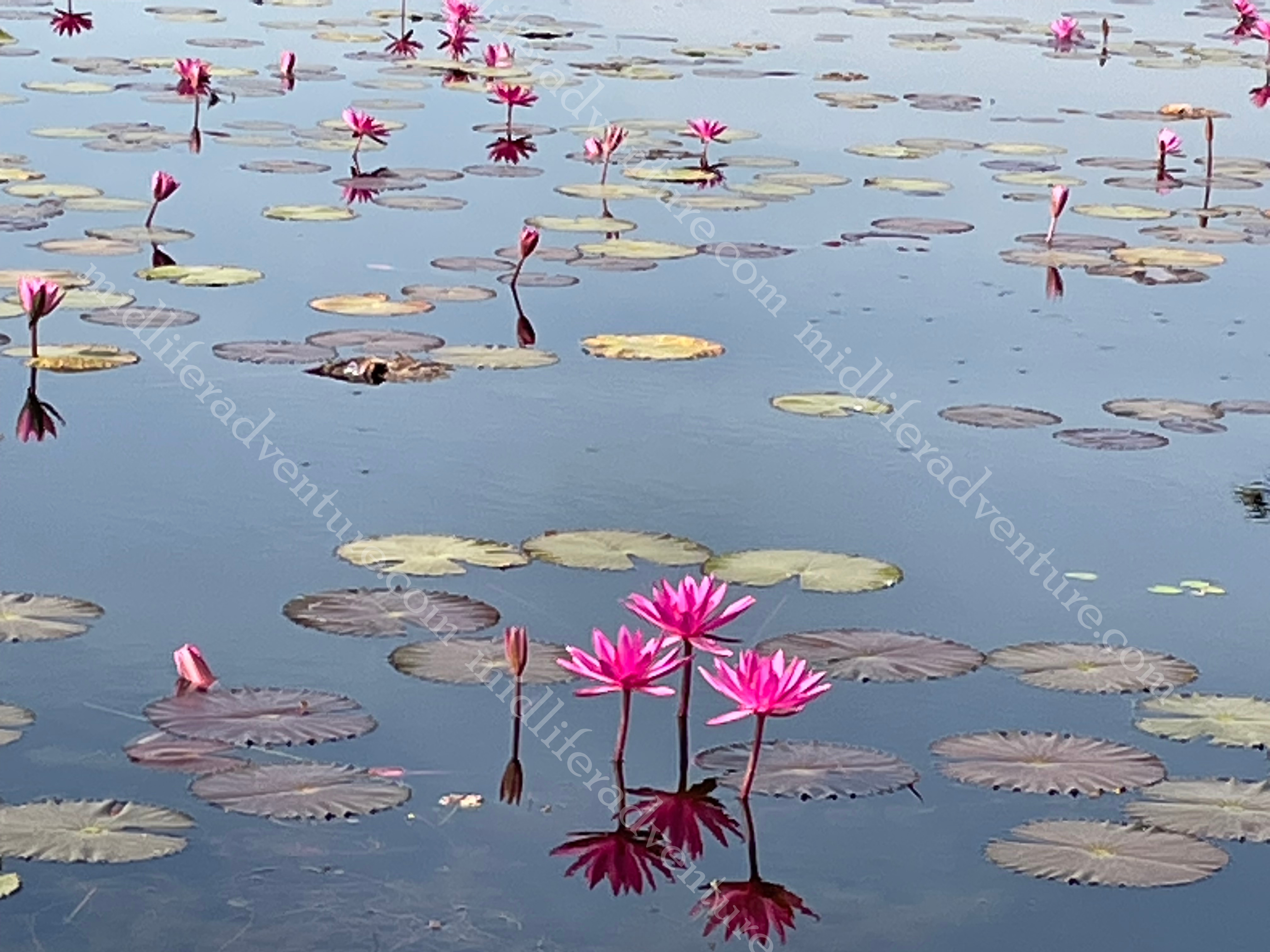
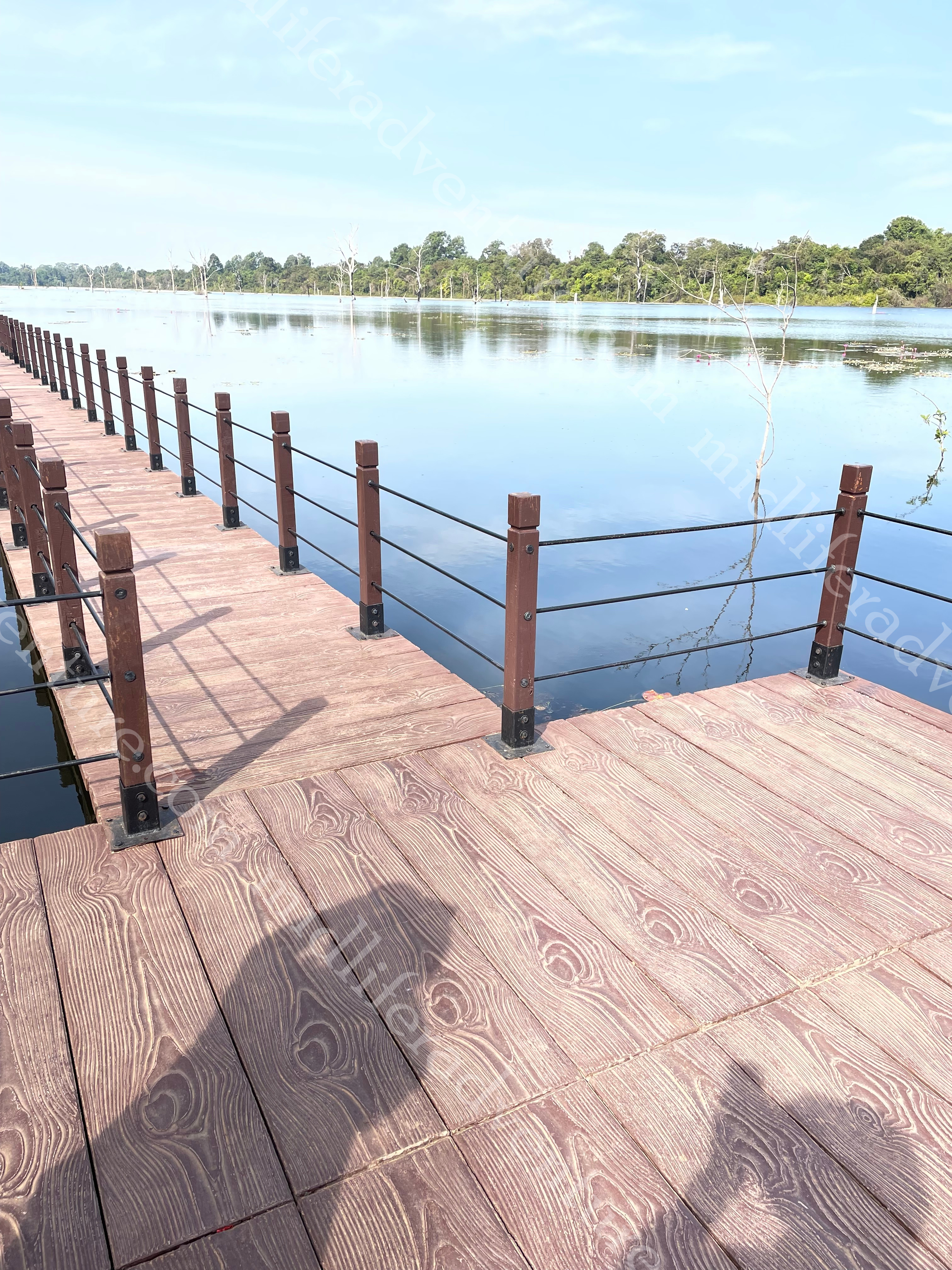
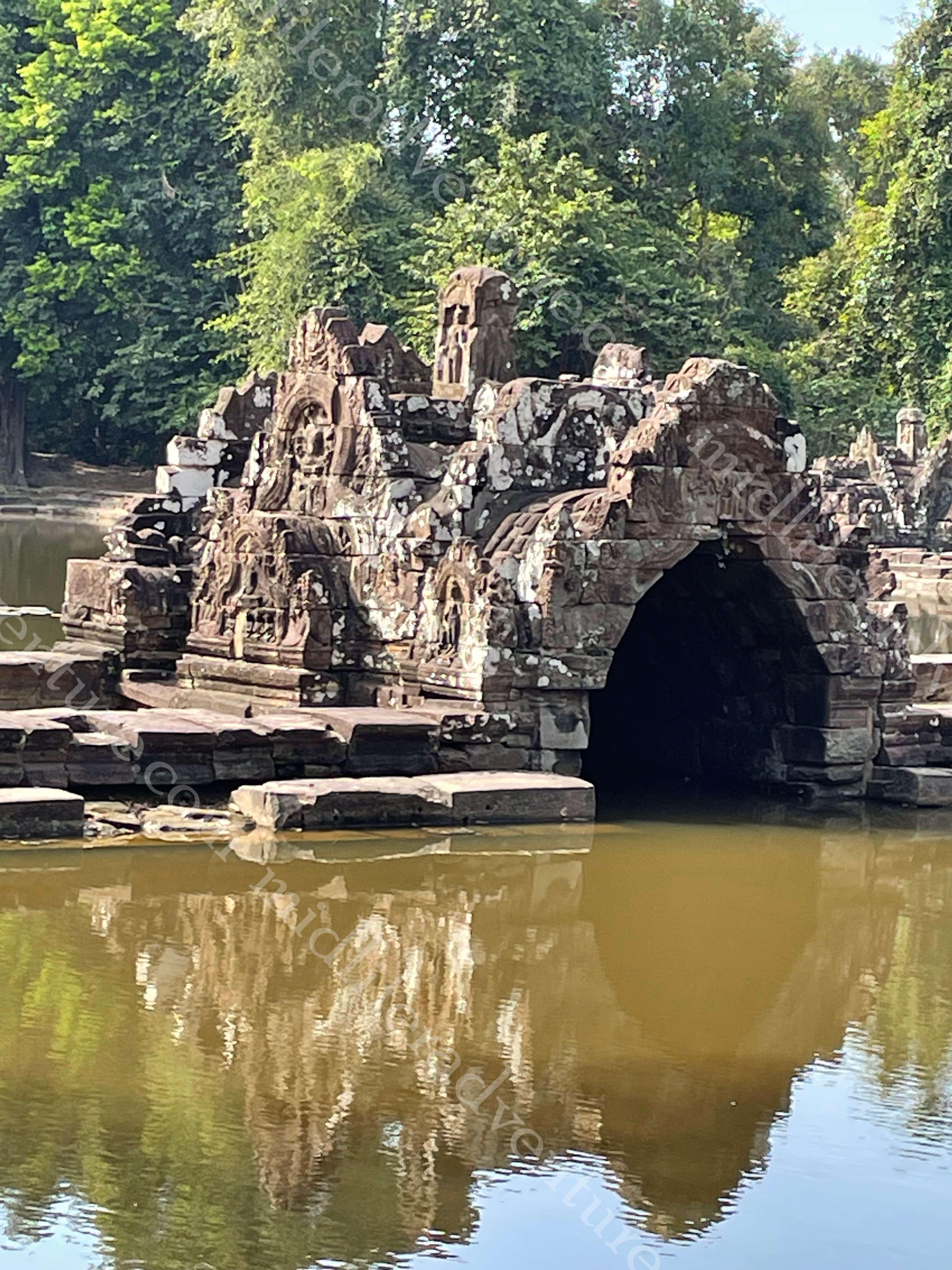
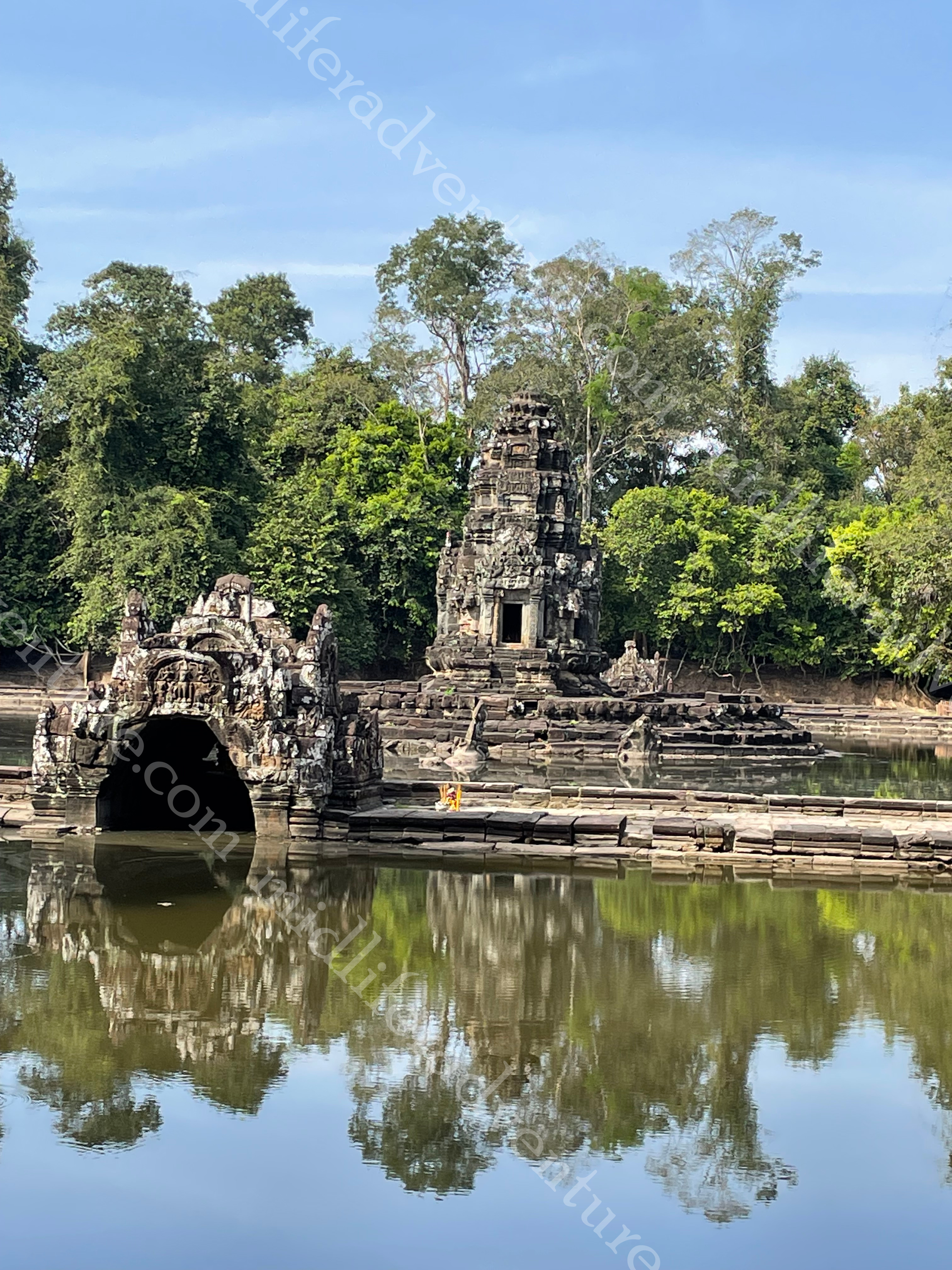
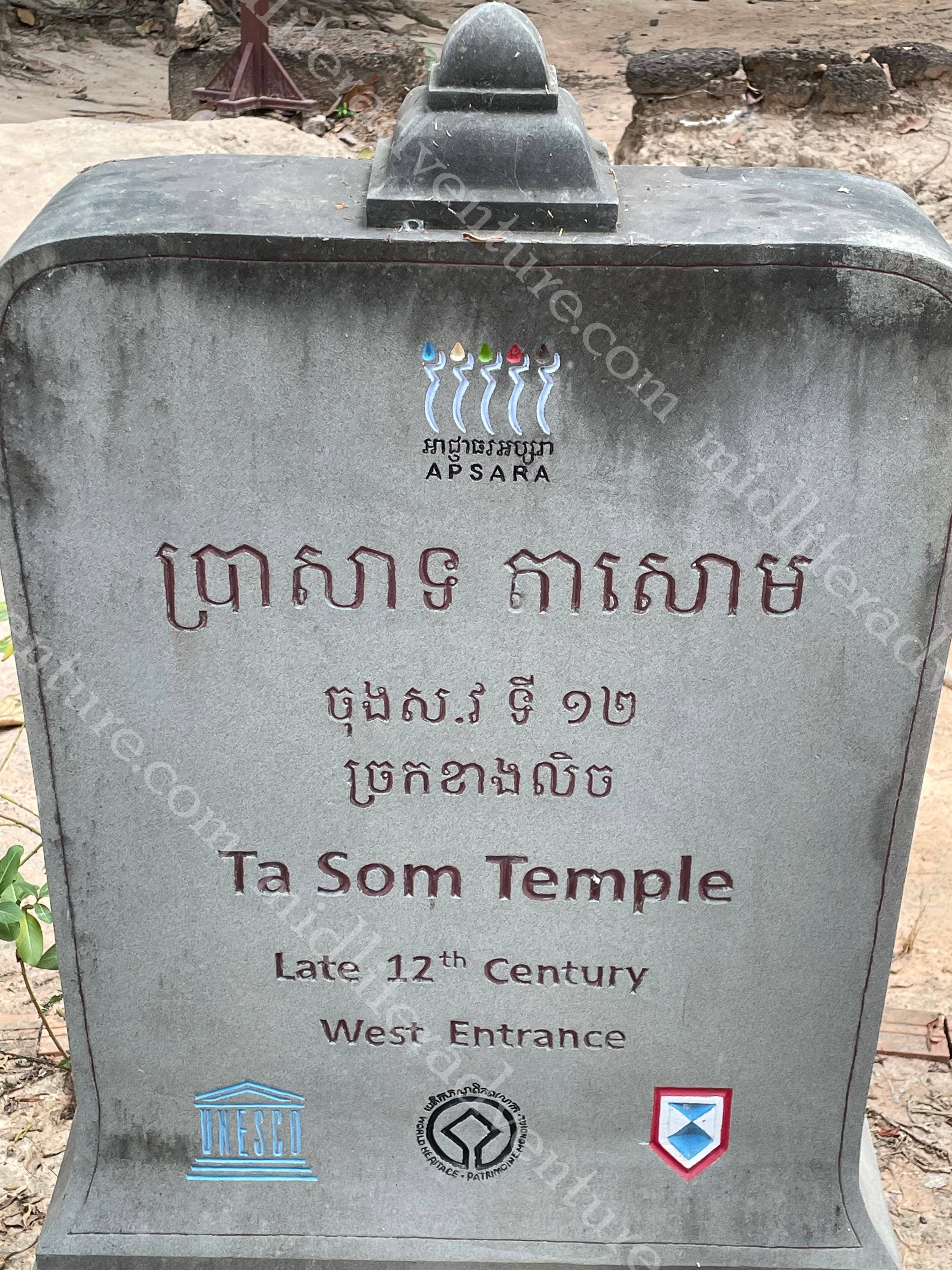
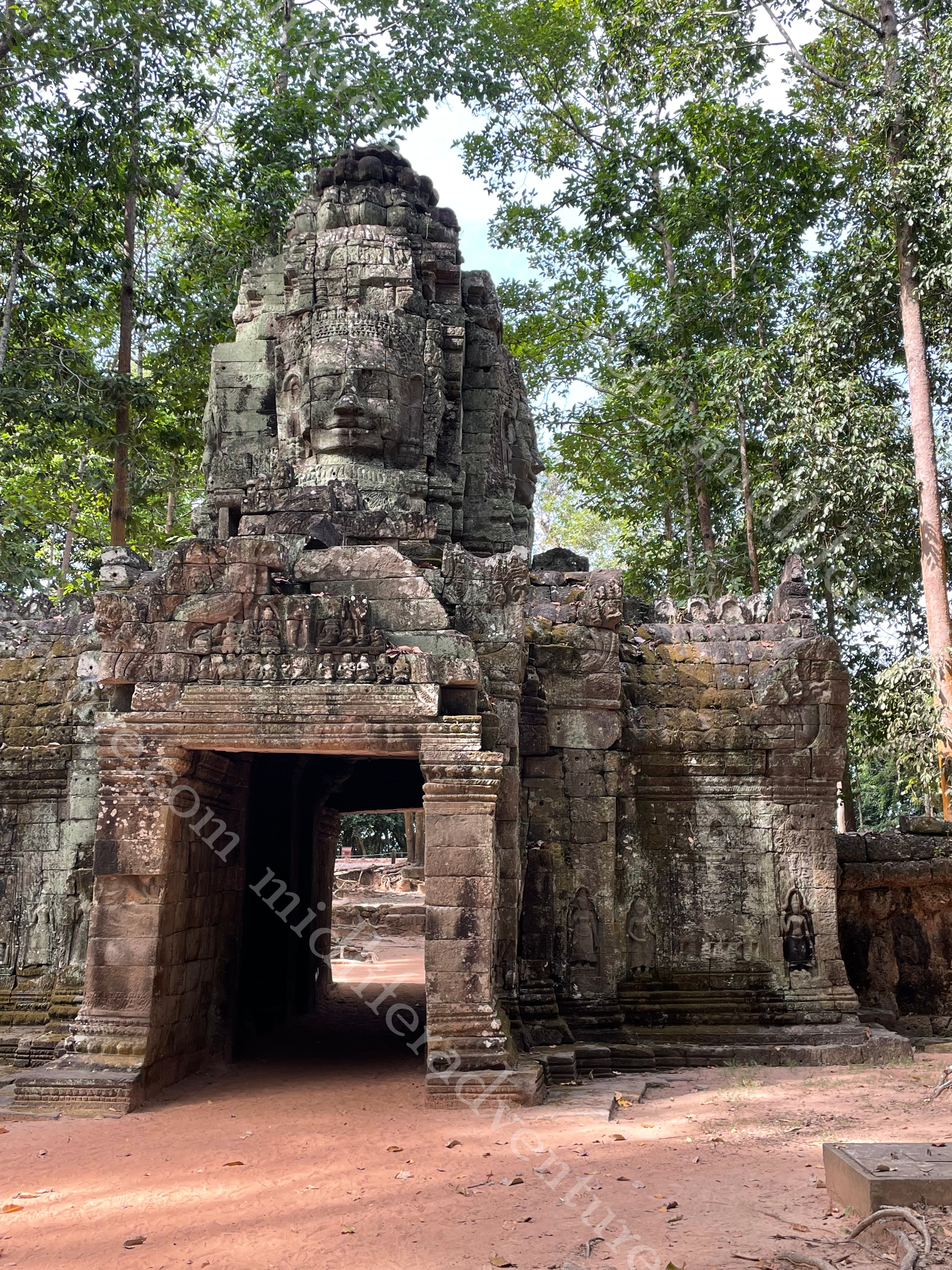

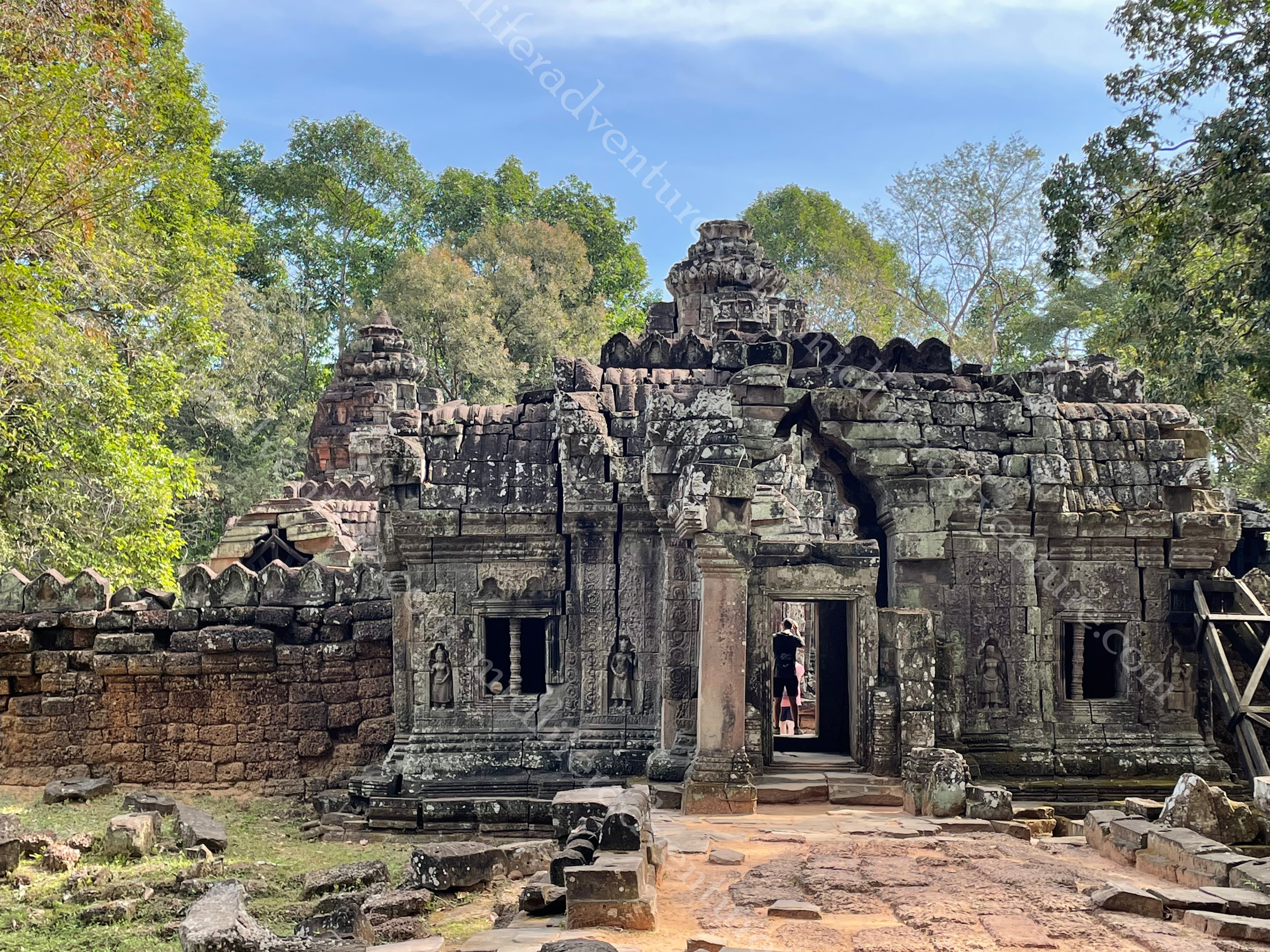
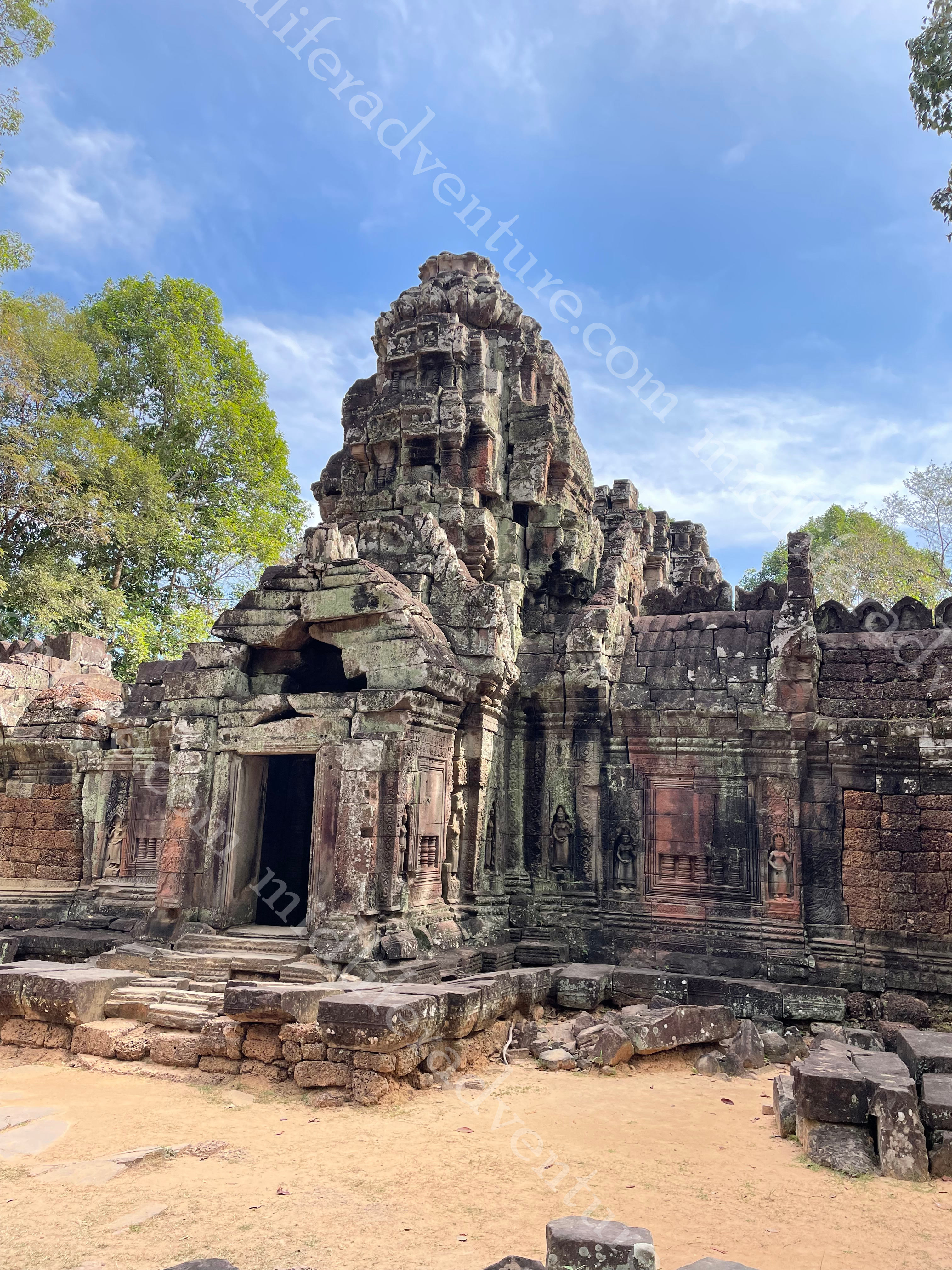
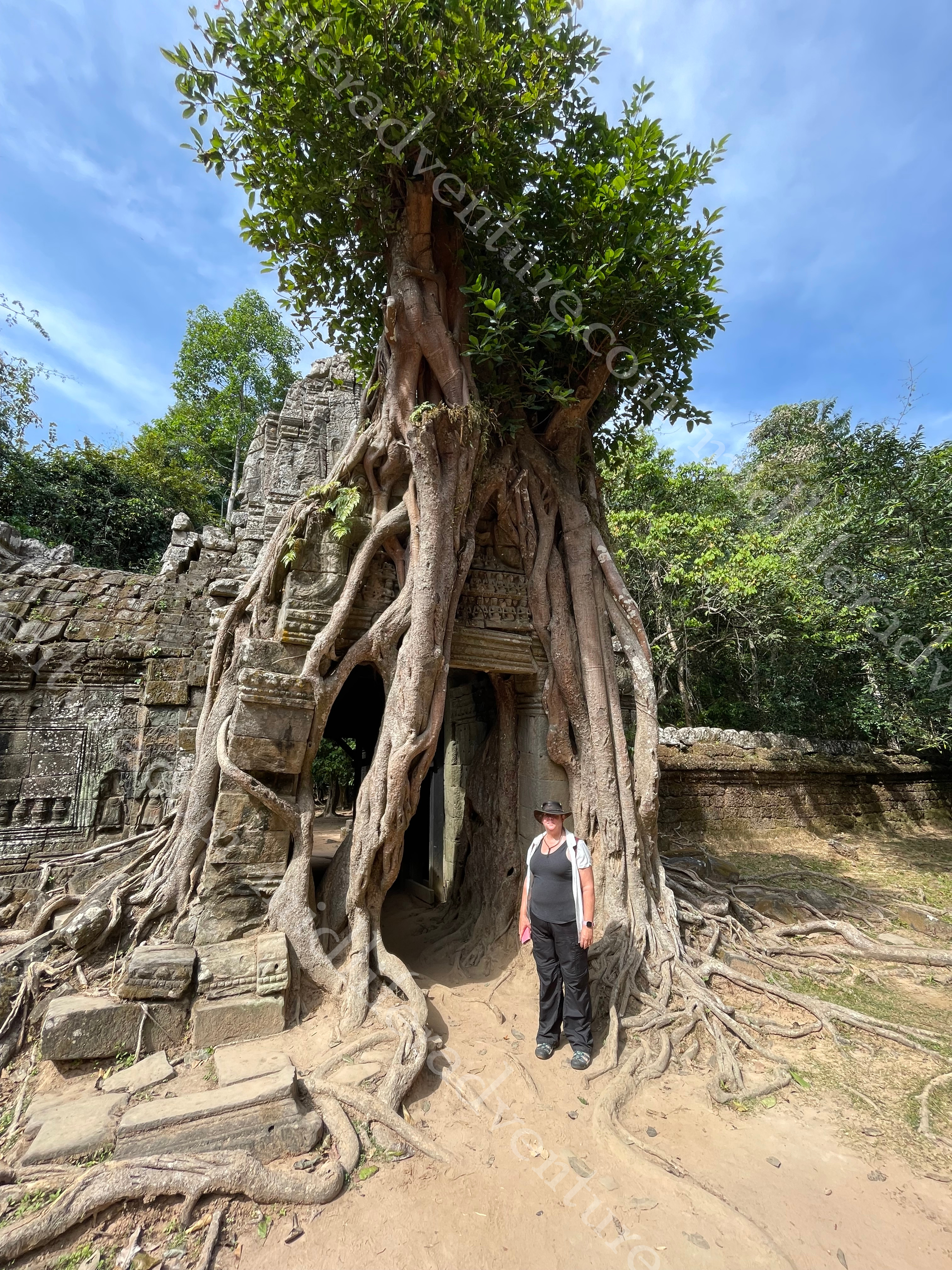
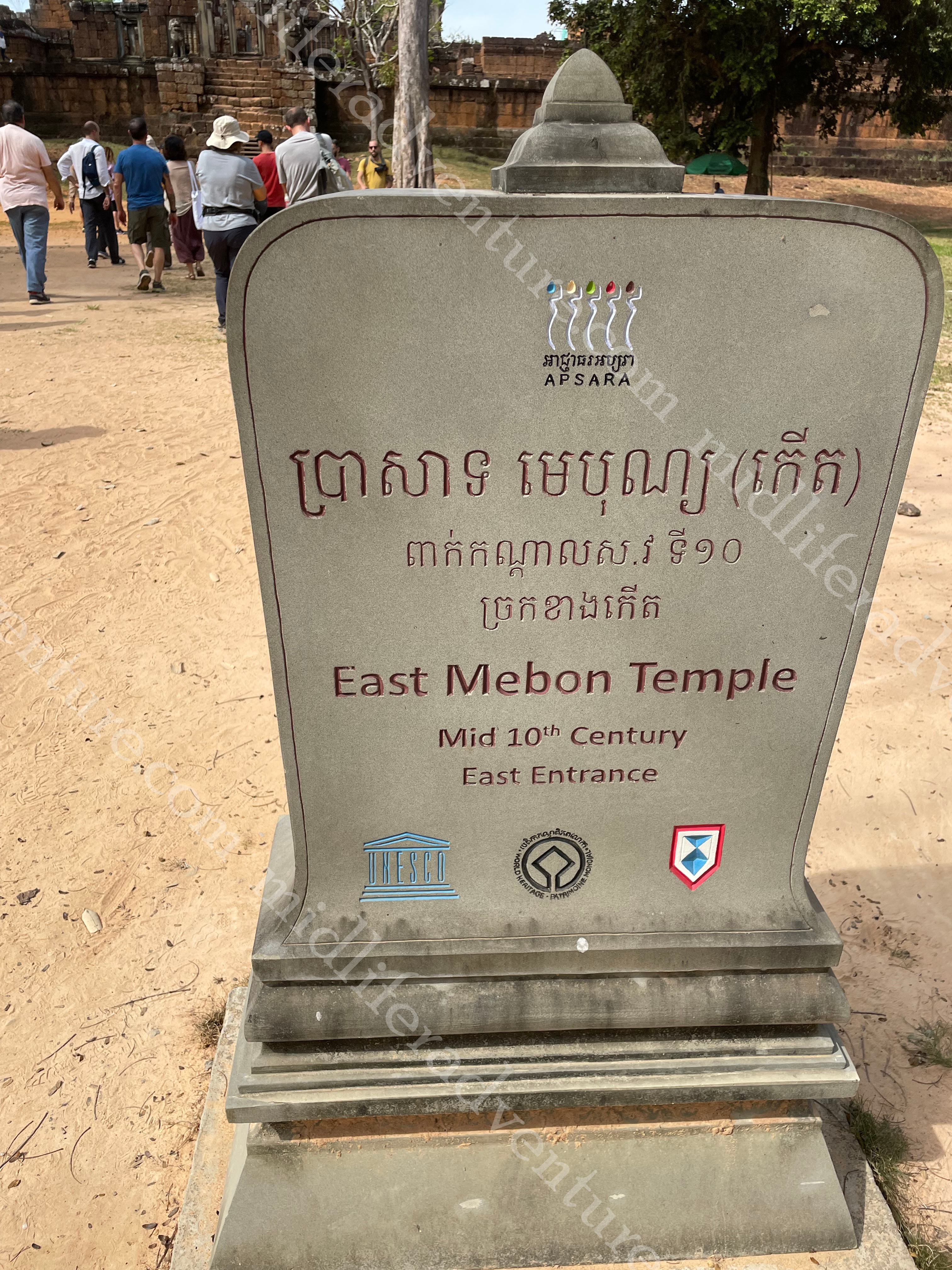
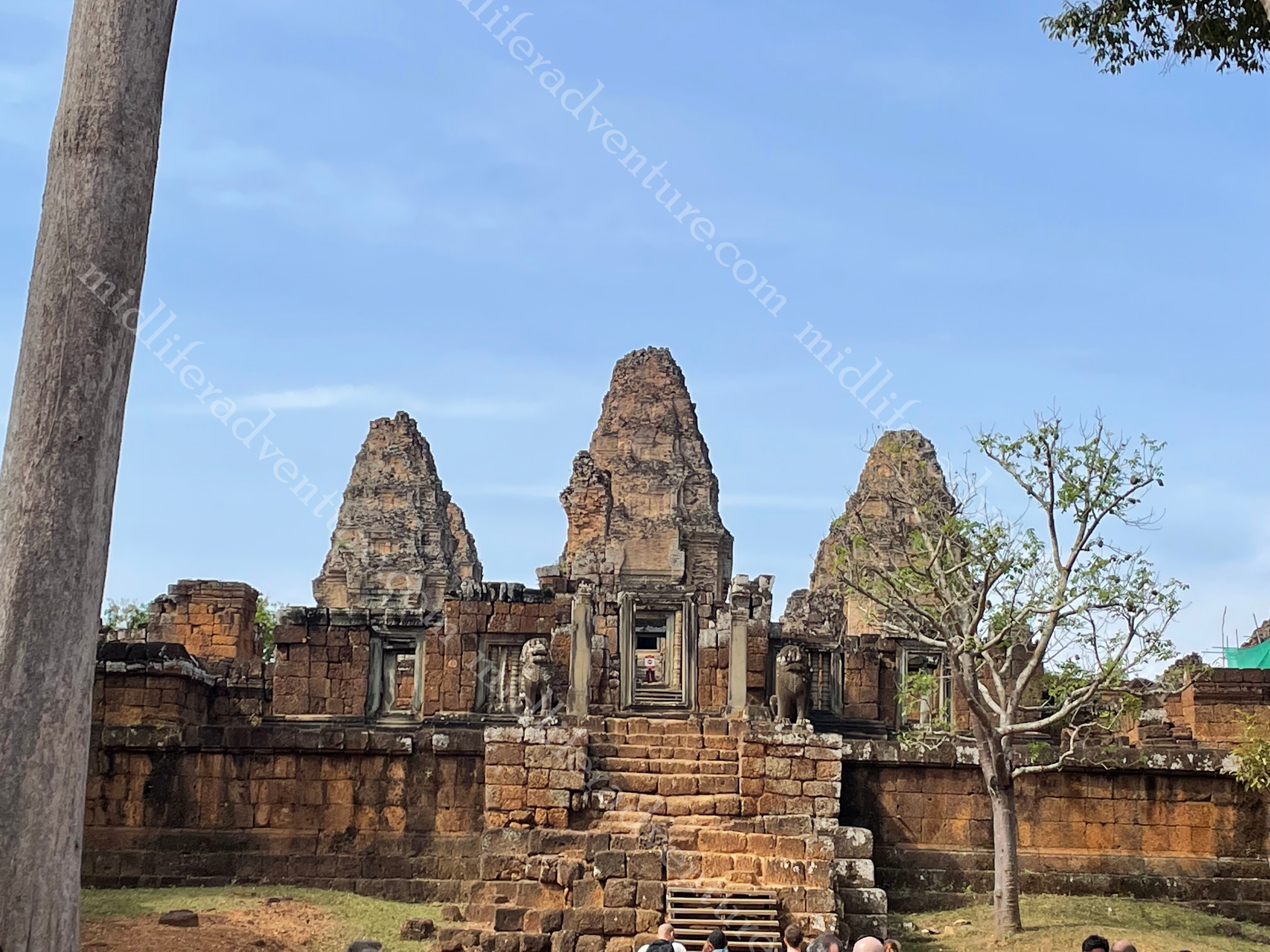
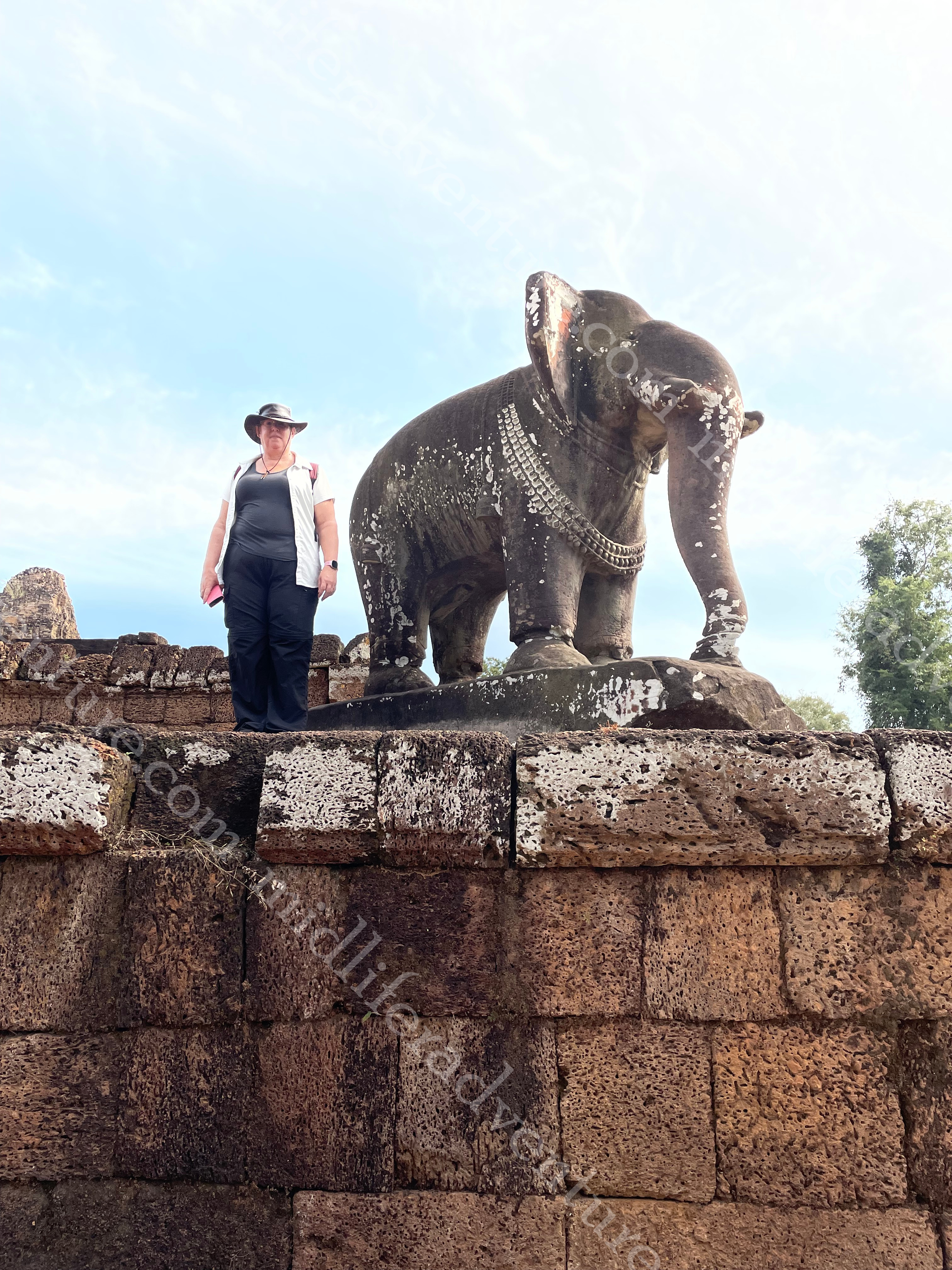

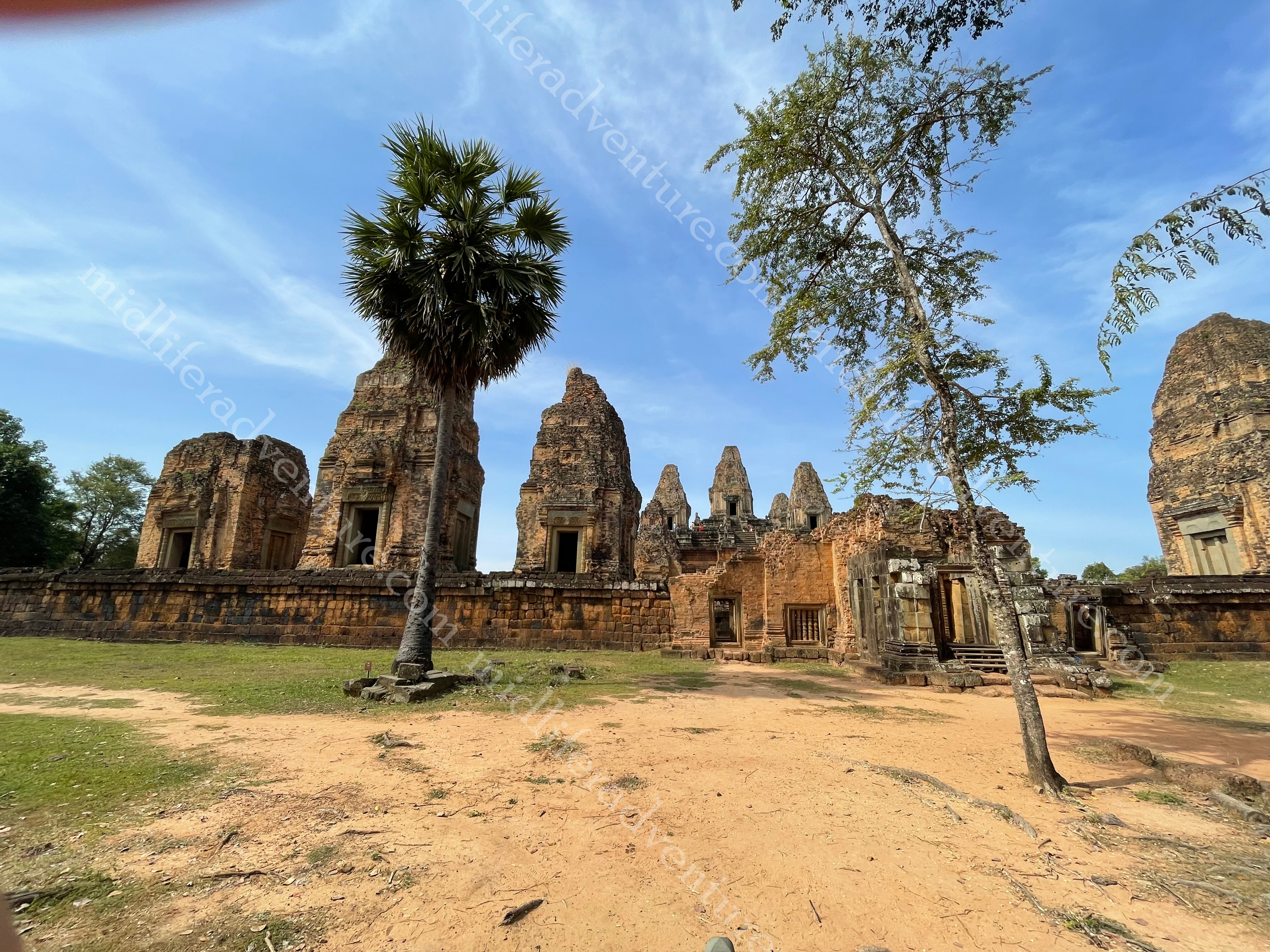
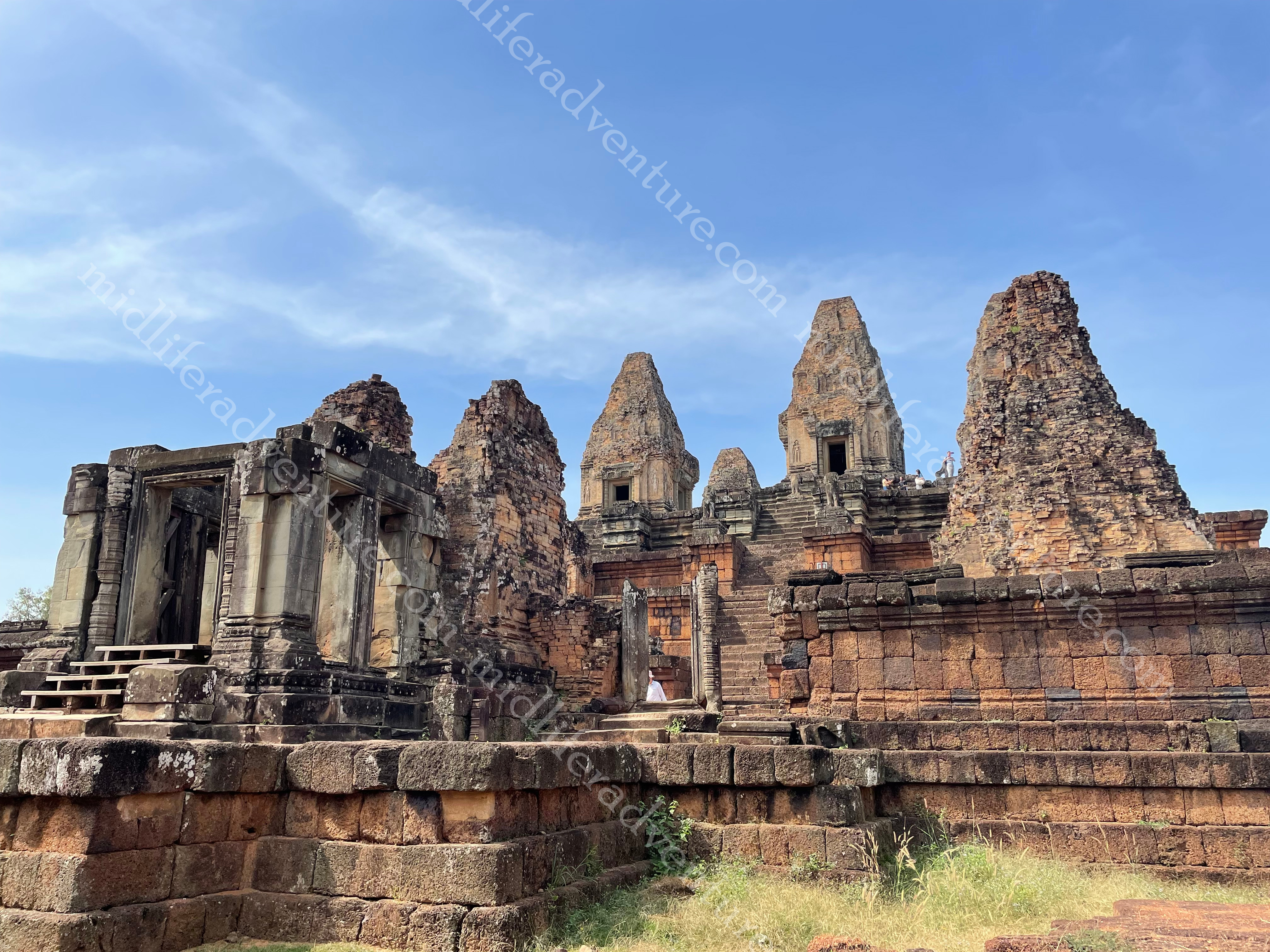
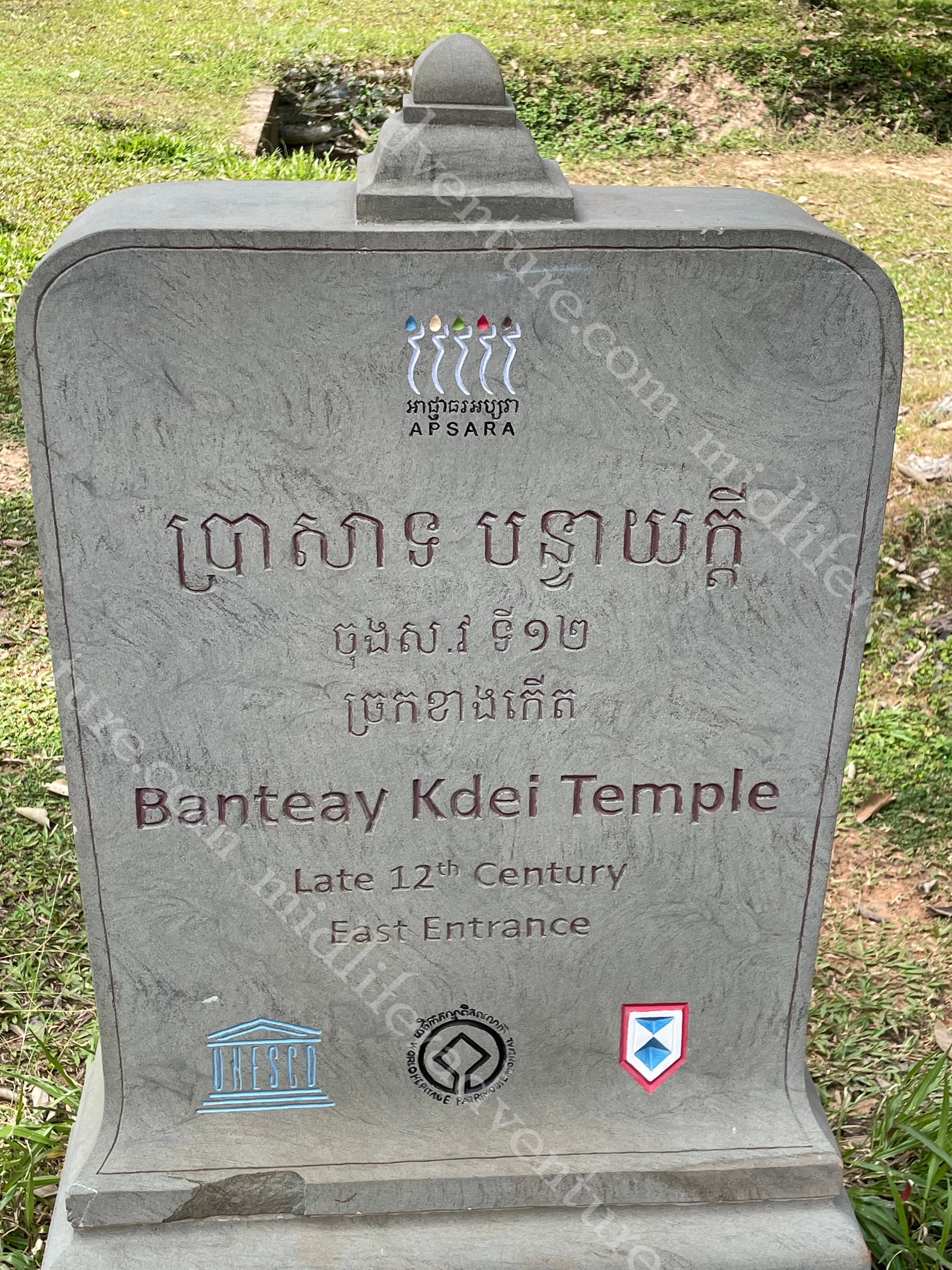

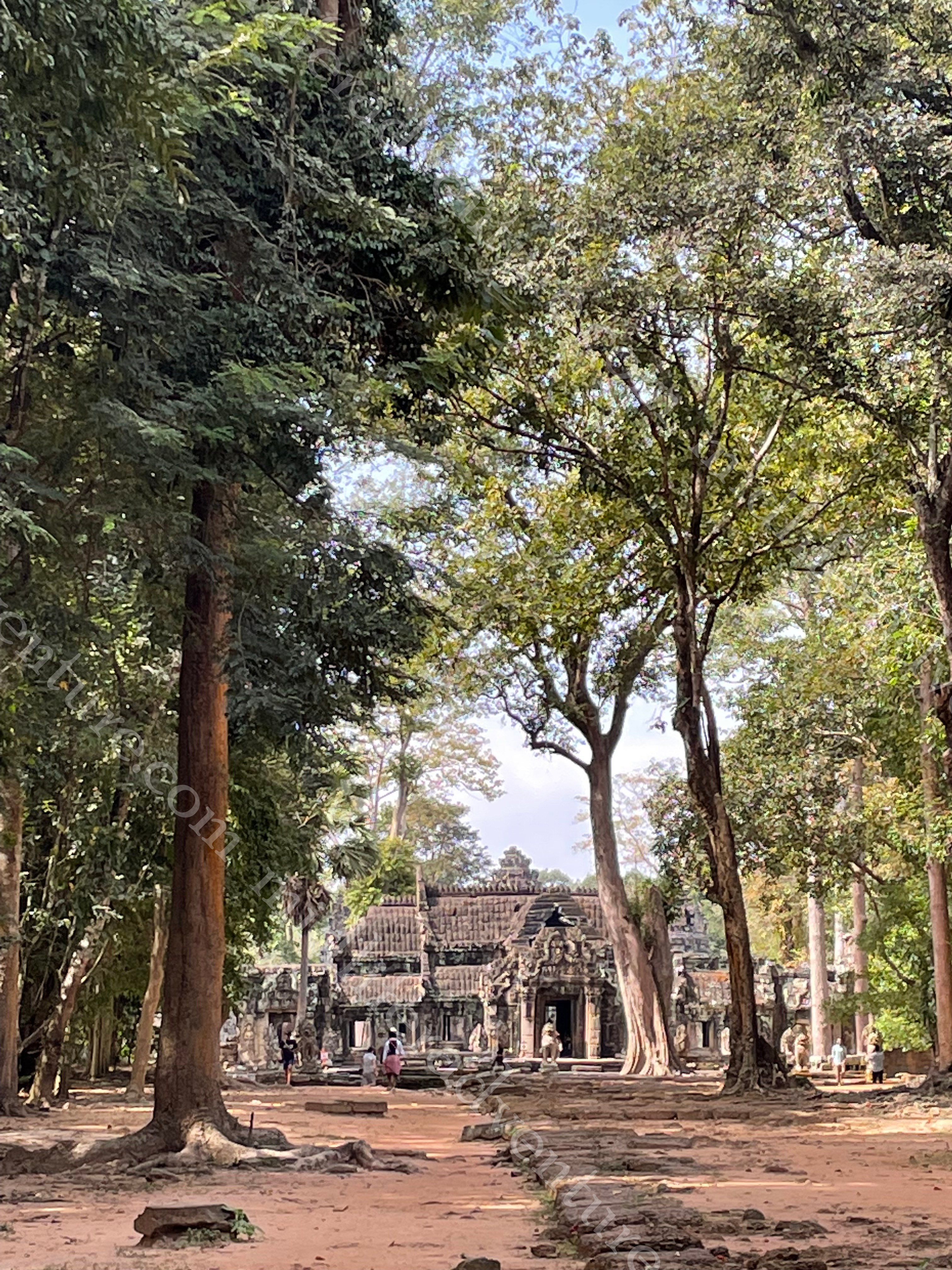
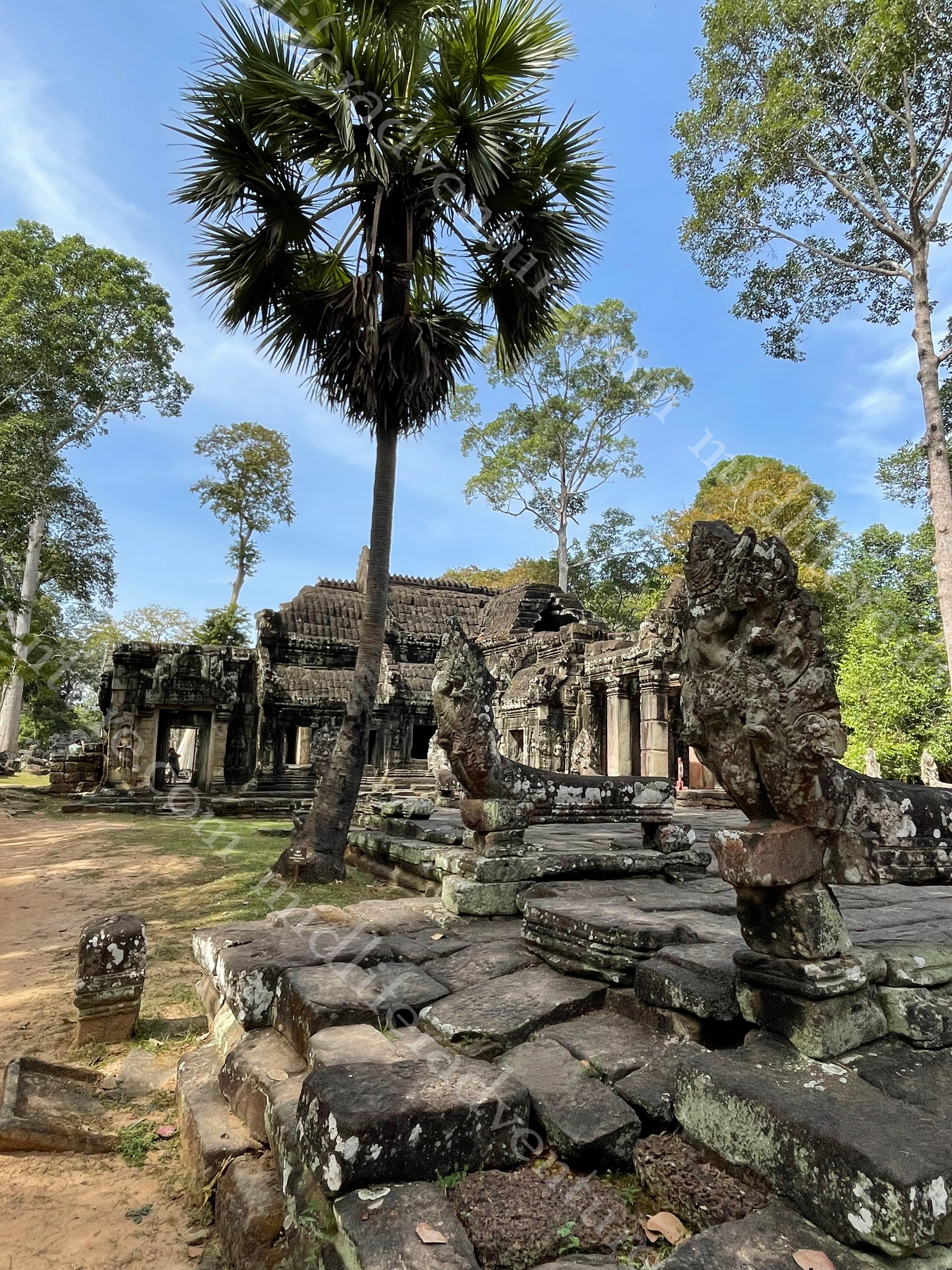
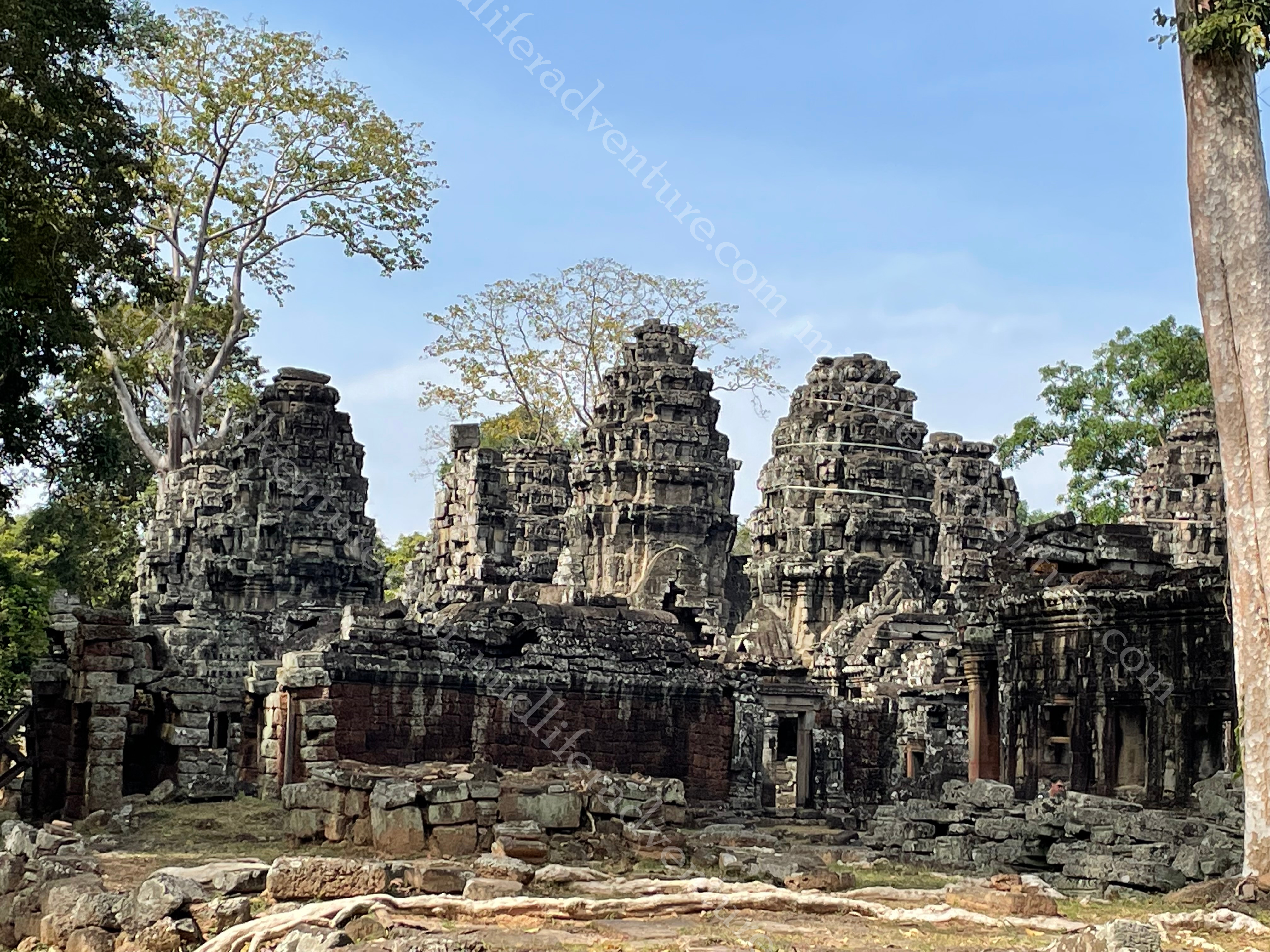
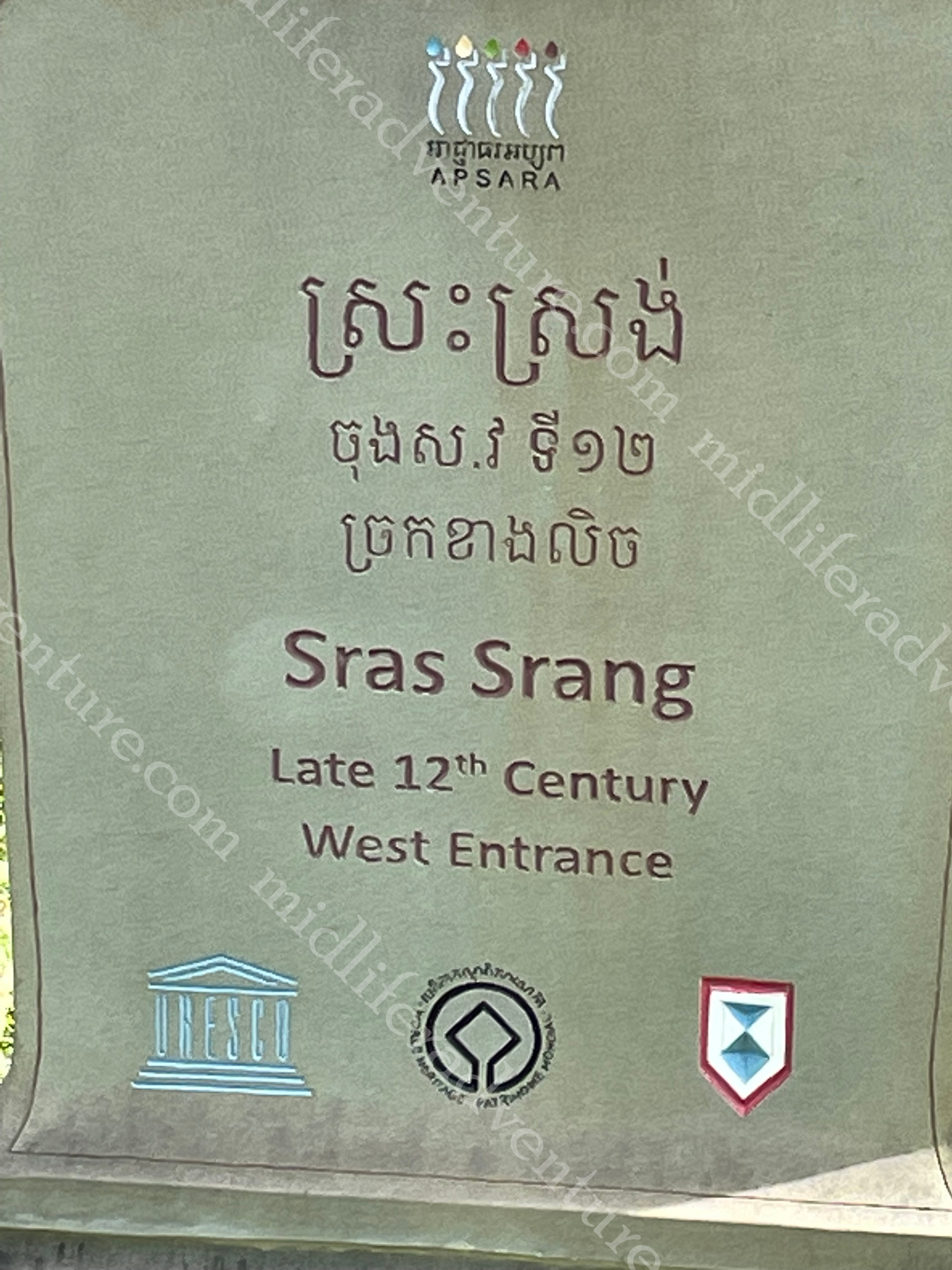
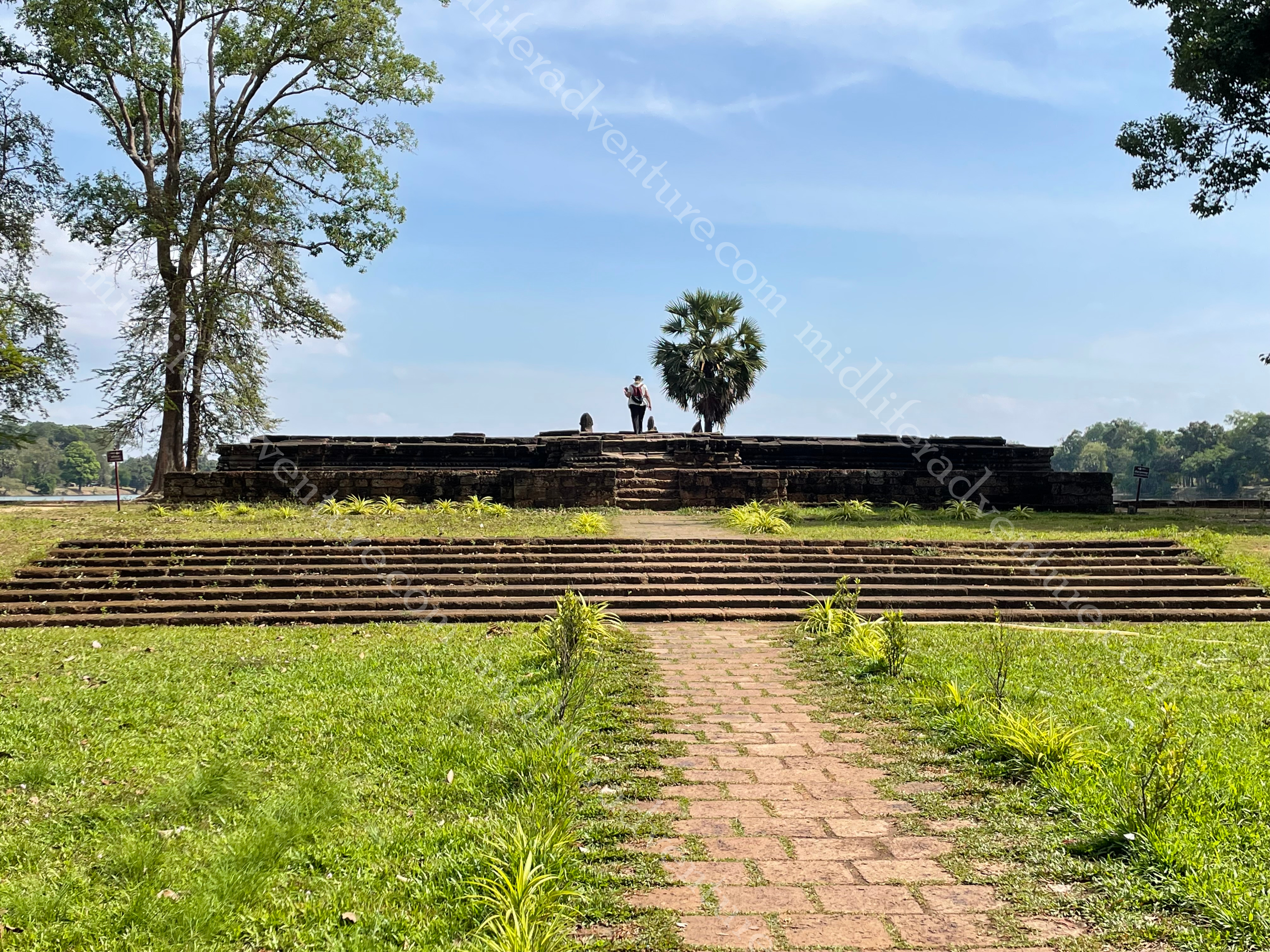

Kulen National Park
Phnom Kulen (Mountain of the Lychees) is a national park around 40 kilometres outside of Siem Reap. While it is not that far, the state of the roads make it a 90-120 minute trip and it must be done in a car or even a 4WD in the rainy season. It is said that Phnom Kulen is the birthplace of the Khmer empire and was even the site where King Jayavarman II declared independence (around the 9th century). Much of the stone used in the temples of Siem Reap was mined here and transported to the temples. But today it is the site of a couple of really nice waterfalls, a reclining buddha and the river of 1000 lingas (phallic symbol of the Hindu god Shiva – so I am going for the river of 1000 dicks).

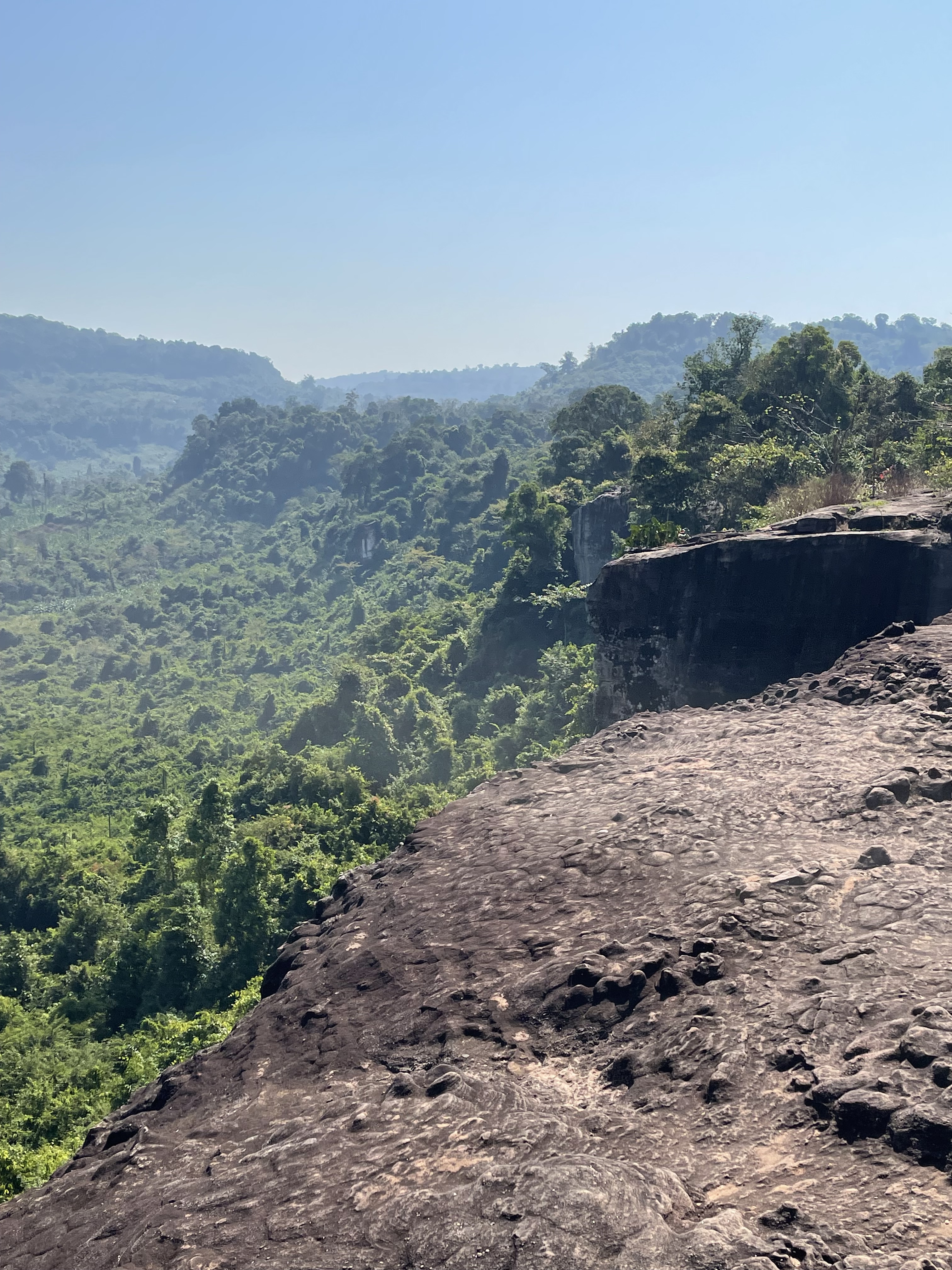
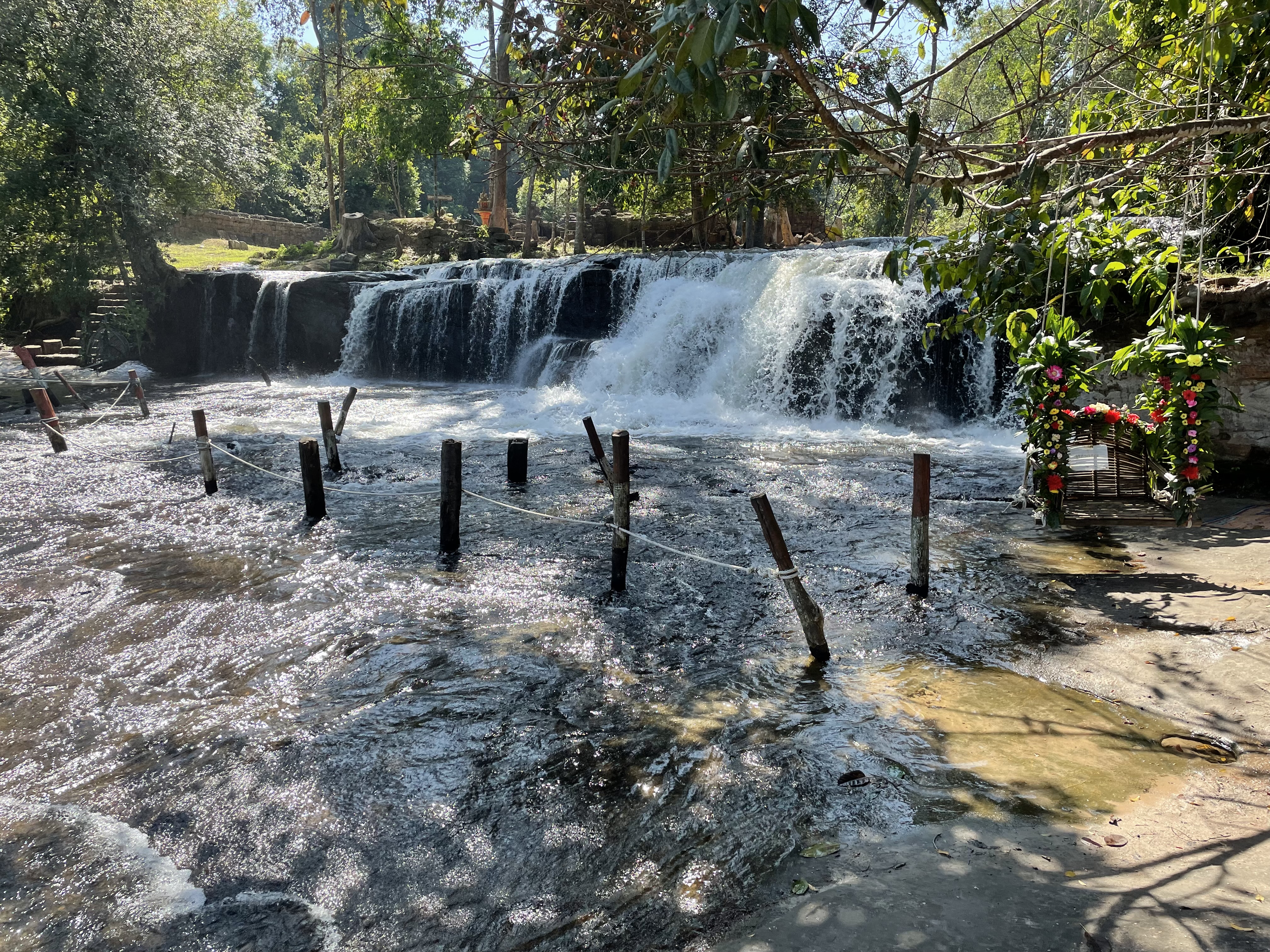
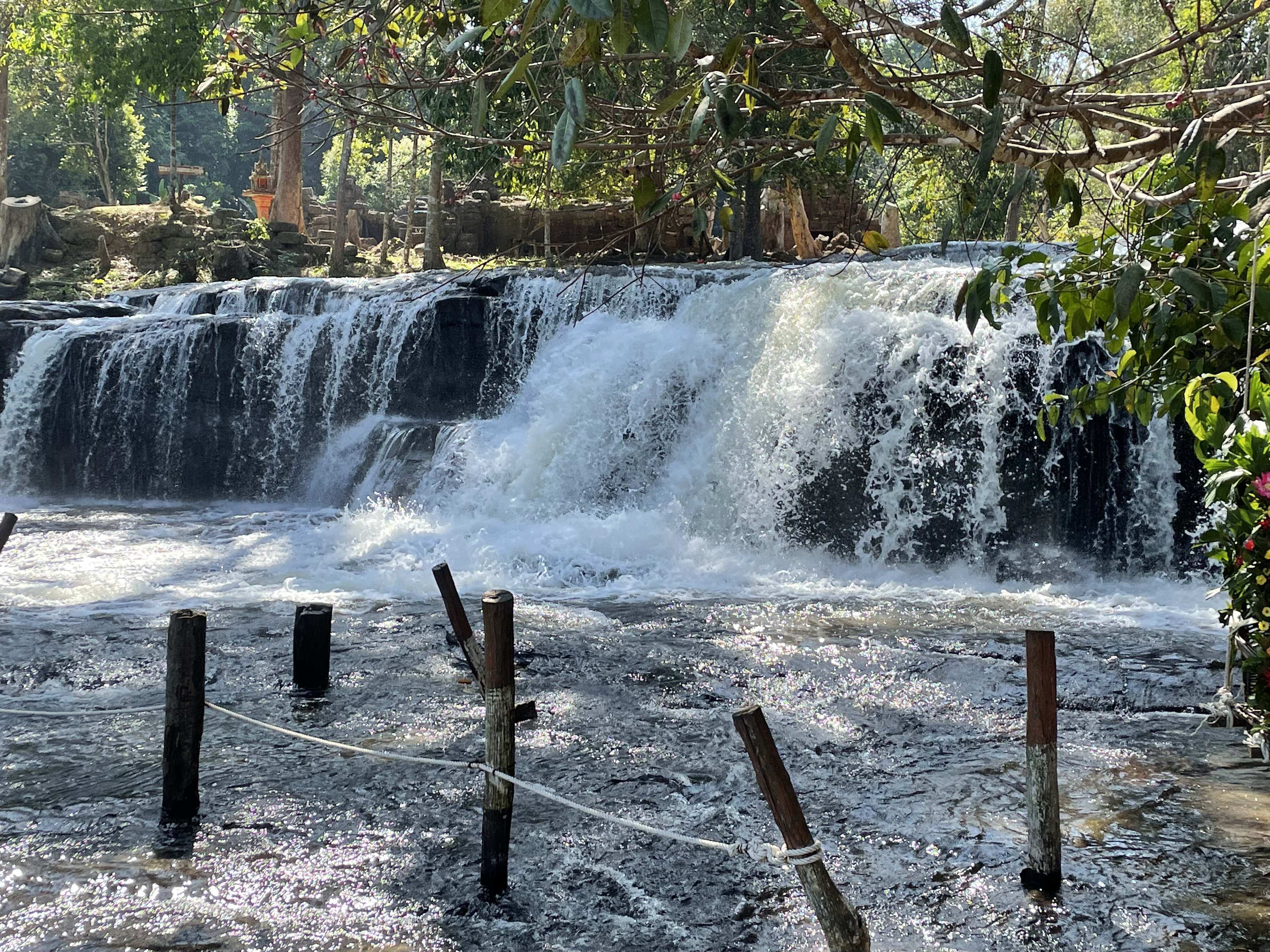


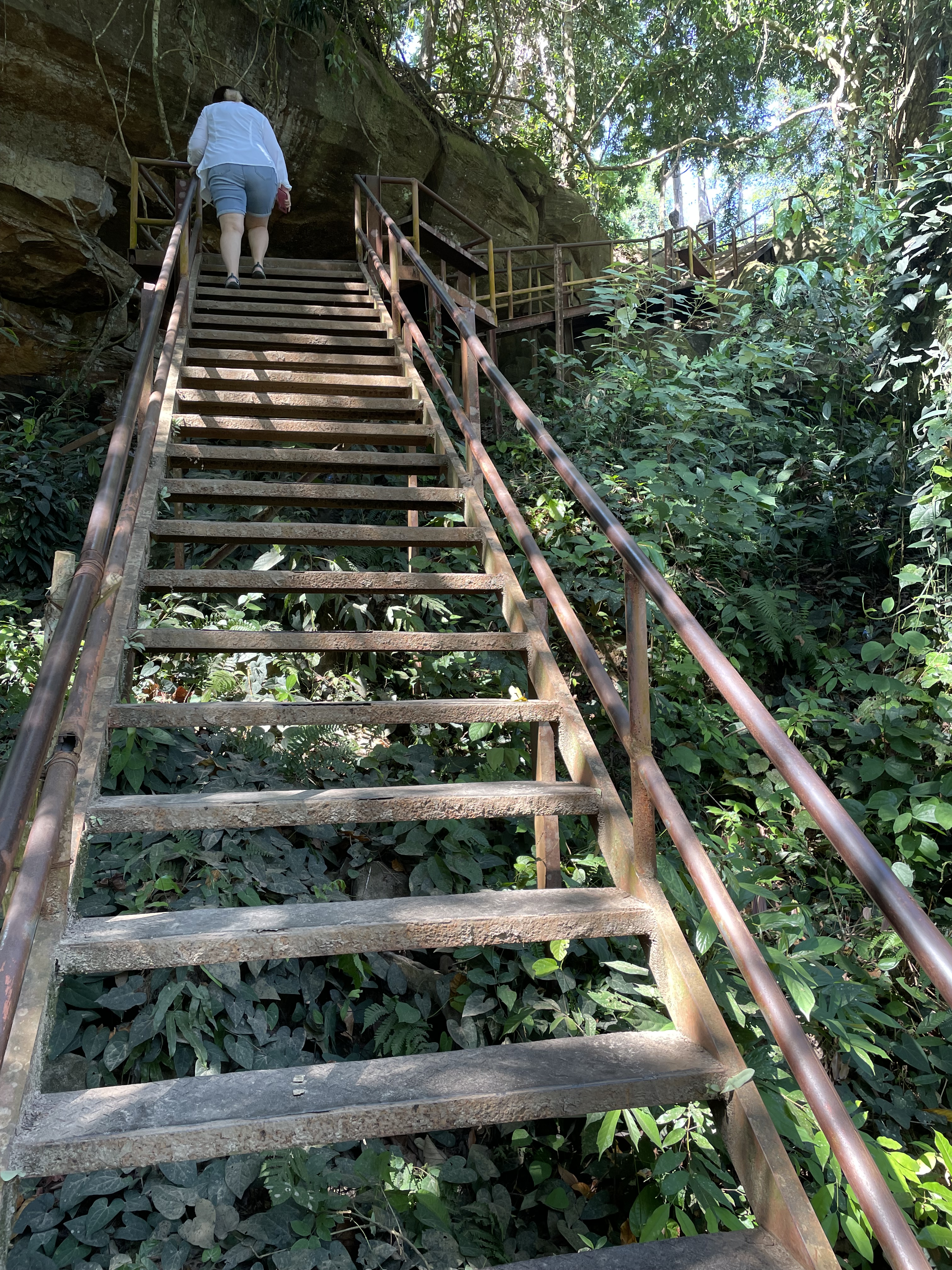
The first thing to note is that the temple ticket that you have does not count for this area…so you have to pay for another one. We ended up travelling around 40 km out of town, we spent 3 times the price on transport to that paid for seeing the temples. In hindsight I don’t think it was worth it. The waterfalls were lovely and there was a nice outlook spot that we stopped at on the way that provided a different kind of view of the area. The buddha had seen better days but was still ok and the River of 1000 dicks was at best disappointing. If you have plenty of time then sure go ahead but on a limited time this one could be skipped.
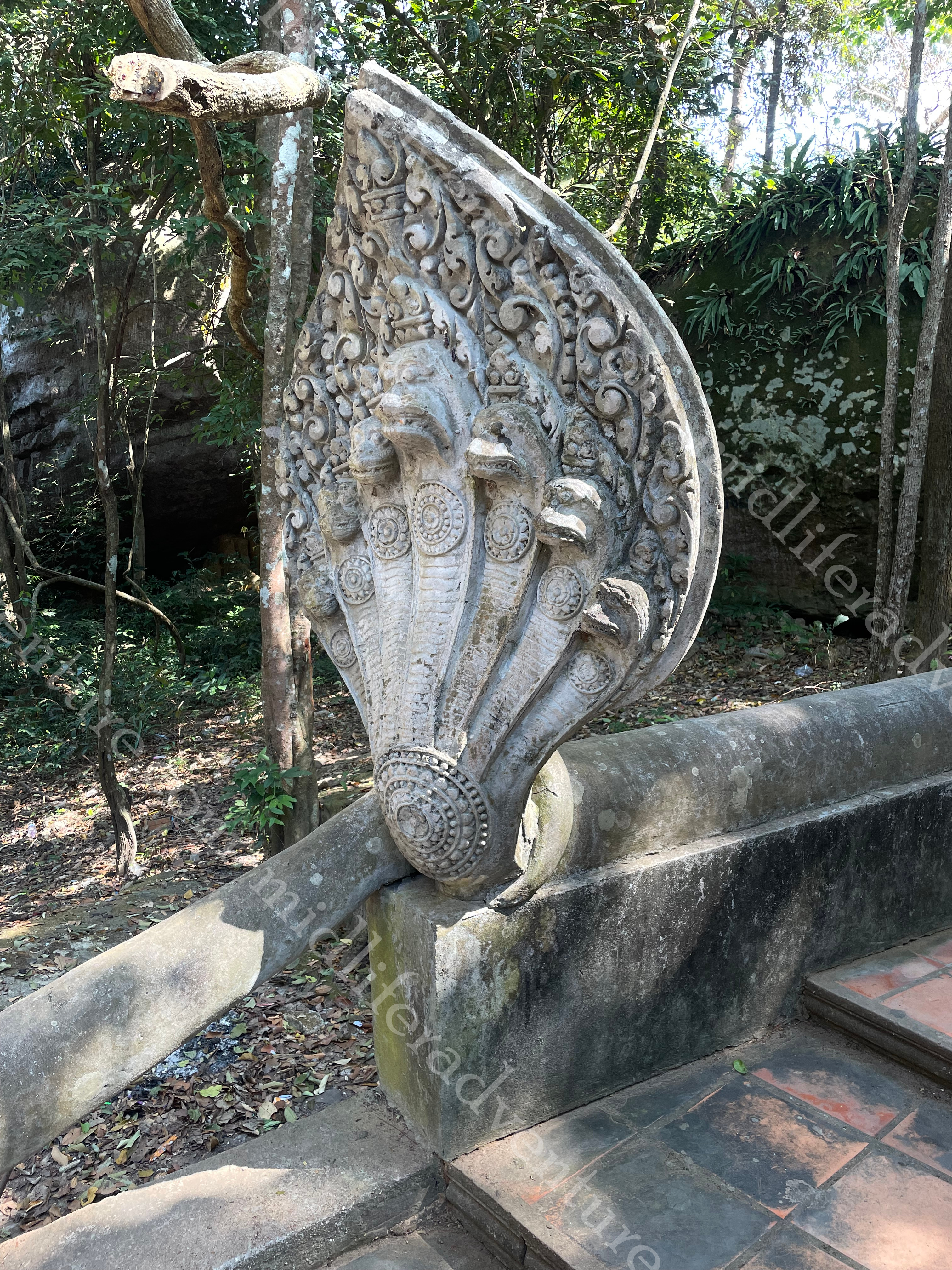
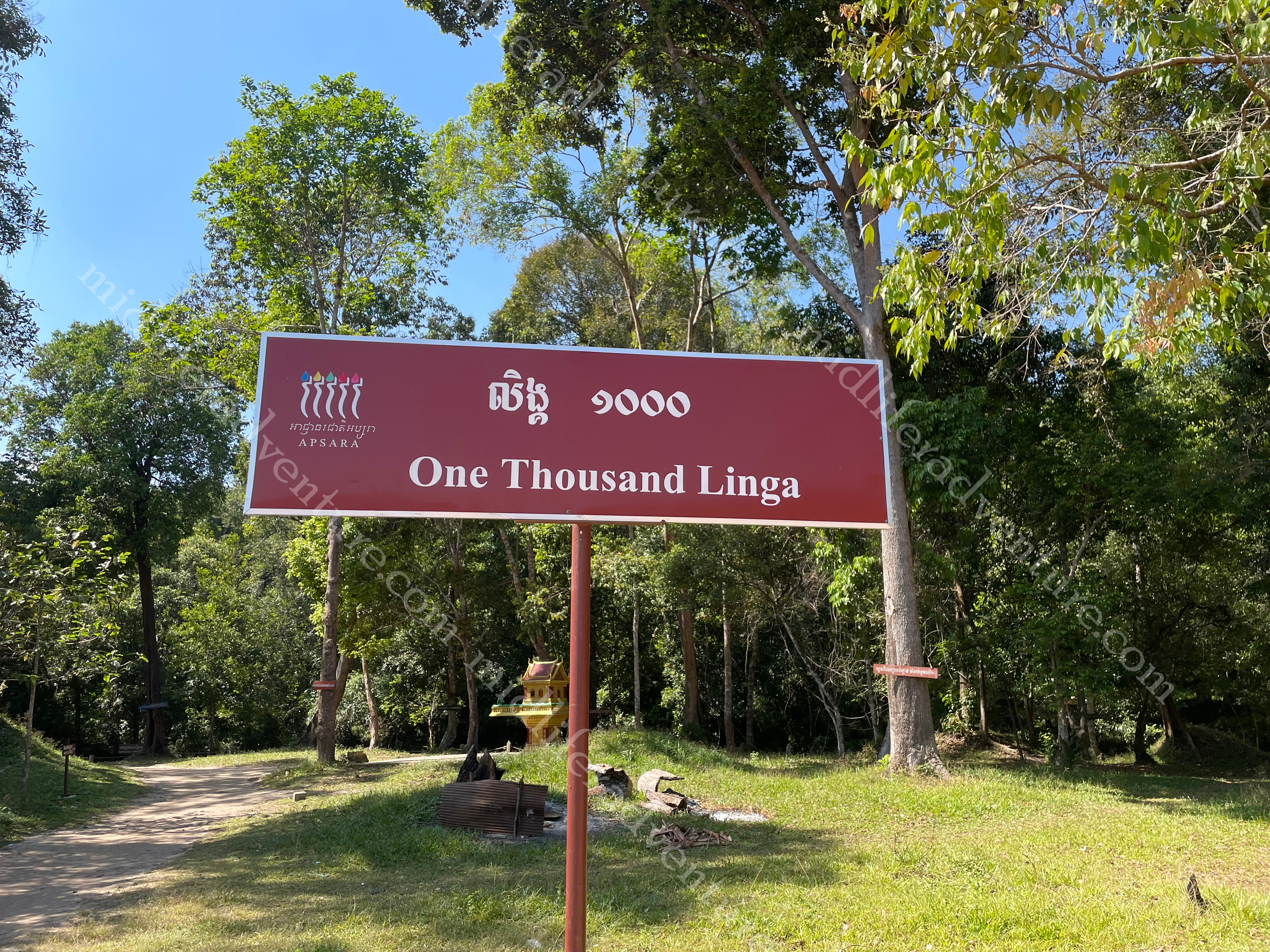
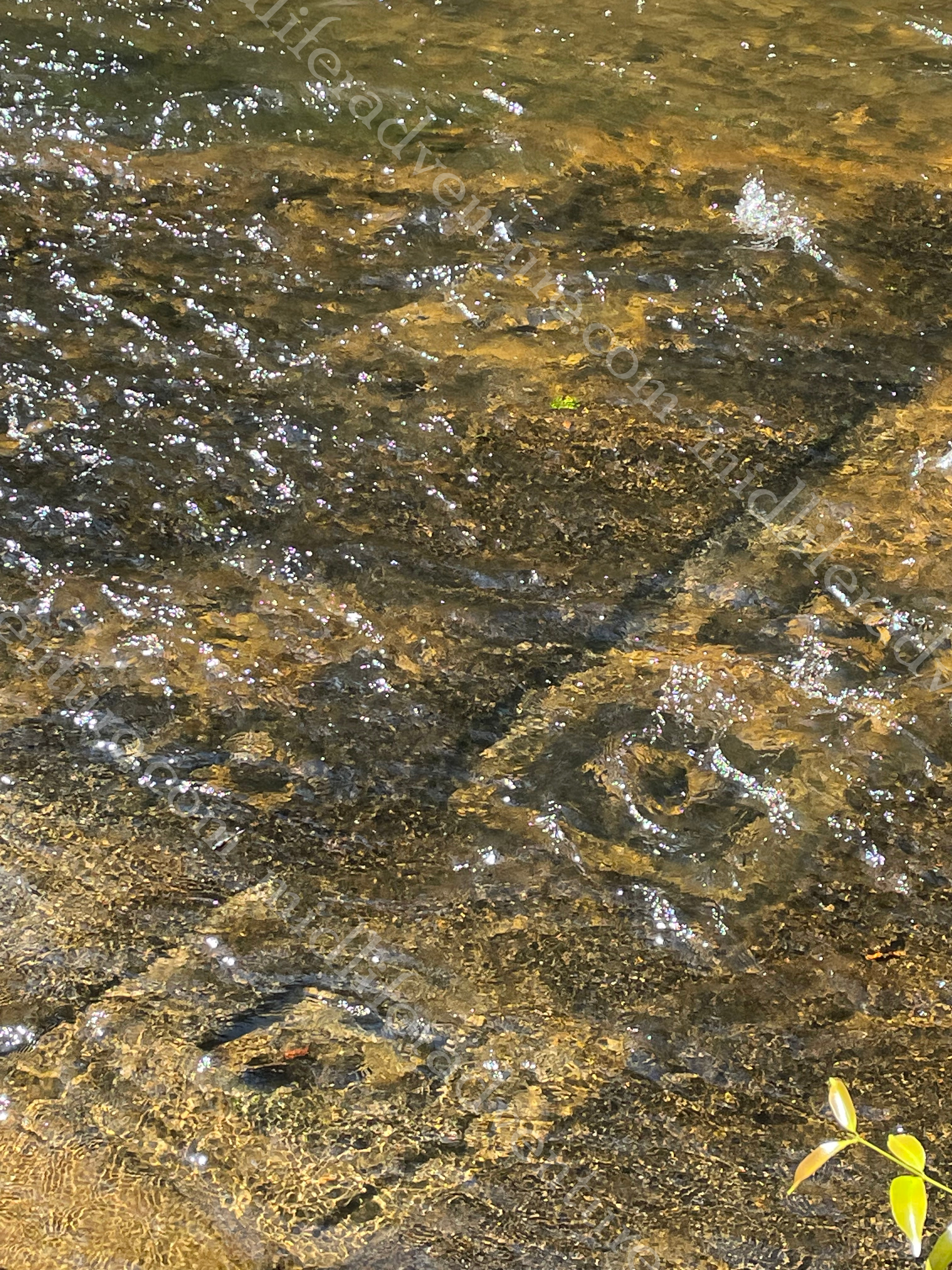
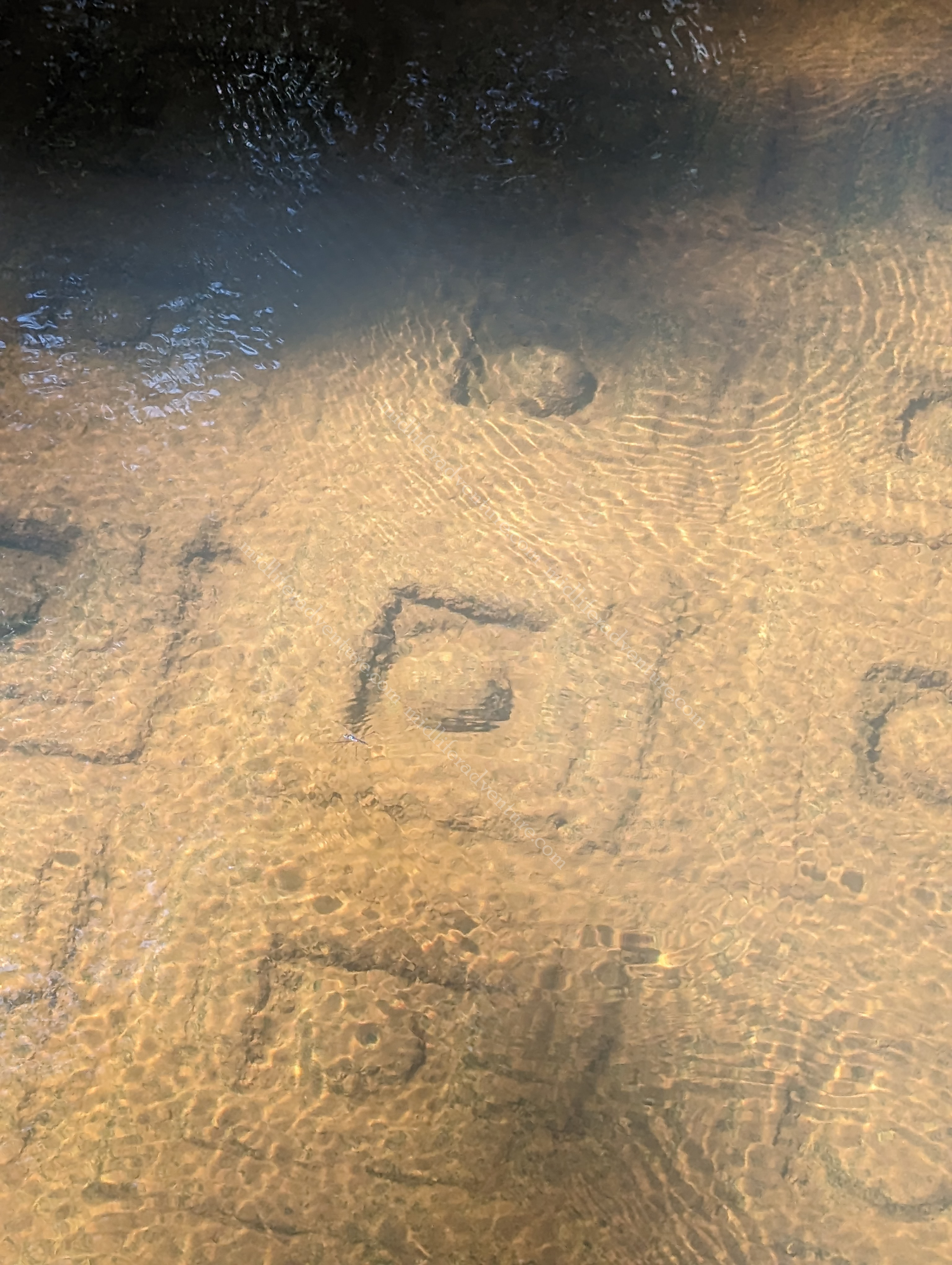
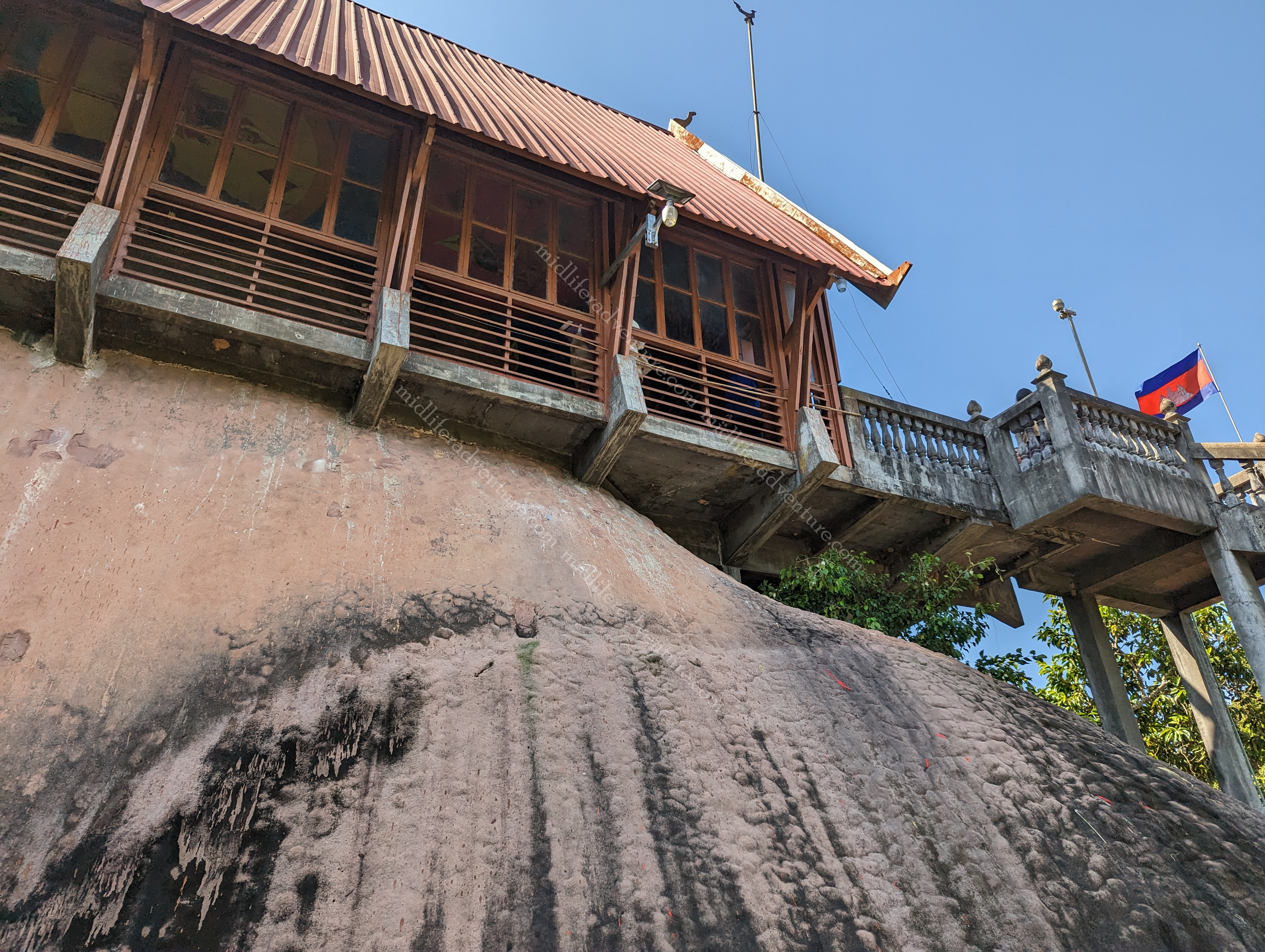
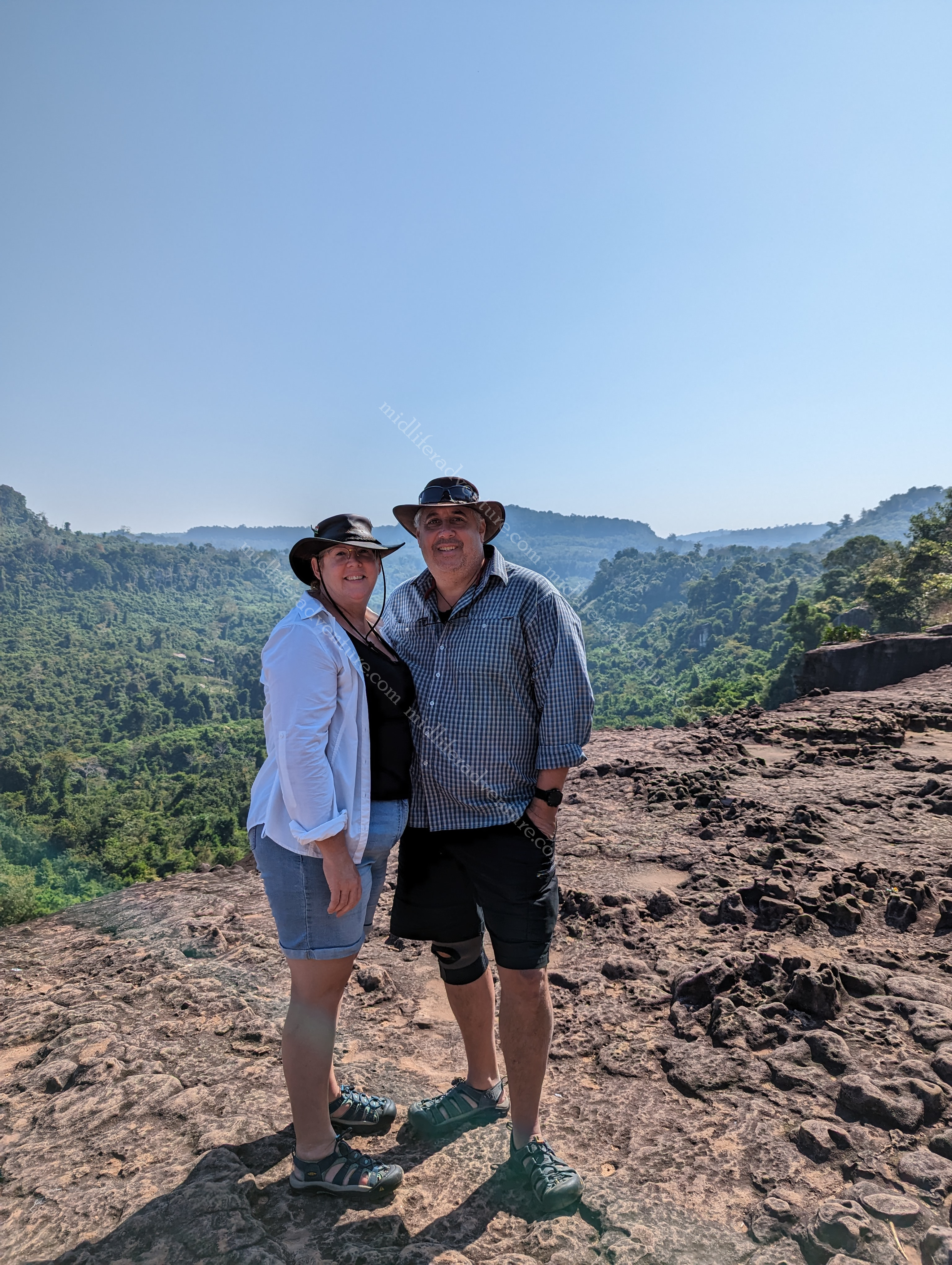
Cambodia during covid
The Cambodian ticket site has some pretty amazing stats on exactly what the COVID pandemic did to tourism in the region. Prior to the pandemic the temples of Angkor were receiving 2.6 million visitors per year and generating nearly $5 billion in revenues. These revenues were employing people and paying for the renovations, restoration and upkeep of the various temples. However border closures and travel restrictions dropped visitor numbers down to about 300,000 and knocked Cambodia’s income from tourism down to just $184 million last year.,
It is clear that money was expended on the roads as these have been upgraded well and some of the major temples still saw some of the renovation and renewal budget. But some of the lesser temples (especially within Angkor Thom) have paid a significant price for the drop off in available funds. Recent months have seen a significant upturn and within 2 months there is expected to be easing of the Chinese travel restrictions that may see numbers and dollars flying back in.
Hero Rats
What are hero rats you ask, well we didn’t know either. but Bec had found them so the first thing that we did on day two was head to Apopo. This is a non-profit organisation that started in Belgium 25 years ago that uses animals (primarily dogs and rats) to detect landmines around the world. There is another arm that uses the animals to detect tuberculosis.







The sensitive whiskers and noses allow the animals to detect the explosives without the false positive results that metal detectors give (from bottle tops and the like). This means that the detection and removal can happen much faster than using metal detectors. A trained rat is tethered between two operators along with a tape measure and they detect and mark the location of landmines for explosive technicians to come back to and disarm or detonate.



This was new to us. We had done the land mine museum before but did not know about the rat detection squad.
